Quick filters:
25th dynasty Stock Photos and Images
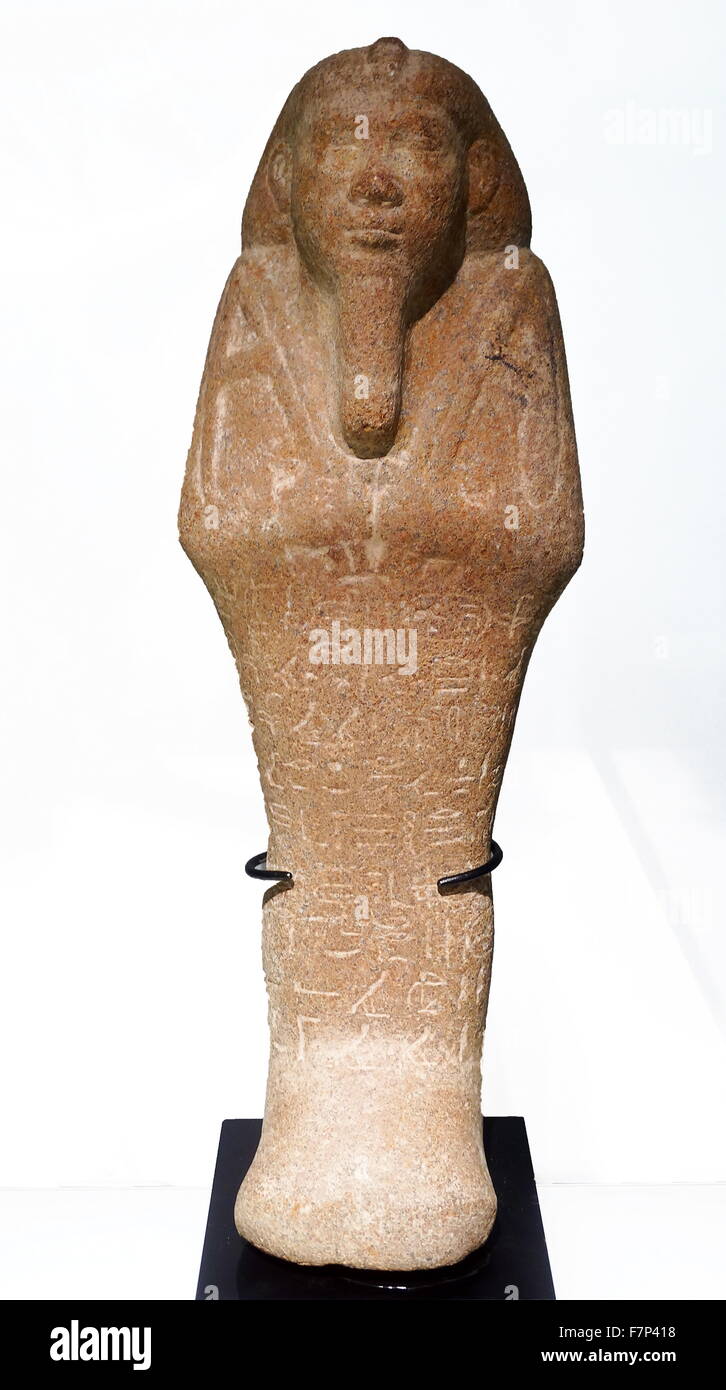 Ushabti of Taharqa. Granite. 25th Dynasty, reign of (690-664 B.C.). Taharqa was the most important of the so-called black pharaohs. His shabtis, found in the necropolis of Nuri, have a special version of the Chapter VI of the Book of the Dead Stock Photohttps://www.alamy.com/image-license-details/?v=1https://www.alamy.com/stock-photo-ushabti-of-taharqa-granite-25th-dynasty-reign-of-690-664-bc-taharqa-90840548.html
Ushabti of Taharqa. Granite. 25th Dynasty, reign of (690-664 B.C.). Taharqa was the most important of the so-called black pharaohs. His shabtis, found in the necropolis of Nuri, have a special version of the Chapter VI of the Book of the Dead Stock Photohttps://www.alamy.com/image-license-details/?v=1https://www.alamy.com/stock-photo-ushabti-of-taharqa-granite-25th-dynasty-reign-of-690-664-bc-taharqa-90840548.htmlRMF7P418–Ushabti of Taharqa. Granite. 25th Dynasty, reign of (690-664 B.C.). Taharqa was the most important of the so-called black pharaohs. His shabtis, found in the necropolis of Nuri, have a special version of the Chapter VI of the Book of the Dead
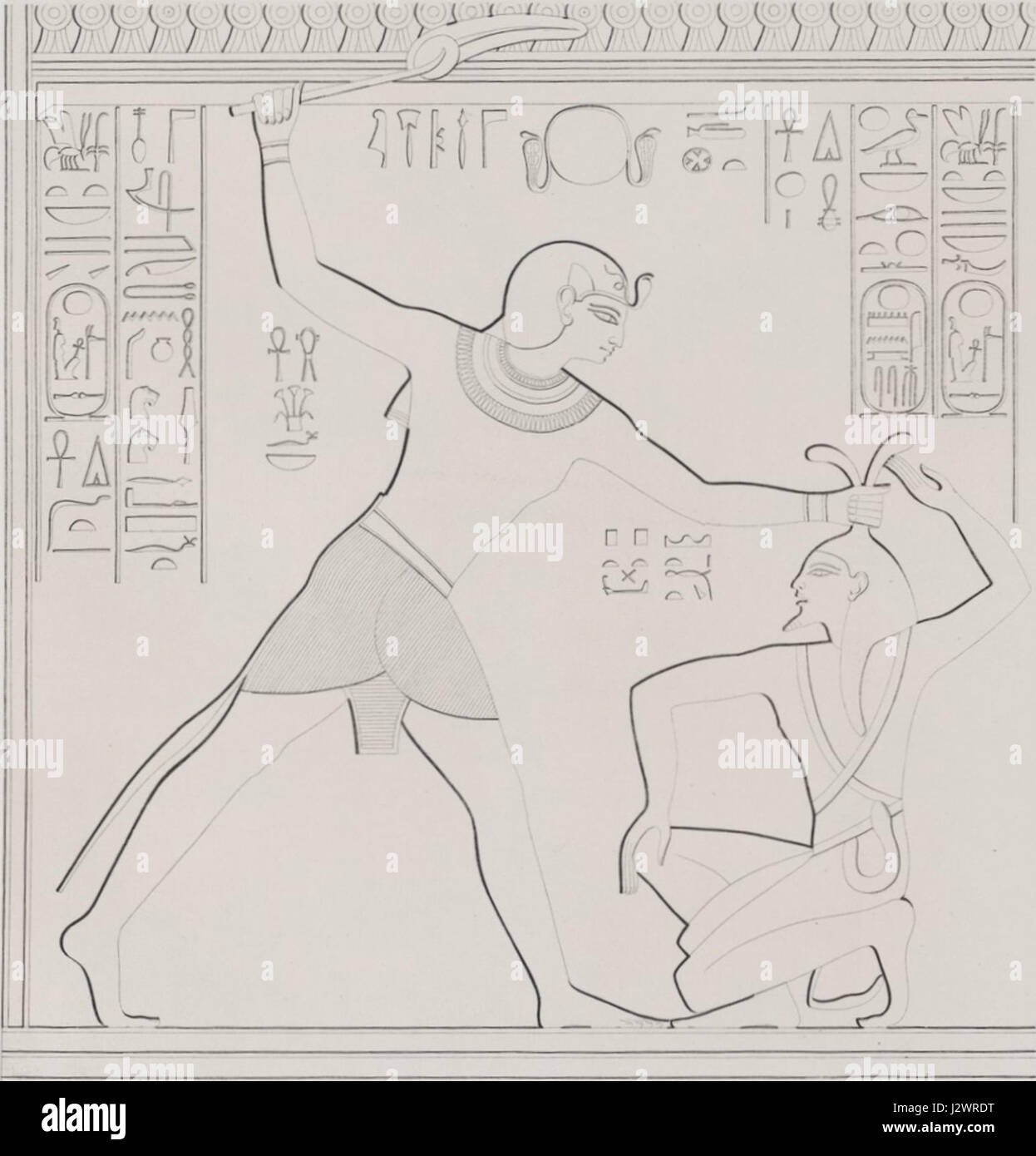 Bet el-Wali is an important archaeological site in Egypt, known for its ancient temples and artifacts. It was part of the Nubian region, and its history dates back to the 25th Dynasty, highlighting the architectural and cultural legacy of ancient Egypt. Stock Photohttps://www.alamy.com/image-license-details/?v=1https://www.alamy.com/stock-photo-bet-el-wali-is-an-important-archaeological-site-in-egypt-known-for-139479476.html
Bet el-Wali is an important archaeological site in Egypt, known for its ancient temples and artifacts. It was part of the Nubian region, and its history dates back to the 25th Dynasty, highlighting the architectural and cultural legacy of ancient Egypt. Stock Photohttps://www.alamy.com/image-license-details/?v=1https://www.alamy.com/stock-photo-bet-el-wali-is-an-important-archaeological-site-in-egypt-known-for-139479476.htmlRMJ2WRDT–Bet el-Wali is an important archaeological site in Egypt, known for its ancient temples and artifacts. It was part of the Nubian region, and its history dates back to the 25th Dynasty, highlighting the architectural and cultural legacy of ancient Egypt.
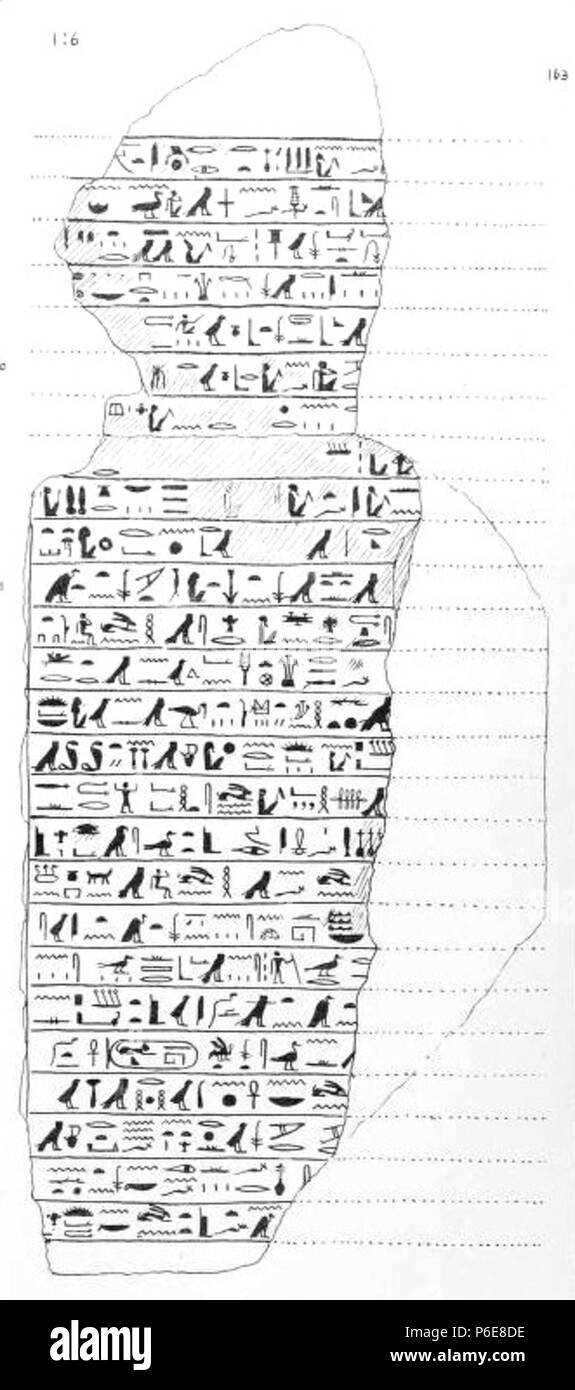 English: Drawing of an ancient Egyptian stela celebrating the exceptionally large Nile flood which occurred in regnal Year 6 of pharaoh Taharqa (685-684 BCE), found in the Great Temple of Tanis. Reign of Taharqa, 25th Dynasty, Third intermediate period. Now in Cairo (37488). 1888 75 Stele Taharqa Tanis Petrie Stock Photohttps://www.alamy.com/image-license-details/?v=1https://www.alamy.com/english-drawing-of-an-ancient-egyptian-stela-celebrating-the-exceptionally-large-nile-flood-which-occurred-in-regnal-year-6-of-pharaoh-taharqa-685-684-bce-found-in-the-great-temple-of-tanis-reign-of-taharqa-25th-dynasty-third-intermediate-period-now-in-cairo-37488-1888-75-stele-taharqa-tanis-petrie-image210526330.html
English: Drawing of an ancient Egyptian stela celebrating the exceptionally large Nile flood which occurred in regnal Year 6 of pharaoh Taharqa (685-684 BCE), found in the Great Temple of Tanis. Reign of Taharqa, 25th Dynasty, Third intermediate period. Now in Cairo (37488). 1888 75 Stele Taharqa Tanis Petrie Stock Photohttps://www.alamy.com/image-license-details/?v=1https://www.alamy.com/english-drawing-of-an-ancient-egyptian-stela-celebrating-the-exceptionally-large-nile-flood-which-occurred-in-regnal-year-6-of-pharaoh-taharqa-685-684-bce-found-in-the-great-temple-of-tanis-reign-of-taharqa-25th-dynasty-third-intermediate-period-now-in-cairo-37488-1888-75-stele-taharqa-tanis-petrie-image210526330.htmlRMP6E8DE–English: Drawing of an ancient Egyptian stela celebrating the exceptionally large Nile flood which occurred in regnal Year 6 of pharaoh Taharqa (685-684 BCE), found in the Great Temple of Tanis. Reign of Taharqa, 25th Dynasty, Third intermediate period. Now in Cairo (37488). 1888 75 Stele Taharqa Tanis Petrie
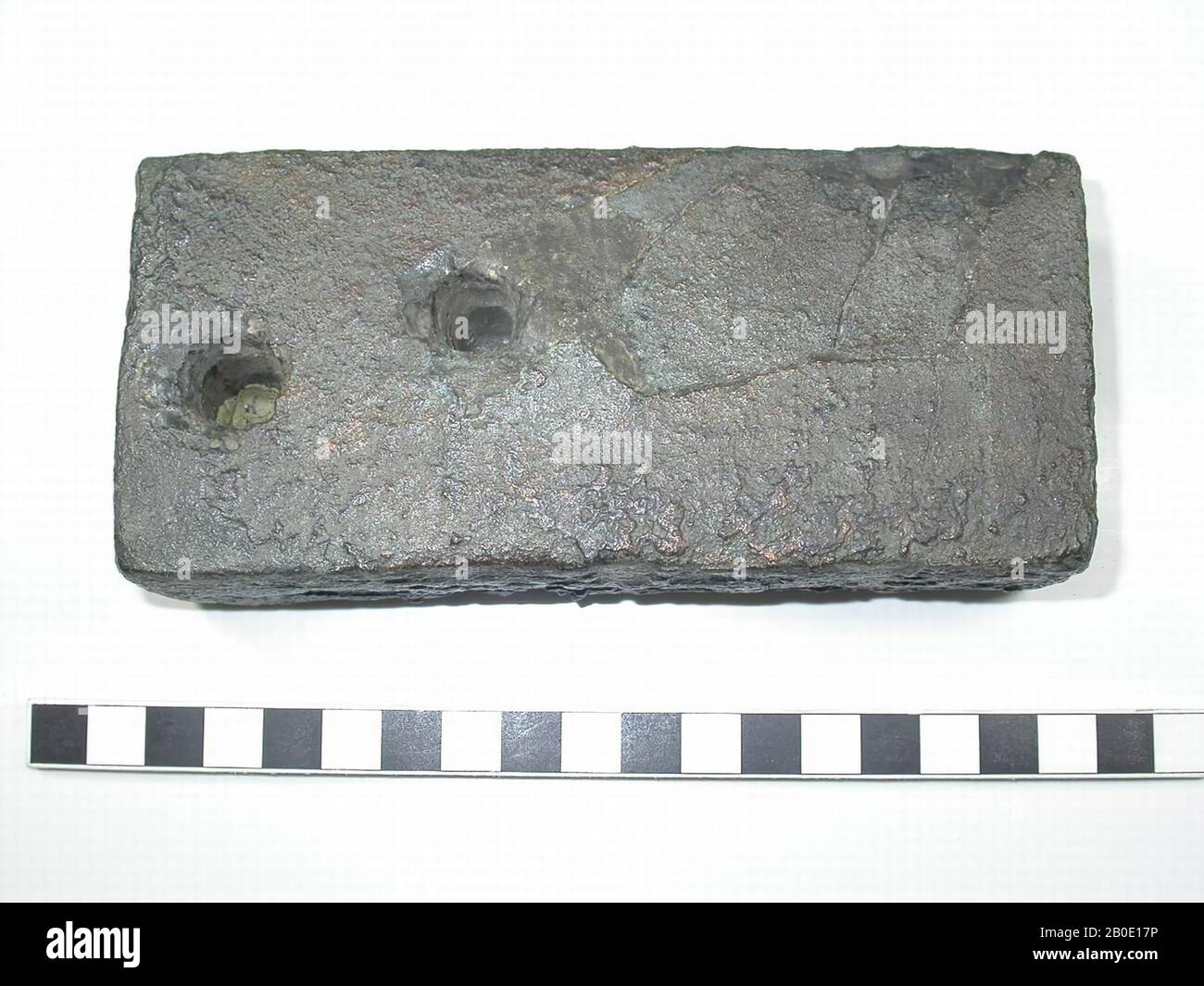 Egypt, bronze, god, bronze, 23 cm, Late Period, 25th Dynasty, Egypt Stock Photohttps://www.alamy.com/image-license-details/?v=1https://www.alamy.com/egypt-bronze-god-bronze-23-cm-late-period-25th-dynasty-egypt-image344515690.html
Egypt, bronze, god, bronze, 23 cm, Late Period, 25th Dynasty, Egypt Stock Photohttps://www.alamy.com/image-license-details/?v=1https://www.alamy.com/egypt-bronze-god-bronze-23-cm-late-period-25th-dynasty-egypt-image344515690.htmlRM2B0E17P–Egypt, bronze, god, bronze, 23 cm, Late Period, 25th Dynasty, Egypt
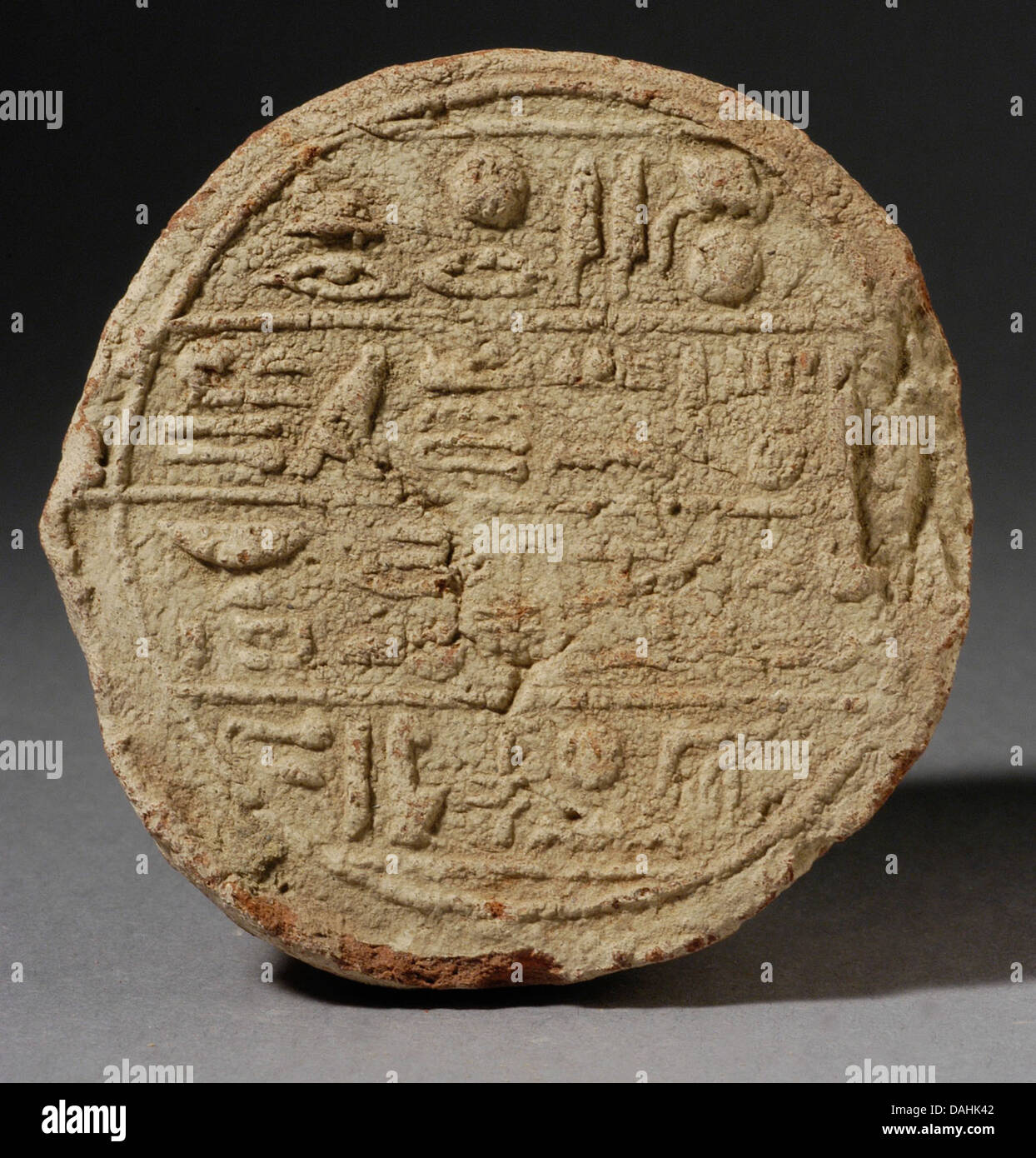 Funerary cone of Montuemhat, an ancient Egyptian object used in tombs, made of limestone. It features inscriptions of Montuemhat, a powerful official during the 25th Dynasty. Displayed in LACMA's Egyptian Art collection, it highlights Egypt's funerary practices. Stock Photohttps://www.alamy.com/image-license-details/?v=1https://www.alamy.com/stock-photo-funerary-cone-of-montuemhat-an-ancient-egyptian-object-used-in-tombs-58165858.html
Funerary cone of Montuemhat, an ancient Egyptian object used in tombs, made of limestone. It features inscriptions of Montuemhat, a powerful official during the 25th Dynasty. Displayed in LACMA's Egyptian Art collection, it highlights Egypt's funerary practices. Stock Photohttps://www.alamy.com/image-license-details/?v=1https://www.alamy.com/stock-photo-funerary-cone-of-montuemhat-an-ancient-egyptian-object-used-in-tombs-58165858.htmlRMDAHK42–Funerary cone of Montuemhat, an ancient Egyptian object used in tombs, made of limestone. It features inscriptions of Montuemhat, a powerful official during the 25th Dynasty. Displayed in LACMA's Egyptian Art collection, it highlights Egypt's funerary practices.
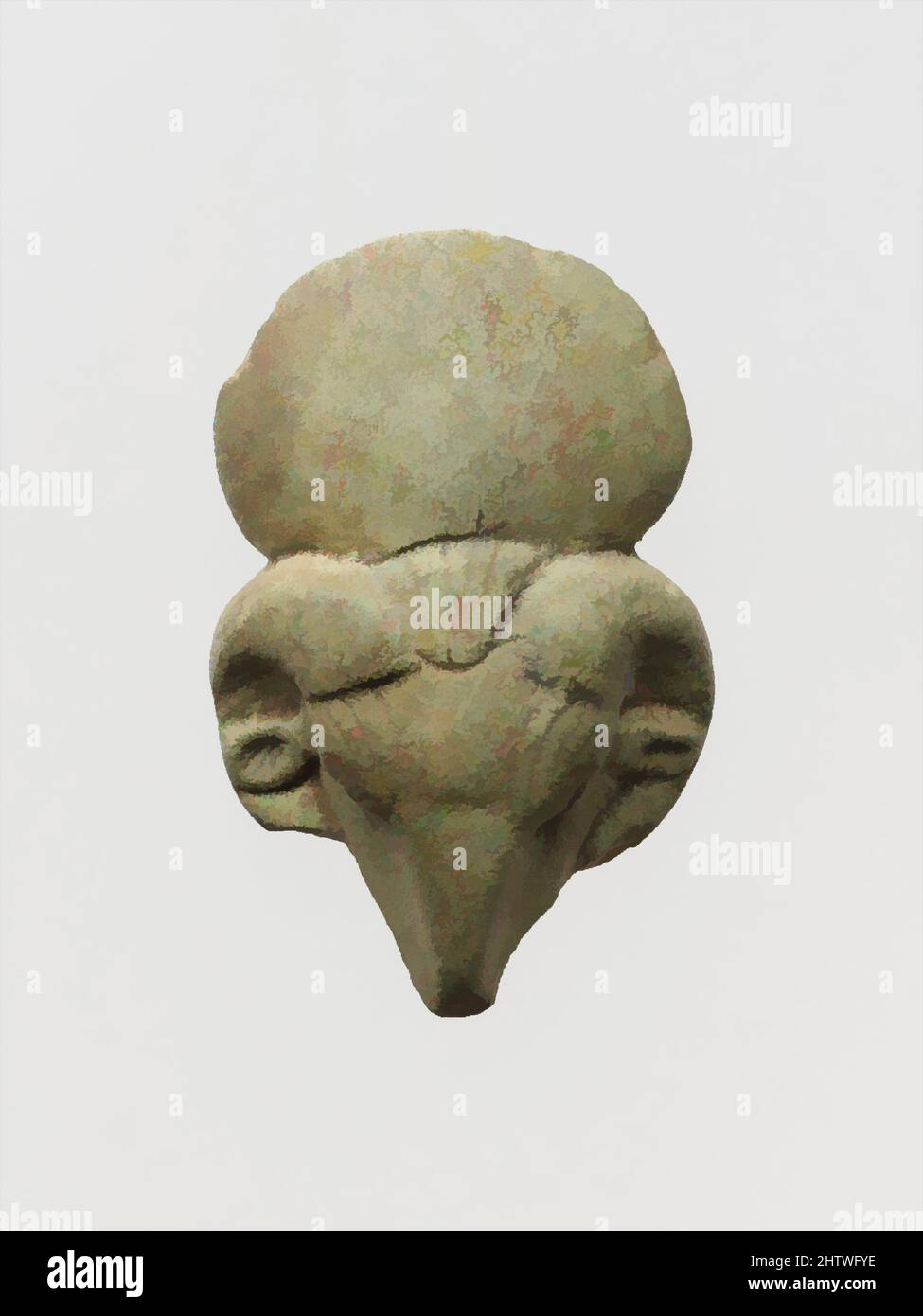 Art inspired by Faience ram's head amulet, 25th Dynasty, 712–664 B.C., Egyptian, Clay, glazed, H.: 1 3/4 in. (4.4 cm), Gold and Silver, Amulets representing animals were attributed to a deity: a hawk for Ra, the Sun God, a lion for Sakhmi, the War Goddess, a ram for Khnum and a cat for, Classic works modernized by Artotop with a splash of modernity. Shapes, color and value, eye-catching visual impact on art. Emotions through freedom of artworks in a contemporary way. A timeless message pursuing a wildly creative new direction. Artists turning to the digital medium and creating the Artotop NFT Stock Photohttps://www.alamy.com/image-license-details/?v=1https://www.alamy.com/art-inspired-by-faience-rams-head-amulet-25th-dynasty-712664-bc-egyptian-clay-glazed-h-1-34-in-44-cm-gold-and-silver-amulets-representing-animals-were-attributed-to-a-deity-a-hawk-for-ra-the-sun-god-a-lion-for-sakhmi-the-war-goddess-a-ram-for-khnum-and-a-cat-for-classic-works-modernized-by-artotop-with-a-splash-of-modernity-shapes-color-and-value-eye-catching-visual-impact-on-art-emotions-through-freedom-of-artworks-in-a-contemporary-way-a-timeless-message-pursuing-a-wildly-creative-new-direction-artists-turning-to-the-digital-medium-and-creating-the-artotop-nft-image462782642.html
Art inspired by Faience ram's head amulet, 25th Dynasty, 712–664 B.C., Egyptian, Clay, glazed, H.: 1 3/4 in. (4.4 cm), Gold and Silver, Amulets representing animals were attributed to a deity: a hawk for Ra, the Sun God, a lion for Sakhmi, the War Goddess, a ram for Khnum and a cat for, Classic works modernized by Artotop with a splash of modernity. Shapes, color and value, eye-catching visual impact on art. Emotions through freedom of artworks in a contemporary way. A timeless message pursuing a wildly creative new direction. Artists turning to the digital medium and creating the Artotop NFT Stock Photohttps://www.alamy.com/image-license-details/?v=1https://www.alamy.com/art-inspired-by-faience-rams-head-amulet-25th-dynasty-712664-bc-egyptian-clay-glazed-h-1-34-in-44-cm-gold-and-silver-amulets-representing-animals-were-attributed-to-a-deity-a-hawk-for-ra-the-sun-god-a-lion-for-sakhmi-the-war-goddess-a-ram-for-khnum-and-a-cat-for-classic-works-modernized-by-artotop-with-a-splash-of-modernity-shapes-color-and-value-eye-catching-visual-impact-on-art-emotions-through-freedom-of-artworks-in-a-contemporary-way-a-timeless-message-pursuing-a-wildly-creative-new-direction-artists-turning-to-the-digital-medium-and-creating-the-artotop-nft-image462782642.htmlRF2HTWFYE–Art inspired by Faience ram's head amulet, 25th Dynasty, 712–664 B.C., Egyptian, Clay, glazed, H.: 1 3/4 in. (4.4 cm), Gold and Silver, Amulets representing animals were attributed to a deity: a hawk for Ra, the Sun God, a lion for Sakhmi, the War Goddess, a ram for Khnum and a cat for, Classic works modernized by Artotop with a splash of modernity. Shapes, color and value, eye-catching visual impact on art. Emotions through freedom of artworks in a contemporary way. A timeless message pursuing a wildly creative new direction. Artists turning to the digital medium and creating the Artotop NFT
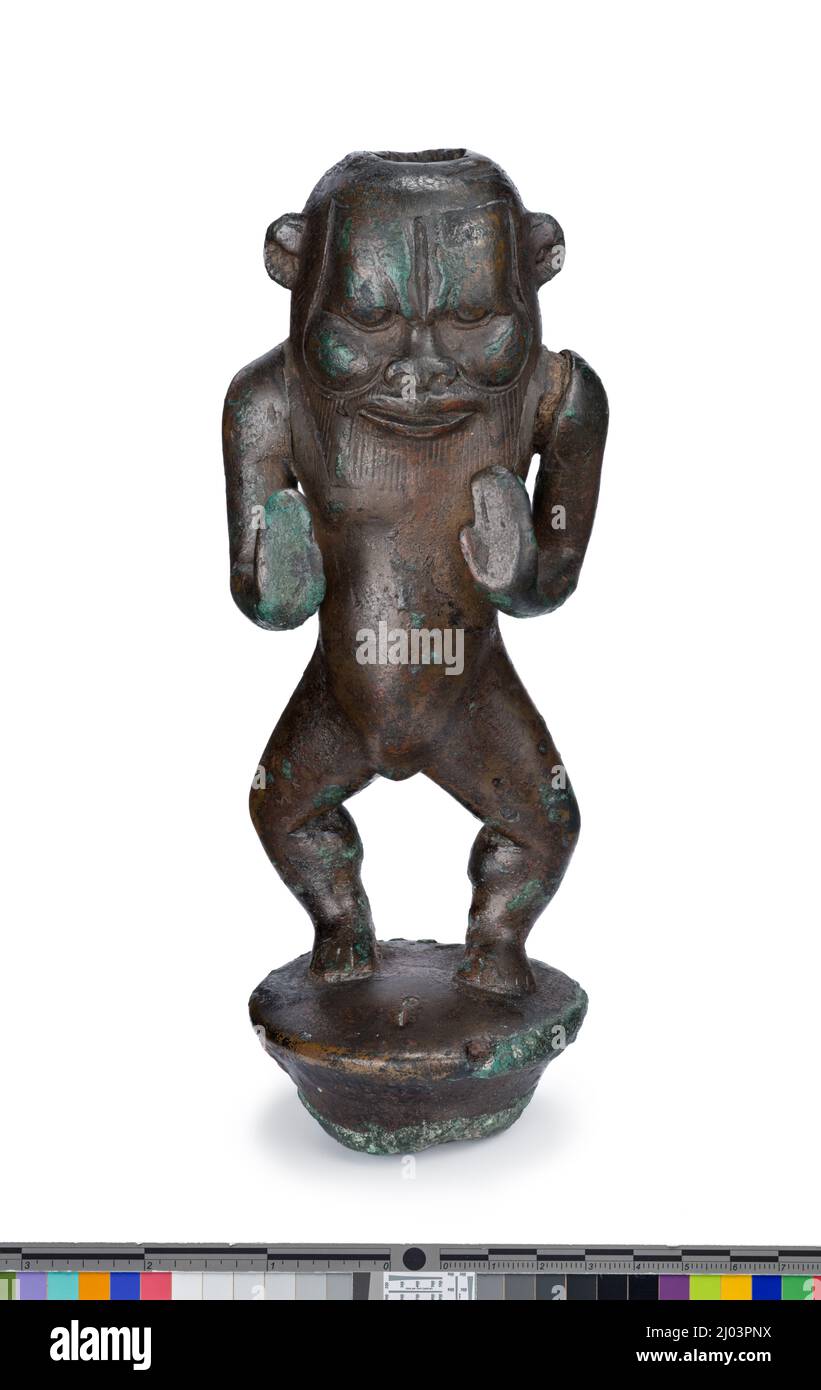 Bes. Egypt, Late Period, 25th Dynasty, 711-657 BCE. Sculpture. Bronze Stock Photohttps://www.alamy.com/image-license-details/?v=1https://www.alamy.com/bes-egypt-late-period-25th-dynasty-711-657-bce-sculpture-bronze-image464763654.html
Bes. Egypt, Late Period, 25th Dynasty, 711-657 BCE. Sculpture. Bronze Stock Photohttps://www.alamy.com/image-license-details/?v=1https://www.alamy.com/bes-egypt-late-period-25th-dynasty-711-657-bce-sculpture-bronze-image464763654.htmlRM2J03PNX–Bes. Egypt, Late Period, 25th Dynasty, 711-657 BCE. Sculpture. Bronze
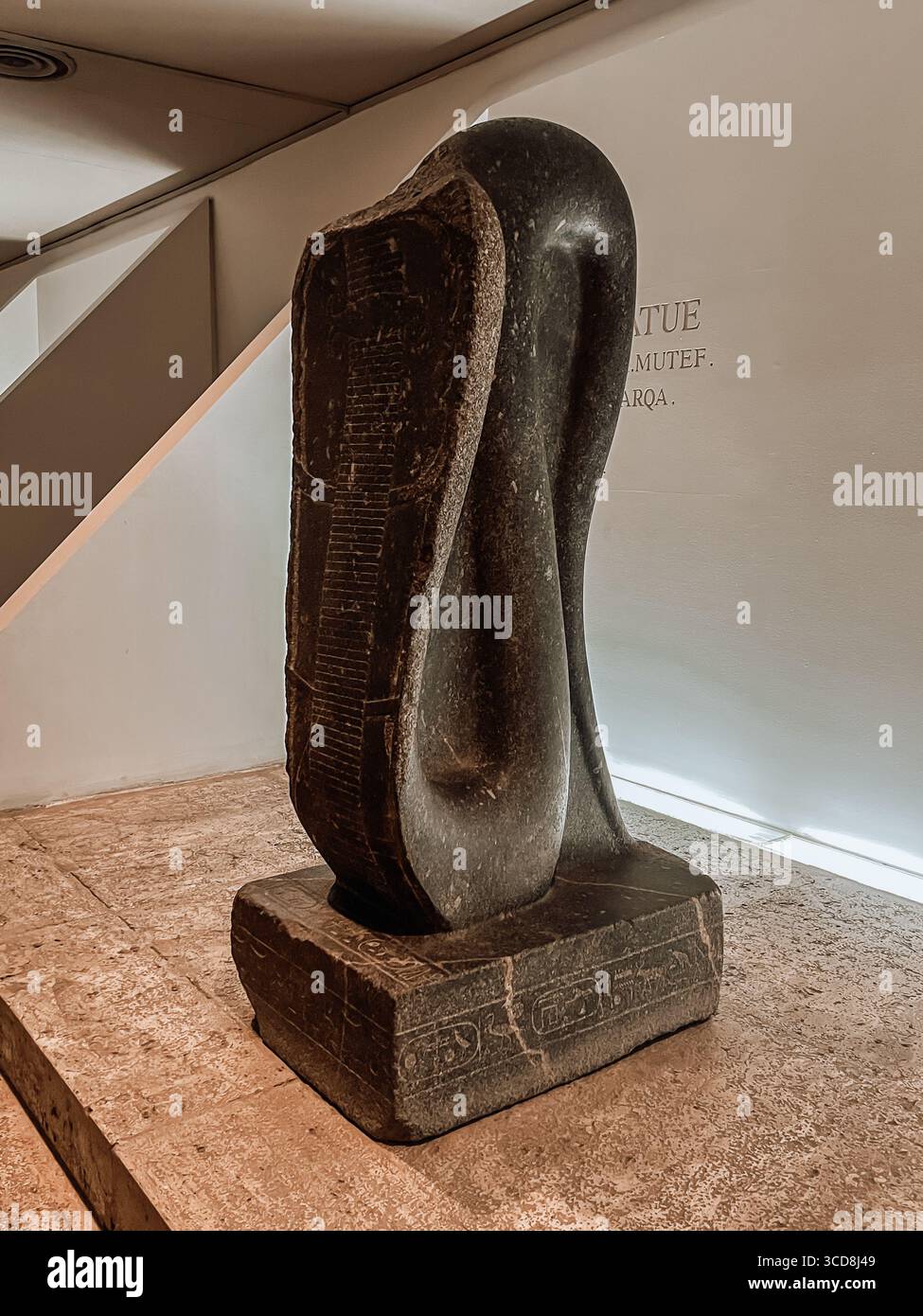 Ancient Egyptian Art: Cobra of Amon-Ra. Reign of the Nubian pharaohs, 25th Dynasty Stock Photohttps://www.alamy.com/image-license-details/?v=1https://www.alamy.com/ancient-egyptian-art-cobra-of-amon-ra-reign-of-the-nubian-pharaohs-25th-dynasty-image696595097.html
Ancient Egyptian Art: Cobra of Amon-Ra. Reign of the Nubian pharaohs, 25th Dynasty Stock Photohttps://www.alamy.com/image-license-details/?v=1https://www.alamy.com/ancient-egyptian-art-cobra-of-amon-ra-reign-of-the-nubian-pharaohs-25th-dynasty-image696595097.htmlRF3CD8J49–Ancient Egyptian Art: Cobra of Amon-Ra. Reign of the Nubian pharaohs, 25th Dynasty
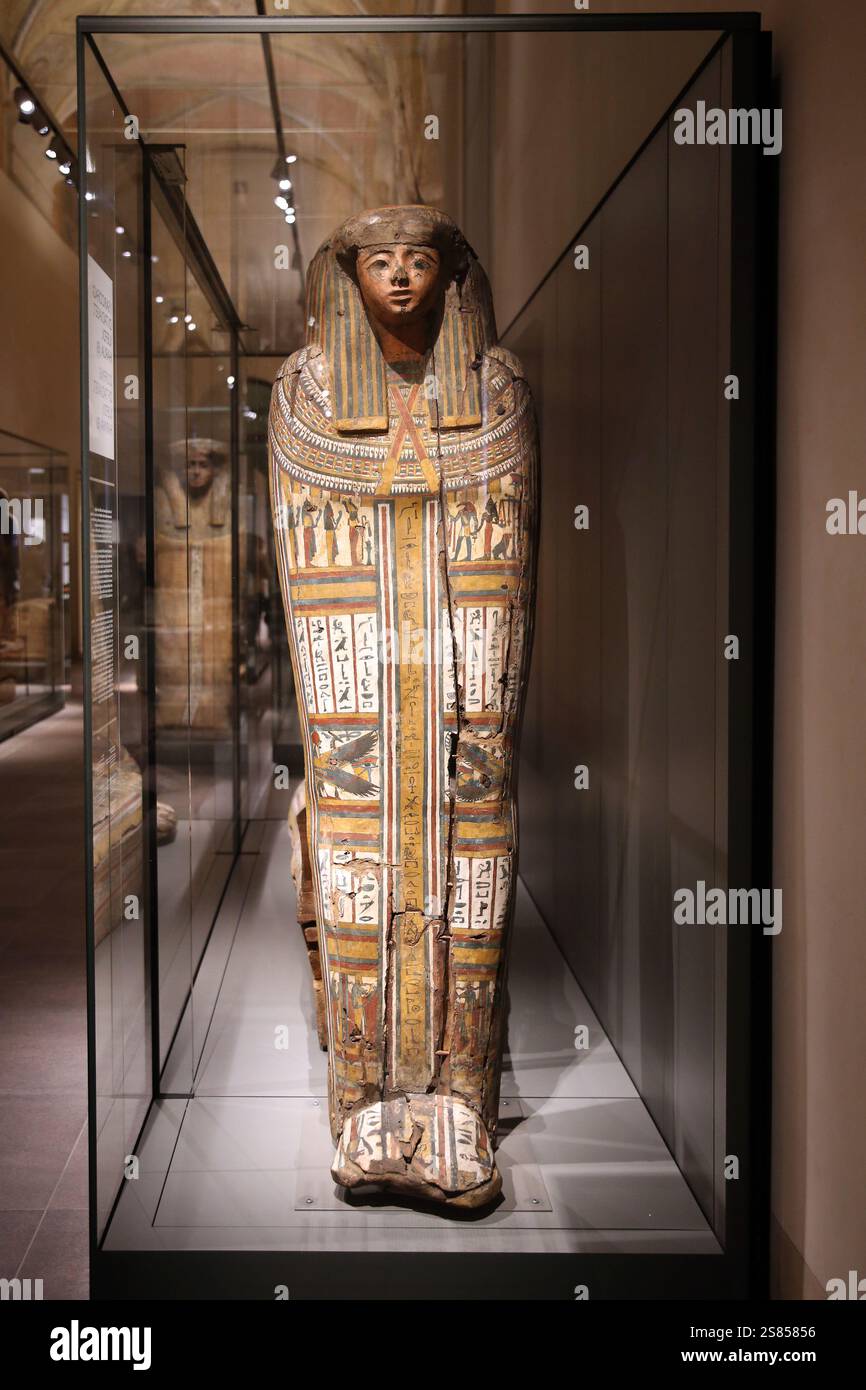 Coffin lid of Tadiaset-taheket. Wood. Type 'stola coffin'. Late Period, 25th-26th dynasty (722-525 BC). Thebes. Valley of the Queen. Tombs of Khaemwas Stock Photohttps://www.alamy.com/image-license-details/?v=1https://www.alamy.com/coffin-lid-of-tadiaset-taheket-wood-type-stola-coffin-late-period-25th-26th-dynasty-722-525-bc-thebes-valley-of-the-queen-tombs-of-khaemwas-image641817042.html
Coffin lid of Tadiaset-taheket. Wood. Type 'stola coffin'. Late Period, 25th-26th dynasty (722-525 BC). Thebes. Valley of the Queen. Tombs of Khaemwas Stock Photohttps://www.alamy.com/image-license-details/?v=1https://www.alamy.com/coffin-lid-of-tadiaset-taheket-wood-type-stola-coffin-late-period-25th-26th-dynasty-722-525-bc-thebes-valley-of-the-queen-tombs-of-khaemwas-image641817042.htmlRM2S85856–Coffin lid of Tadiaset-taheket. Wood. Type 'stola coffin'. Late Period, 25th-26th dynasty (722-525 BC). Thebes. Valley of the Queen. Tombs of Khaemwas
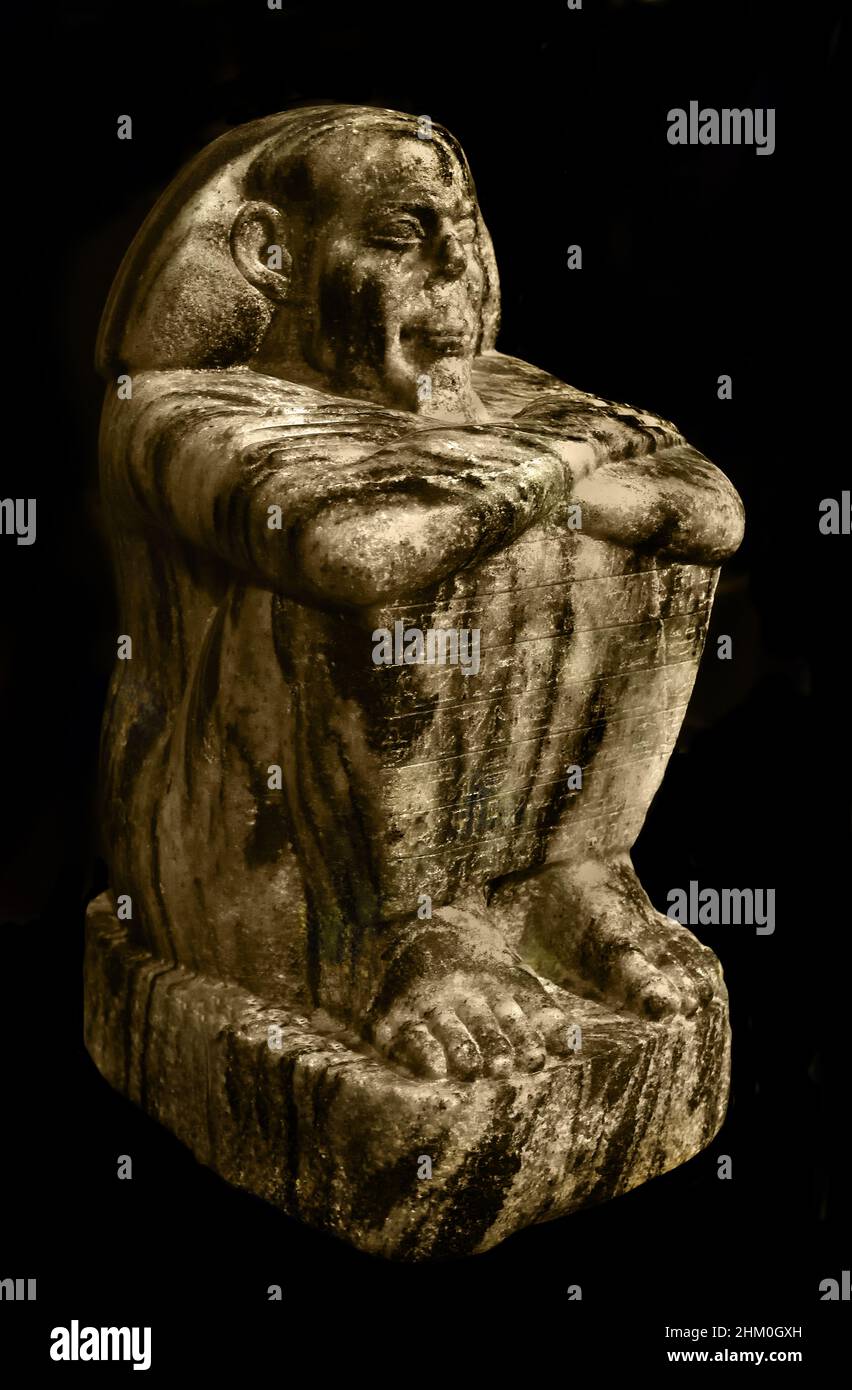 Block statue of the priest Merenptah, Stone / gneiss, 40 x 20 x 27 cm, 722–664 BC, Twenty-fifth 25th, Dynasty, Egypt (Museo Egizio di Torino Italy) Stock Photohttps://www.alamy.com/image-license-details/?v=1https://www.alamy.com/block-statue-of-the-priest-merenptah-stone-gneiss-40-x-20-x-27-cm-722664-bc-twenty-fifth-25th-dynasty-egypt-museo-egizio-di-torino-italy-image459775977.html
Block statue of the priest Merenptah, Stone / gneiss, 40 x 20 x 27 cm, 722–664 BC, Twenty-fifth 25th, Dynasty, Egypt (Museo Egizio di Torino Italy) Stock Photohttps://www.alamy.com/image-license-details/?v=1https://www.alamy.com/block-statue-of-the-priest-merenptah-stone-gneiss-40-x-20-x-27-cm-722664-bc-twenty-fifth-25th-dynasty-egypt-museo-egizio-di-torino-italy-image459775977.htmlRM2HM0GXH–Block statue of the priest Merenptah, Stone / gneiss, 40 x 20 x 27 cm, 722–664 BC, Twenty-fifth 25th, Dynasty, Egypt (Museo Egizio di Torino Italy)
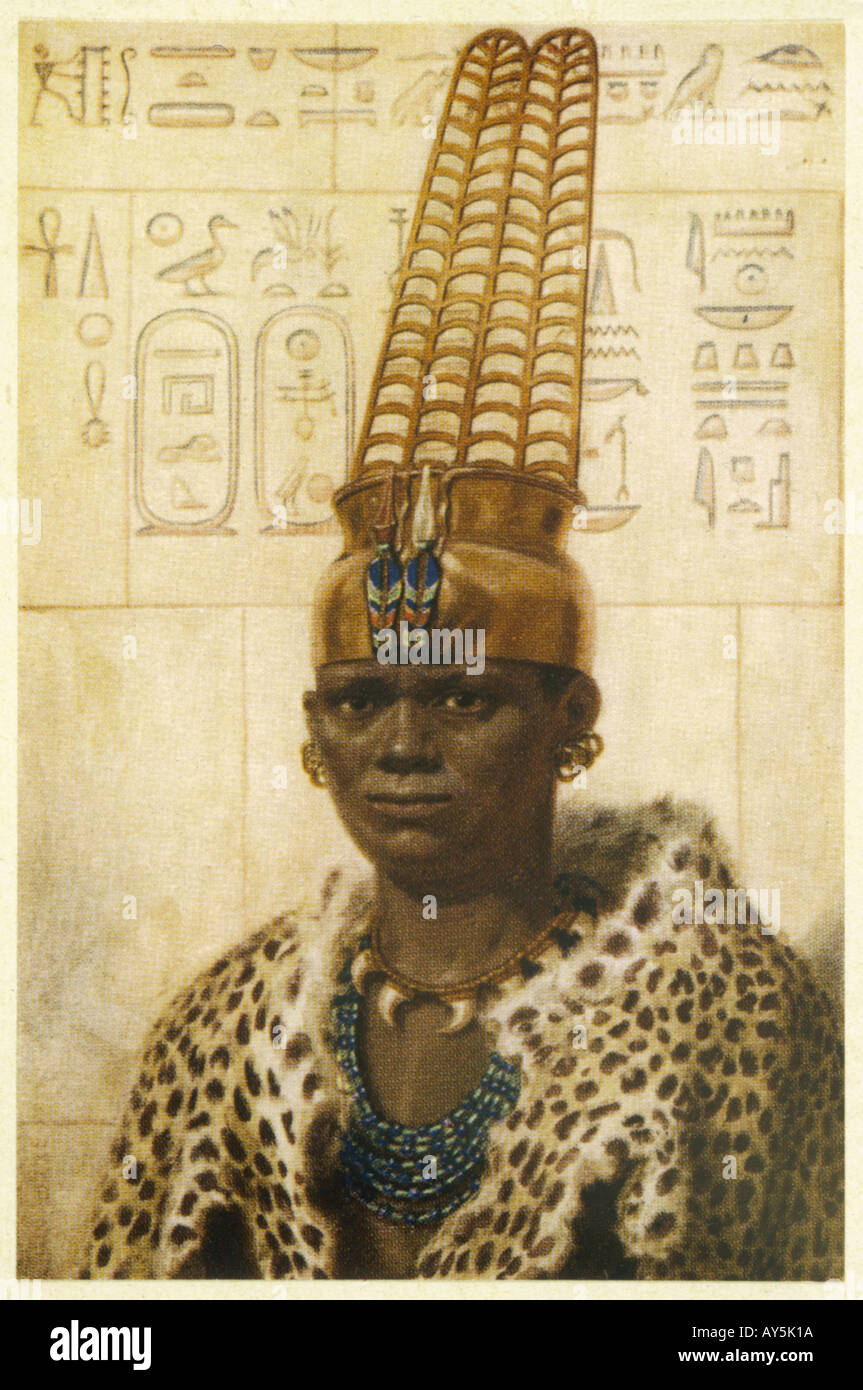 Taharqa Pharaoh Stock Photohttps://www.alamy.com/image-license-details/?v=1https://www.alamy.com/taharqa-pharaoh-image5549849.html
Taharqa Pharaoh Stock Photohttps://www.alamy.com/image-license-details/?v=1https://www.alamy.com/taharqa-pharaoh-image5549849.htmlRMAY5K1A–Taharqa Pharaoh
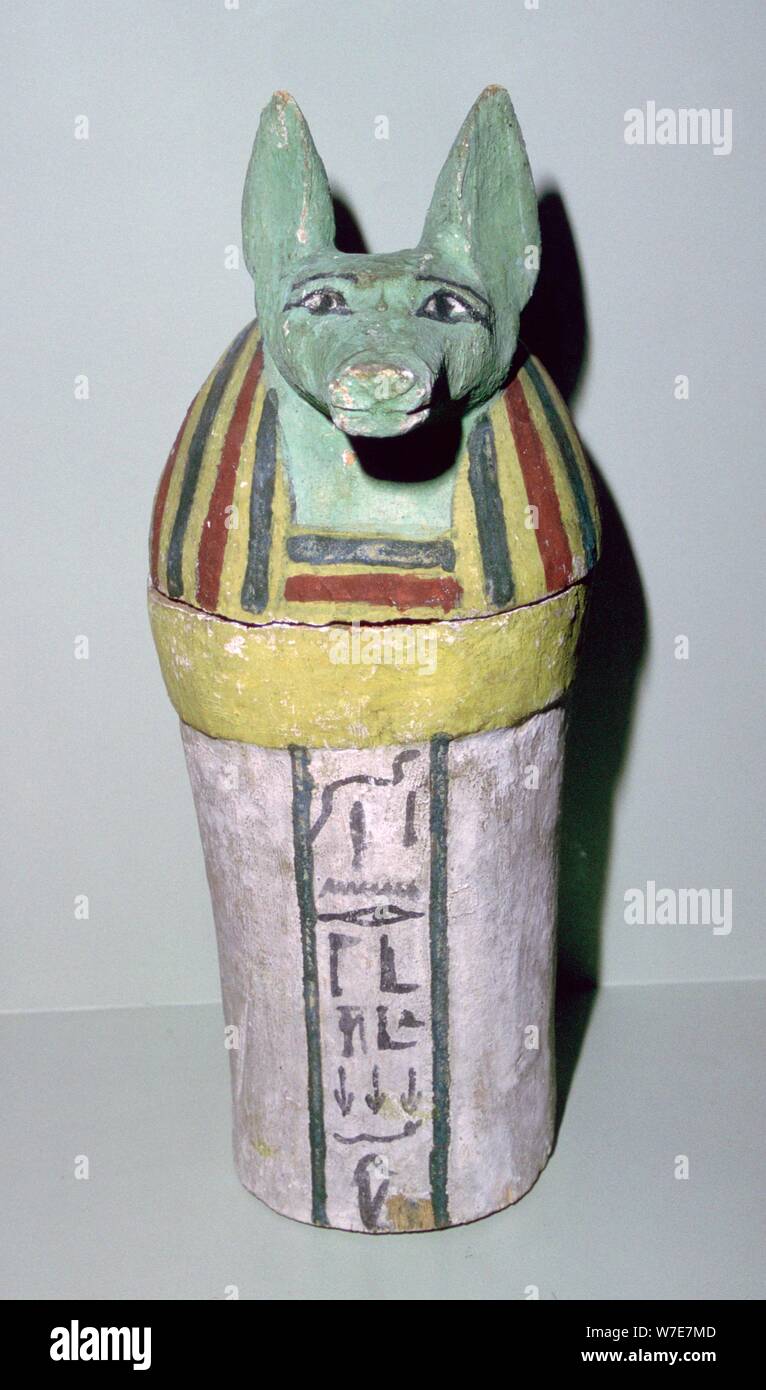 Jackal-headed wooden canopic jar for the storage of organs, Egyptian, 25th Dynasty, c700 BC. Artist: Unknown Stock Photohttps://www.alamy.com/image-license-details/?v=1https://www.alamy.com/jackal-headed-wooden-canopic-jar-for-the-storage-of-organs-egyptian-25th-dynasty-c700-bc-artist-unknown-image262771501.html
Jackal-headed wooden canopic jar for the storage of organs, Egyptian, 25th Dynasty, c700 BC. Artist: Unknown Stock Photohttps://www.alamy.com/image-license-details/?v=1https://www.alamy.com/jackal-headed-wooden-canopic-jar-for-the-storage-of-organs-egyptian-25th-dynasty-c700-bc-artist-unknown-image262771501.htmlRMW7E7MD–Jackal-headed wooden canopic jar for the storage of organs, Egyptian, 25th Dynasty, c700 BC. Artist: Unknown
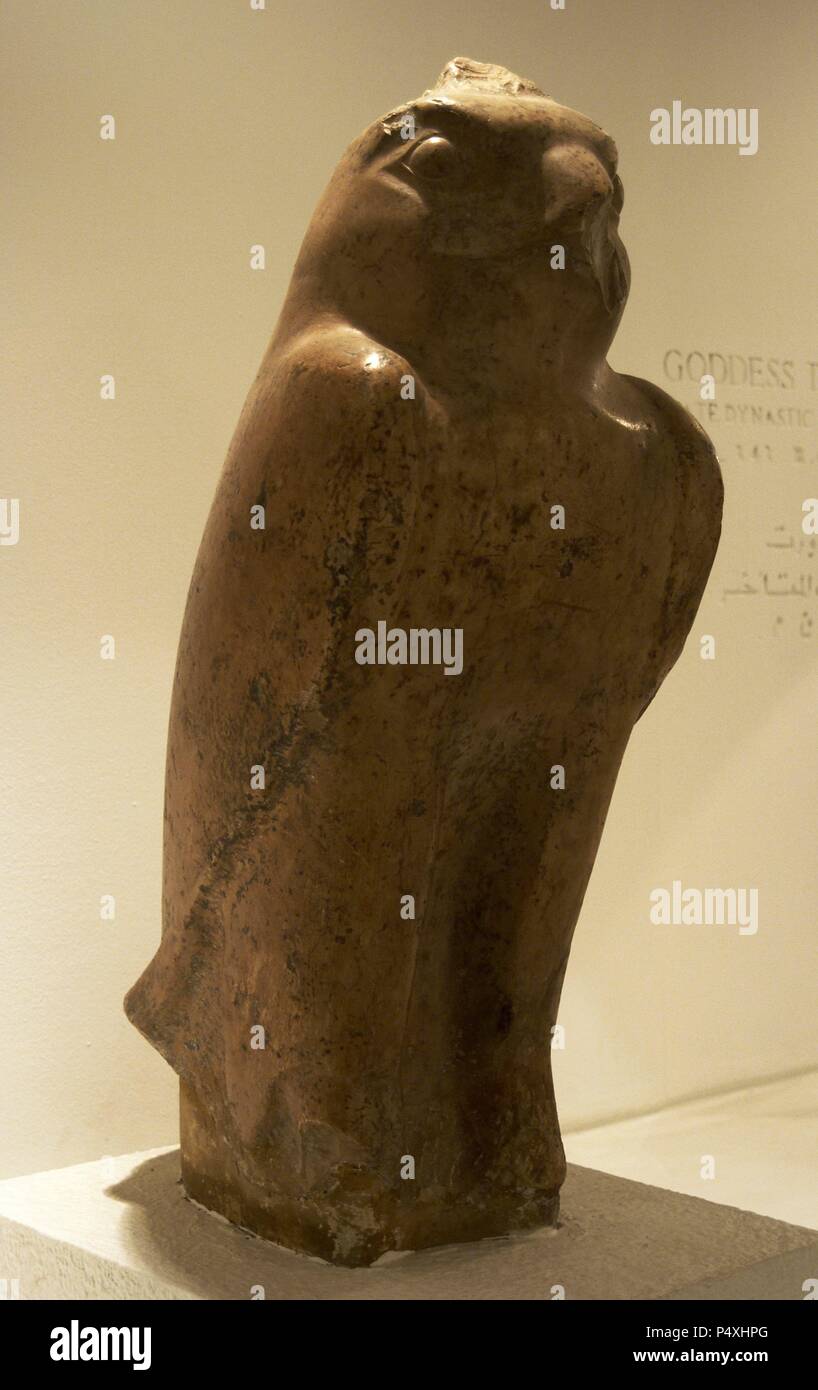 Egyptian Art. Statue of the god Horus as a falcon. 25th Dynasty (Nubian). Third Intermediate Period. Luxor Museum. Egypt. Stock Photohttps://www.alamy.com/image-license-details/?v=1https://www.alamy.com/egyptian-art-statue-of-the-god-horus-as-a-falcon-25th-dynasty-nubian-third-intermediate-period-luxor-museum-egypt-image209567752.html
Egyptian Art. Statue of the god Horus as a falcon. 25th Dynasty (Nubian). Third Intermediate Period. Luxor Museum. Egypt. Stock Photohttps://www.alamy.com/image-license-details/?v=1https://www.alamy.com/egyptian-art-statue-of-the-god-horus-as-a-falcon-25th-dynasty-nubian-third-intermediate-period-luxor-museum-egypt-image209567752.htmlRMP4XHPG–Egyptian Art. Statue of the god Horus as a falcon. 25th Dynasty (Nubian). Third Intermediate Period. Luxor Museum. Egypt.
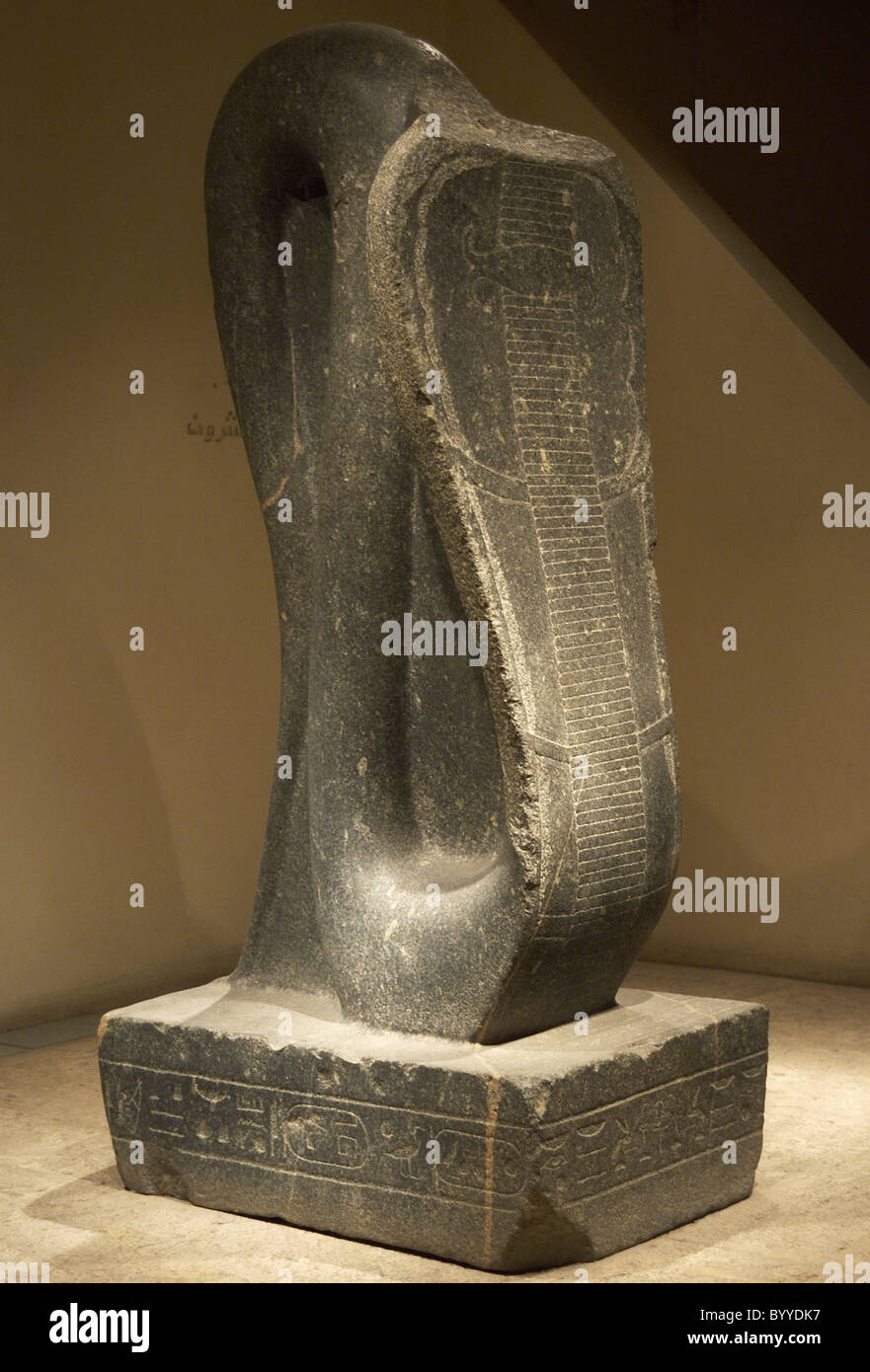 Egyptian Art. Cobra of Amon-Ra. Reign of the Nubian pharaohs. 25th Dynasty. Third Intermediate Period. Luxor Museum. Egypt. Stock Photohttps://www.alamy.com/image-license-details/?v=1https://www.alamy.com/stock-photo-egyptian-art-cobra-of-amon-ra-reign-of-the-nubian-pharaohs-25th-dynasty-34409515.html
Egyptian Art. Cobra of Amon-Ra. Reign of the Nubian pharaohs. 25th Dynasty. Third Intermediate Period. Luxor Museum. Egypt. Stock Photohttps://www.alamy.com/image-license-details/?v=1https://www.alamy.com/stock-photo-egyptian-art-cobra-of-amon-ra-reign-of-the-nubian-pharaohs-25th-dynasty-34409515.htmlRMBYYDK7–Egyptian Art. Cobra of Amon-Ra. Reign of the Nubian pharaohs. 25th Dynasty. Third Intermediate Period. Luxor Museum. Egypt.
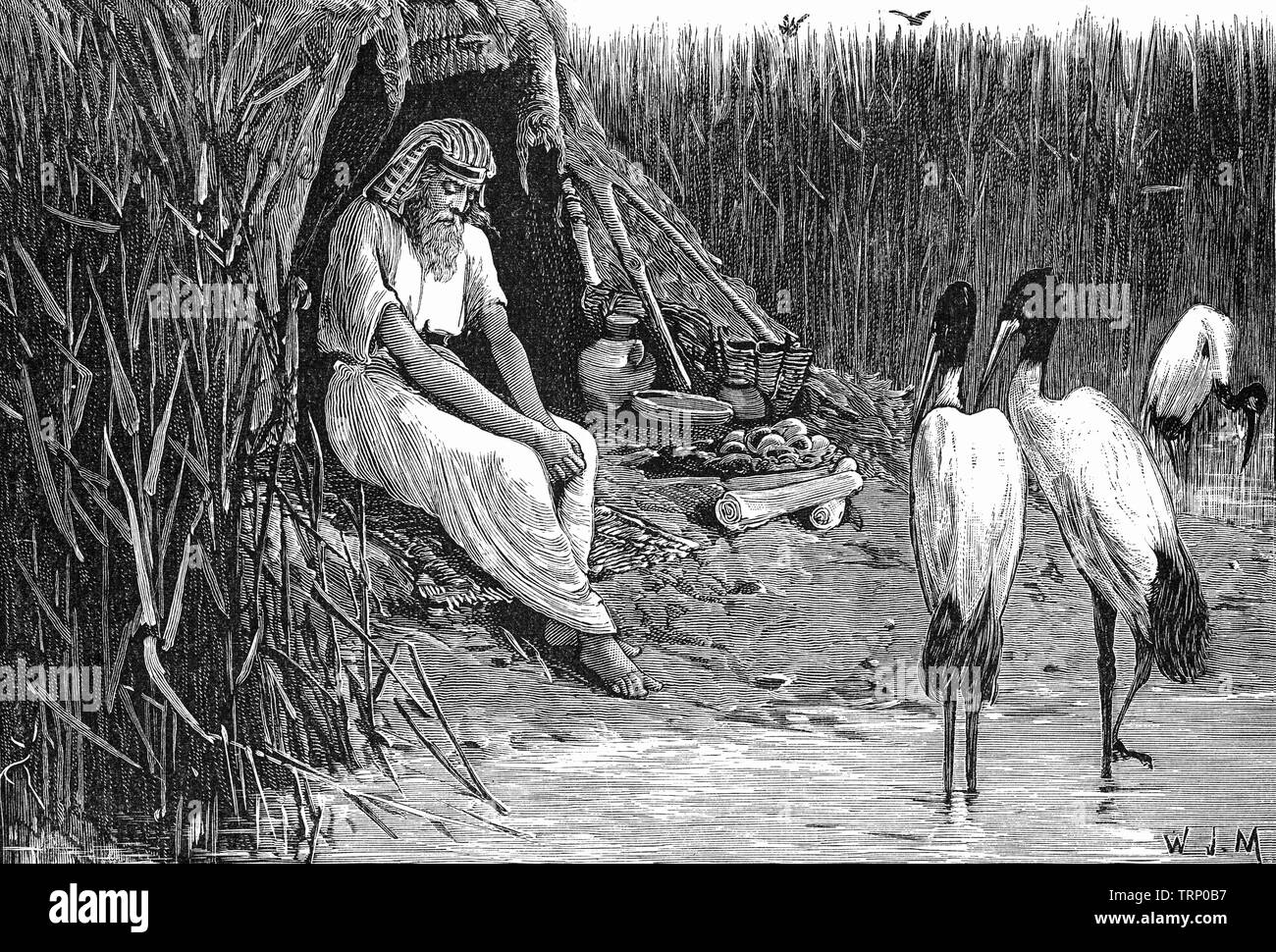 When Sabaco , an Etheopian conquered Egypt around 744 BC to create the 25th Dynasty, Anysis, a blind king took to an island in the marshes of the Nile delta where he stayed for the duration of Sabaco's reign. Stock Photohttps://www.alamy.com/image-license-details/?v=1https://www.alamy.com/when-sabaco-an-etheopian-conquered-egypt-around-744-bc-to-create-the-25th-dynasty-anysis-a-blind-king-took-to-an-island-in-the-marshes-of-the-nile-delta-where-he-stayed-for-the-duration-of-sabacos-reign-image255565499.html
When Sabaco , an Etheopian conquered Egypt around 744 BC to create the 25th Dynasty, Anysis, a blind king took to an island in the marshes of the Nile delta where he stayed for the duration of Sabaco's reign. Stock Photohttps://www.alamy.com/image-license-details/?v=1https://www.alamy.com/when-sabaco-an-etheopian-conquered-egypt-around-744-bc-to-create-the-25th-dynasty-anysis-a-blind-king-took-to-an-island-in-the-marshes-of-the-nile-delta-where-he-stayed-for-the-duration-of-sabacos-reign-image255565499.htmlRMTRP0B7–When Sabaco , an Etheopian conquered Egypt around 744 BC to create the 25th Dynasty, Anysis, a blind king took to an island in the marshes of the Nile delta where he stayed for the duration of Sabaco's reign.
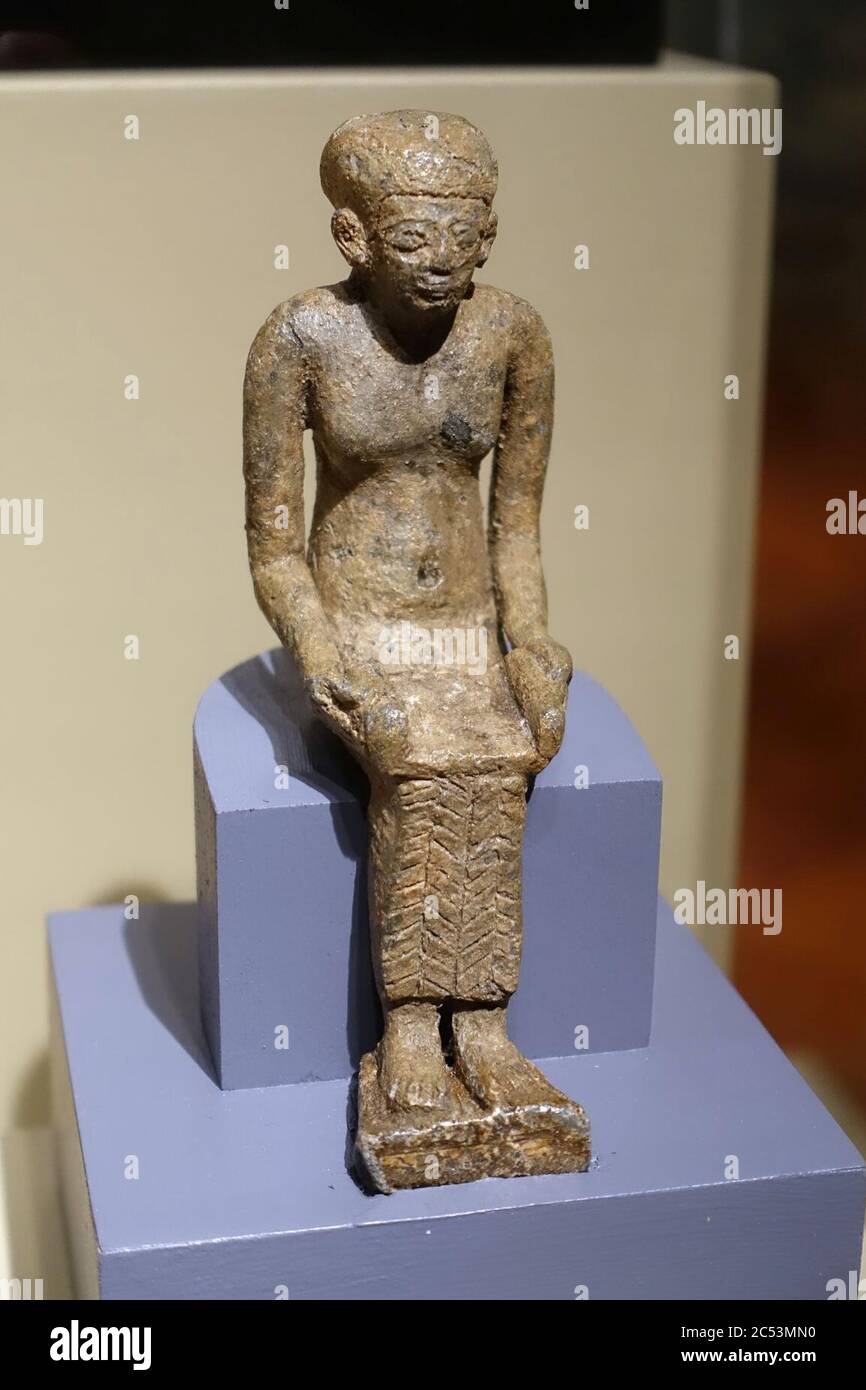 Imhotep statuette, Egyptian, Late period, 25th dynasty, 760-656 BC, bronze Stock Photohttps://www.alamy.com/image-license-details/?v=1https://www.alamy.com/imhotep-statuette-egyptian-late-period-25th-dynasty-760-656-bc-bronze-image364573132.html
Imhotep statuette, Egyptian, Late period, 25th dynasty, 760-656 BC, bronze Stock Photohttps://www.alamy.com/image-license-details/?v=1https://www.alamy.com/imhotep-statuette-egyptian-late-period-25th-dynasty-760-656-bc-bronze-image364573132.htmlRM2C53MN0–Imhotep statuette, Egyptian, Late period, 25th dynasty, 760-656 BC, bronze
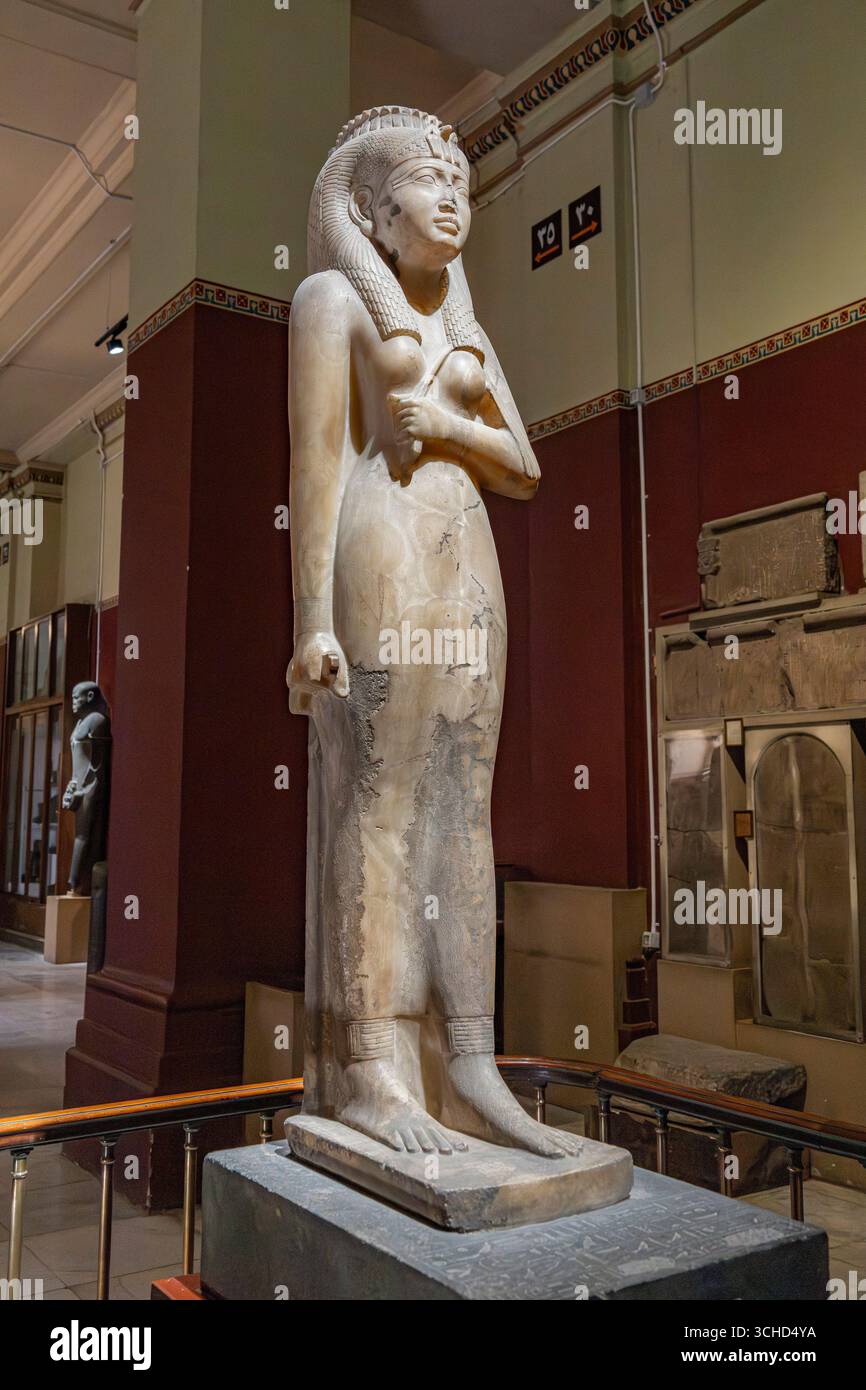 Egyptian Museum(Cairo museum), statue of Amenirdis(wife of Amun), Nubian 25th dynasty, Cairo, Egypt, North Africa, Africa Stock Photohttps://www.alamy.com/image-license-details/?v=1https://www.alamy.com/egyptian-museumcairo-museum-statue-of-amenirdiswife-of-amun-nubian-25th-dynasty-cairo-egypt-north-africa-africa-image699153150.html
Egyptian Museum(Cairo museum), statue of Amenirdis(wife of Amun), Nubian 25th dynasty, Cairo, Egypt, North Africa, Africa Stock Photohttps://www.alamy.com/image-license-details/?v=1https://www.alamy.com/egyptian-museumcairo-museum-statue-of-amenirdiswife-of-amun-nubian-25th-dynasty-cairo-egypt-north-africa-africa-image699153150.htmlRM3CHD4YA–Egyptian Museum(Cairo museum), statue of Amenirdis(wife of Amun), Nubian 25th dynasty, Cairo, Egypt, North Africa, Africa
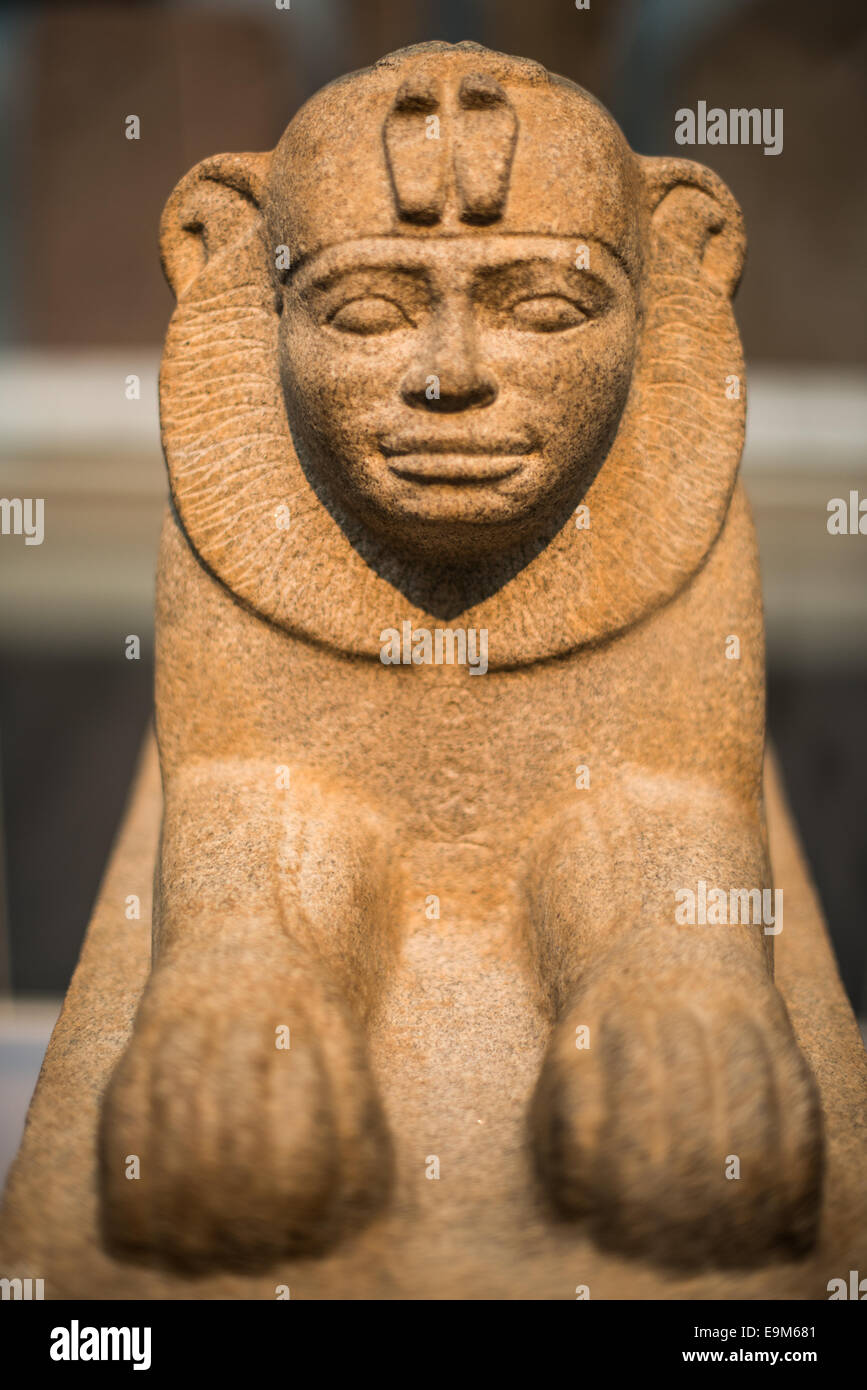 British Museum Sphinx Of Taharqo London // LONDON, United Kingdom — The granite sphinx of Taharqo, dating to circa 690-664 BC, is prominently displayed at the British Museum as part of its extensive Egyptian collection. This ancient artifact represents Pharaoh Taharqo, who ruled during Egypt's 25th Dynasty, also known as the Nubian or Kushite Dynasty. The sphinx combines the body of a lion with a human head bearing the likeness of the pharaoh, exemplifying traditional ancient Egyptian royal iconography. Taharqo was one of the most powerful rulers of his dynasty, controlling territories across Stock Photohttps://www.alamy.com/image-license-details/?v=1https://www.alamy.com/stock-photo-british-museum-sphinx-of-taharqo-london-london-united-kingdom-the-74817345.html
British Museum Sphinx Of Taharqo London // LONDON, United Kingdom — The granite sphinx of Taharqo, dating to circa 690-664 BC, is prominently displayed at the British Museum as part of its extensive Egyptian collection. This ancient artifact represents Pharaoh Taharqo, who ruled during Egypt's 25th Dynasty, also known as the Nubian or Kushite Dynasty. The sphinx combines the body of a lion with a human head bearing the likeness of the pharaoh, exemplifying traditional ancient Egyptian royal iconography. Taharqo was one of the most powerful rulers of his dynasty, controlling territories across Stock Photohttps://www.alamy.com/image-license-details/?v=1https://www.alamy.com/stock-photo-british-museum-sphinx-of-taharqo-london-london-united-kingdom-the-74817345.htmlRME9M681–British Museum Sphinx Of Taharqo London // LONDON, United Kingdom — The granite sphinx of Taharqo, dating to circa 690-664 BC, is prominently displayed at the British Museum as part of its extensive Egyptian collection. This ancient artifact represents Pharaoh Taharqo, who ruled during Egypt's 25th Dynasty, also known as the Nubian or Kushite Dynasty. The sphinx combines the body of a lion with a human head bearing the likeness of the pharaoh, exemplifying traditional ancient Egyptian royal iconography. Taharqo was one of the most powerful rulers of his dynasty, controlling territories across
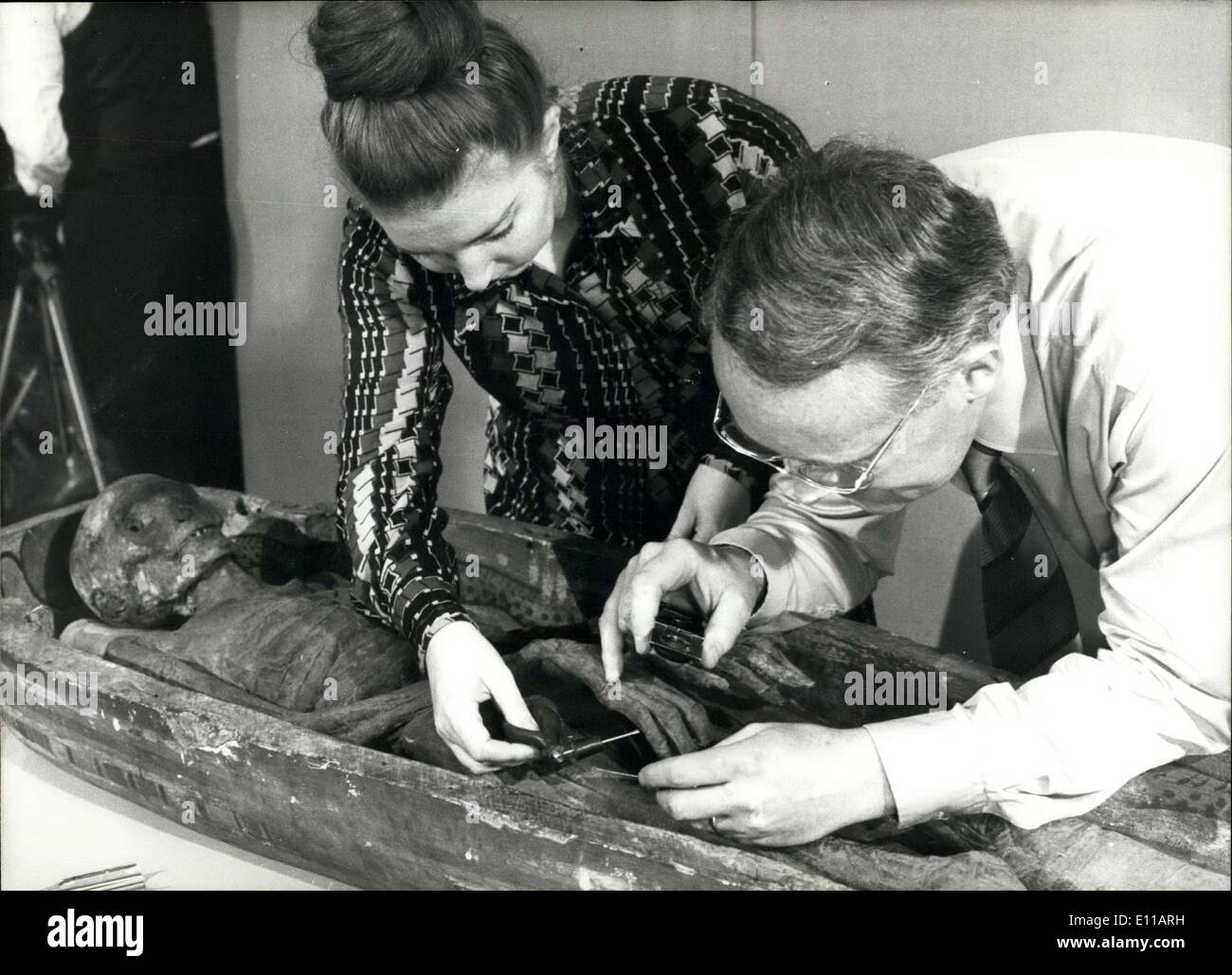 Jun. 21, 1976 - Toe prints help Manchester Police to solve the Riddle of ASRU-The Egyptian Mummy: a 2,600-year-old Egyptian mummy was helping police with their inquiries. Detectives took their finger printing equipment to Manchester University to aid Doctor Rosalie David, and Egyptologist, to discover more about the life and times of ASRU, a tiny, thin woman the ought to have been a dancer in the Egyptian 25th dynasty. But the team of finger print experts, led by Chief Inspector, Tony Fletcher, feel sure of one thing - ASRU was never a dancer Stock Photohttps://www.alamy.com/image-license-details/?v=1https://www.alamy.com/jun-21-1976-toe-prints-help-manchester-police-to-solve-the-riddle-image69486581.html
Jun. 21, 1976 - Toe prints help Manchester Police to solve the Riddle of ASRU-The Egyptian Mummy: a 2,600-year-old Egyptian mummy was helping police with their inquiries. Detectives took their finger printing equipment to Manchester University to aid Doctor Rosalie David, and Egyptologist, to discover more about the life and times of ASRU, a tiny, thin woman the ought to have been a dancer in the Egyptian 25th dynasty. But the team of finger print experts, led by Chief Inspector, Tony Fletcher, feel sure of one thing - ASRU was never a dancer Stock Photohttps://www.alamy.com/image-license-details/?v=1https://www.alamy.com/jun-21-1976-toe-prints-help-manchester-police-to-solve-the-riddle-image69486581.htmlRME11ARH–Jun. 21, 1976 - Toe prints help Manchester Police to solve the Riddle of ASRU-The Egyptian Mummy: a 2,600-year-old Egyptian mummy was helping police with their inquiries. Detectives took their finger printing equipment to Manchester University to aid Doctor Rosalie David, and Egyptologist, to discover more about the life and times of ASRU, a tiny, thin woman the ought to have been a dancer in the Egyptian 25th dynasty. But the team of finger print experts, led by Chief Inspector, Tony Fletcher, feel sure of one thing - ASRU was never a dancer
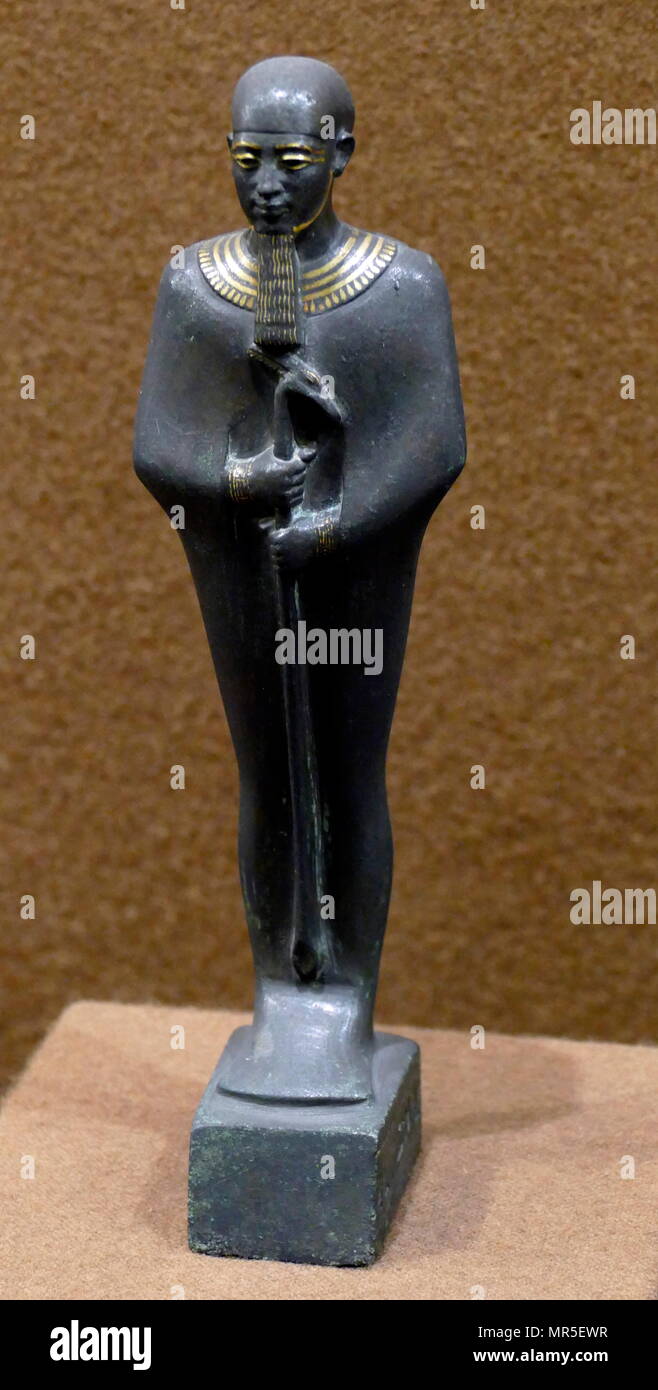 Bronze electrum incrusted statuette of тне god Ptah. 25th dynasty 746 to 653 BC Stock Photohttps://www.alamy.com/image-license-details/?v=1https://www.alamy.com/bronze-electrum-incrusted-statuette-of-god-ptah-25th-dynasty-746-to-653-bc-image186362227.html
Bronze electrum incrusted statuette of тне god Ptah. 25th dynasty 746 to 653 BC Stock Photohttps://www.alamy.com/image-license-details/?v=1https://www.alamy.com/bronze-electrum-incrusted-statuette-of-god-ptah-25th-dynasty-746-to-653-bc-image186362227.htmlRMMR5EWR–Bronze electrum incrusted statuette of тне god Ptah. 25th dynasty 746 to 653 BC
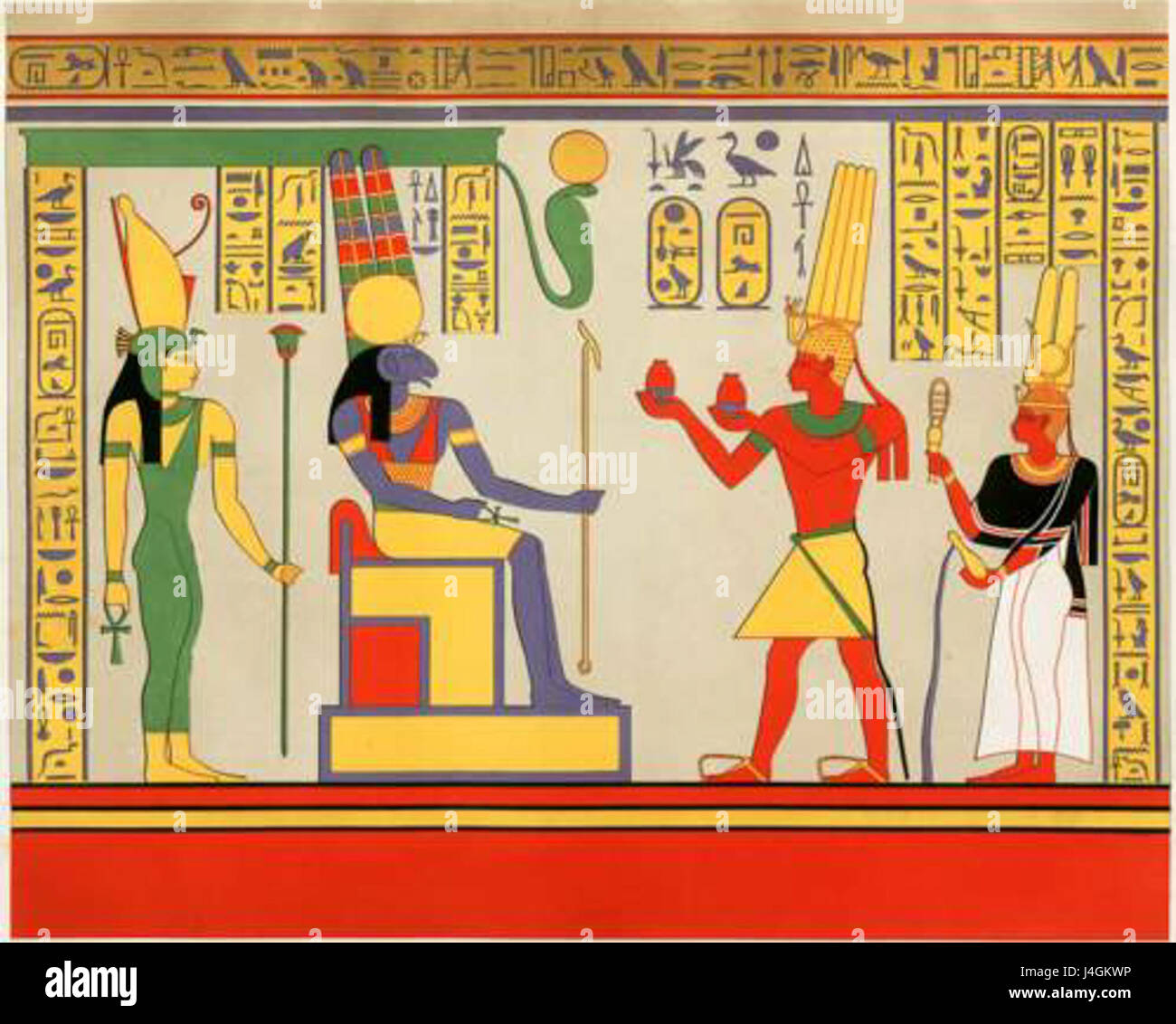 Taharqa was a pharaoh of the 25th dynasty of Egypt, and his reign was marked by his efforts to stabilize Egypt. He was also known for his military and diplomatic actions. The term 'Taharqa queen' refers to his consort, whose role is noted in Egyptian history. Stock Photohttps://www.alamy.com/image-license-details/?v=1https://www.alamy.com/stock-photo-taharqa-was-a-pharaoh-of-the-25th-dynasty-of-egypt-and-his-reign-was-140508418.html
Taharqa was a pharaoh of the 25th dynasty of Egypt, and his reign was marked by his efforts to stabilize Egypt. He was also known for his military and diplomatic actions. The term 'Taharqa queen' refers to his consort, whose role is noted in Egyptian history. Stock Photohttps://www.alamy.com/image-license-details/?v=1https://www.alamy.com/stock-photo-taharqa-was-a-pharaoh-of-the-25th-dynasty-of-egypt-and-his-reign-was-140508418.htmlRMJ4GKWP–Taharqa was a pharaoh of the 25th dynasty of Egypt, and his reign was marked by his efforts to stabilize Egypt. He was also known for his military and diplomatic actions. The term 'Taharqa queen' refers to his consort, whose role is noted in Egyptian history.
![English: The block 1 of the so-called 'Piankhy blocks', from the temple of Mut at Karnak. Actually, those blocks are unrelated to both Piankhy (Piye) and the 25th Dynasty in general, and were issued in regnal year 9 of king Psamtik I of the 26th Dynasty (656 BCE) to commemorate the arrival to Thebes of her daughter Nitocris I in order of being adopted as the future god's wife of Amun at Karnak. This particular block shows one of the vessels of the royal flotilla, the one led by the commander and prince of Herakleopolis, Sematawytefnakht.[1] Deutsch: Pije (Piankhy) Relief Block I im Tempelbezir Stock Photo English: The block 1 of the so-called 'Piankhy blocks', from the temple of Mut at Karnak. Actually, those blocks are unrelated to both Piankhy (Piye) and the 25th Dynasty in general, and were issued in regnal year 9 of king Psamtik I of the 26th Dynasty (656 BCE) to commemorate the arrival to Thebes of her daughter Nitocris I in order of being adopted as the future god's wife of Amun at Karnak. This particular block shows one of the vessels of the royal flotilla, the one led by the commander and prince of Herakleopolis, Sematawytefnakht.[1] Deutsch: Pije (Piankhy) Relief Block I im Tempelbezir Stock Photo](https://c8.alamy.com/comp/P78C2A/english-the-block-1-of-the-so-called-piankhy-blocks-from-the-temple-of-mut-at-karnak-actually-those-blocks-are-unrelated-to-both-piankhy-piye-and-the-25th-dynasty-in-general-and-were-issued-in-regnal-year-9-of-king-psamtik-i-of-the-26th-dynasty-656-bce-to-commemorate-the-arrival-to-thebes-of-her-daughter-nitocris-i-in-order-of-being-adopted-as-the-future-gods-wife-of-amun-at-karnak-this-particular-block-shows-one-of-the-vessels-of-the-royal-flotilla-the-one-led-by-the-commander-and-prince-of-herakleopolis-sematawytefnakht-1-deutsch-pije-piankhy-relief-block-i-im-tempelbezir-P78C2A.jpg) English: The block 1 of the so-called 'Piankhy blocks', from the temple of Mut at Karnak. Actually, those blocks are unrelated to both Piankhy (Piye) and the 25th Dynasty in general, and were issued in regnal year 9 of king Psamtik I of the 26th Dynasty (656 BCE) to commemorate the arrival to Thebes of her daughter Nitocris I in order of being adopted as the future god's wife of Amun at Karnak. This particular block shows one of the vessels of the royal flotilla, the one led by the commander and prince of Herakleopolis, Sematawytefnakht.[1] Deutsch: Pije (Piankhy) Relief Block I im Tempelbezir Stock Photohttps://www.alamy.com/image-license-details/?v=1https://www.alamy.com/english-the-block-1-of-the-so-called-piankhy-blocks-from-the-temple-of-mut-at-karnak-actually-those-blocks-are-unrelated-to-both-piankhy-piye-and-the-25th-dynasty-in-general-and-were-issued-in-regnal-year-9-of-king-psamtik-i-of-the-26th-dynasty-656-bce-to-commemorate-the-arrival-to-thebes-of-her-daughter-nitocris-i-in-order-of-being-adopted-as-the-future-gods-wife-of-amun-at-karnak-this-particular-block-shows-one-of-the-vessels-of-the-royal-flotilla-the-one-led-by-the-commander-and-prince-of-herakleopolis-sematawytefnakht-1-deutsch-pije-piankhy-relief-block-i-im-tempelbezir-image211012098.html
English: The block 1 of the so-called 'Piankhy blocks', from the temple of Mut at Karnak. Actually, those blocks are unrelated to both Piankhy (Piye) and the 25th Dynasty in general, and were issued in regnal year 9 of king Psamtik I of the 26th Dynasty (656 BCE) to commemorate the arrival to Thebes of her daughter Nitocris I in order of being adopted as the future god's wife of Amun at Karnak. This particular block shows one of the vessels of the royal flotilla, the one led by the commander and prince of Herakleopolis, Sematawytefnakht.[1] Deutsch: Pije (Piankhy) Relief Block I im Tempelbezir Stock Photohttps://www.alamy.com/image-license-details/?v=1https://www.alamy.com/english-the-block-1-of-the-so-called-piankhy-blocks-from-the-temple-of-mut-at-karnak-actually-those-blocks-are-unrelated-to-both-piankhy-piye-and-the-25th-dynasty-in-general-and-were-issued-in-regnal-year-9-of-king-psamtik-i-of-the-26th-dynasty-656-bce-to-commemorate-the-arrival-to-thebes-of-her-daughter-nitocris-i-in-order-of-being-adopted-as-the-future-gods-wife-of-amun-at-karnak-this-particular-block-shows-one-of-the-vessels-of-the-royal-flotilla-the-one-led-by-the-commander-and-prince-of-herakleopolis-sematawytefnakht-1-deutsch-pije-piankhy-relief-block-i-im-tempelbezir-image211012098.htmlRMP78C2A–English: The block 1 of the so-called 'Piankhy blocks', from the temple of Mut at Karnak. Actually, those blocks are unrelated to both Piankhy (Piye) and the 25th Dynasty in general, and were issued in regnal year 9 of king Psamtik I of the 26th Dynasty (656 BCE) to commemorate the arrival to Thebes of her daughter Nitocris I in order of being adopted as the future god's wife of Amun at Karnak. This particular block shows one of the vessels of the royal flotilla, the one led by the commander and prince of Herakleopolis, Sematawytefnakht.[1] Deutsch: Pije (Piankhy) Relief Block I im Tempelbezir
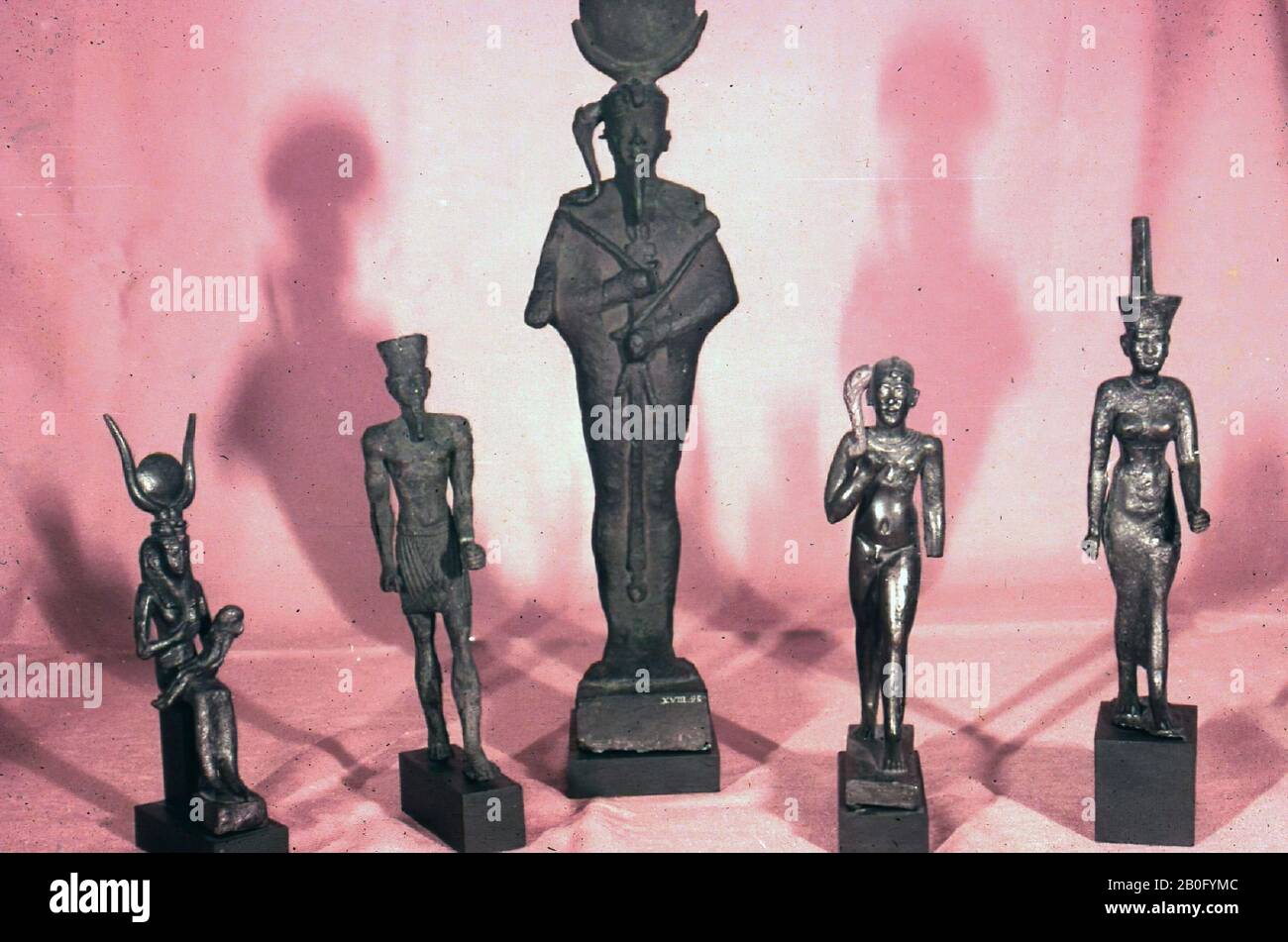 Amon, standing, bronze, god, bronze, 19,5 cm, Late Period, 25th Dynasty, Egypt Stock Photohttps://www.alamy.com/image-license-details/?v=1https://www.alamy.com/amon-standing-bronze-god-bronze-195-cm-late-period-25th-dynasty-egypt-image344558380.html
Amon, standing, bronze, god, bronze, 19,5 cm, Late Period, 25th Dynasty, Egypt Stock Photohttps://www.alamy.com/image-license-details/?v=1https://www.alamy.com/amon-standing-bronze-god-bronze-195-cm-late-period-25th-dynasty-egypt-image344558380.htmlRM2B0FYMC–Amon, standing, bronze, god, bronze, 19,5 cm, Late Period, 25th Dynasty, Egypt
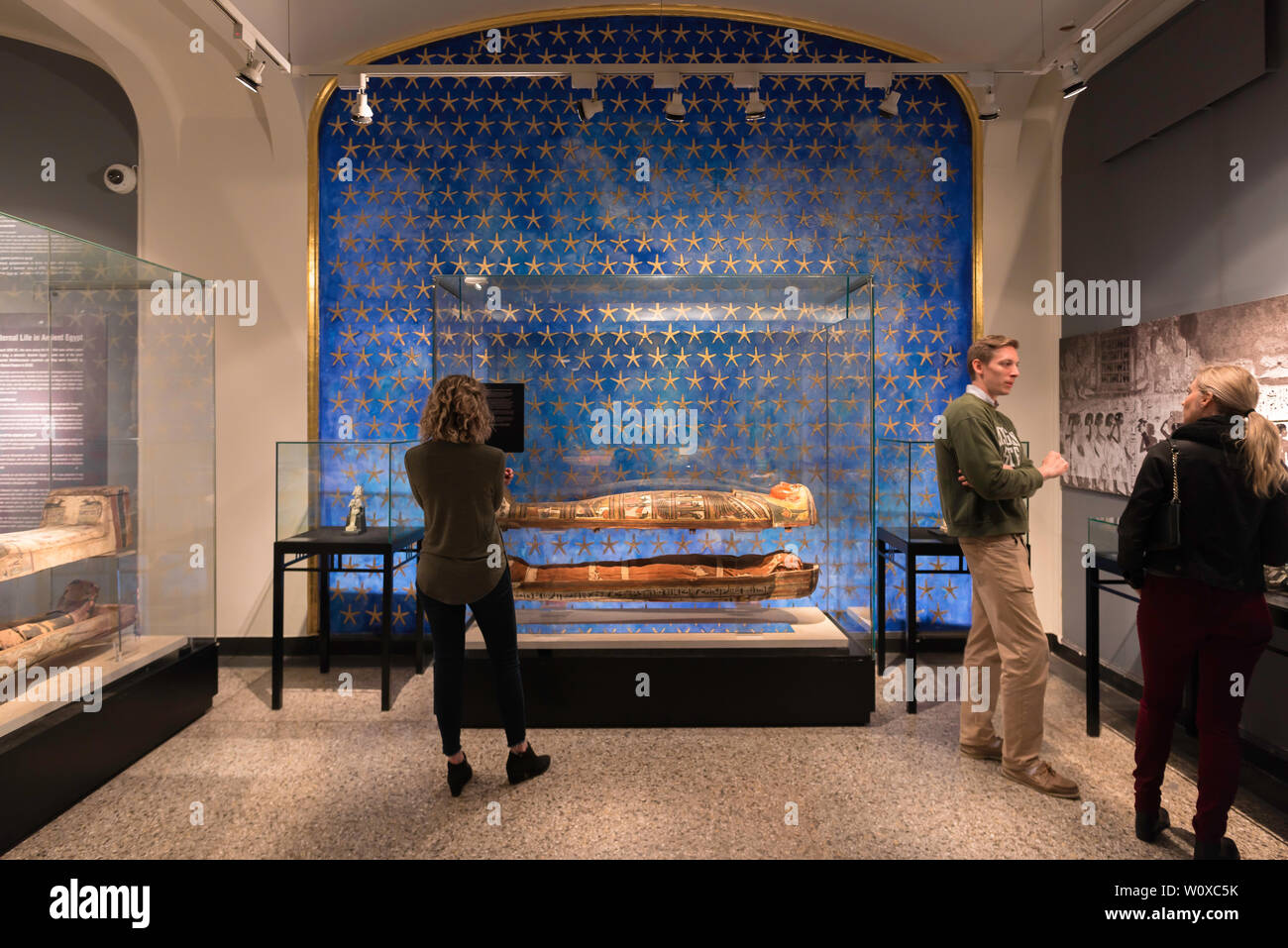 Oslo museum, view of a Theban 25th Dynasty mummy sarcophagus known as the Temple Guard's (Foreman's) Daughter in the Historical Museum, Oslo, Norway Stock Photohttps://www.alamy.com/image-license-details/?v=1https://www.alamy.com/oslo-museum-view-of-a-theban-25th-dynasty-mummy-sarcophagus-known-as-the-temple-guards-foremans-daughter-in-the-historical-museum-oslo-norway-image258735839.html
Oslo museum, view of a Theban 25th Dynasty mummy sarcophagus known as the Temple Guard's (Foreman's) Daughter in the Historical Museum, Oslo, Norway Stock Photohttps://www.alamy.com/image-license-details/?v=1https://www.alamy.com/oslo-museum-view-of-a-theban-25th-dynasty-mummy-sarcophagus-known-as-the-temple-guards-foremans-daughter-in-the-historical-museum-oslo-norway-image258735839.htmlRMW0XC5K–Oslo museum, view of a Theban 25th Dynasty mummy sarcophagus known as the Temple Guard's (Foreman's) Daughter in the Historical Museum, Oslo, Norway
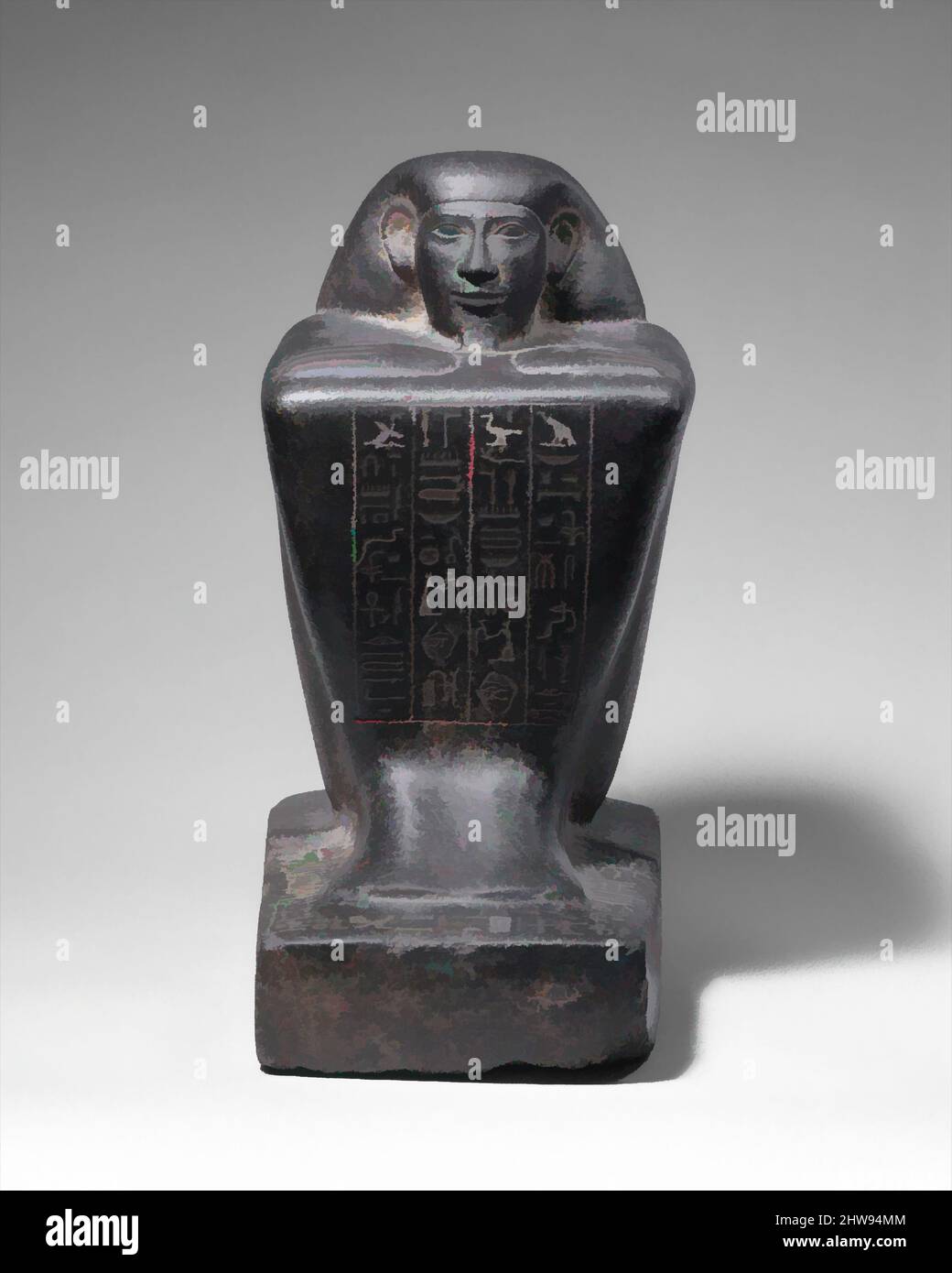 Art inspired by Block Statue of a Prophet of Montu and Scribe Djedkhonsuefankh, son of Khonsumes and Taat, Late Period, Kushite–Saite, Dynasty 25–26, 690–610 B.C., From Egypt; Made for Upper Egypt, Thebes, Luxor, Gabbro, h. 30.7 cm (12 1/16 in), In the late 25th dynasty and early 26th, Classic works modernized by Artotop with a splash of modernity. Shapes, color and value, eye-catching visual impact on art. Emotions through freedom of artworks in a contemporary way. A timeless message pursuing a wildly creative new direction. Artists turning to the digital medium and creating the Artotop NFT Stock Photohttps://www.alamy.com/image-license-details/?v=1https://www.alamy.com/art-inspired-by-block-statue-of-a-prophet-of-montu-and-scribe-djedkhonsuefankh-son-of-khonsumes-and-taat-late-period-kushitesaite-dynasty-2526-690610-bc-from-egypt-made-for-upper-egypt-thebes-luxor-gabbro-h-307-cm-12-116-in-in-the-late-25th-dynasty-and-early-26th-classic-works-modernized-by-artotop-with-a-splash-of-modernity-shapes-color-and-value-eye-catching-visual-impact-on-art-emotions-through-freedom-of-artworks-in-a-contemporary-way-a-timeless-message-pursuing-a-wildly-creative-new-direction-artists-turning-to-the-digital-medium-and-creating-the-artotop-nft-image463037252.html
Art inspired by Block Statue of a Prophet of Montu and Scribe Djedkhonsuefankh, son of Khonsumes and Taat, Late Period, Kushite–Saite, Dynasty 25–26, 690–610 B.C., From Egypt; Made for Upper Egypt, Thebes, Luxor, Gabbro, h. 30.7 cm (12 1/16 in), In the late 25th dynasty and early 26th, Classic works modernized by Artotop with a splash of modernity. Shapes, color and value, eye-catching visual impact on art. Emotions through freedom of artworks in a contemporary way. A timeless message pursuing a wildly creative new direction. Artists turning to the digital medium and creating the Artotop NFT Stock Photohttps://www.alamy.com/image-license-details/?v=1https://www.alamy.com/art-inspired-by-block-statue-of-a-prophet-of-montu-and-scribe-djedkhonsuefankh-son-of-khonsumes-and-taat-late-period-kushitesaite-dynasty-2526-690610-bc-from-egypt-made-for-upper-egypt-thebes-luxor-gabbro-h-307-cm-12-116-in-in-the-late-25th-dynasty-and-early-26th-classic-works-modernized-by-artotop-with-a-splash-of-modernity-shapes-color-and-value-eye-catching-visual-impact-on-art-emotions-through-freedom-of-artworks-in-a-contemporary-way-a-timeless-message-pursuing-a-wildly-creative-new-direction-artists-turning-to-the-digital-medium-and-creating-the-artotop-nft-image463037252.htmlRF2HW94MM–Art inspired by Block Statue of a Prophet of Montu and Scribe Djedkhonsuefankh, son of Khonsumes and Taat, Late Period, Kushite–Saite, Dynasty 25–26, 690–610 B.C., From Egypt; Made for Upper Egypt, Thebes, Luxor, Gabbro, h. 30.7 cm (12 1/16 in), In the late 25th dynasty and early 26th, Classic works modernized by Artotop with a splash of modernity. Shapes, color and value, eye-catching visual impact on art. Emotions through freedom of artworks in a contemporary way. A timeless message pursuing a wildly creative new direction. Artists turning to the digital medium and creating the Artotop NFT
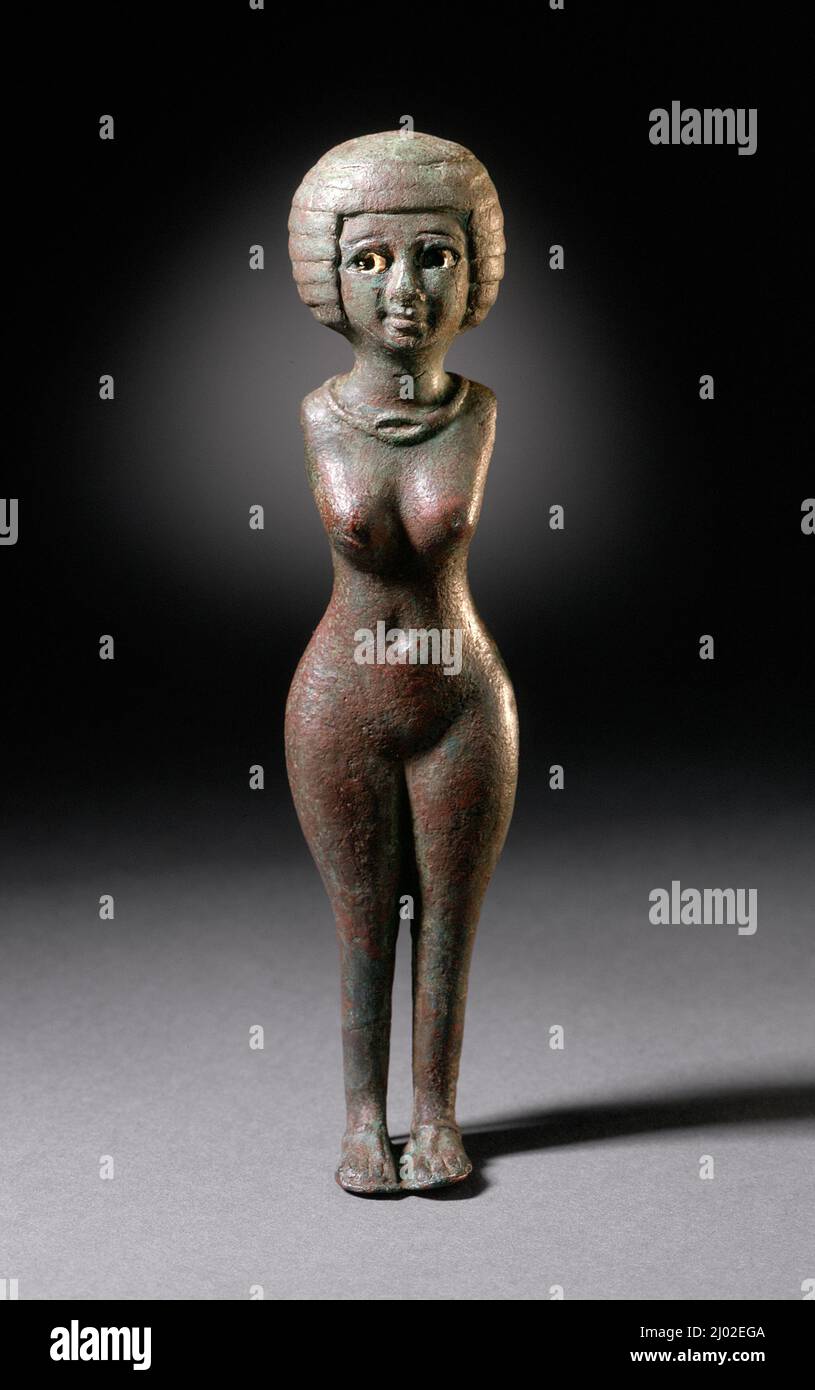 Nubian Female Figure. Egypt, Late Period, 25th Dynasty (711 - 600 BCE) or later. Sculpture. Bronze Stock Photohttps://www.alamy.com/image-license-details/?v=1https://www.alamy.com/nubian-female-figure-egypt-late-period-25th-dynasty-711-600-bce-or-later-sculpture-bronze-image464735274.html
Nubian Female Figure. Egypt, Late Period, 25th Dynasty (711 - 600 BCE) or later. Sculpture. Bronze Stock Photohttps://www.alamy.com/image-license-details/?v=1https://www.alamy.com/nubian-female-figure-egypt-late-period-25th-dynasty-711-600-bce-or-later-sculpture-bronze-image464735274.htmlRM2J02EGA–Nubian Female Figure. Egypt, Late Period, 25th Dynasty (711 - 600 BCE) or later. Sculpture. Bronze
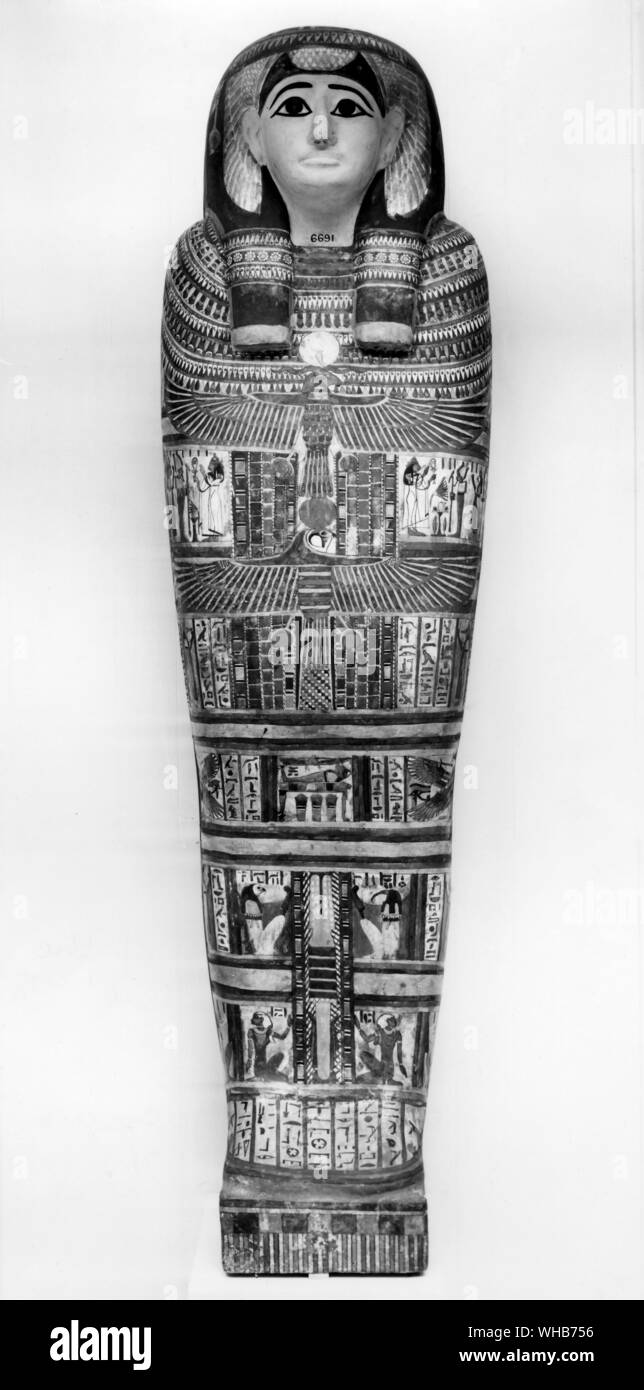 Inner coffin of the Lady of the House - Takhebkhenem (450 BC) - . The mummy of Takhebkhenem dates from the 25th dynasty, around 700 BC, and was excavated in Thebes. . Stock Photohttps://www.alamy.com/image-license-details/?v=1https://www.alamy.com/inner-coffin-of-the-lady-of-the-house-takhebkhenem-450-bc-the-mummy-of-takhebkhenem-dates-from-the-25th-dynasty-around-700-bc-and-was-excavated-in-thebes-image268851778.html
Inner coffin of the Lady of the House - Takhebkhenem (450 BC) - . The mummy of Takhebkhenem dates from the 25th dynasty, around 700 BC, and was excavated in Thebes. . Stock Photohttps://www.alamy.com/image-license-details/?v=1https://www.alamy.com/inner-coffin-of-the-lady-of-the-house-takhebkhenem-450-bc-the-mummy-of-takhebkhenem-dates-from-the-25th-dynasty-around-700-bc-and-was-excavated-in-thebes-image268851778.htmlRMWHB756–Inner coffin of the Lady of the House - Takhebkhenem (450 BC) - . The mummy of Takhebkhenem dates from the 25th dynasty, around 700 BC, and was excavated in Thebes. .
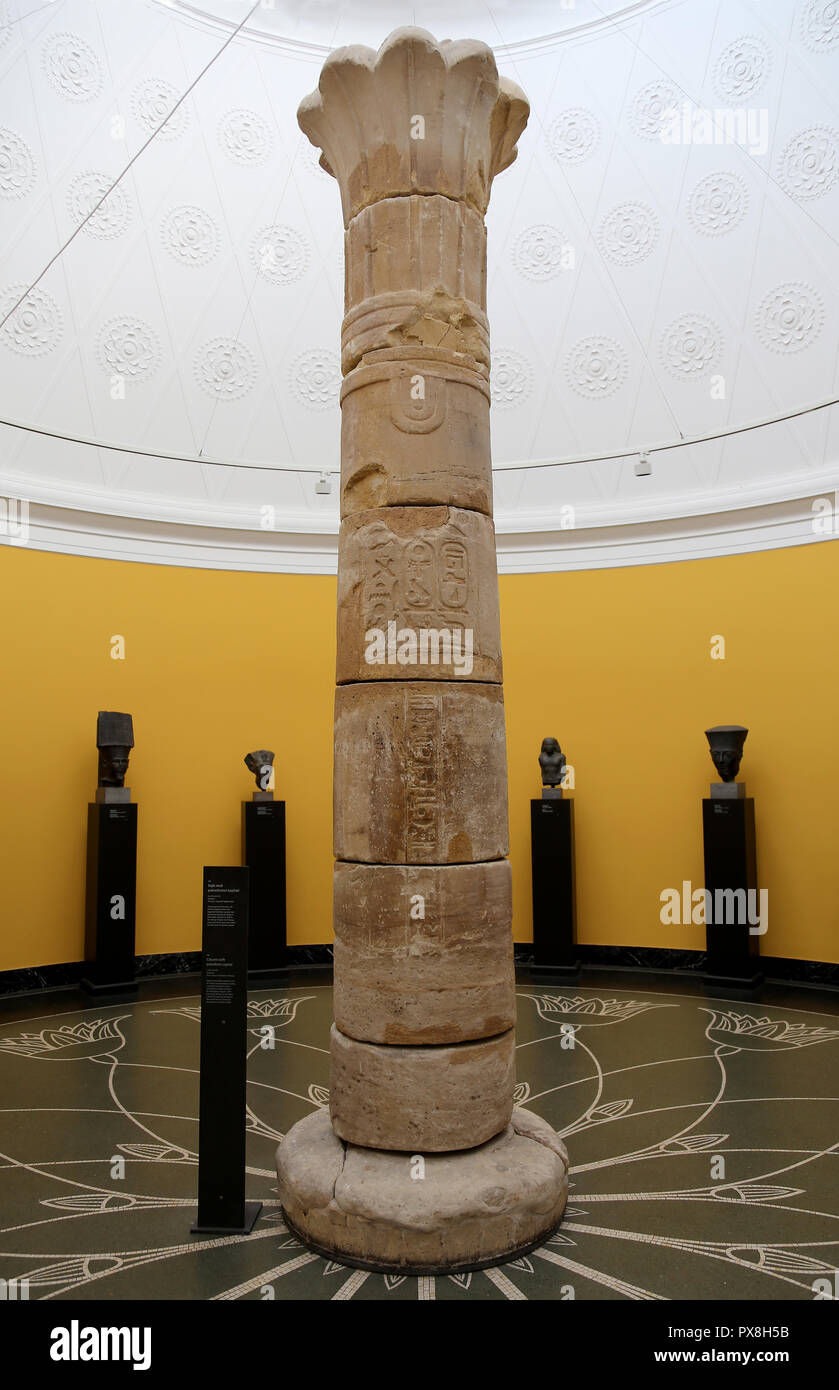 Column with palmiform capital (c. 690-664 BC) from the Temple of Taharqa, pharaoh of the 25th Dynasty, in Kawa, Ancient Egypt. Stock Photohttps://www.alamy.com/image-license-details/?v=1https://www.alamy.com/column-with-palmiform-capital-c-690-664-bc-from-the-temple-of-taharqa-pharaoh-of-the-25th-dynasty-in-kawa-ancient-egypt-image222694567.html
Column with palmiform capital (c. 690-664 BC) from the Temple of Taharqa, pharaoh of the 25th Dynasty, in Kawa, Ancient Egypt. Stock Photohttps://www.alamy.com/image-license-details/?v=1https://www.alamy.com/column-with-palmiform-capital-c-690-664-bc-from-the-temple-of-taharqa-pharaoh-of-the-25th-dynasty-in-kawa-ancient-egypt-image222694567.htmlRMPX8H5B–Column with palmiform capital (c. 690-664 BC) from the Temple of Taharqa, pharaoh of the 25th Dynasty, in Kawa, Ancient Egypt.
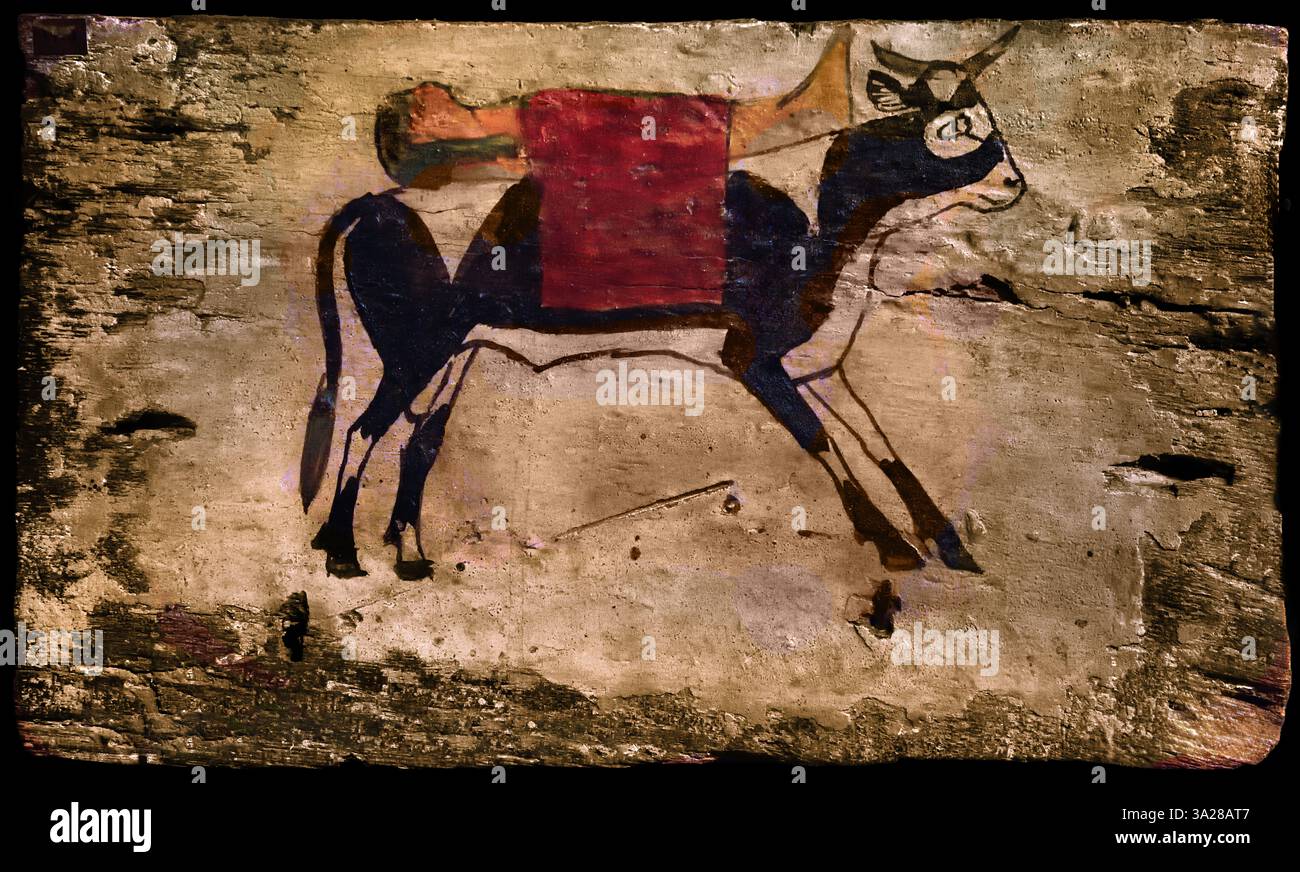 Footboard of a Coffin , 25th Dynasty , tomb equipment, 19 x 33 cm, Animal , Cow, Egypt , Stock Photohttps://www.alamy.com/image-license-details/?v=1https://www.alamy.com/footboard-of-a-coffin-25th-dynasty-tomb-equipment-19-x-33-cm-animal-cow-egypt-image655407431.html
Footboard of a Coffin , 25th Dynasty , tomb equipment, 19 x 33 cm, Animal , Cow, Egypt , Stock Photohttps://www.alamy.com/image-license-details/?v=1https://www.alamy.com/footboard-of-a-coffin-25th-dynasty-tomb-equipment-19-x-33-cm-animal-cow-egypt-image655407431.htmlRM3A28AT7–Footboard of a Coffin , 25th Dynasty , tomb equipment, 19 x 33 cm, Animal , Cow, Egypt ,
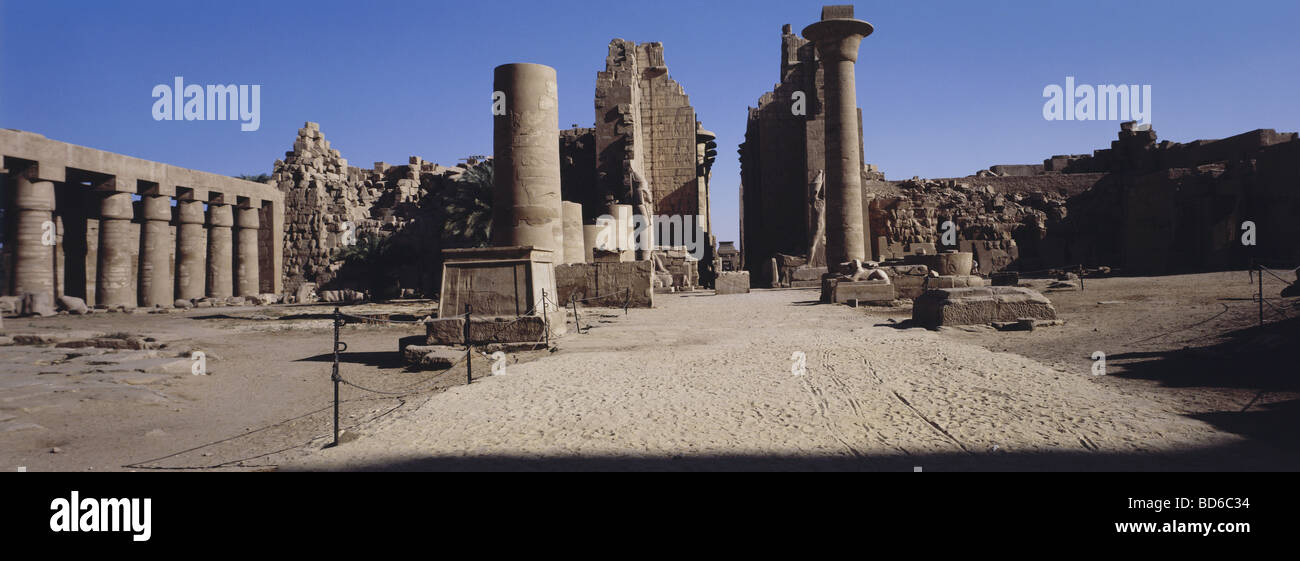 geography / travel, Egypt, Karnak, Temple of Amun-Re, kiosk of King Taharqa (circa 690 - 664 BC, 25th Dynasty) and 2nd pylon, built by King Horemheb (circa 1333 - 1306 BC, 18th Dynasty), view, , Stock Photohttps://www.alamy.com/image-license-details/?v=1https://www.alamy.com/stock-photo-geography-travel-egypt-karnak-temple-of-amun-re-kiosk-of-king-taharqa-25342104.html
geography / travel, Egypt, Karnak, Temple of Amun-Re, kiosk of King Taharqa (circa 690 - 664 BC, 25th Dynasty) and 2nd pylon, built by King Horemheb (circa 1333 - 1306 BC, 18th Dynasty), view, , Stock Photohttps://www.alamy.com/image-license-details/?v=1https://www.alamy.com/stock-photo-geography-travel-egypt-karnak-temple-of-amun-re-kiosk-of-king-taharqa-25342104.htmlRMBD6C34–geography / travel, Egypt, Karnak, Temple of Amun-Re, kiosk of King Taharqa (circa 690 - 664 BC, 25th Dynasty) and 2nd pylon, built by King Horemheb (circa 1333 - 1306 BC, 18th Dynasty), view, ,
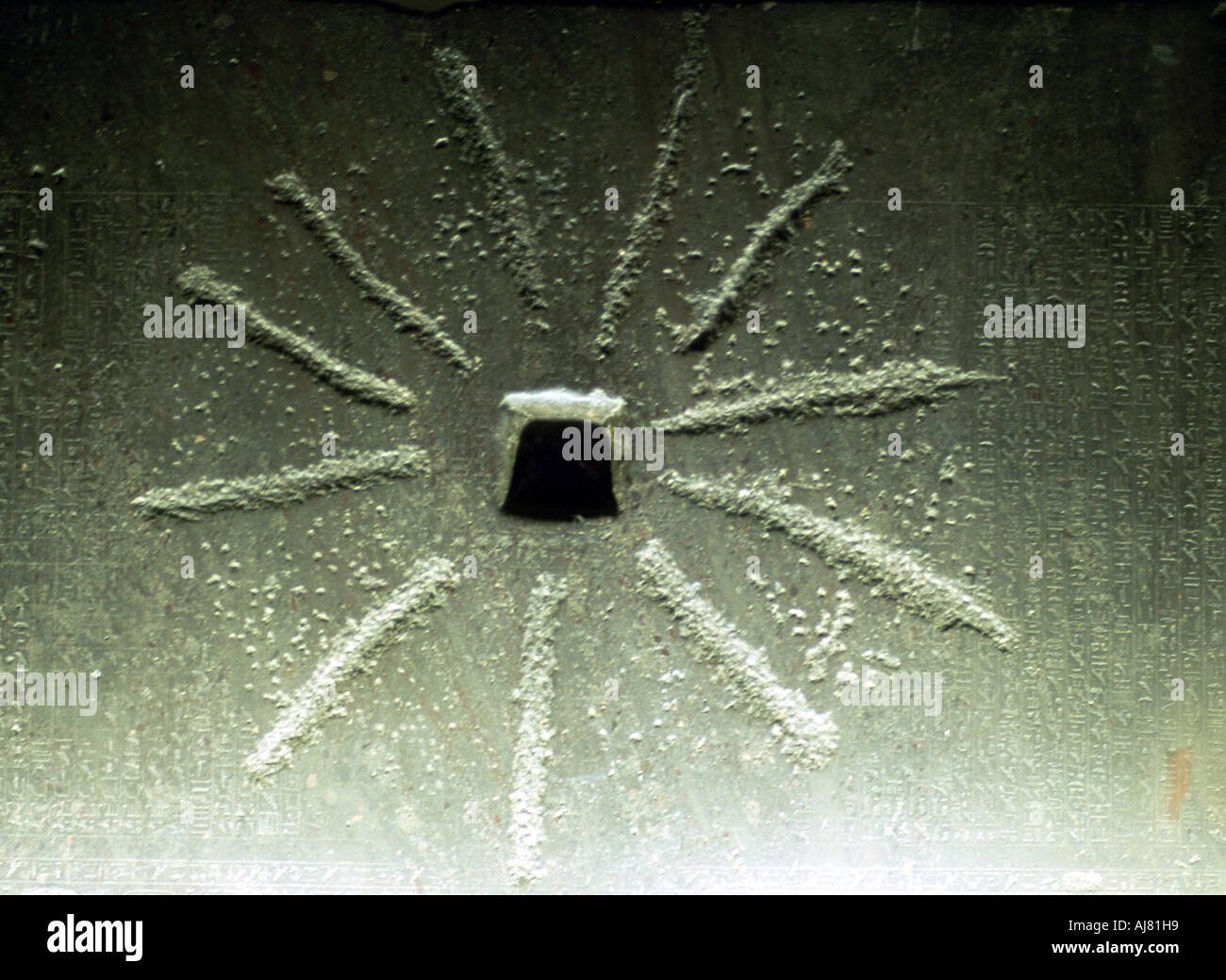 Shabaka stone from Memphis Ancient Egypt 25th dynasty 710 BC Stock Photohttps://www.alamy.com/image-license-details/?v=1https://www.alamy.com/shabaka-stone-from-memphis-ancient-egypt-25th-dynasty-710-bc-image8372440.html
Shabaka stone from Memphis Ancient Egypt 25th dynasty 710 BC Stock Photohttps://www.alamy.com/image-license-details/?v=1https://www.alamy.com/shabaka-stone-from-memphis-ancient-egypt-25th-dynasty-710-bc-image8372440.htmlRMAJ81H9–Shabaka stone from Memphis Ancient Egypt 25th dynasty 710 BC
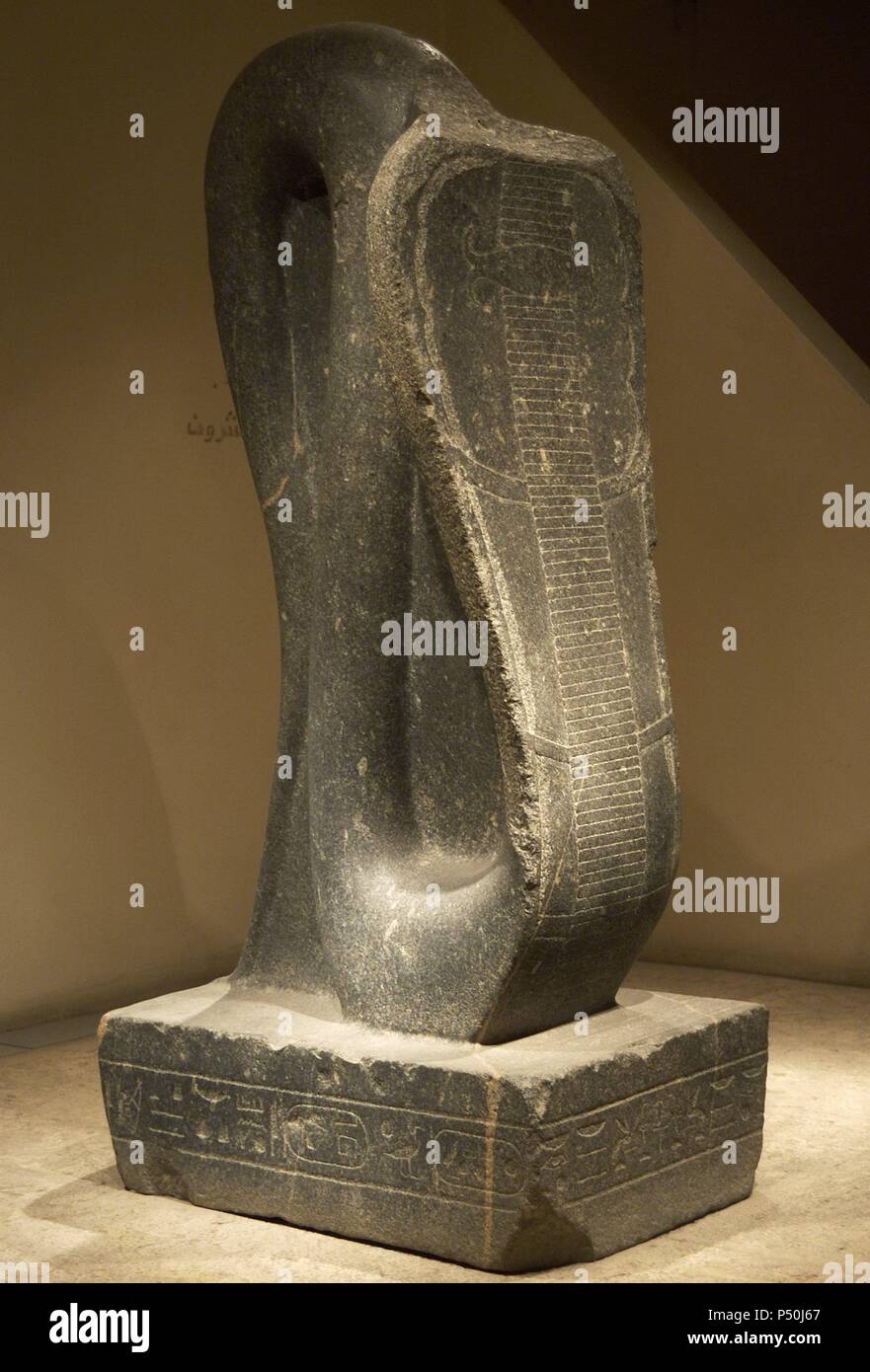 Egyptian Art. Cobra of Amon-Ra. Reign of the Nubian pharaohs. 25th Dynasty. Third Intermediate Period. Luxor Museum. Egypt. Stock Photohttps://www.alamy.com/image-license-details/?v=1https://www.alamy.com/egyptian-art-cobra-of-amon-ra-reign-of-the-nubian-pharaohs-25th-dynasty-third-intermediate-period-luxor-museum-egypt-image209611983.html
Egyptian Art. Cobra of Amon-Ra. Reign of the Nubian pharaohs. 25th Dynasty. Third Intermediate Period. Luxor Museum. Egypt. Stock Photohttps://www.alamy.com/image-license-details/?v=1https://www.alamy.com/egyptian-art-cobra-of-amon-ra-reign-of-the-nubian-pharaohs-25th-dynasty-third-intermediate-period-luxor-museum-egypt-image209611983.htmlRMP50J67–Egyptian Art. Cobra of Amon-Ra. Reign of the Nubian pharaohs. 25th Dynasty. Third Intermediate Period. Luxor Museum. Egypt.
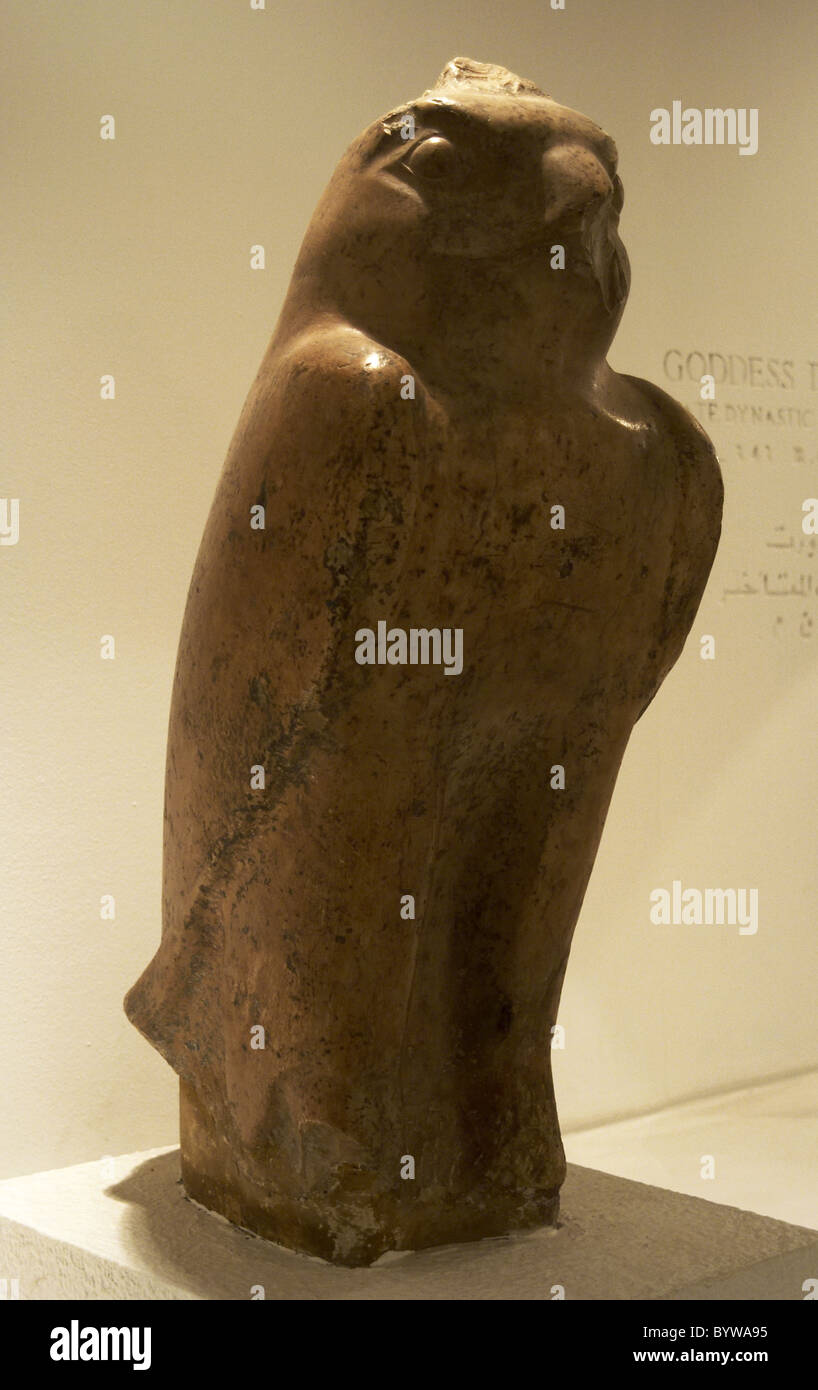 Egyptian Art. Statue of the god Horus as a falcon. 25th Dynasty (Nubian). Third Intermediate Period. Luxor Museum. Egypt. Stock Photohttps://www.alamy.com/image-license-details/?v=1https://www.alamy.com/stock-photo-egyptian-art-statue-of-the-god-horus-as-a-falcon-25th-dynasty-nubian-34362977.html
Egyptian Art. Statue of the god Horus as a falcon. 25th Dynasty (Nubian). Third Intermediate Period. Luxor Museum. Egypt. Stock Photohttps://www.alamy.com/image-license-details/?v=1https://www.alamy.com/stock-photo-egyptian-art-statue-of-the-god-horus-as-a-falcon-25th-dynasty-nubian-34362977.htmlRMBYWA95–Egyptian Art. Statue of the god Horus as a falcon. 25th Dynasty (Nubian). Third Intermediate Period. Luxor Museum. Egypt.
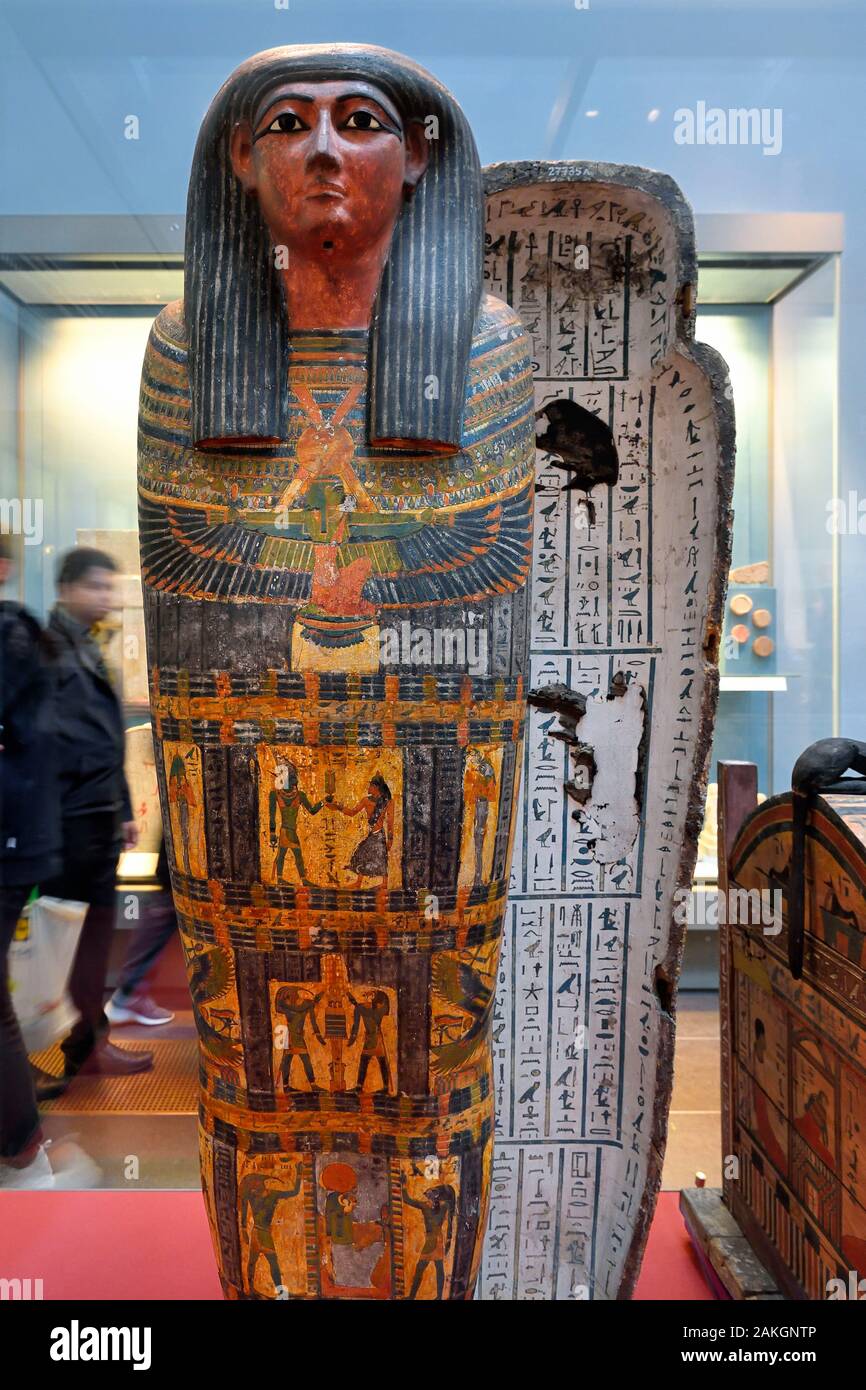 United Kingdom, London, Bloomsbury area, the British Museum, Ancient Egypt, painted wooden coffin of the Prophet of Montu Hor, 25th Dynasty, about 700 BC, from Thebes Stock Photohttps://www.alamy.com/image-license-details/?v=1https://www.alamy.com/united-kingdom-london-bloomsbury-area-the-british-museum-ancient-egypt-painted-wooden-coffin-of-the-prophet-of-montu-hor-25th-dynasty-about-700-bc-from-thebes-image339043846.html
United Kingdom, London, Bloomsbury area, the British Museum, Ancient Egypt, painted wooden coffin of the Prophet of Montu Hor, 25th Dynasty, about 700 BC, from Thebes Stock Photohttps://www.alamy.com/image-license-details/?v=1https://www.alamy.com/united-kingdom-london-bloomsbury-area-the-british-museum-ancient-egypt-painted-wooden-coffin-of-the-prophet-of-montu-hor-25th-dynasty-about-700-bc-from-thebes-image339043846.htmlRM2AKGNTP–United Kingdom, London, Bloomsbury area, the British Museum, Ancient Egypt, painted wooden coffin of the Prophet of Montu Hor, 25th Dynasty, about 700 BC, from Thebes
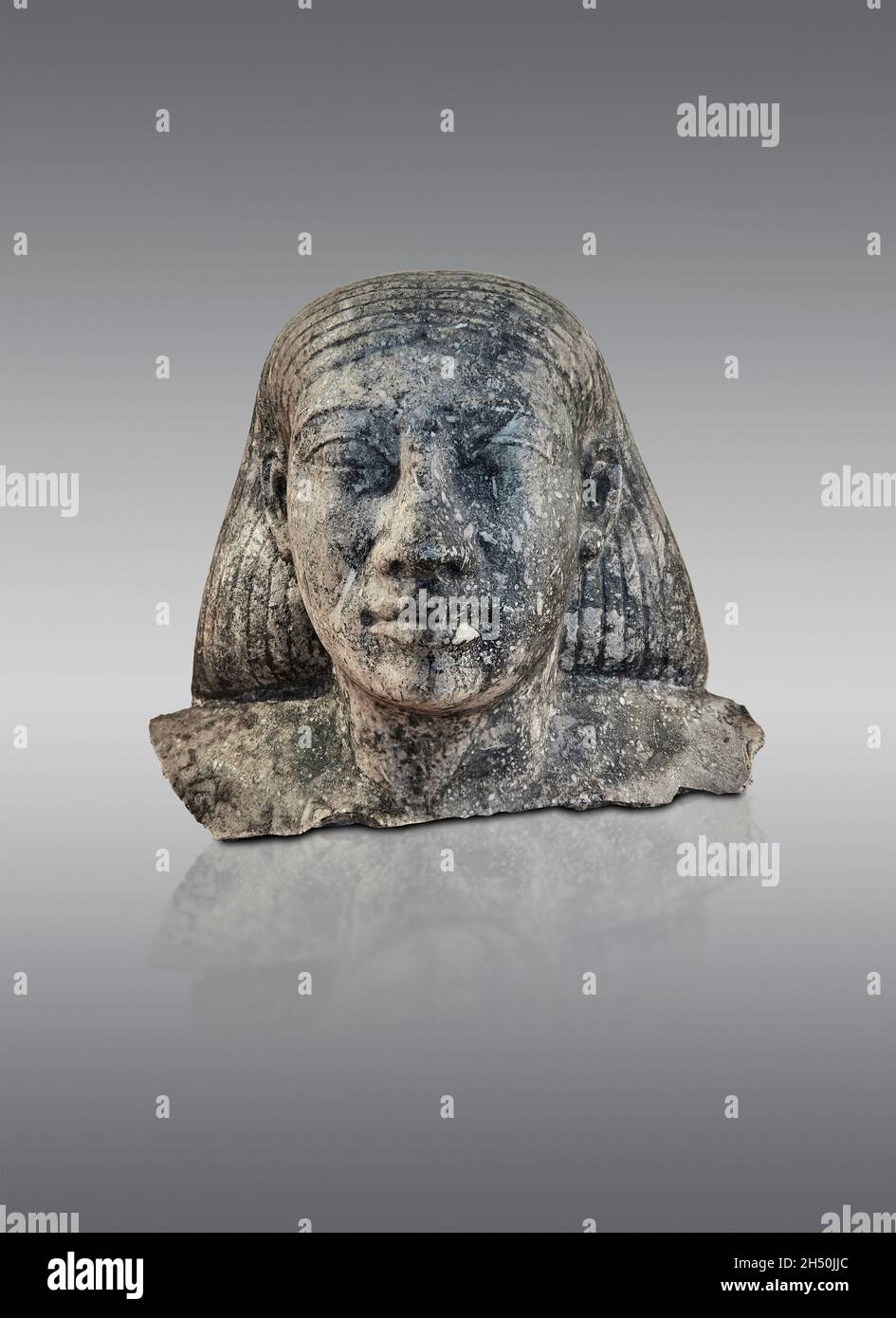 Egyptian statue sculpture of a mans head, 650-600 BC, 25th dynasty, . Louvre Museum . Stock Photohttps://www.alamy.com/image-license-details/?v=1https://www.alamy.com/egyptian-statue-sculpture-of-a-mans-head-650-600-bc-25th-dynasty-louvre-museum-image450557476.html
Egyptian statue sculpture of a mans head, 650-600 BC, 25th dynasty, . Louvre Museum . Stock Photohttps://www.alamy.com/image-license-details/?v=1https://www.alamy.com/egyptian-statue-sculpture-of-a-mans-head-650-600-bc-25th-dynasty-louvre-museum-image450557476.htmlRF2H50JJC–Egyptian statue sculpture of a mans head, 650-600 BC, 25th dynasty, . Louvre Museum .
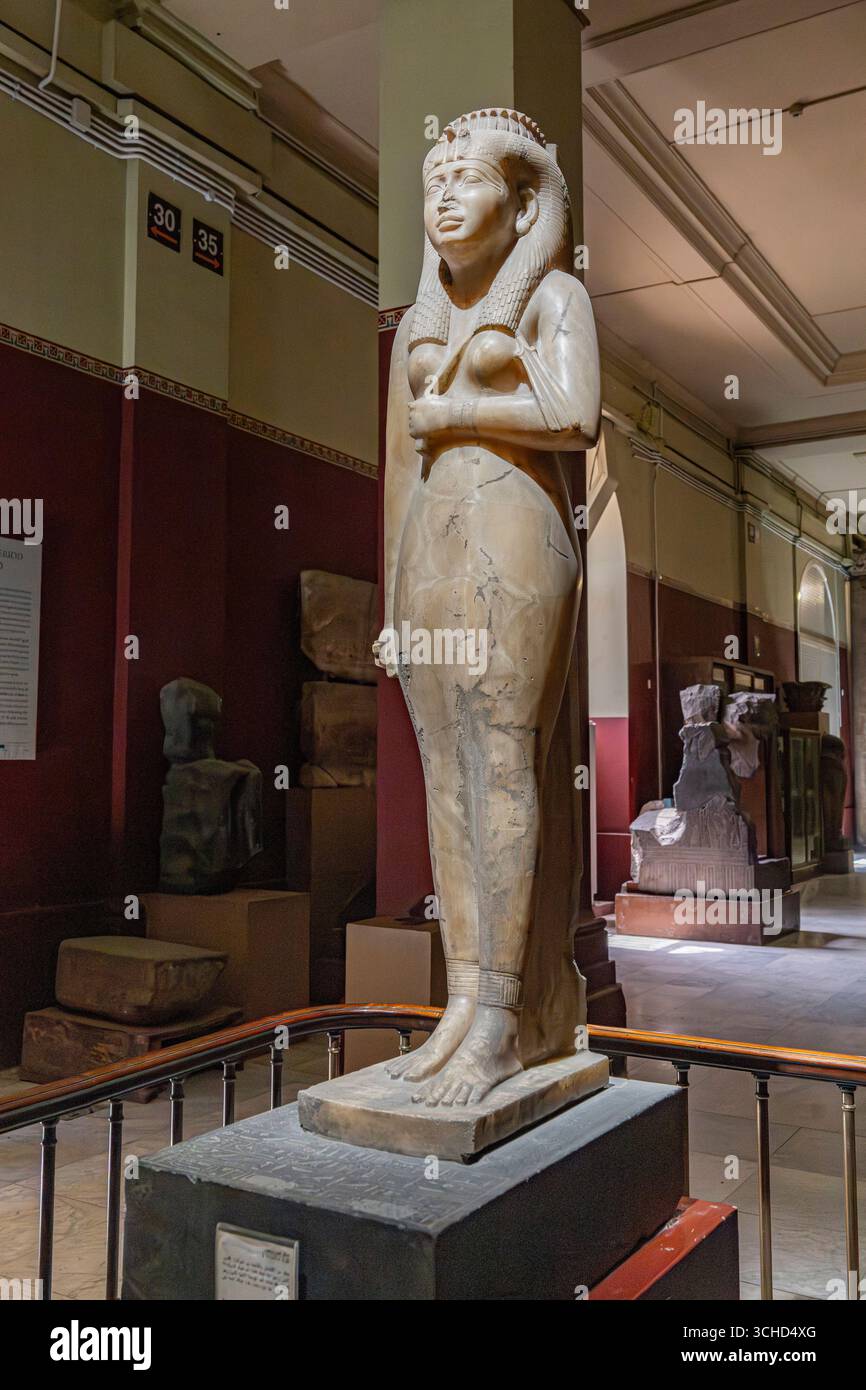 Egyptian Museum(Cairo museum), statue of Amenirdis(wife of Amun), Nubian 25th dynasty, Cairo, Egypt, North Africa, Africa Stock Photohttps://www.alamy.com/image-license-details/?v=1https://www.alamy.com/egyptian-museumcairo-museum-statue-of-amenirdiswife-of-amun-nubian-25th-dynasty-cairo-egypt-north-africa-africa-image699153128.html
Egyptian Museum(Cairo museum), statue of Amenirdis(wife of Amun), Nubian 25th dynasty, Cairo, Egypt, North Africa, Africa Stock Photohttps://www.alamy.com/image-license-details/?v=1https://www.alamy.com/egyptian-museumcairo-museum-statue-of-amenirdiswife-of-amun-nubian-25th-dynasty-cairo-egypt-north-africa-africa-image699153128.htmlRM3CHD4XG–Egyptian Museum(Cairo museum), statue of Amenirdis(wife of Amun), Nubian 25th dynasty, Cairo, Egypt, North Africa, Africa
RF2F5BY16–Facial reconstruction of the Nespamedu mummy. Platinum silicone. Author Juan Villa Herrero, 2016
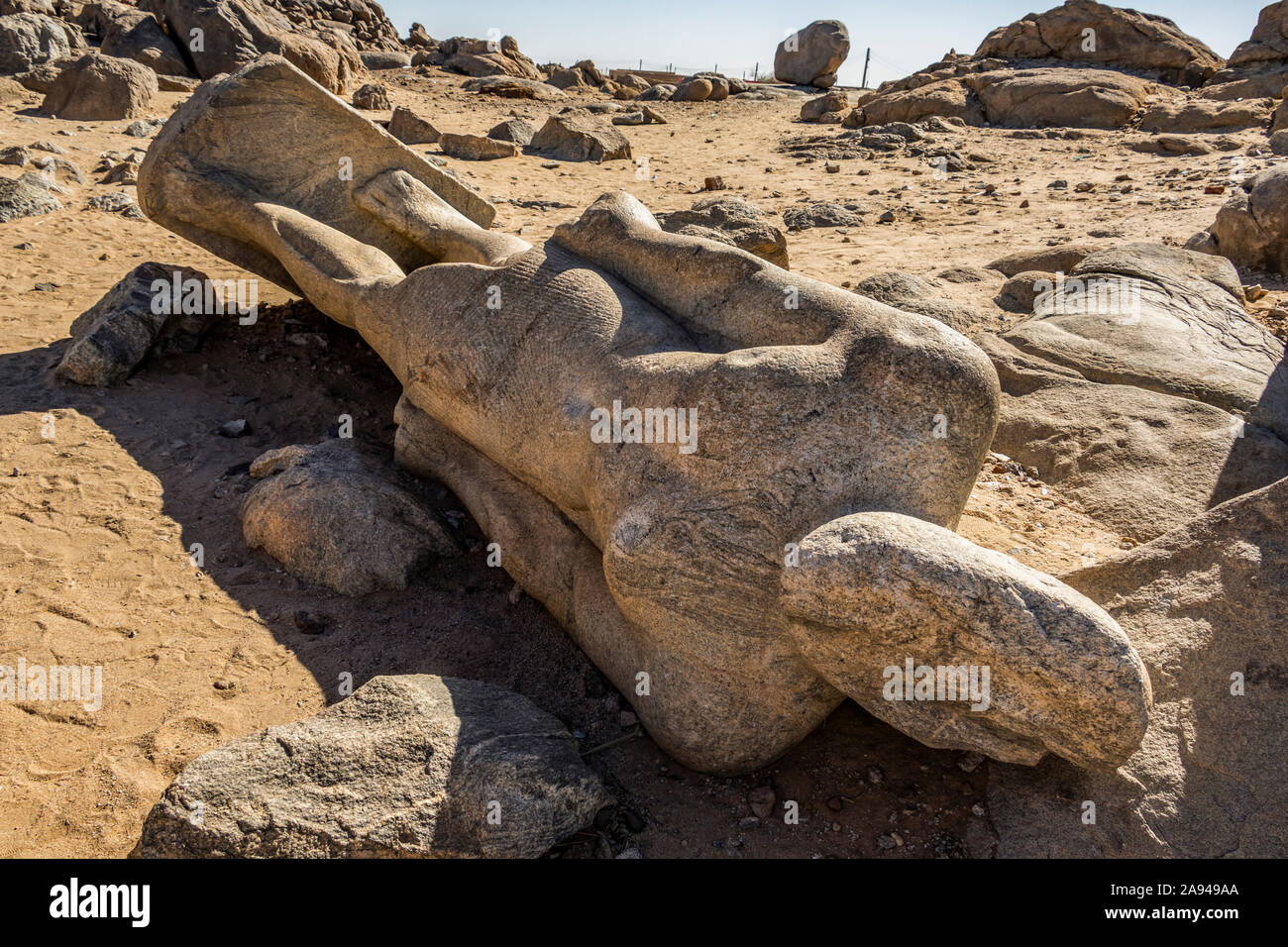 Unfinished statue of a Nubian Pharaoh of the 25th dynasty in the quarries near Tombos; Northern State, Sudan Stock Photohttps://www.alamy.com/image-license-details/?v=1https://www.alamy.com/unfinished-statue-of-a-nubian-pharaoh-of-the-25th-dynasty-in-the-quarries-near-tombos-northern-state-sudan-image332624050.html
Unfinished statue of a Nubian Pharaoh of the 25th dynasty in the quarries near Tombos; Northern State, Sudan Stock Photohttps://www.alamy.com/image-license-details/?v=1https://www.alamy.com/unfinished-statue-of-a-nubian-pharaoh-of-the-25th-dynasty-in-the-quarries-near-tombos-northern-state-sudan-image332624050.htmlRF2A949AA–Unfinished statue of a Nubian Pharaoh of the 25th dynasty in the quarries near Tombos; Northern State, Sudan
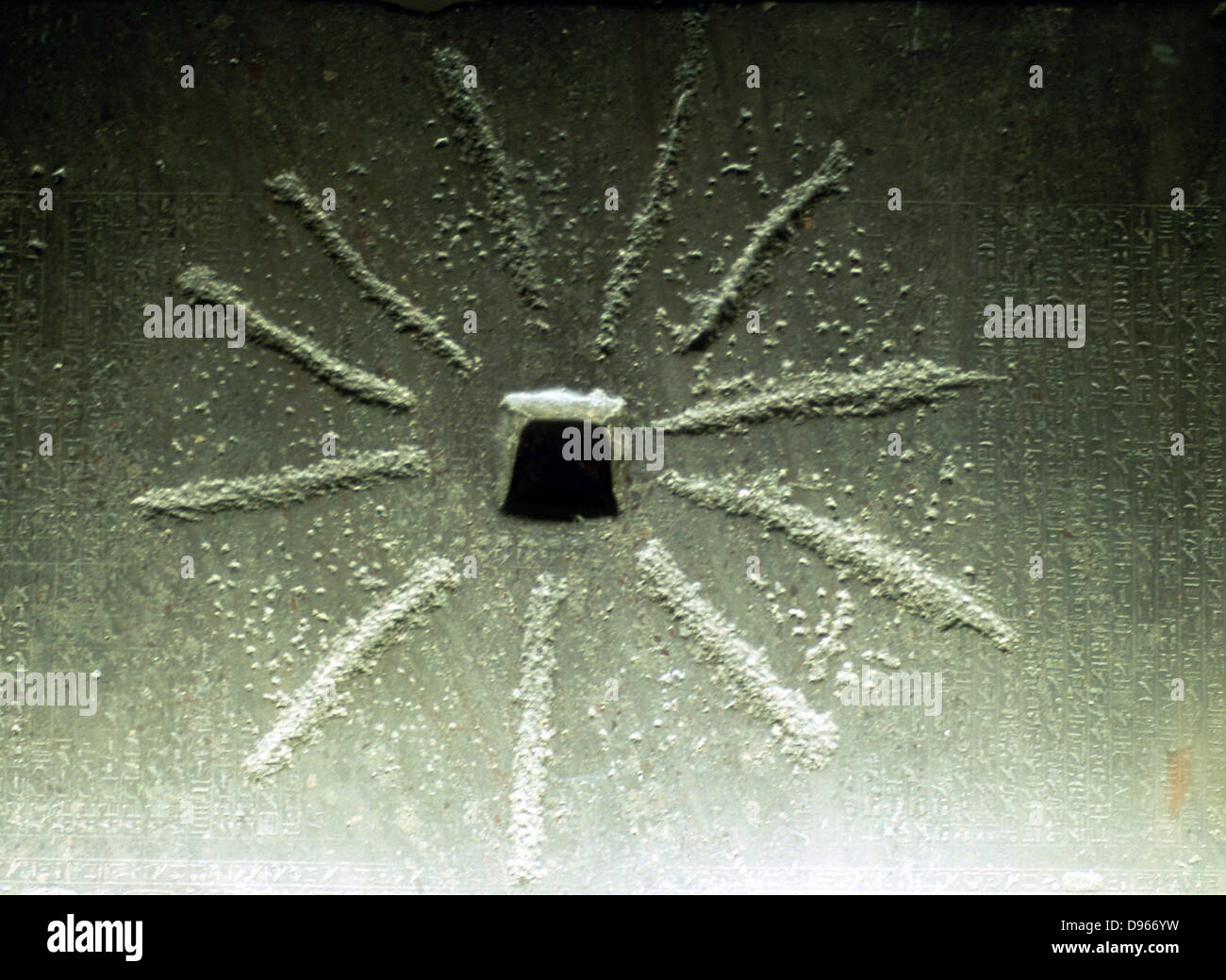 Shabaka stone, 25th dynasty, 710 BC, from Memphis. Contains account of the Creation. Text damaged after use of stone as a millstone. Ancient Egypt Stock Photohttps://www.alamy.com/image-license-details/?v=1https://www.alamy.com/stock-photo-shabaka-stone-25th-dynasty-710-bc-from-memphis-contains-account-of-57300205.html
Shabaka stone, 25th dynasty, 710 BC, from Memphis. Contains account of the Creation. Text damaged after use of stone as a millstone. Ancient Egypt Stock Photohttps://www.alamy.com/image-license-details/?v=1https://www.alamy.com/stock-photo-shabaka-stone-25th-dynasty-710-bc-from-memphis-contains-account-of-57300205.htmlRMD966YW–Shabaka stone, 25th dynasty, 710 BC, from Memphis. Contains account of the Creation. Text damaged after use of stone as a millstone. Ancient Egypt
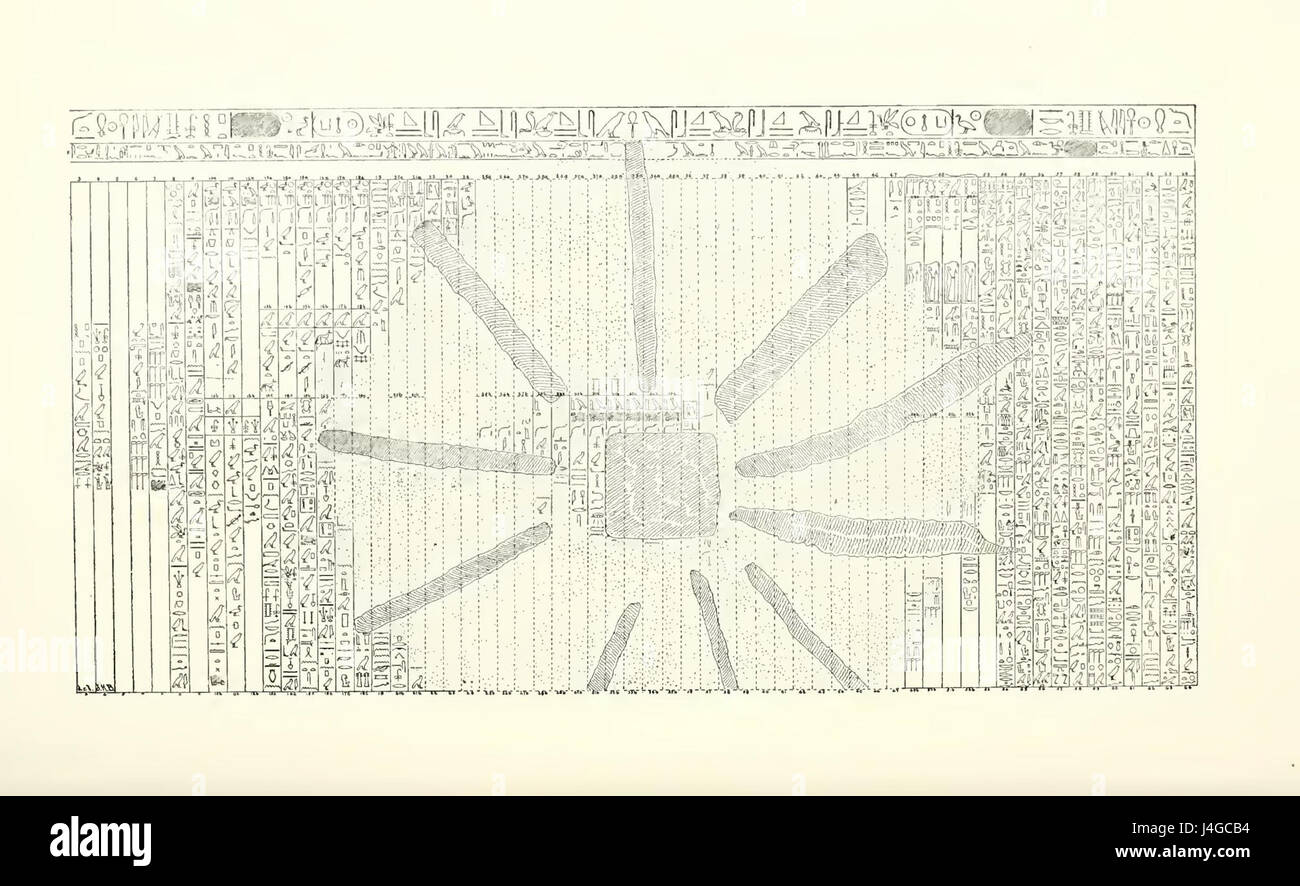 The *Schabaka stone* is an ancient Egyptian artifact dating back to the 25th Dynasty. It is a basalt stele inscribed with a royal decree issued by Pharaoh Shabaka. The inscription is significant for its references to the restoration of temples and the unification of Egypt under the 25th Dynasty. The stone is now housed in the British Museum and is an important piece for understanding Egyptian religious practices and political history. Stock Photohttps://www.alamy.com/image-license-details/?v=1https://www.alamy.com/stock-photo-the-schabaka-stone-is-an-ancient-egyptian-artifact-dating-back-to-140502520.html
The *Schabaka stone* is an ancient Egyptian artifact dating back to the 25th Dynasty. It is a basalt stele inscribed with a royal decree issued by Pharaoh Shabaka. The inscription is significant for its references to the restoration of temples and the unification of Egypt under the 25th Dynasty. The stone is now housed in the British Museum and is an important piece for understanding Egyptian religious practices and political history. Stock Photohttps://www.alamy.com/image-license-details/?v=1https://www.alamy.com/stock-photo-the-schabaka-stone-is-an-ancient-egyptian-artifact-dating-back-to-140502520.htmlRMJ4GCB4–The *Schabaka stone* is an ancient Egyptian artifact dating back to the 25th Dynasty. It is a basalt stele inscribed with a royal decree issued by Pharaoh Shabaka. The inscription is significant for its references to the restoration of temples and the unification of Egypt under the 25th Dynasty. The stone is now housed in the British Museum and is an important piece for understanding Egyptian religious practices and political history.
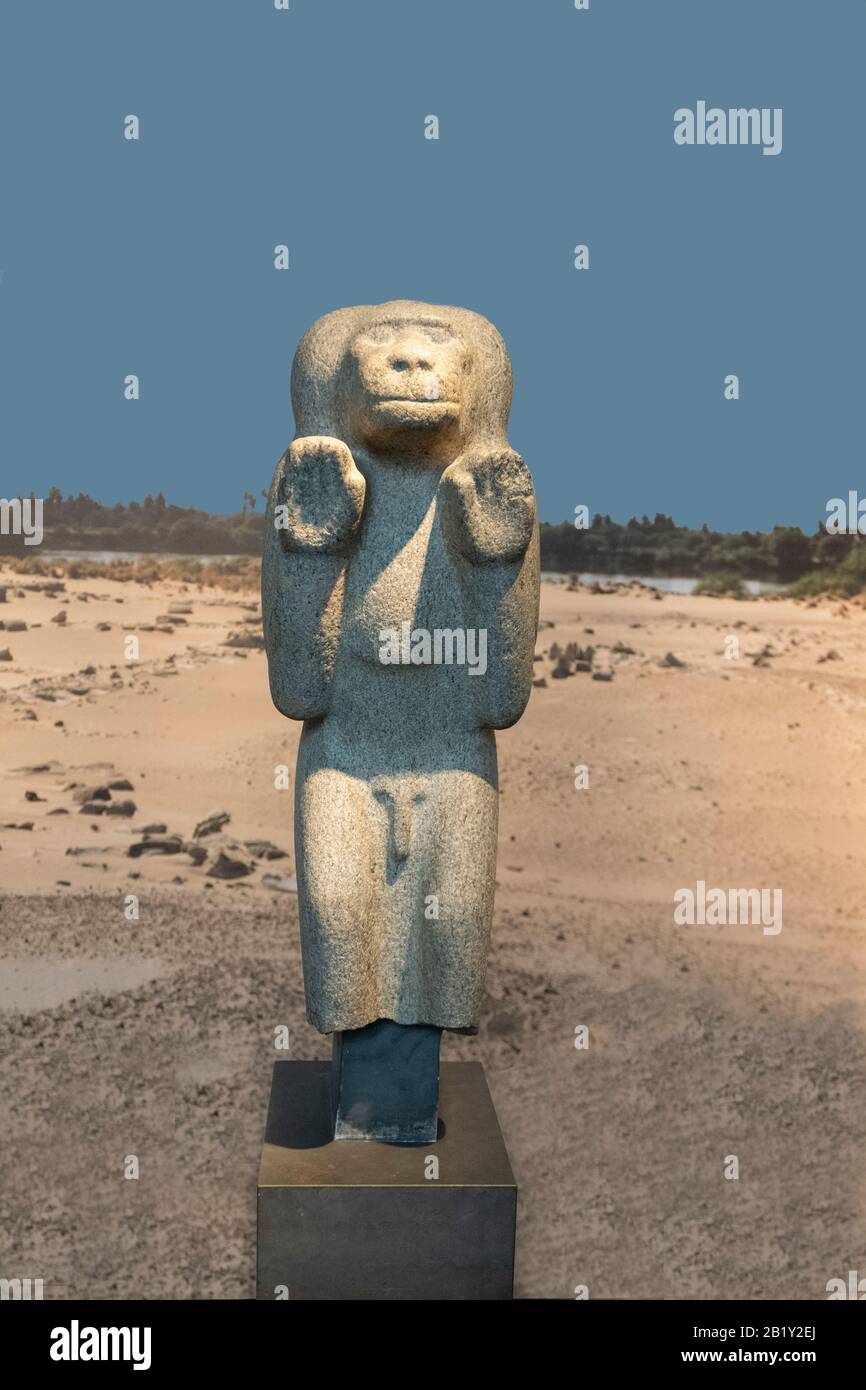 Granite Baboon statue with the name of Taharqa from chapel in the Temple of Taharqa, Kawa, Sudan, 25th Dynasty, 690-664 BC Stock Photohttps://www.alamy.com/image-license-details/?v=1https://www.alamy.com/granite-baboon-statue-with-the-name-of-taharqa-from-chapel-in-the-temple-of-taharqa-kawa-sudan-25th-dynasty-690-664-bc-image345416698.html
Granite Baboon statue with the name of Taharqa from chapel in the Temple of Taharqa, Kawa, Sudan, 25th Dynasty, 690-664 BC Stock Photohttps://www.alamy.com/image-license-details/?v=1https://www.alamy.com/granite-baboon-statue-with-the-name-of-taharqa-from-chapel-in-the-temple-of-taharqa-kawa-sudan-25th-dynasty-690-664-bc-image345416698.htmlRF2B1Y2EJ–Granite Baboon statue with the name of Taharqa from chapel in the Temple of Taharqa, Kawa, Sudan, 25th Dynasty, 690-664 BC
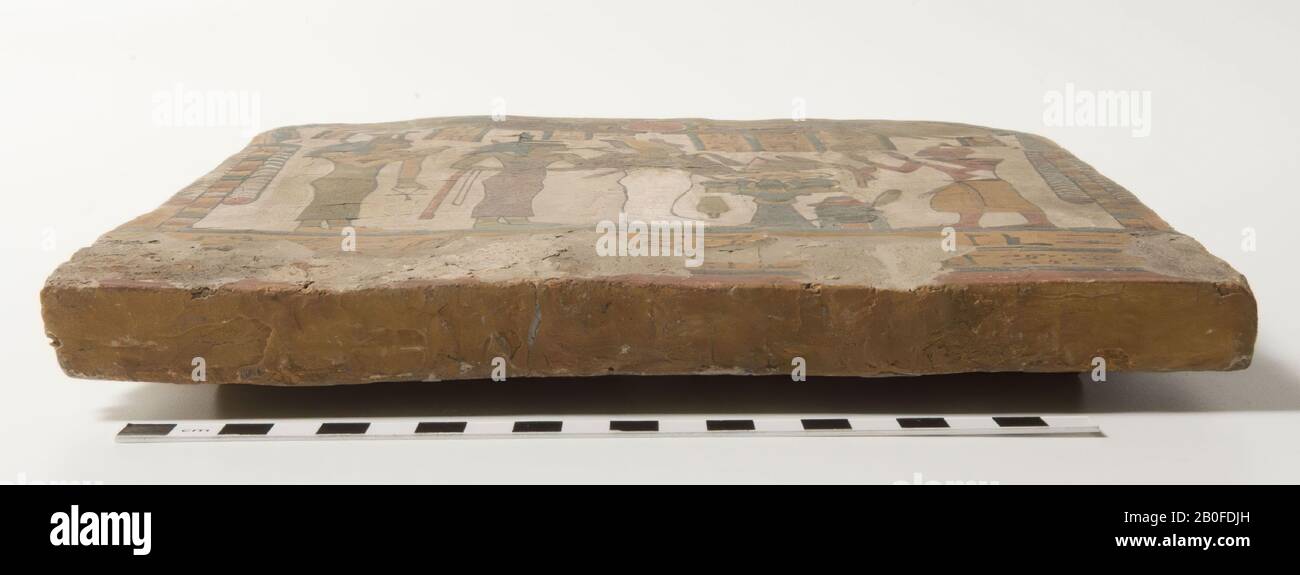 Djedchonsoe, funeral sign, wood, 26 x 26 cm, Late Period, 25th Dynasty -700 Stock Photohttps://www.alamy.com/image-license-details/?v=1https://www.alamy.com/djedchonsoe-funeral-sign-wood-26-x-26-cm-late-period-25th-dynasty-700-image344547353.html
Djedchonsoe, funeral sign, wood, 26 x 26 cm, Late Period, 25th Dynasty -700 Stock Photohttps://www.alamy.com/image-license-details/?v=1https://www.alamy.com/djedchonsoe-funeral-sign-wood-26-x-26-cm-late-period-25th-dynasty-700-image344547353.htmlRM2B0FDJH–Djedchonsoe, funeral sign, wood, 26 x 26 cm, Late Period, 25th Dynasty -700
![Taharka (Khure nefertem), King of Nubia and all Egypt, 690-664, 25th Dynasty.; Aethiopen. Dynastie XXV, 3. Barkal [Jebel Barkal]. Grosser Felsentempel, Ostwand der Vorhalle. Stock Photo Taharka (Khure nefertem), King of Nubia and all Egypt, 690-664, 25th Dynasty.; Aethiopen. Dynastie XXV, 3. Barkal [Jebel Barkal]. Grosser Felsentempel, Ostwand der Vorhalle. Stock Photo](https://c8.alamy.com/comp/2AA4BJ0/taharka-khure-nefertem-king-of-nubia-and-all-egypt-690-664-25th-dynasty-aethiopen-dynastie-xxv-3-barkal-jebel-barkal-grosser-felsentempel-ostwand-der-vorhalle-2AA4BJ0.jpg) Taharka (Khure nefertem), King of Nubia and all Egypt, 690-664, 25th Dynasty.; Aethiopen. Dynastie XXV, 3. Barkal [Jebel Barkal]. Grosser Felsentempel, Ostwand der Vorhalle. Stock Photohttps://www.alamy.com/image-license-details/?v=1https://www.alamy.com/taharka-khure-nefertem-king-of-nubia-and-all-egypt-690-664-25th-dynasty-aethiopen-dynastie-xxv-3-barkal-jebel-barkal-grosser-felsentempel-ostwand-der-vorhalle-image333240488.html
Taharka (Khure nefertem), King of Nubia and all Egypt, 690-664, 25th Dynasty.; Aethiopen. Dynastie XXV, 3. Barkal [Jebel Barkal]. Grosser Felsentempel, Ostwand der Vorhalle. Stock Photohttps://www.alamy.com/image-license-details/?v=1https://www.alamy.com/taharka-khure-nefertem-king-of-nubia-and-all-egypt-690-664-25th-dynasty-aethiopen-dynastie-xxv-3-barkal-jebel-barkal-grosser-felsentempel-ostwand-der-vorhalle-image333240488.htmlRM2AA4BJ0–Taharka (Khure nefertem), King of Nubia and all Egypt, 690-664, 25th Dynasty.; Aethiopen. Dynastie XXV, 3. Barkal [Jebel Barkal]. Grosser Felsentempel, Ostwand der Vorhalle.
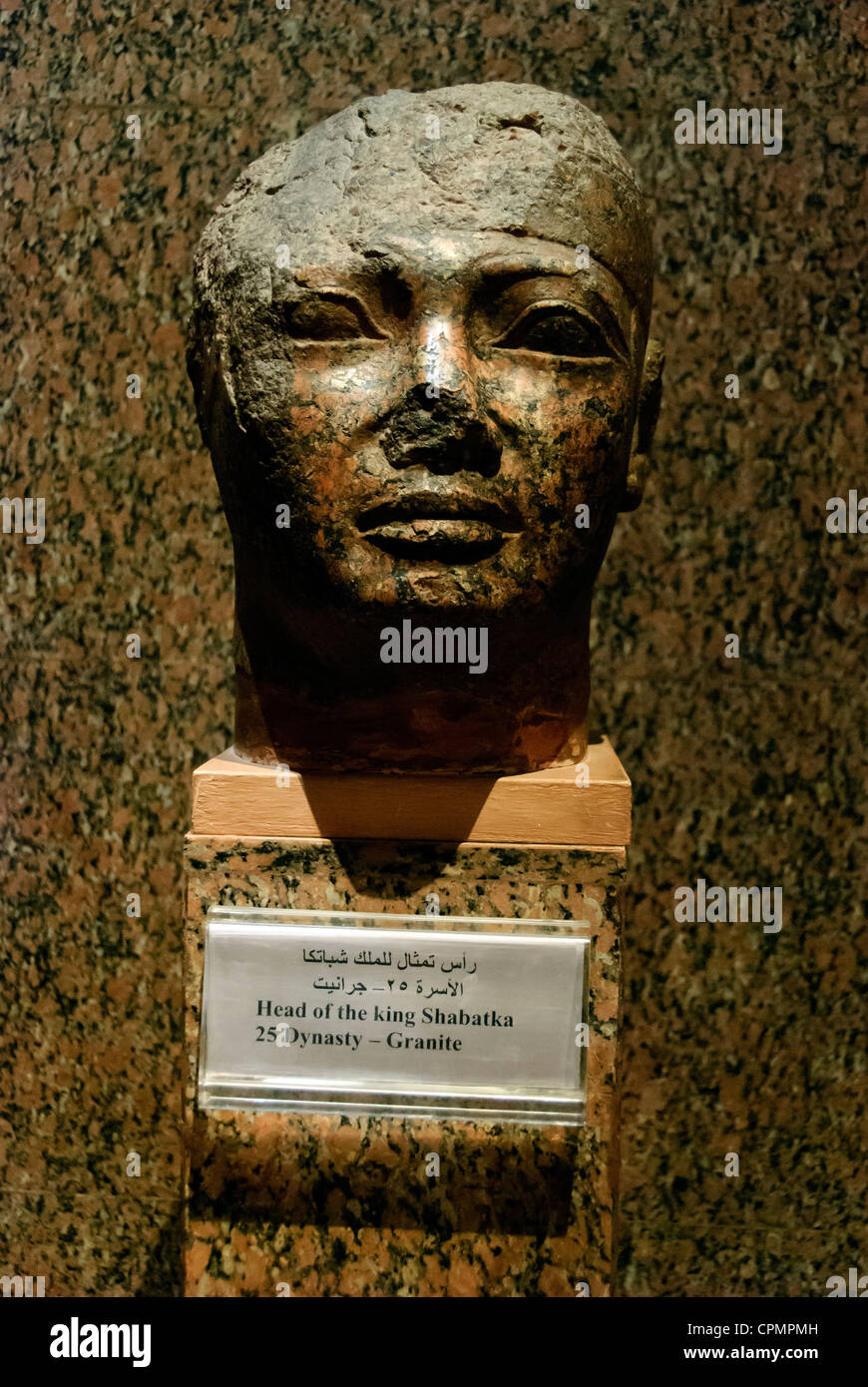 Head of the king Shabatka, 25th Dynasty - Granite - Nubian Museum - Aswan, Upper Egypt Stock Photohttps://www.alamy.com/image-license-details/?v=1https://www.alamy.com/stock-photo-head-of-the-king-shabatka-25th-dynasty-granite-nubian-museum-aswan-48400033.html
Head of the king Shabatka, 25th Dynasty - Granite - Nubian Museum - Aswan, Upper Egypt Stock Photohttps://www.alamy.com/image-license-details/?v=1https://www.alamy.com/stock-photo-head-of-the-king-shabatka-25th-dynasty-granite-nubian-museum-aswan-48400033.htmlRMCPMPMH–Head of the king Shabatka, 25th Dynasty - Granite - Nubian Museum - Aswan, Upper Egypt
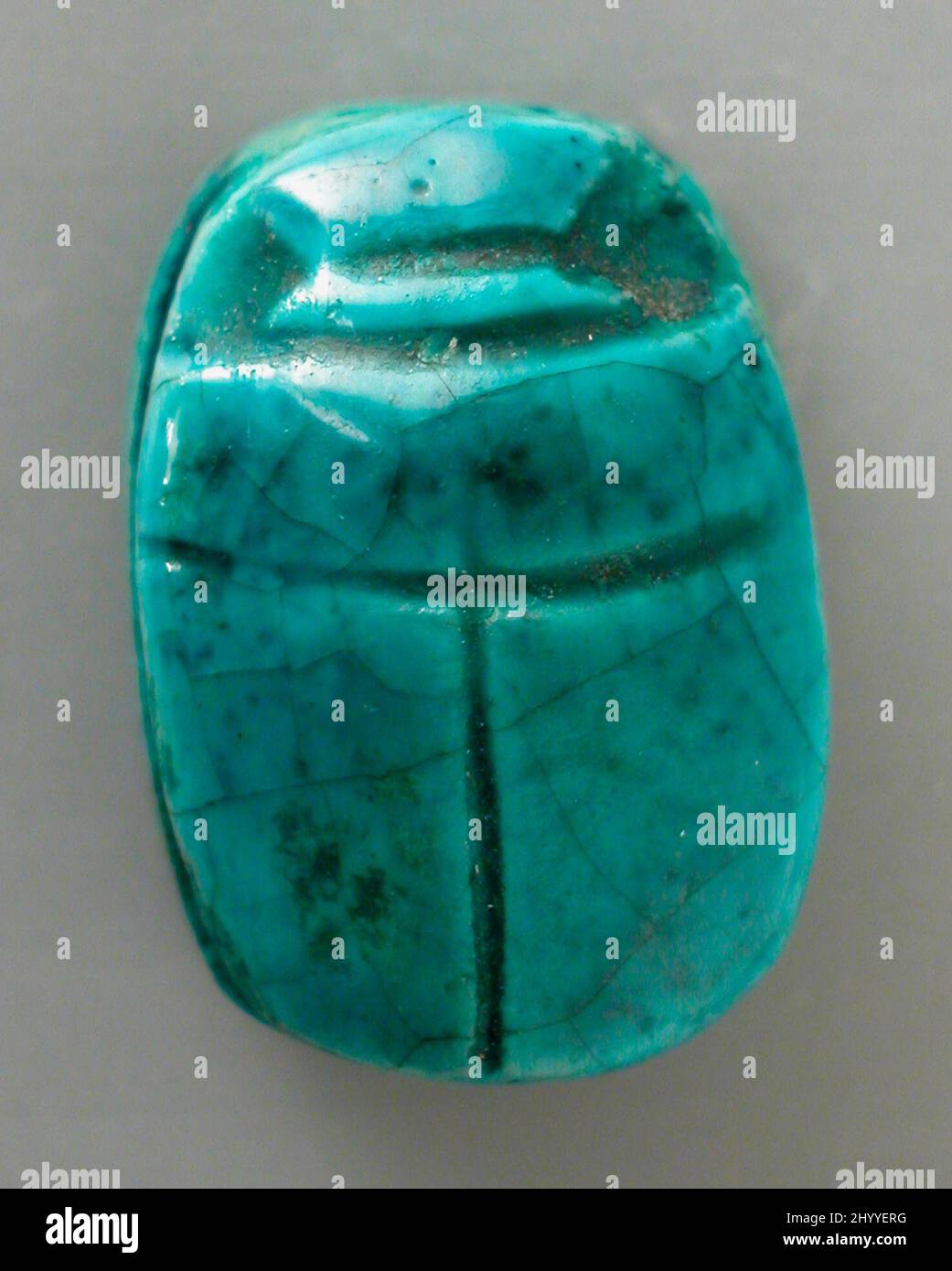 Green-Blue Faience Scarab. Egypt, 12th - 25th Dynasty (1991 - 525 BCE). Sculpture. Blue-green faience Stock Photohttps://www.alamy.com/image-license-details/?v=1https://www.alamy.com/green-blue-faience-scarab-egypt-12th-25th-dynasty-1991-525-bce-sculpture-blue-green-faience-image464669620.html
Green-Blue Faience Scarab. Egypt, 12th - 25th Dynasty (1991 - 525 BCE). Sculpture. Blue-green faience Stock Photohttps://www.alamy.com/image-license-details/?v=1https://www.alamy.com/green-blue-faience-scarab-egypt-12th-25th-dynasty-1991-525-bce-sculpture-blue-green-faience-image464669620.htmlRM2HYYERG–Green-Blue Faience Scarab. Egypt, 12th - 25th Dynasty (1991 - 525 BCE). Sculpture. Blue-green faience
 Necklace with three ram heads crowned with a sun disk. Gold and turquoise. Kushite Period. 25th Dynasty (715-332 BC). Egyptian museum, Barcelona, Cata Stock Photohttps://www.alamy.com/image-license-details/?v=1https://www.alamy.com/necklace-with-three-ram-heads-crowned-with-a-sun-disk-gold-and-turquoise-kushite-period-25th-dynasty-715-332-bc-egyptian-museum-barcelona-cata-image501546835.html
Necklace with three ram heads crowned with a sun disk. Gold and turquoise. Kushite Period. 25th Dynasty (715-332 BC). Egyptian museum, Barcelona, Cata Stock Photohttps://www.alamy.com/image-license-details/?v=1https://www.alamy.com/necklace-with-three-ram-heads-crowned-with-a-sun-disk-gold-and-turquoise-kushite-period-25th-dynasty-715-332-bc-egyptian-museum-barcelona-cata-image501546835.htmlRM2M3YC2Y–Necklace with three ram heads crowned with a sun disk. Gold and turquoise. Kushite Period. 25th Dynasty (715-332 BC). Egyptian museum, Barcelona, Cata
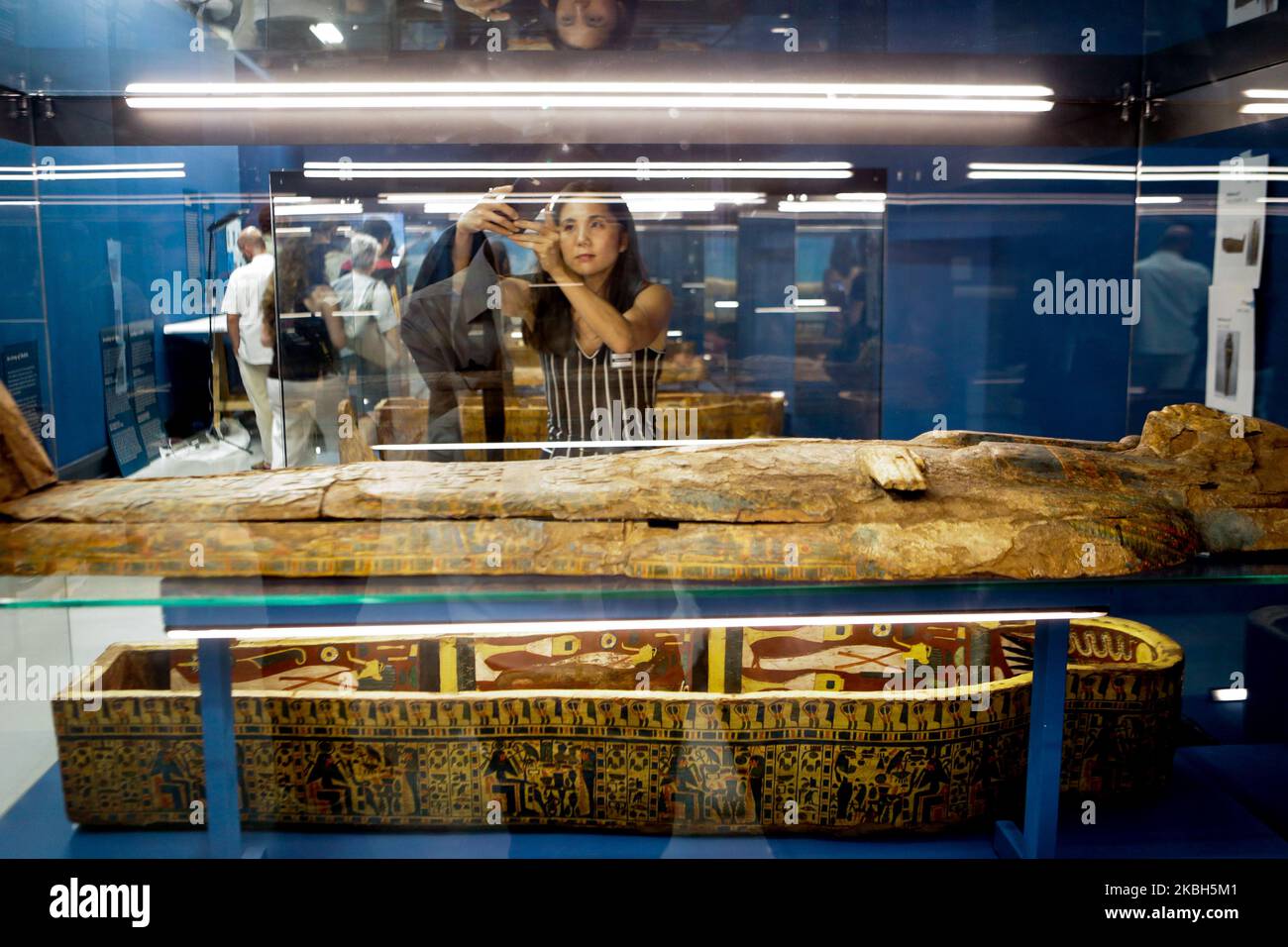 Part of the collection of the exhibition Egito Antigo that had opened on February 19, the Banco do Brasil Cultural Center (CCBB) in Sao Paulo, Brazil, on February 17, 2020. There are more than 140 items on display, including the Tararo mummy dated from 700 B.C. The woman was a member of the 25th dynasty, which became known as the Nubian Dynasty or Black Pharaohs. (Photo by Dario Oliveira/NurPhoto) Stock Photohttps://www.alamy.com/image-license-details/?v=1https://www.alamy.com/part-of-the-collection-of-the-exhibition-egito-antigo-that-had-opened-on-february-19-the-banco-do-brasil-cultural-center-ccbb-in-sao-paulo-brazil-on-february-17-2020-there-are-more-than-140-items-on-display-including-the-tararo-mummy-dated-from-700-bc-the-woman-was-a-member-of-the-25th-dynasty-which-became-known-as-the-nubian-dynasty-or-black-pharaohs-photo-by-dario-oliveiranurphoto-image489029185.html
Part of the collection of the exhibition Egito Antigo that had opened on February 19, the Banco do Brasil Cultural Center (CCBB) in Sao Paulo, Brazil, on February 17, 2020. There are more than 140 items on display, including the Tararo mummy dated from 700 B.C. The woman was a member of the 25th dynasty, which became known as the Nubian Dynasty or Black Pharaohs. (Photo by Dario Oliveira/NurPhoto) Stock Photohttps://www.alamy.com/image-license-details/?v=1https://www.alamy.com/part-of-the-collection-of-the-exhibition-egito-antigo-that-had-opened-on-february-19-the-banco-do-brasil-cultural-center-ccbb-in-sao-paulo-brazil-on-february-17-2020-there-are-more-than-140-items-on-display-including-the-tararo-mummy-dated-from-700-bc-the-woman-was-a-member-of-the-25th-dynasty-which-became-known-as-the-nubian-dynasty-or-black-pharaohs-photo-by-dario-oliveiranurphoto-image489029185.htmlRM2KBH5M1–Part of the collection of the exhibition Egito Antigo that had opened on February 19, the Banco do Brasil Cultural Center (CCBB) in Sao Paulo, Brazil, on February 17, 2020. There are more than 140 items on display, including the Tararo mummy dated from 700 B.C. The woman was a member of the 25th dynasty, which became known as the Nubian Dynasty or Black Pharaohs. (Photo by Dario Oliveira/NurPhoto)
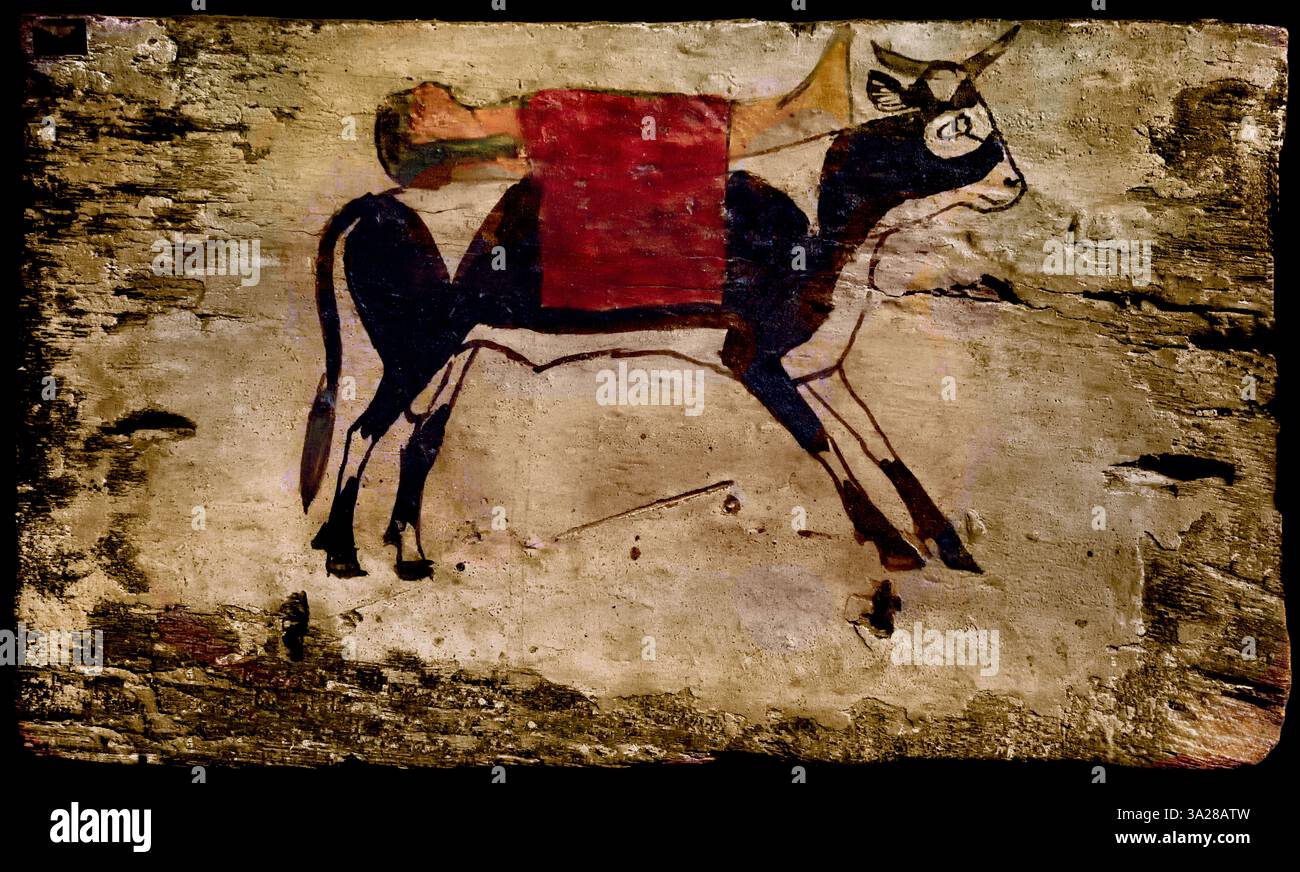 Footboard of a Coffin , 25th Dynasty , tomb equipment, 19 x 33 cm, Animal , Cow, Egypt , Stock Photohttps://www.alamy.com/image-license-details/?v=1https://www.alamy.com/footboard-of-a-coffin-25th-dynasty-tomb-equipment-19-x-33-cm-animal-cow-egypt-image655407449.html
Footboard of a Coffin , 25th Dynasty , tomb equipment, 19 x 33 cm, Animal , Cow, Egypt , Stock Photohttps://www.alamy.com/image-license-details/?v=1https://www.alamy.com/footboard-of-a-coffin-25th-dynasty-tomb-equipment-19-x-33-cm-animal-cow-egypt-image655407449.htmlRM3A28ATW–Footboard of a Coffin , 25th Dynasty , tomb equipment, 19 x 33 cm, Animal , Cow, Egypt ,
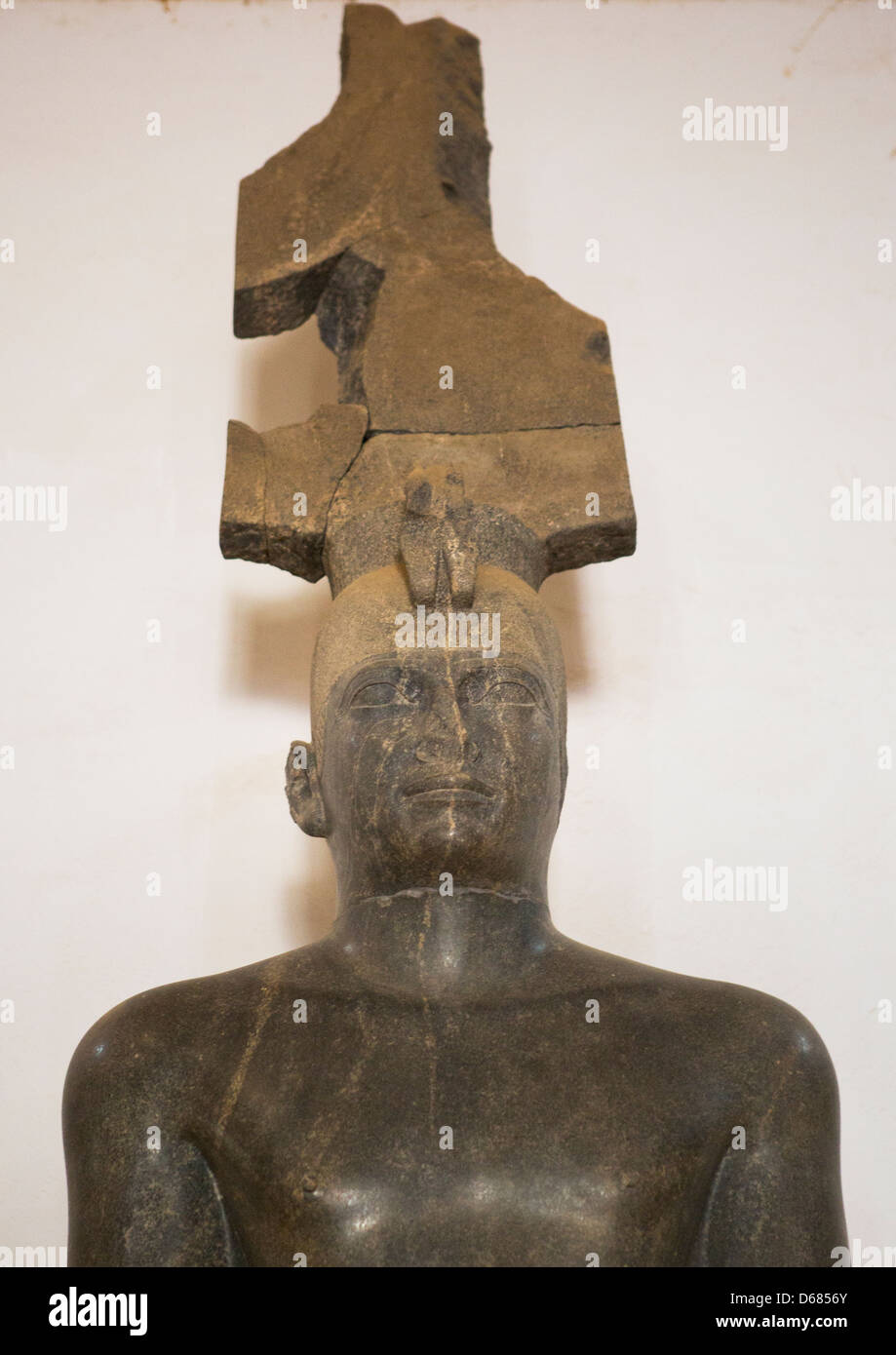 King Tharga, Nubian Pharaoh Of The 25Th Dynasty In The National Museum, Khartoum, Sudan Stock Photohttps://www.alamy.com/image-license-details/?v=1https://www.alamy.com/stock-photo-king-tharga-nubian-pharaoh-of-the-25th-dynasty-in-the-national-museum-55498771.html
King Tharga, Nubian Pharaoh Of The 25Th Dynasty In The National Museum, Khartoum, Sudan Stock Photohttps://www.alamy.com/image-license-details/?v=1https://www.alamy.com/stock-photo-king-tharga-nubian-pharaoh-of-the-25th-dynasty-in-the-national-museum-55498771.htmlRMD6856Y–King Tharga, Nubian Pharaoh Of The 25Th Dynasty In The National Museum, Khartoum, Sudan
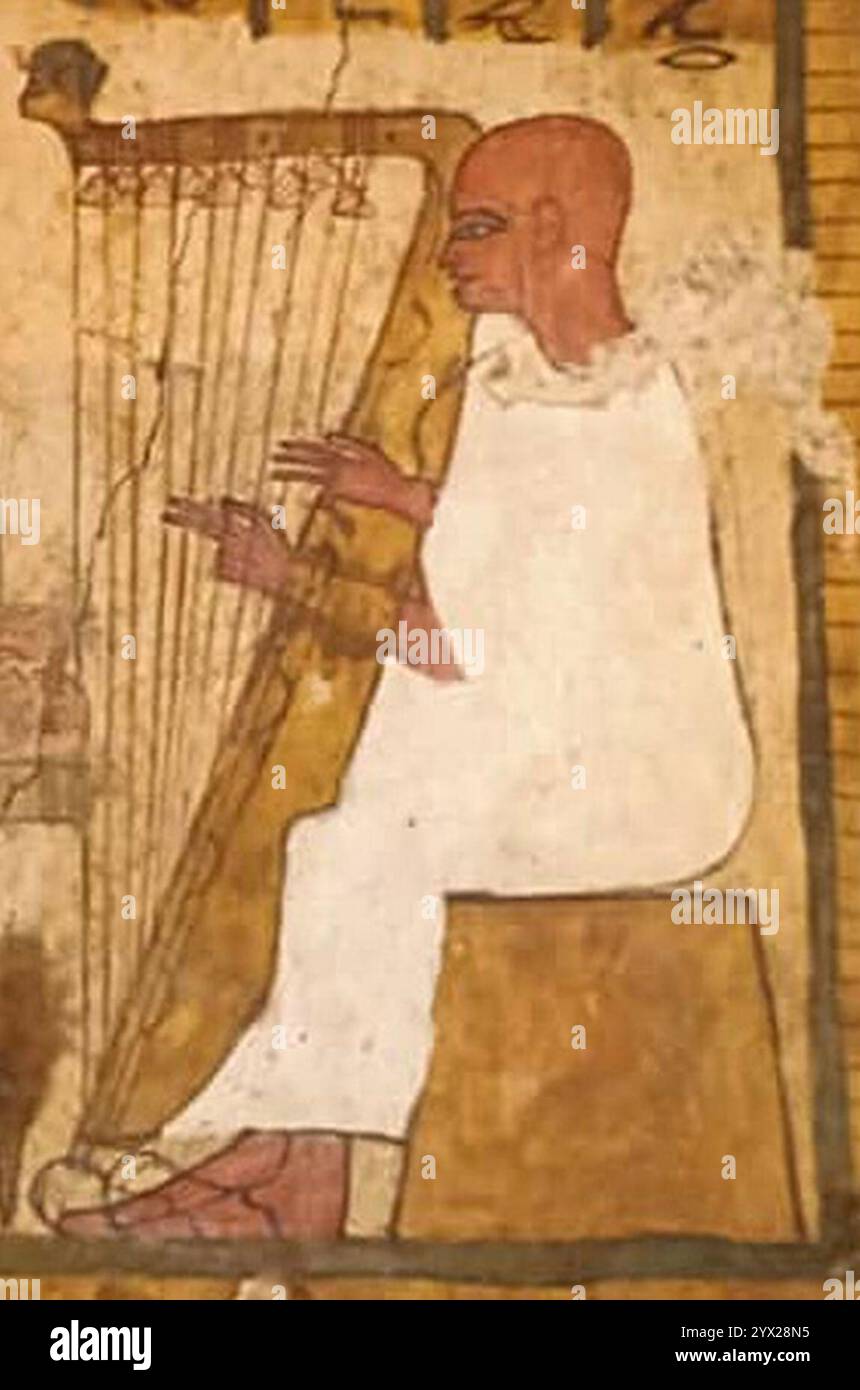 Crooked harp or 7-shaped harp, 25th dynasty. Stock Photohttps://www.alamy.com/image-license-details/?v=1https://www.alamy.com/crooked-harp-or-7-shaped-harp-25th-dynasty-image635605073.html
Crooked harp or 7-shaped harp, 25th dynasty. Stock Photohttps://www.alamy.com/image-license-details/?v=1https://www.alamy.com/crooked-harp-or-7-shaped-harp-25th-dynasty-image635605073.htmlRM2YX28N5–Crooked harp or 7-shaped harp, 25th dynasty.
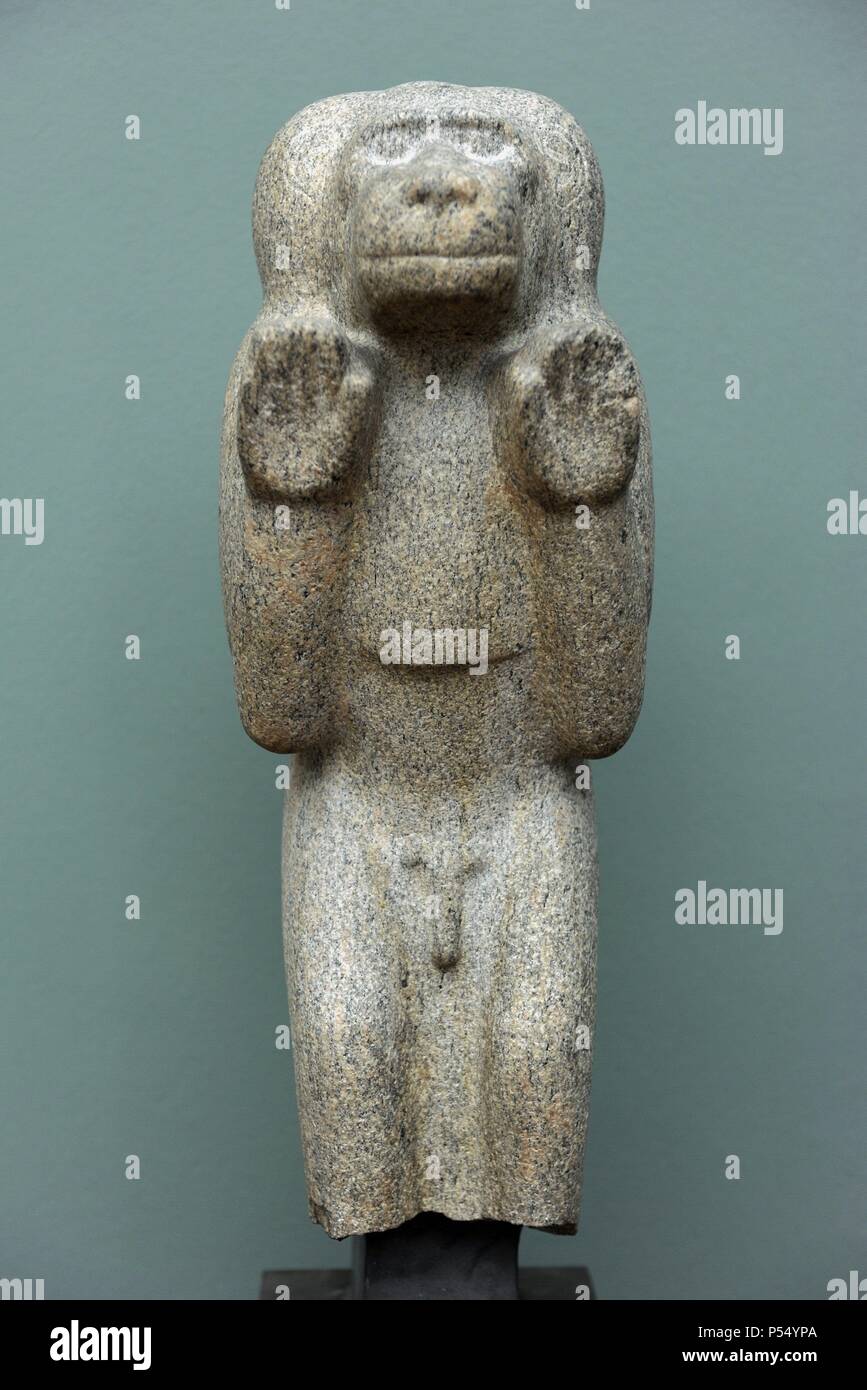 Statue of an baboon. Granite. From Kawa. Reign of Taharka. C. 690-664 BC. 25th Dynasty. Ny Carlsberg Glyptotek. Copenhagen. Denmark. Stock Photohttps://www.alamy.com/image-license-details/?v=1https://www.alamy.com/statue-of-an-baboon-granite-from-kawa-reign-of-taharka-c-690-664-bc-25th-dynasty-ny-carlsberg-glyptotek-copenhagen-denmark-image209707298.html
Statue of an baboon. Granite. From Kawa. Reign of Taharka. C. 690-664 BC. 25th Dynasty. Ny Carlsberg Glyptotek. Copenhagen. Denmark. Stock Photohttps://www.alamy.com/image-license-details/?v=1https://www.alamy.com/statue-of-an-baboon-granite-from-kawa-reign-of-taharka-c-690-664-bc-25th-dynasty-ny-carlsberg-glyptotek-copenhagen-denmark-image209707298.htmlRMP54YPA–Statue of an baboon. Granite. From Kawa. Reign of Taharka. C. 690-664 BC. 25th Dynasty. Ny Carlsberg Glyptotek. Copenhagen. Denmark.
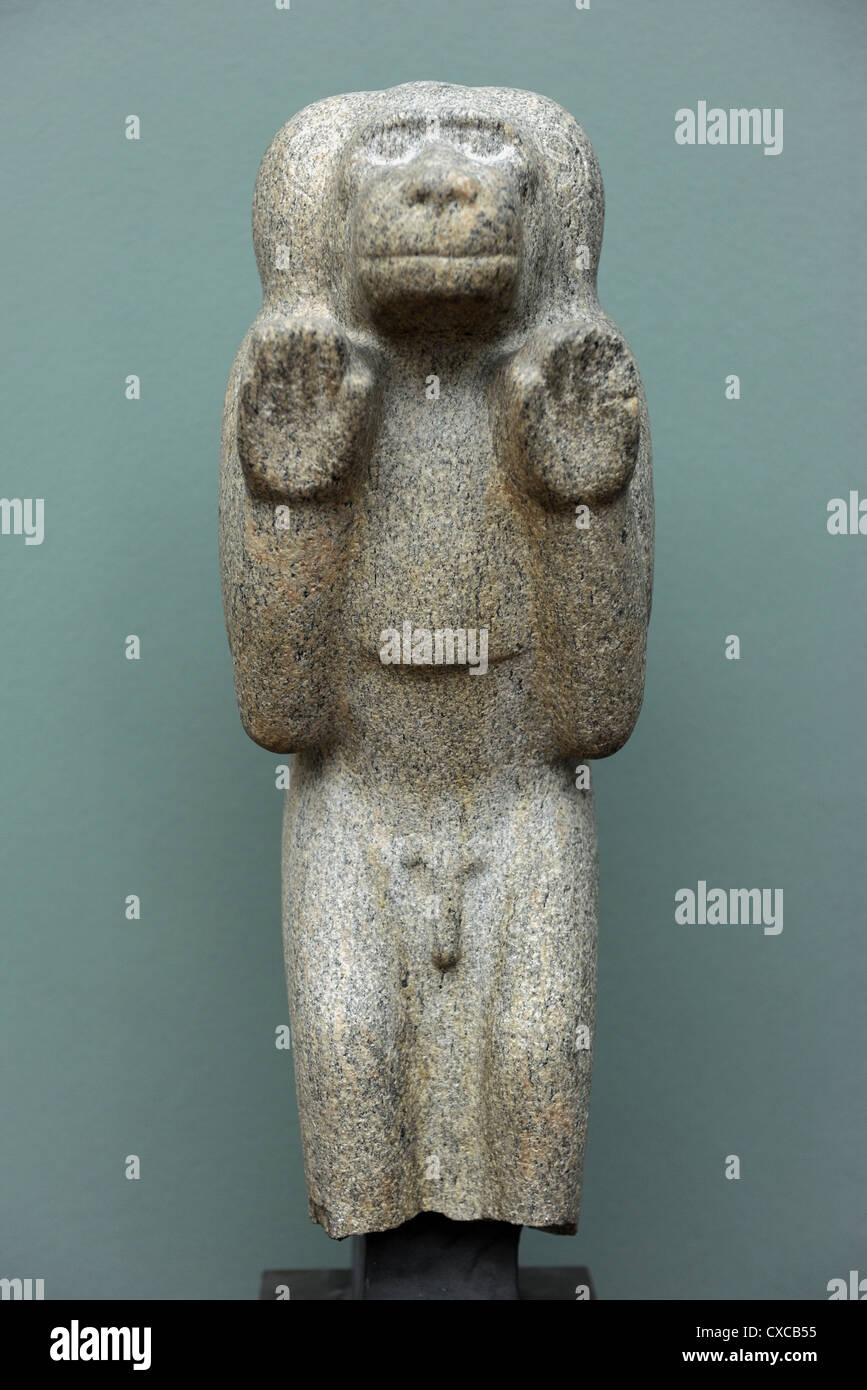 Statue of an baboon. Granite. From Kawa. Reign of Taharka. C. 690-664 BC. 25th Dynasty. Ny Carlsberg Glyptotek. Stock Photohttps://www.alamy.com/image-license-details/?v=1https://www.alamy.com/stock-photo-statue-of-an-baboon-granite-from-kawa-reign-of-taharka-c-690-664-bc-50673985.html
Statue of an baboon. Granite. From Kawa. Reign of Taharka. C. 690-664 BC. 25th Dynasty. Ny Carlsberg Glyptotek. Stock Photohttps://www.alamy.com/image-license-details/?v=1https://www.alamy.com/stock-photo-statue-of-an-baboon-granite-from-kawa-reign-of-taharka-c-690-664-bc-50673985.htmlRMCXCB55–Statue of an baboon. Granite. From Kawa. Reign of Taharka. C. 690-664 BC. 25th Dynasty. Ny Carlsberg Glyptotek.
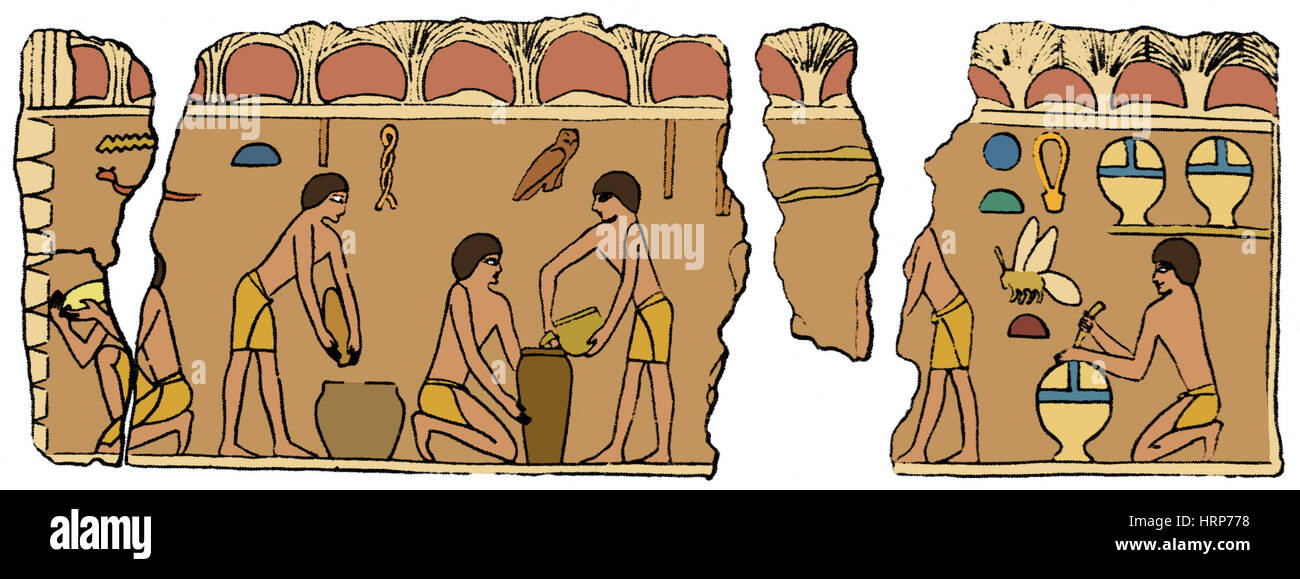 Egyptian Beekeepers, 25th Century BC Stock Photohttps://www.alamy.com/image-license-details/?v=1https://www.alamy.com/stock-photo-egyptian-beekeepers-25th-century-bc-135098300.html
Egyptian Beekeepers, 25th Century BC Stock Photohttps://www.alamy.com/image-license-details/?v=1https://www.alamy.com/stock-photo-egyptian-beekeepers-25th-century-bc-135098300.htmlRMHRP778–Egyptian Beekeepers, 25th Century BC
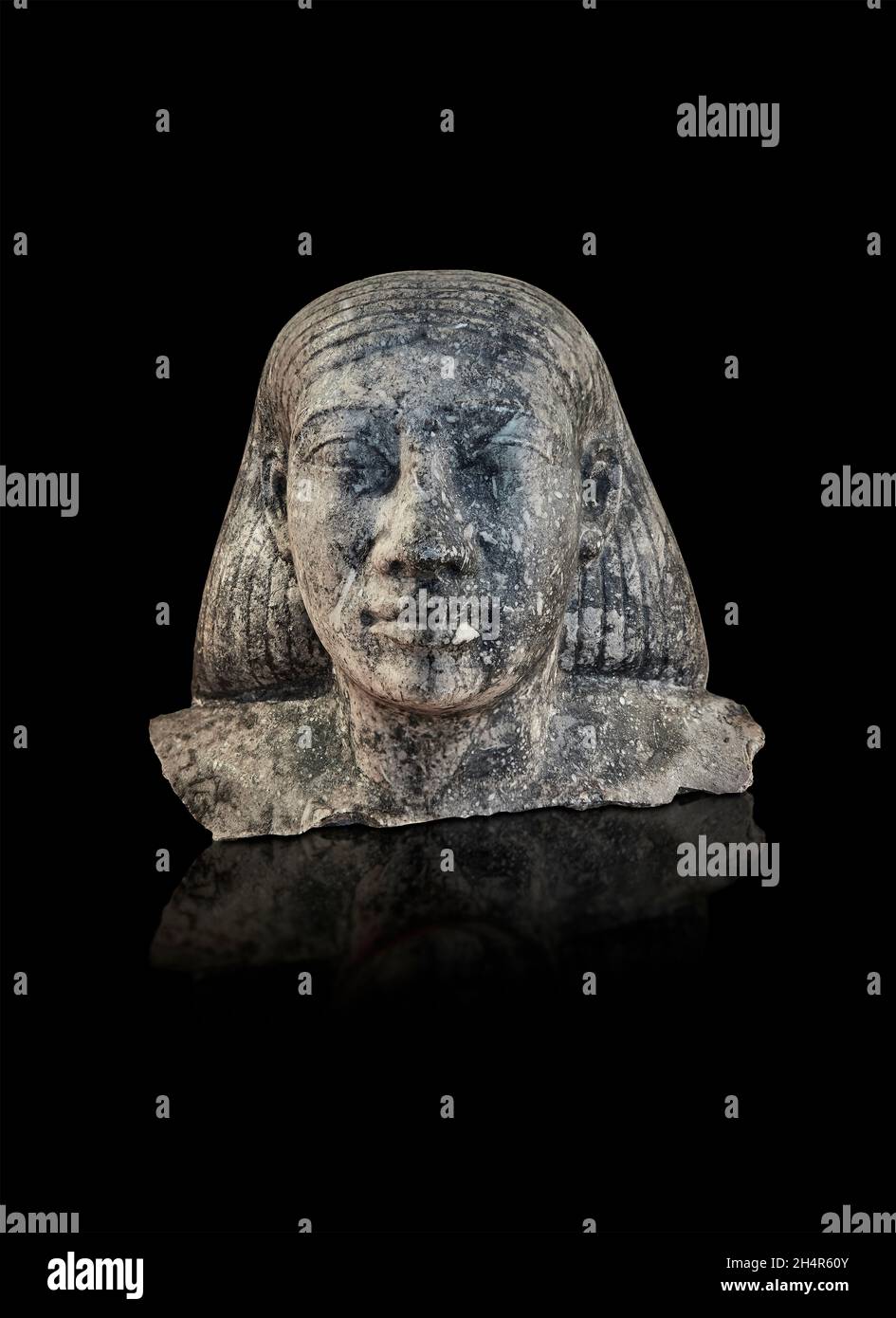 Egyptian statue sculpture of a mans head, 650-600 BC, 25th dynasty, . Louvre Museum . Stock Photohttps://www.alamy.com/image-license-details/?v=1https://www.alamy.com/egyptian-statue-sculpture-of-a-mans-head-650-600-bc-25th-dynasty-louvre-museum-image450437819.html
Egyptian statue sculpture of a mans head, 650-600 BC, 25th dynasty, . Louvre Museum . Stock Photohttps://www.alamy.com/image-license-details/?v=1https://www.alamy.com/egyptian-statue-sculpture-of-a-mans-head-650-600-bc-25th-dynasty-louvre-museum-image450437819.htmlRF2H4R60Y–Egyptian statue sculpture of a mans head, 650-600 BC, 25th dynasty, . Louvre Museum .
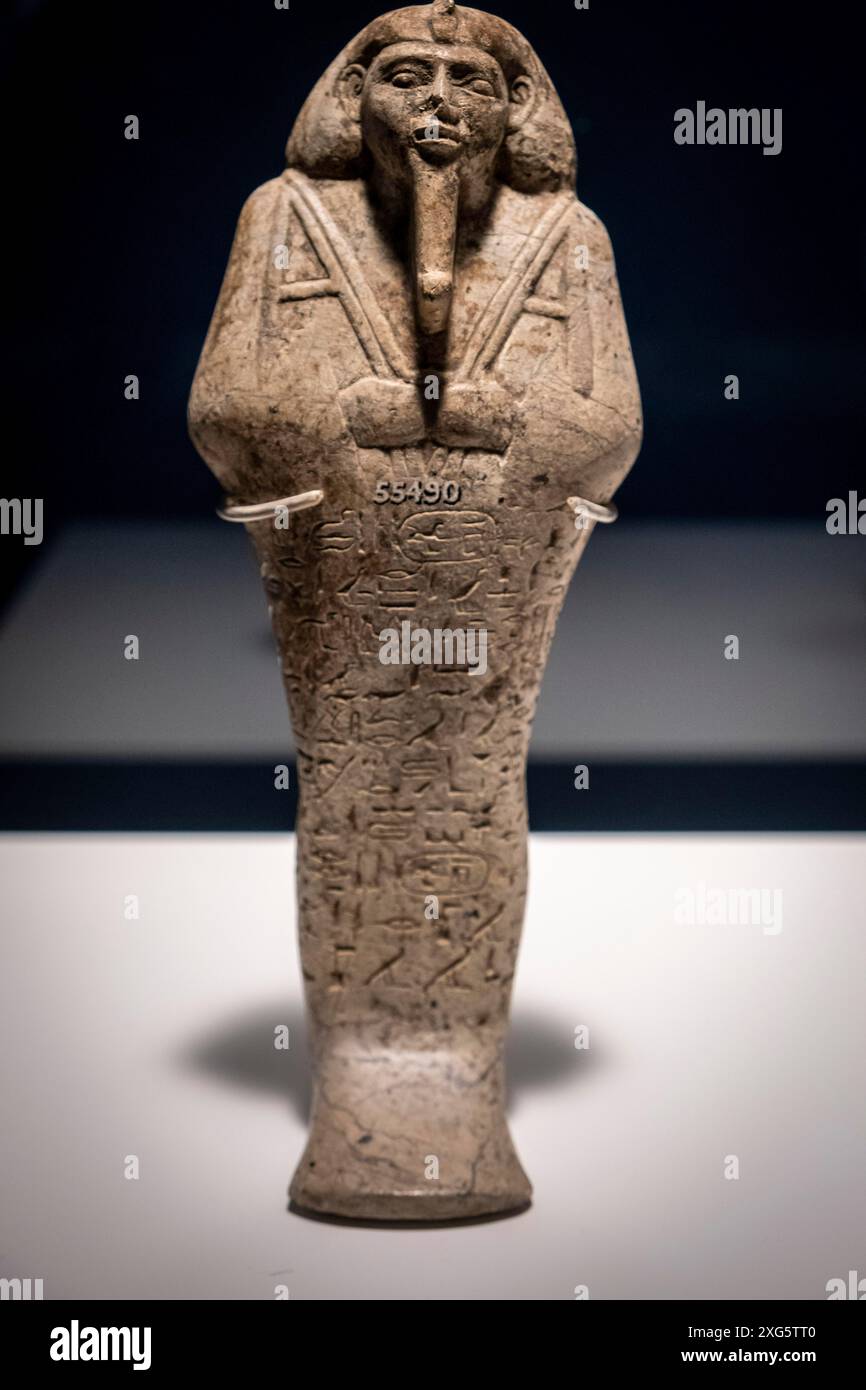 Ushebti of pharaoh Taharqa, serpentine, 25th dynasty, 690-664 BC, tomb of Taharqa, Nuri, Sudan, collection of the British Museum Stock Photohttps://www.alamy.com/image-license-details/?v=1https://www.alamy.com/ushebti-of-pharaoh-taharqa-serpentine-25th-dynasty-690-664-bc-tomb-of-taharqa-nuri-sudan-collection-of-the-british-museum-image612326624.html
Ushebti of pharaoh Taharqa, serpentine, 25th dynasty, 690-664 BC, tomb of Taharqa, Nuri, Sudan, collection of the British Museum Stock Photohttps://www.alamy.com/image-license-details/?v=1https://www.alamy.com/ushebti-of-pharaoh-taharqa-serpentine-25th-dynasty-690-664-bc-tomb-of-taharqa-nuri-sudan-collection-of-the-british-museum-image612326624.htmlRF2XG5TT0–Ushebti of pharaoh Taharqa, serpentine, 25th dynasty, 690-664 BC, tomb of Taharqa, Nuri, Sudan, collection of the British Museum
RF2F5BY0J–Facial reconstruction of the Nespamedu mummy. Platinum silicone. Author Juan Villa Herrero, 2016
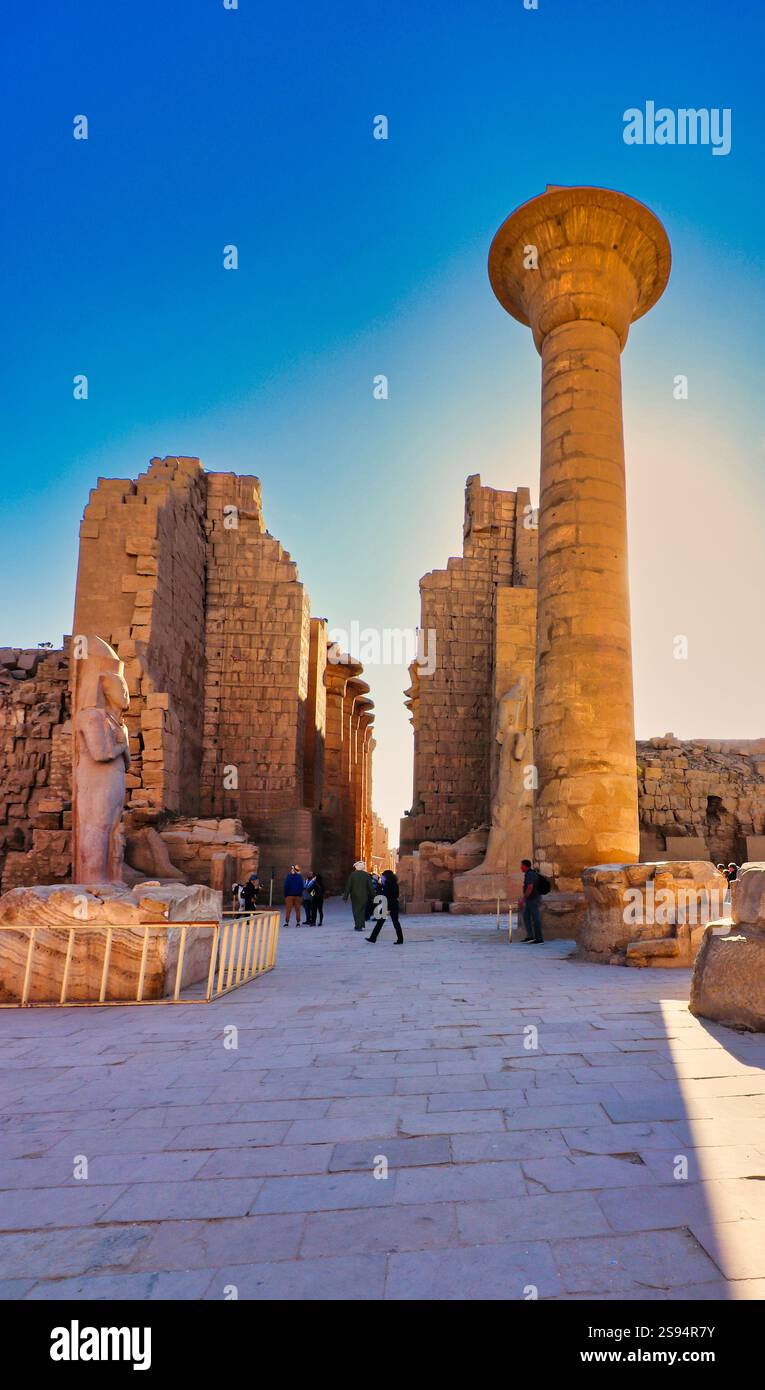 Great Column of Taharqa,Nubian Pharoah of 25th dynasty,near the 2nd entrance of the hypostyle gallery at Karnak temple complex,Luxor,Egypt Stock Photohttps://www.alamy.com/image-license-details/?v=1https://www.alamy.com/great-column-of-taharqanubian-pharoah-of-25th-dynastynear-the-2nd-entrance-of-the-hypostyle-gallery-at-karnak-temple-complexluxoregypt-image642421583.html
Great Column of Taharqa,Nubian Pharoah of 25th dynasty,near the 2nd entrance of the hypostyle gallery at Karnak temple complex,Luxor,Egypt Stock Photohttps://www.alamy.com/image-license-details/?v=1https://www.alamy.com/great-column-of-taharqanubian-pharoah-of-25th-dynastynear-the-2nd-entrance-of-the-hypostyle-gallery-at-karnak-temple-complexluxoregypt-image642421583.htmlRF2S94R7Y–Great Column of Taharqa,Nubian Pharoah of 25th dynasty,near the 2nd entrance of the hypostyle gallery at Karnak temple complex,Luxor,Egypt
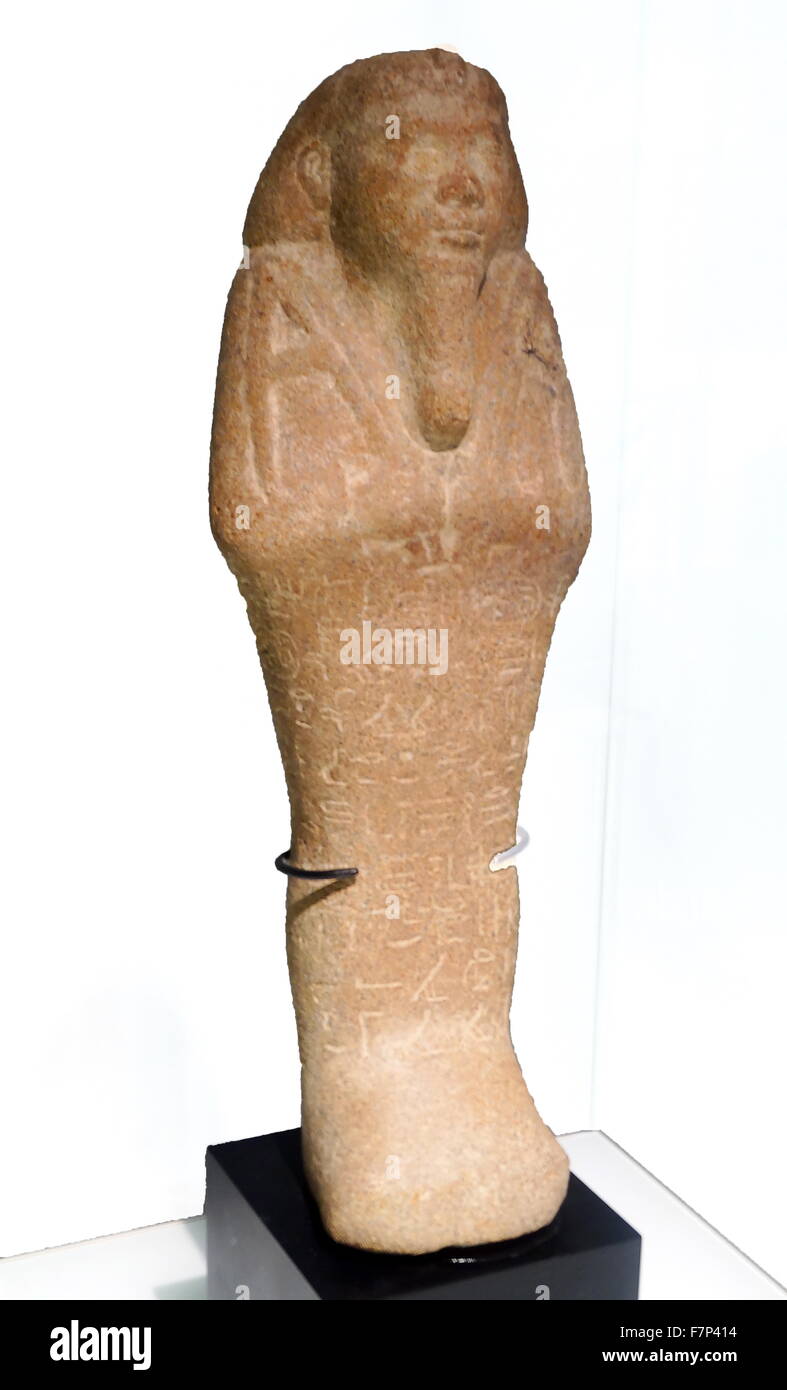 Ushabti of Taharqa. Granite. 25th Dynasty, reign of (690-664 B.C.). Taharqa was the most important of the so-called black pharaohs. His shabtis, found in the necropolis of Nuri, have a special version of the Chapter VI of the Book of the Dead Stock Photohttps://www.alamy.com/image-license-details/?v=1https://www.alamy.com/stock-photo-ushabti-of-taharqa-granite-25th-dynasty-reign-of-690-664-bc-taharqa-90840544.html
Ushabti of Taharqa. Granite. 25th Dynasty, reign of (690-664 B.C.). Taharqa was the most important of the so-called black pharaohs. His shabtis, found in the necropolis of Nuri, have a special version of the Chapter VI of the Book of the Dead Stock Photohttps://www.alamy.com/image-license-details/?v=1https://www.alamy.com/stock-photo-ushabti-of-taharqa-granite-25th-dynasty-reign-of-690-664-bc-taharqa-90840544.htmlRMF7P414–Ushabti of Taharqa. Granite. 25th Dynasty, reign of (690-664 B.C.). Taharqa was the most important of the so-called black pharaohs. His shabtis, found in the necropolis of Nuri, have a special version of the Chapter VI of the Book of the Dead
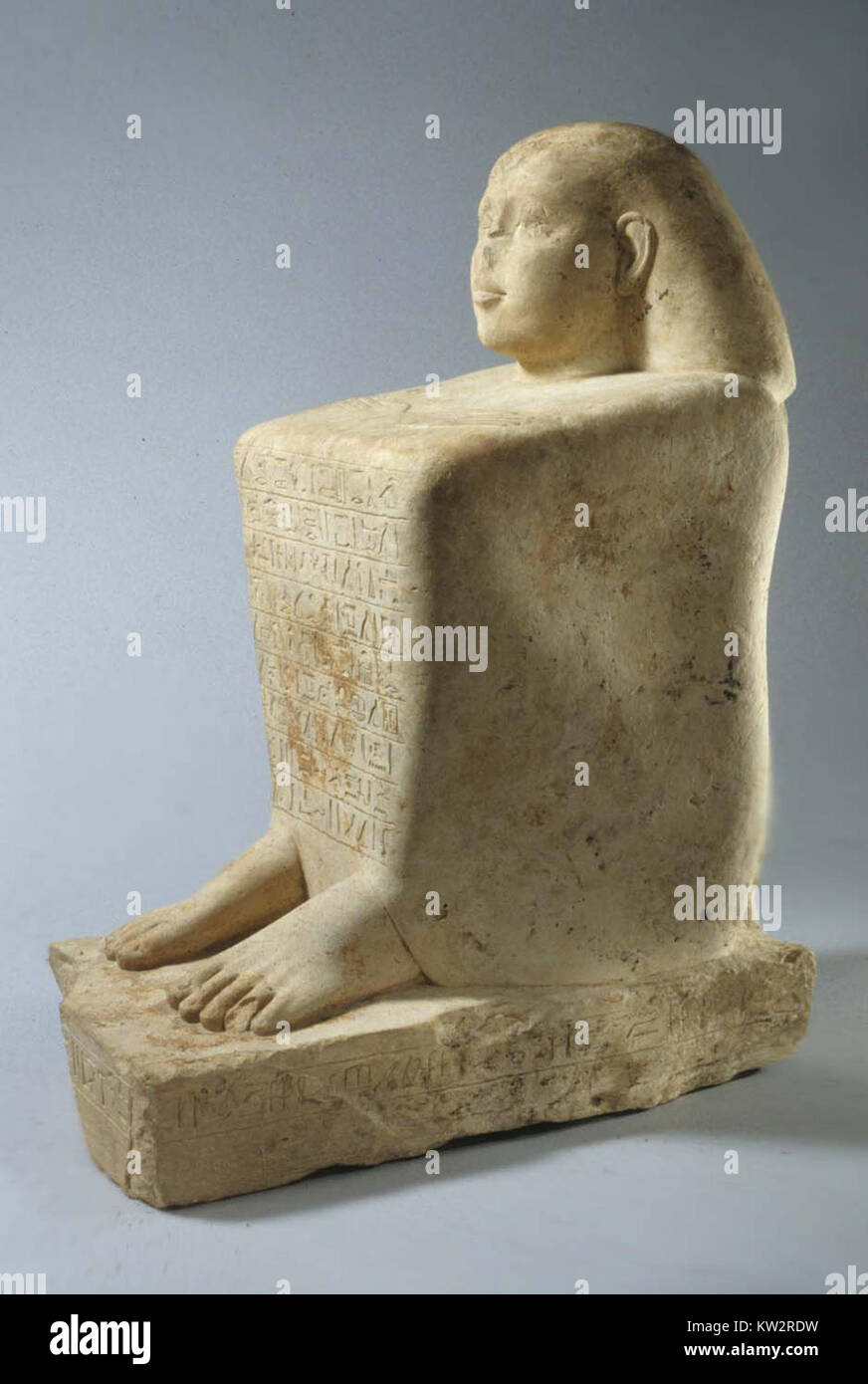 The Block Statue of Ankhwennefer, from ancient Egypt, represents a seated figure from the 25th Dynasty. Known for its detailed carving, the statue depicts the high-ranking official Ankhwennefer in a traditional Egyptian pose, serving as both an artistic and religious artifact. Stock Photohttps://www.alamy.com/image-license-details/?v=1https://www.alamy.com/stock-photo-the-block-statue-of-ankhwennefer-from-ancient-egypt-represents-a-seated-170322037.html
The Block Statue of Ankhwennefer, from ancient Egypt, represents a seated figure from the 25th Dynasty. Known for its detailed carving, the statue depicts the high-ranking official Ankhwennefer in a traditional Egyptian pose, serving as both an artistic and religious artifact. Stock Photohttps://www.alamy.com/image-license-details/?v=1https://www.alamy.com/stock-photo-the-block-statue-of-ankhwennefer-from-ancient-egypt-represents-a-seated-170322037.htmlRMKW2RDW–The Block Statue of Ankhwennefer, from ancient Egypt, represents a seated figure from the 25th Dynasty. Known for its detailed carving, the statue depicts the high-ranking official Ankhwennefer in a traditional Egyptian pose, serving as both an artistic and religious artifact.
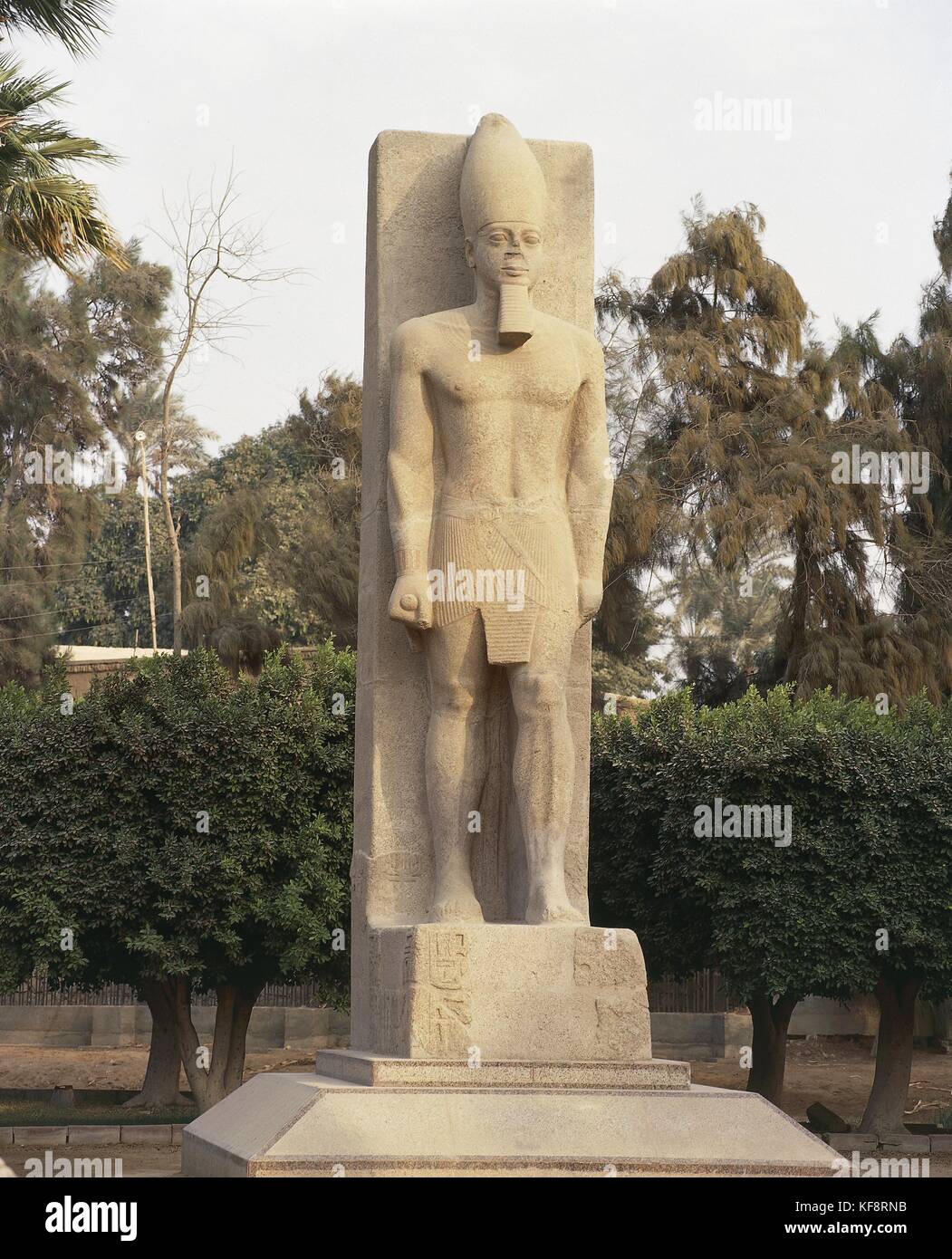 Egypt, Cairo, Ancient Memphis (UNESCO World Heritage List, 1979). Statue of Pharaoh king, 25th Dynasty, in temple of Ptah Stock Photohttps://www.alamy.com/image-license-details/?v=1https://www.alamy.com/stock-image-egypt-cairo-ancient-memphis-unesco-world-heritage-list-1979-statue-164307399.html
Egypt, Cairo, Ancient Memphis (UNESCO World Heritage List, 1979). Statue of Pharaoh king, 25th Dynasty, in temple of Ptah Stock Photohttps://www.alamy.com/image-license-details/?v=1https://www.alamy.com/stock-image-egypt-cairo-ancient-memphis-unesco-world-heritage-list-1979-statue-164307399.htmlRFKF8RNB–Egypt, Cairo, Ancient Memphis (UNESCO World Heritage List, 1979). Statue of Pharaoh king, 25th Dynasty, in temple of Ptah
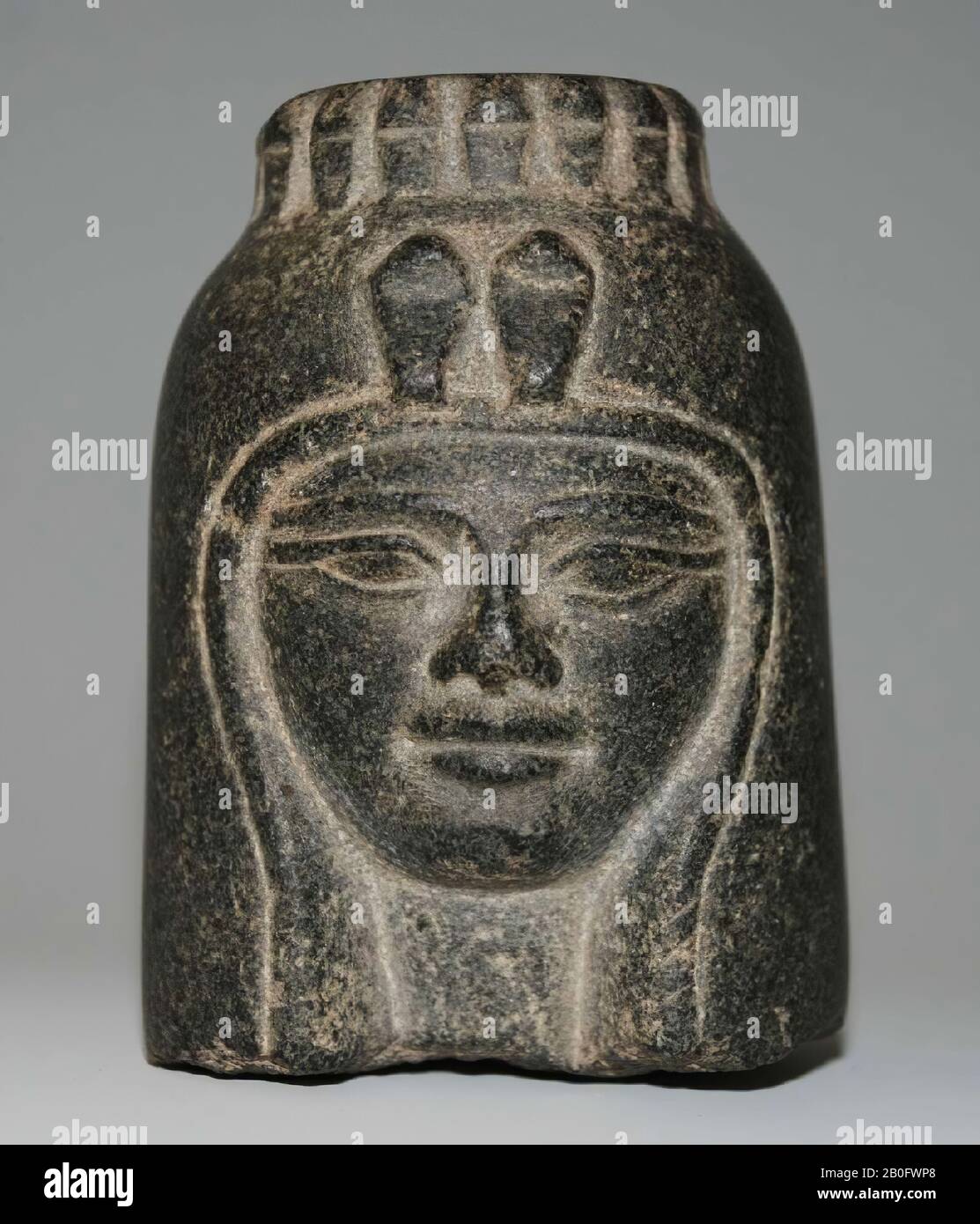 Isis, head, votive statue, granite (gray), 9 cm, Late Period, 25th Dynasty, Egypt Stock Photohttps://www.alamy.com/image-license-details/?v=1https://www.alamy.com/isis-head-votive-statue-granite-gray-9-cm-late-period-25th-dynasty-egypt-image344556864.html
Isis, head, votive statue, granite (gray), 9 cm, Late Period, 25th Dynasty, Egypt Stock Photohttps://www.alamy.com/image-license-details/?v=1https://www.alamy.com/isis-head-votive-statue-granite-gray-9-cm-late-period-25th-dynasty-egypt-image344556864.htmlRM2B0FWP8–Isis, head, votive statue, granite (gray), 9 cm, Late Period, 25th Dynasty, Egypt
![Altar of Taharka. / Taharka (Khure nefertem), King of Nubia and all Egypt, 690-664, 25th Dynasty.; Aethiopen. Dynastie XXV, 3. Barkal [Jebel Barkal]. Altar im grossen Tempel. Stock Photo Altar of Taharka. / Taharka (Khure nefertem), King of Nubia and all Egypt, 690-664, 25th Dynasty.; Aethiopen. Dynastie XXV, 3. Barkal [Jebel Barkal]. Altar im grossen Tempel. Stock Photo](https://c8.alamy.com/comp/2AA4BHX/altar-of-taharka-taharka-khure-nefertem-king-of-nubia-and-all-egypt-690-664-25th-dynasty-aethiopen-dynastie-xxv-3-barkal-jebel-barkal-altar-im-grossen-tempel-2AA4BHX.jpg) Altar of Taharka. / Taharka (Khure nefertem), King of Nubia and all Egypt, 690-664, 25th Dynasty.; Aethiopen. Dynastie XXV, 3. Barkal [Jebel Barkal]. Altar im grossen Tempel. Stock Photohttps://www.alamy.com/image-license-details/?v=1https://www.alamy.com/altar-of-taharka-taharka-khure-nefertem-king-of-nubia-and-all-egypt-690-664-25th-dynasty-aethiopen-dynastie-xxv-3-barkal-jebel-barkal-altar-im-grossen-tempel-image333240486.html
Altar of Taharka. / Taharka (Khure nefertem), King of Nubia and all Egypt, 690-664, 25th Dynasty.; Aethiopen. Dynastie XXV, 3. Barkal [Jebel Barkal]. Altar im grossen Tempel. Stock Photohttps://www.alamy.com/image-license-details/?v=1https://www.alamy.com/altar-of-taharka-taharka-khure-nefertem-king-of-nubia-and-all-egypt-690-664-25th-dynasty-aethiopen-dynastie-xxv-3-barkal-jebel-barkal-altar-im-grossen-tempel-image333240486.htmlRM2AA4BHX–Altar of Taharka. / Taharka (Khure nefertem), King of Nubia and all Egypt, 690-664, 25th Dynasty.; Aethiopen. Dynastie XXV, 3. Barkal [Jebel Barkal]. Altar im grossen Tempel.
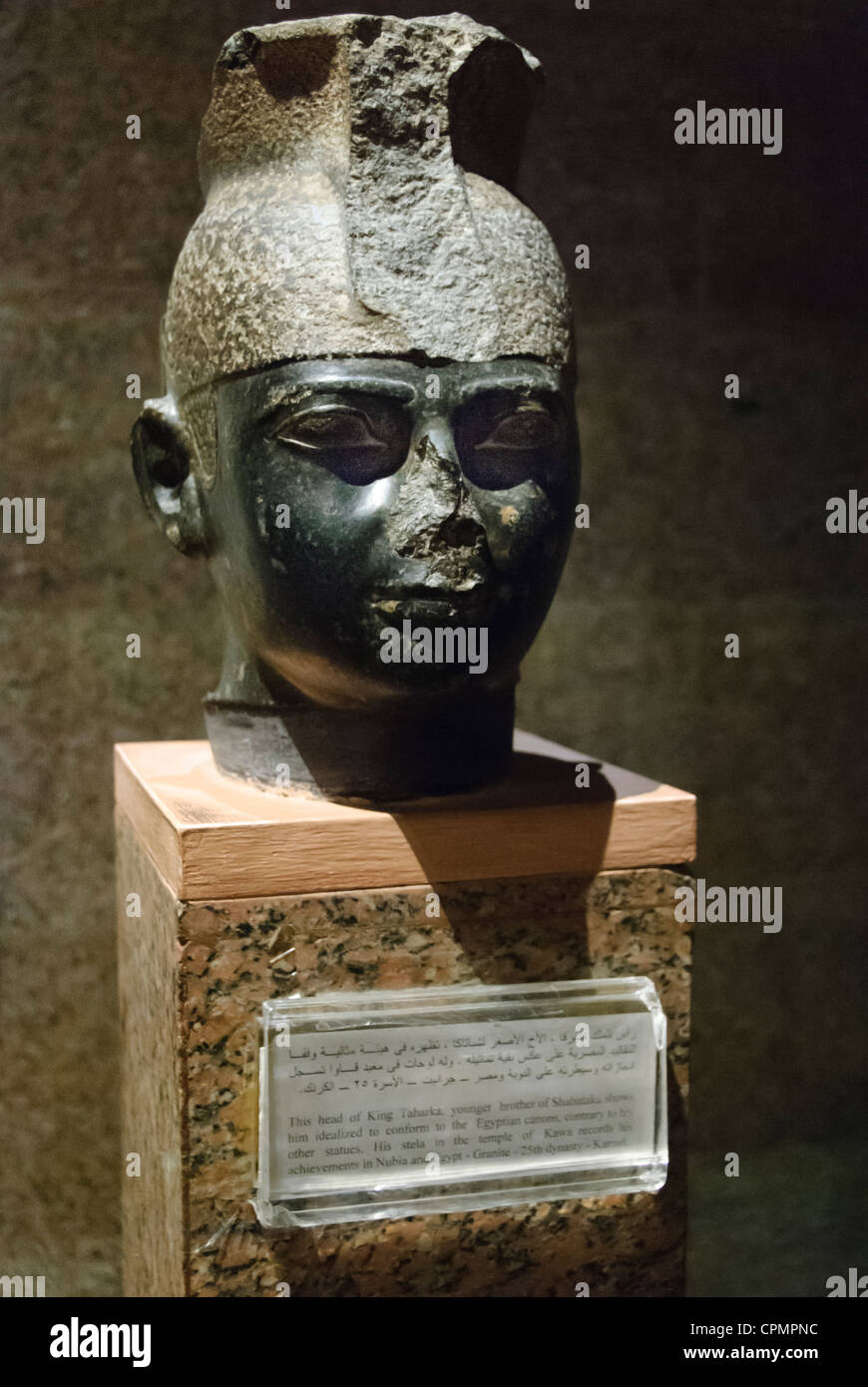 Head of the king Taharka, younger brother of Shabataka - 25th Dynasty - Granite - Nubian Museum - Aswan, Upper Egypt Stock Photohttps://www.alamy.com/image-license-details/?v=1https://www.alamy.com/stock-photo-head-of-the-king-taharka-younger-brother-of-shabataka-25th-dynasty-48400056.html
Head of the king Taharka, younger brother of Shabataka - 25th Dynasty - Granite - Nubian Museum - Aswan, Upper Egypt Stock Photohttps://www.alamy.com/image-license-details/?v=1https://www.alamy.com/stock-photo-head-of-the-king-taharka-younger-brother-of-shabataka-25th-dynasty-48400056.htmlRMCPMPNC–Head of the king Taharka, younger brother of Shabataka - 25th Dynasty - Granite - Nubian Museum - Aswan, Upper Egypt
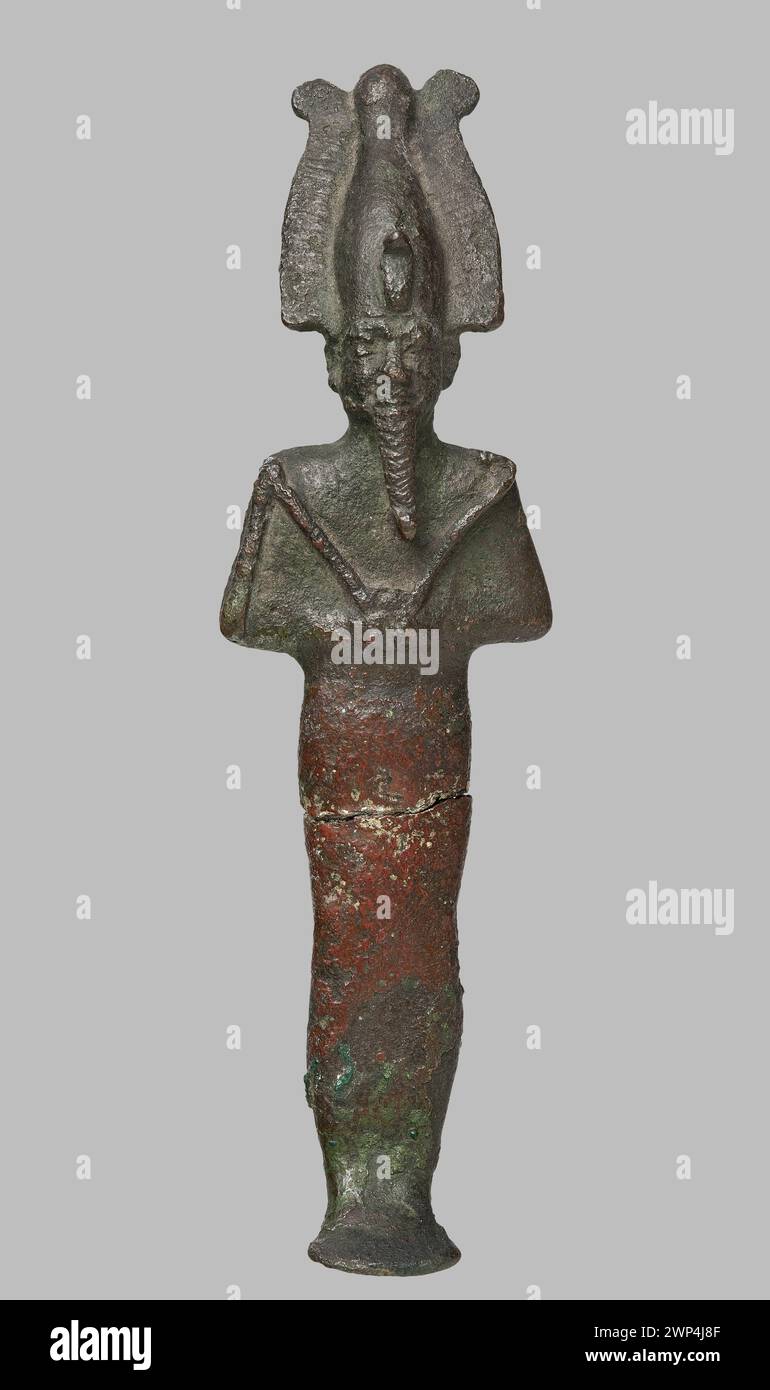 Figurine or artwork representing Osiris from ancient Egypt, associated with the 25th dynasty, part of the Akt Art Collection of Ancient Egypt. Stock Photohttps://www.alamy.com/image-license-details/?v=1https://www.alamy.com/figurine-or-artwork-representing-osiris-from-ancient-egypt-associated-with-the-25th-dynasty-part-of-the-akt-art-collection-of-ancient-egypt-image598777103.html
Figurine or artwork representing Osiris from ancient Egypt, associated with the 25th dynasty, part of the Akt Art Collection of Ancient Egypt. Stock Photohttps://www.alamy.com/image-license-details/?v=1https://www.alamy.com/figurine-or-artwork-representing-osiris-from-ancient-egypt-associated-with-the-25th-dynasty-part-of-the-akt-art-collection-of-ancient-egypt-image598777103.htmlRM2WP4J8F–Figurine or artwork representing Osiris from ancient Egypt, associated with the 25th dynasty, part of the Akt Art Collection of Ancient Egypt.
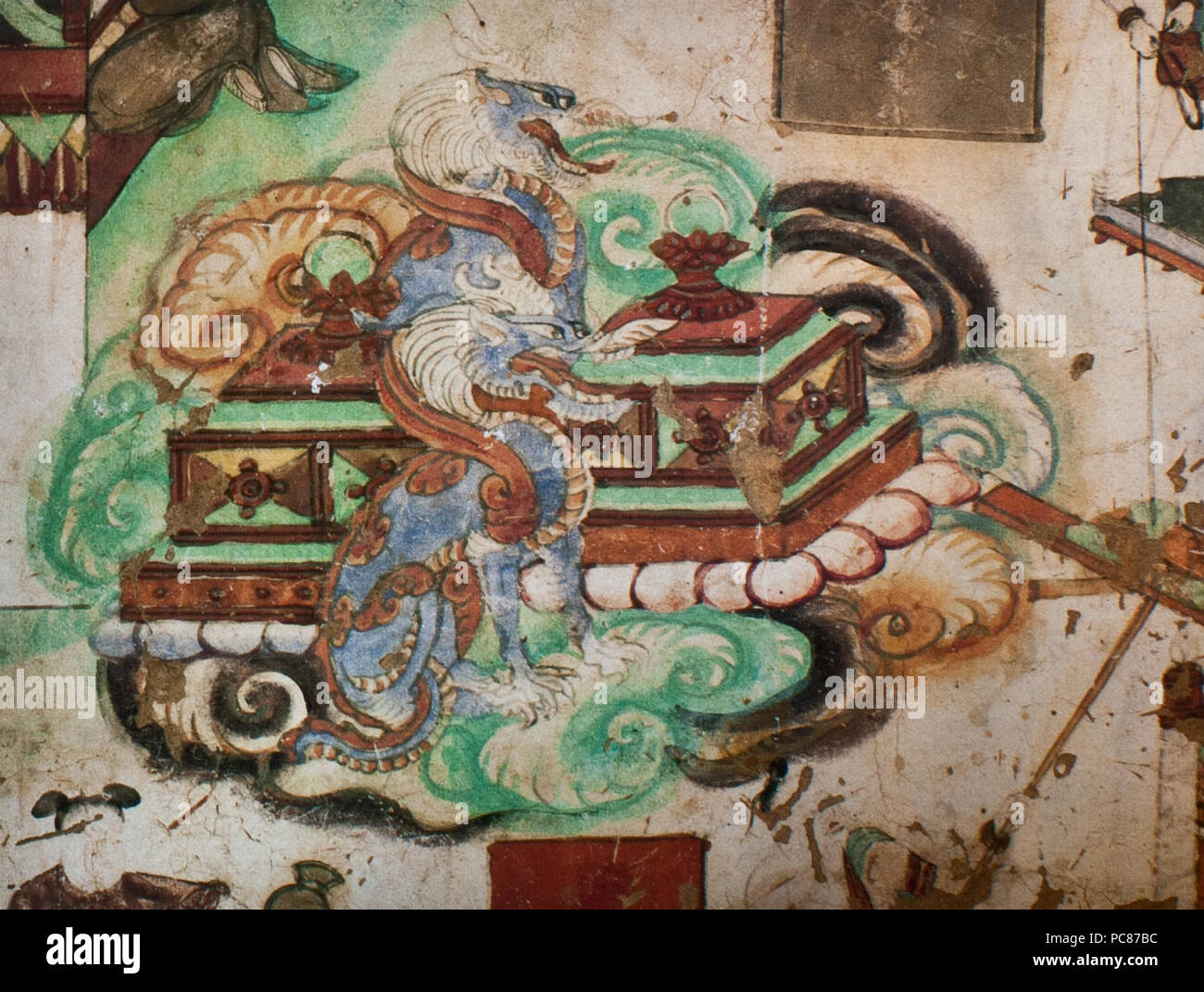 659 Yulin Cave 25 n wall Maitreya Sutra (Tang) Stock Photohttps://www.alamy.com/image-license-details/?v=1https://www.alamy.com/659-yulin-cave-25-n-wall-maitreya-sutra-tang-image214081712.html
659 Yulin Cave 25 n wall Maitreya Sutra (Tang) Stock Photohttps://www.alamy.com/image-license-details/?v=1https://www.alamy.com/659-yulin-cave-25-n-wall-maitreya-sutra-tang-image214081712.htmlRMPC87BC–659 Yulin Cave 25 n wall Maitreya Sutra (Tang)
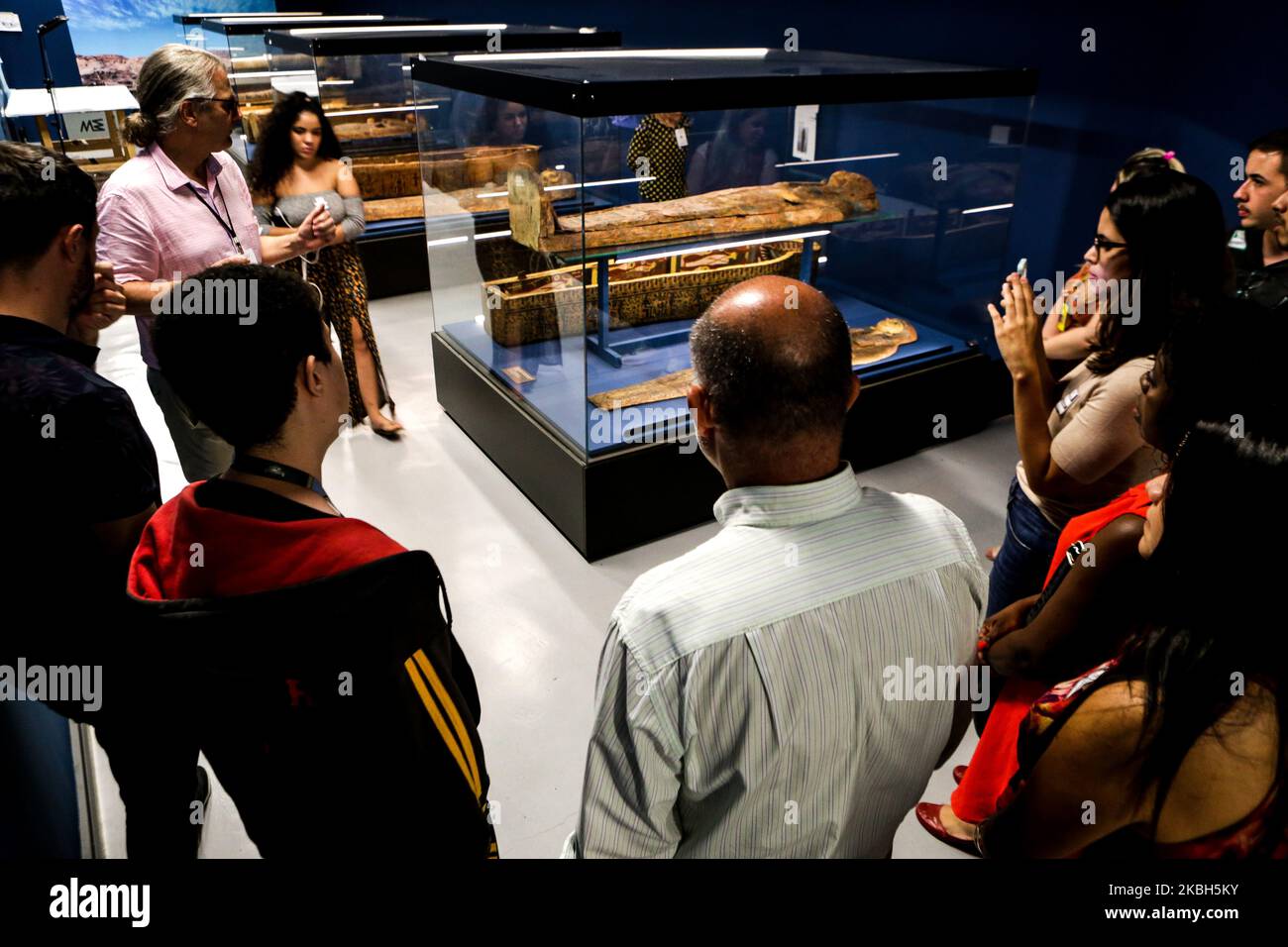 Part of the collection of the exhibition Egito Antigo that had opened on February 19, the Banco do Brasil Cultural Center (CCBB) in Sao Paulo, Brazil, on February 17, 2020. There are more than 140 items on display, including the Tararo mummy dated from 700 B.C. The woman was a member of the 25th dynasty, which became known as the Nubian Dynasty or Black Pharaohs. (Photo by Dario Oliveira/NurPhoto) Stock Photohttps://www.alamy.com/image-license-details/?v=1https://www.alamy.com/part-of-the-collection-of-the-exhibition-egito-antigo-that-had-opened-on-february-19-the-banco-do-brasil-cultural-center-ccbb-in-sao-paulo-brazil-on-february-17-2020-there-are-more-than-140-items-on-display-including-the-tararo-mummy-dated-from-700-bc-the-woman-was-a-member-of-the-25th-dynasty-which-became-known-as-the-nubian-dynasty-or-black-pharaohs-photo-by-dario-oliveiranurphoto-image489029183.html
Part of the collection of the exhibition Egito Antigo that had opened on February 19, the Banco do Brasil Cultural Center (CCBB) in Sao Paulo, Brazil, on February 17, 2020. There are more than 140 items on display, including the Tararo mummy dated from 700 B.C. The woman was a member of the 25th dynasty, which became known as the Nubian Dynasty or Black Pharaohs. (Photo by Dario Oliveira/NurPhoto) Stock Photohttps://www.alamy.com/image-license-details/?v=1https://www.alamy.com/part-of-the-collection-of-the-exhibition-egito-antigo-that-had-opened-on-february-19-the-banco-do-brasil-cultural-center-ccbb-in-sao-paulo-brazil-on-february-17-2020-there-are-more-than-140-items-on-display-including-the-tararo-mummy-dated-from-700-bc-the-woman-was-a-member-of-the-25th-dynasty-which-became-known-as-the-nubian-dynasty-or-black-pharaohs-photo-by-dario-oliveiranurphoto-image489029183.htmlRM2KBH5KY–Part of the collection of the exhibition Egito Antigo that had opened on February 19, the Banco do Brasil Cultural Center (CCBB) in Sao Paulo, Brazil, on February 17, 2020. There are more than 140 items on display, including the Tararo mummy dated from 700 B.C. The woman was a member of the 25th dynasty, which became known as the Nubian Dynasty or Black Pharaohs. (Photo by Dario Oliveira/NurPhoto)
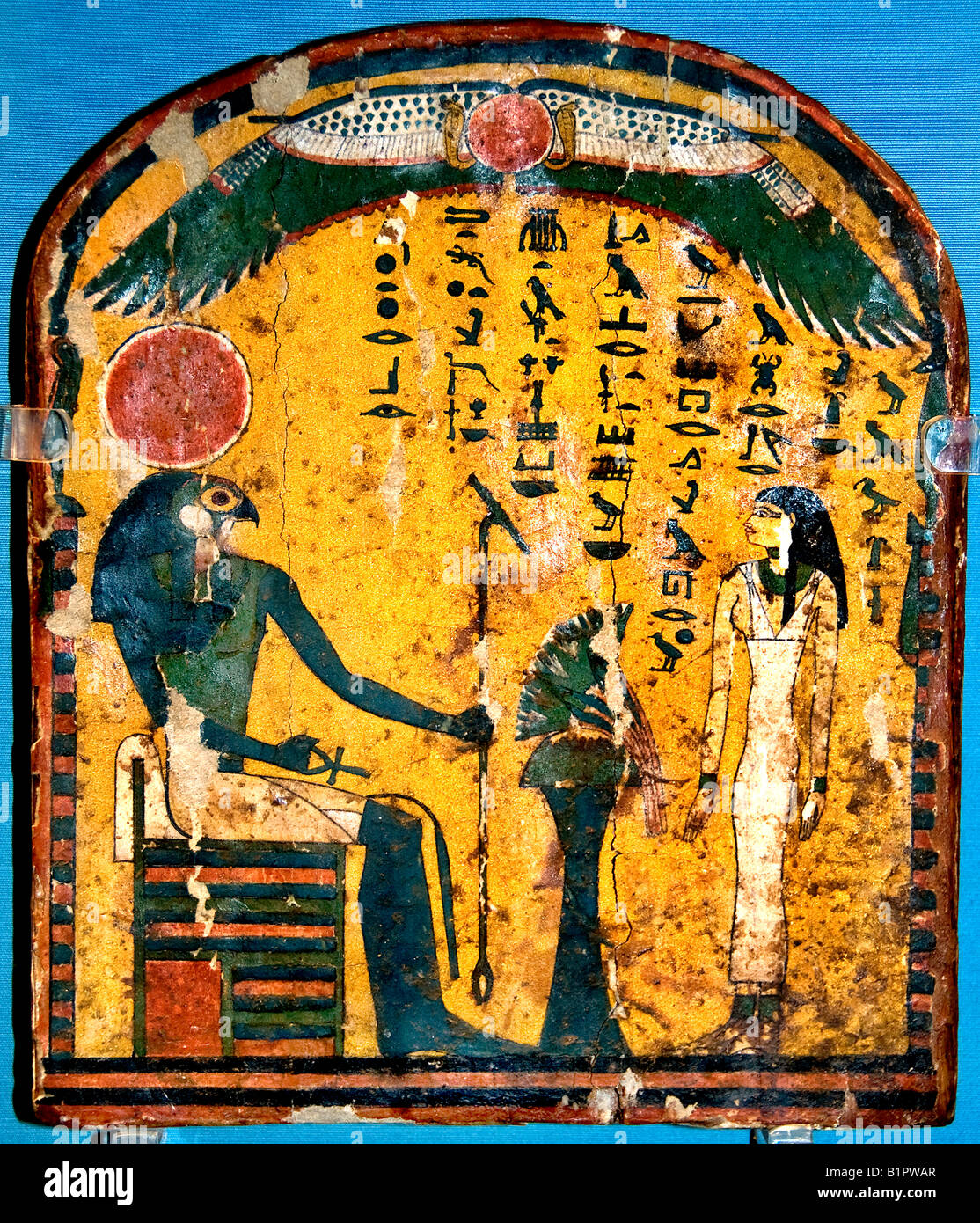 Stela of Tjentdiashakhet 25th Dynasty 680 BC Qurna Egypt Egyptian museum Stock Photohttps://www.alamy.com/image-license-details/?v=1https://www.alamy.com/stock-photo-stela-of-tjentdiashakhet-25th-dynasty-680-bc-qurna-egypt-egyptian-18327871.html
Stela of Tjentdiashakhet 25th Dynasty 680 BC Qurna Egypt Egyptian museum Stock Photohttps://www.alamy.com/image-license-details/?v=1https://www.alamy.com/stock-photo-stela-of-tjentdiashakhet-25th-dynasty-680-bc-qurna-egypt-egyptian-18327871.htmlRMB1PWAR–Stela of Tjentdiashakhet 25th Dynasty 680 BC Qurna Egypt Egyptian museum
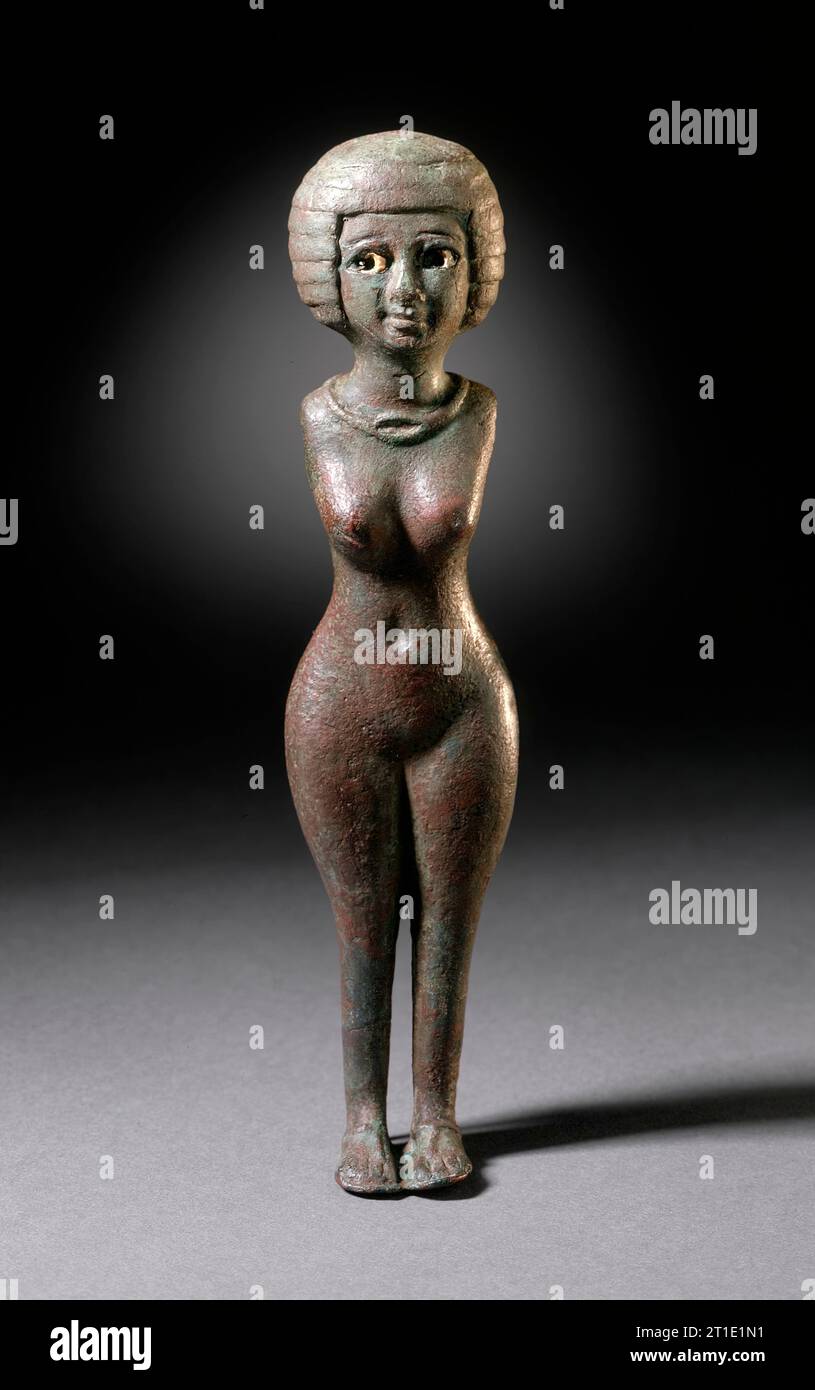 Nubian Female Figure, Egypt, Late Period, 25th Dynasty (711 - 600 BCE) or later. Stock Photohttps://www.alamy.com/image-license-details/?v=1https://www.alamy.com/nubian-female-figure-egypt-late-period-25th-dynasty-711-600-bce-or-later-image568865501.html
Nubian Female Figure, Egypt, Late Period, 25th Dynasty (711 - 600 BCE) or later. Stock Photohttps://www.alamy.com/image-license-details/?v=1https://www.alamy.com/nubian-female-figure-egypt-late-period-25th-dynasty-711-600-bce-or-later-image568865501.htmlRM2T1E1N1–Nubian Female Figure, Egypt, Late Period, 25th Dynasty (711 - 600 BCE) or later.
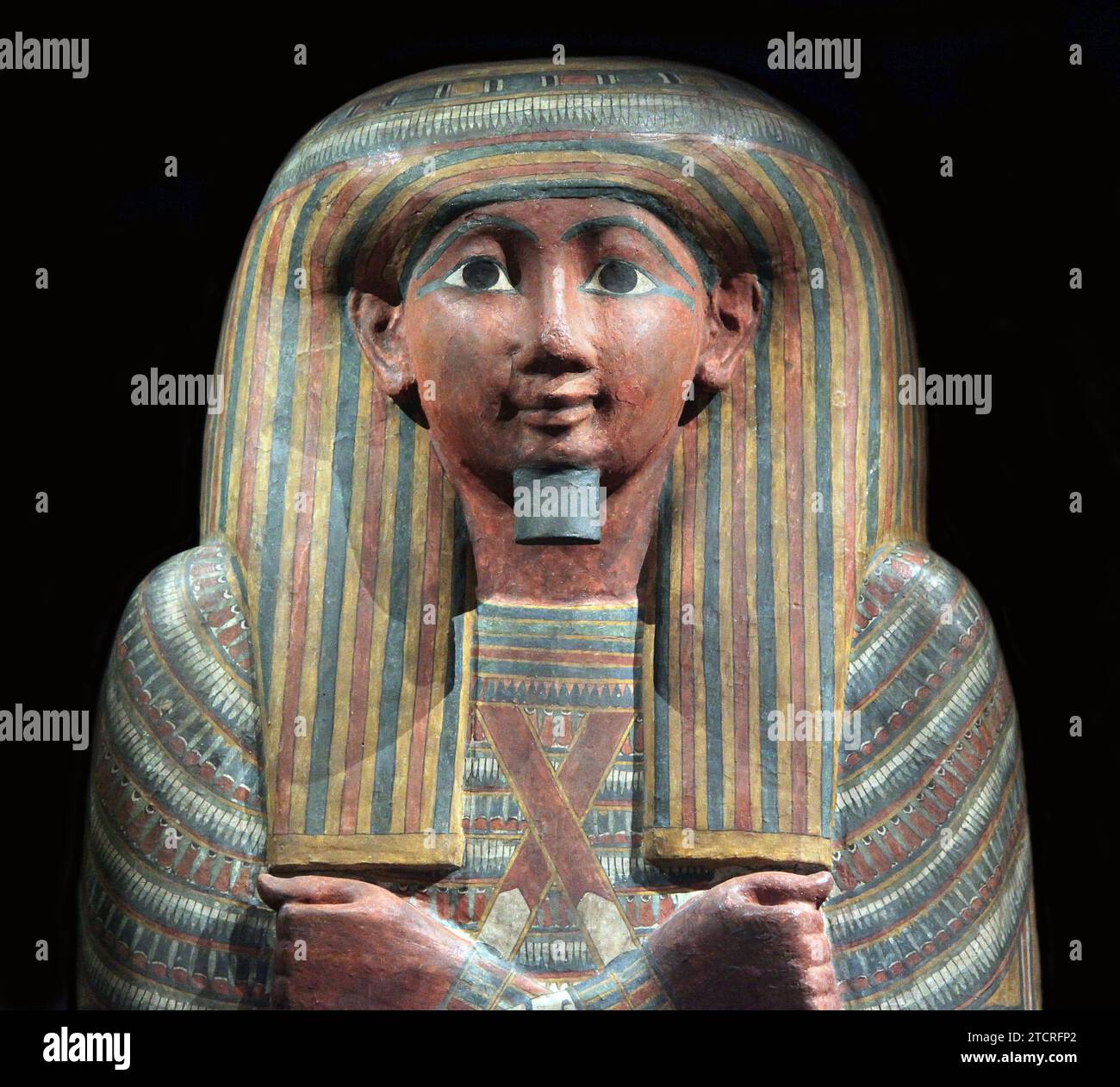 the outer coffin of Petisis.Priest of the temple of Amun.Thebes Egypt.25th Dynasty.(710-680 BC) Stock Photohttps://www.alamy.com/image-license-details/?v=1https://www.alamy.com/the-outer-coffin-of-petisispriest-of-the-temple-of-amunthebes-egypt25th-dynasty710-680-bc-image575835290.html
the outer coffin of Petisis.Priest of the temple of Amun.Thebes Egypt.25th Dynasty.(710-680 BC) Stock Photohttps://www.alamy.com/image-license-details/?v=1https://www.alamy.com/the-outer-coffin-of-petisispriest-of-the-temple-of-amunthebes-egypt25th-dynasty710-680-bc-image575835290.htmlRM2TCRFP2–the outer coffin of Petisis.Priest of the temple of Amun.Thebes Egypt.25th Dynasty.(710-680 BC)
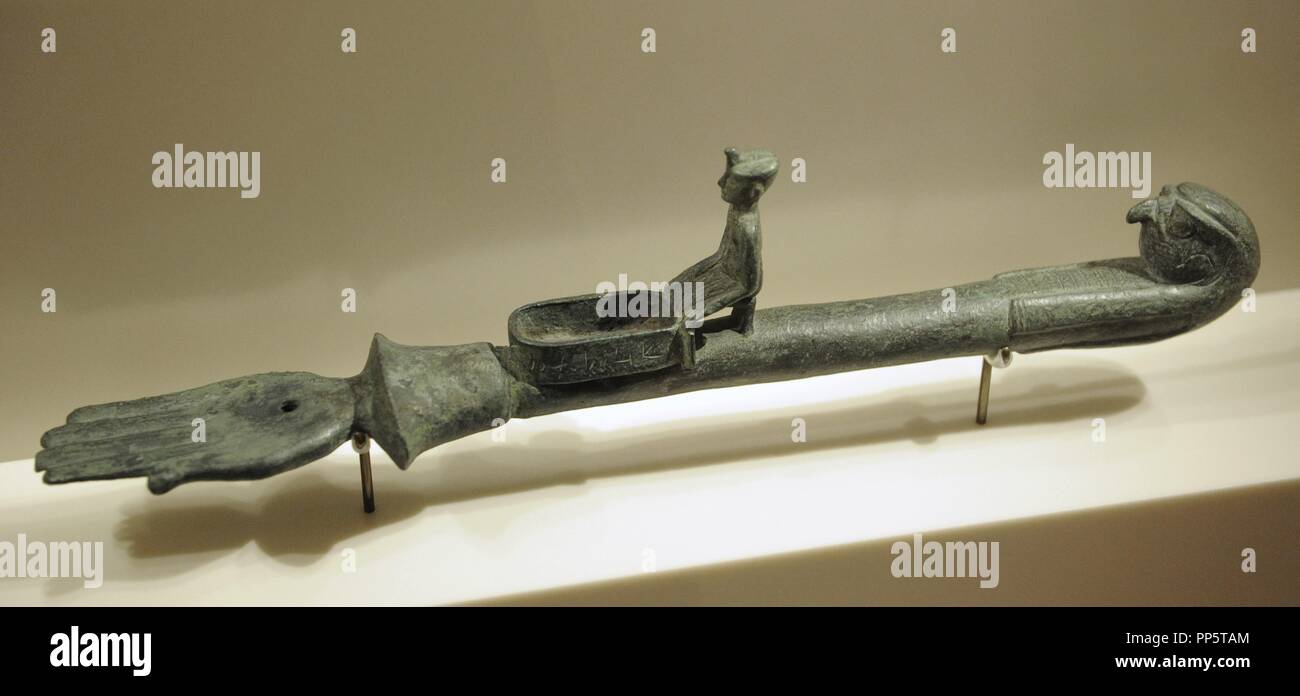 Egyptian censer for burning incense grains in front of a divine shrine. Bronze. 25th Dynasty. Third Intermediate Period. 700 BC. Neues Museum. Berlin. Germany. Stock Photohttps://www.alamy.com/image-license-details/?v=1https://www.alamy.com/egyptian-censer-for-burning-incense-grains-in-front-of-a-divine-shrine-bronze-25th-dynasty-third-intermediate-period-700-bc-neues-museum-berlin-germany-image220175724.html
Egyptian censer for burning incense grains in front of a divine shrine. Bronze. 25th Dynasty. Third Intermediate Period. 700 BC. Neues Museum. Berlin. Germany. Stock Photohttps://www.alamy.com/image-license-details/?v=1https://www.alamy.com/egyptian-censer-for-burning-incense-grains-in-front-of-a-divine-shrine-bronze-25th-dynasty-third-intermediate-period-700-bc-neues-museum-berlin-germany-image220175724.htmlRMPP5TAM–Egyptian censer for burning incense grains in front of a divine shrine. Bronze. 25th Dynasty. Third Intermediate Period. 700 BC. Neues Museum. Berlin. Germany.
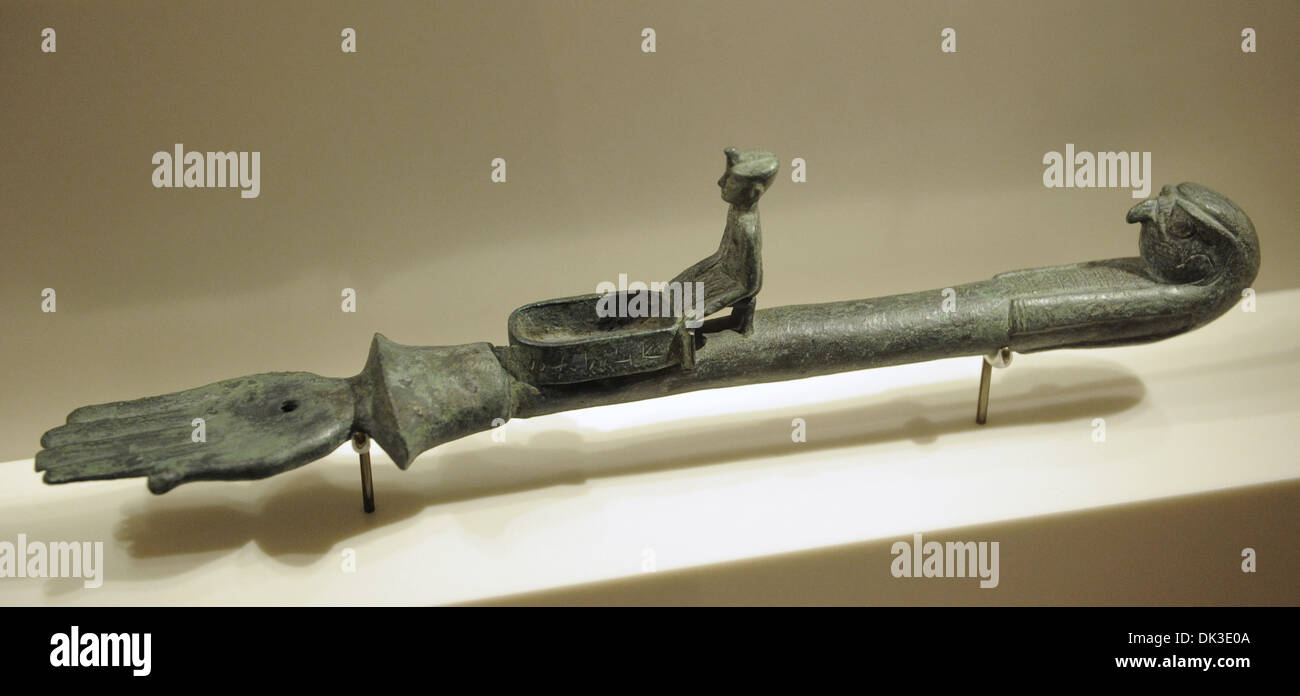 Egyptian censer for burning incense grains in front of a divine shrine. Bronze. 25th Dynasty. Third Intermediate Period. 700 BC. Stock Photohttps://www.alamy.com/image-license-details/?v=1https://www.alamy.com/egyptian-censer-for-burning-incense-grains-in-front-of-a-divine-shrine-image63386410.html
Egyptian censer for burning incense grains in front of a divine shrine. Bronze. 25th Dynasty. Third Intermediate Period. 700 BC. Stock Photohttps://www.alamy.com/image-license-details/?v=1https://www.alamy.com/egyptian-censer-for-burning-incense-grains-in-front-of-a-divine-shrine-image63386410.htmlRMDK3E0A–Egyptian censer for burning incense grains in front of a divine shrine. Bronze. 25th Dynasty. Third Intermediate Period. 700 BC.
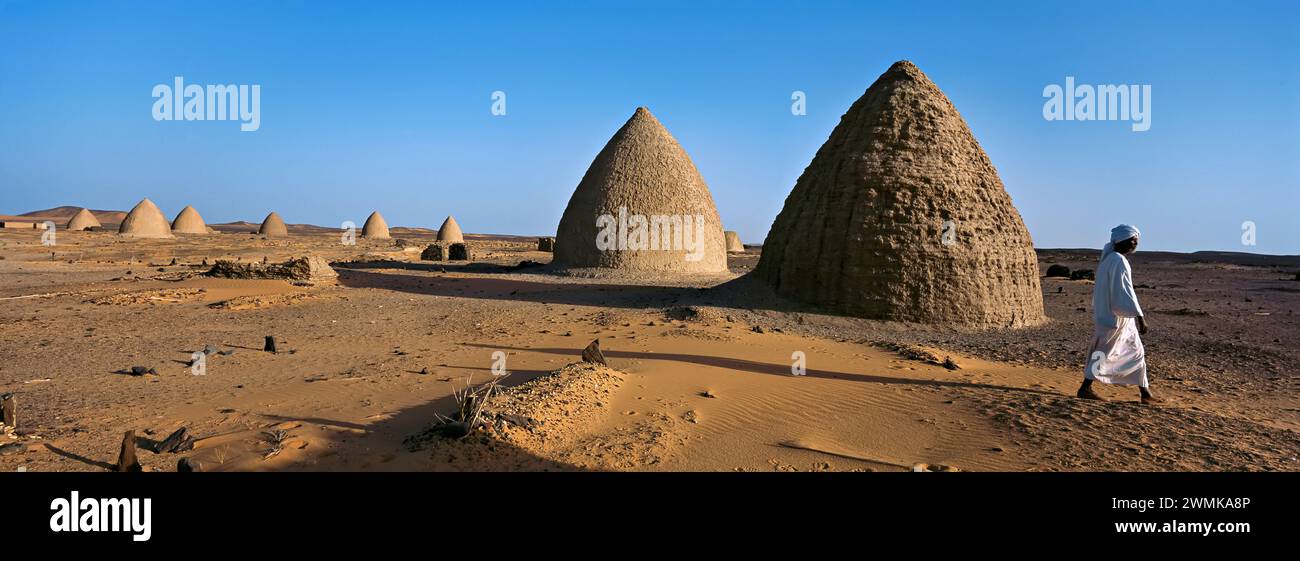 Ruins and tombs in the desert of Sudan, Nubian king's tomb from the 25th dynasty. El-Kurru was one of the royal cemeteries used by the Nubian royal... Stock Photohttps://www.alamy.com/image-license-details/?v=1https://www.alamy.com/ruins-and-tombs-in-the-desert-of-sudan-nubian-kings-tomb-from-the-25th-dynasty-el-kurru-was-one-of-the-royal-cemeteries-used-by-the-nubian-royal-image597870806.html
Ruins and tombs in the desert of Sudan, Nubian king's tomb from the 25th dynasty. El-Kurru was one of the royal cemeteries used by the Nubian royal... Stock Photohttps://www.alamy.com/image-license-details/?v=1https://www.alamy.com/ruins-and-tombs-in-the-desert-of-sudan-nubian-kings-tomb-from-the-25th-dynasty-el-kurru-was-one-of-the-royal-cemeteries-used-by-the-nubian-royal-image597870806.htmlRM2WMKA8P–Ruins and tombs in the desert of Sudan, Nubian king's tomb from the 25th dynasty. El-Kurru was one of the royal cemeteries used by the Nubian royal...
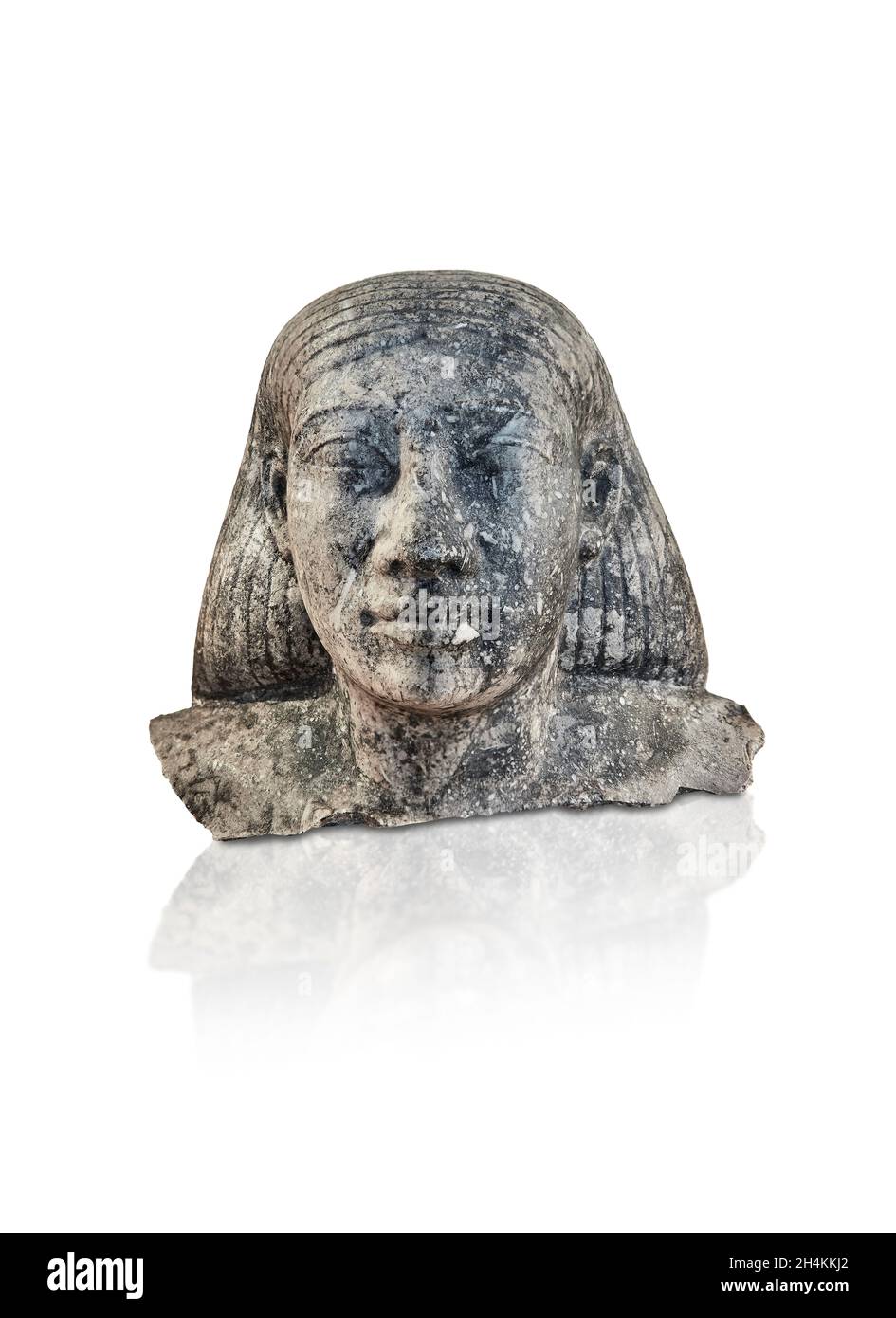 Egyptian statue sculpture of a mans head, 650-600 BC, 25th dynasty, . Louvre Museum . Stock Photohttps://www.alamy.com/image-license-details/?v=1https://www.alamy.com/egyptian-statue-sculpture-of-a-mans-head-650-600-bc-25th-dynasty-louvre-museum-image450360682.html
Egyptian statue sculpture of a mans head, 650-600 BC, 25th dynasty, . Louvre Museum . Stock Photohttps://www.alamy.com/image-license-details/?v=1https://www.alamy.com/egyptian-statue-sculpture-of-a-mans-head-650-600-bc-25th-dynasty-louvre-museum-image450360682.htmlRF2H4KKJ2–Egyptian statue sculpture of a mans head, 650-600 BC, 25th dynasty, . Louvre Museum .
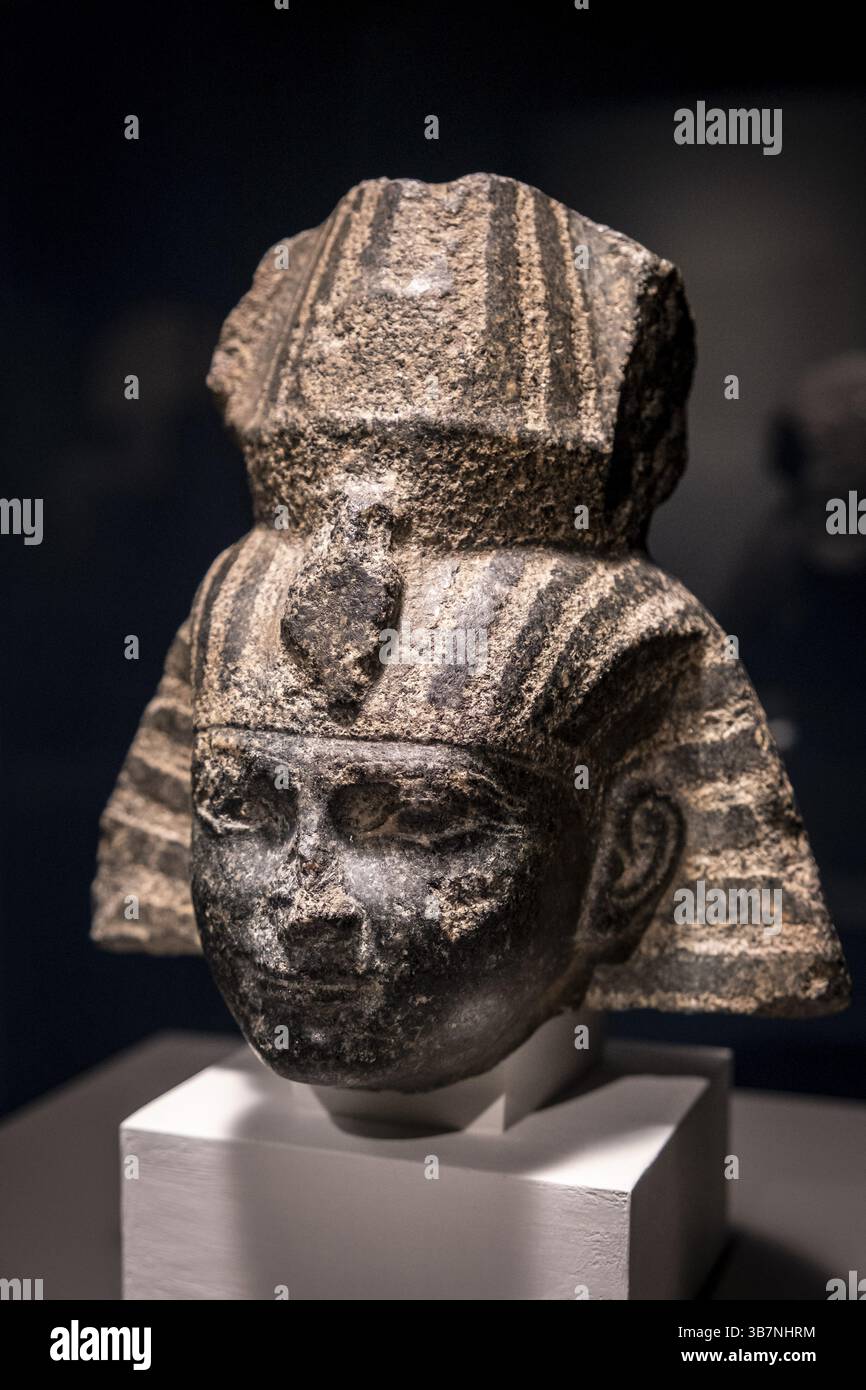 Probably head of pharaoh Shabaka, granite, 25th dynasty, 716-702 BC, probably Heliopolis, Egypt, collection of the British Museum, Africa Stock Photohttps://www.alamy.com/image-license-details/?v=1https://www.alamy.com/probably-head-of-pharaoh-shabaka-granite-25th-dynasty-716-702-bc-probably-heliopolis-egypt-collection-of-the-british-museum-africa-image675981928.html
Probably head of pharaoh Shabaka, granite, 25th dynasty, 716-702 BC, probably Heliopolis, Egypt, collection of the British Museum, Africa Stock Photohttps://www.alamy.com/image-license-details/?v=1https://www.alamy.com/probably-head-of-pharaoh-shabaka-granite-25th-dynasty-716-702-bc-probably-heliopolis-egypt-collection-of-the-british-museum-africa-image675981928.htmlRF3B7NHRM–Probably head of pharaoh Shabaka, granite, 25th dynasty, 716-702 BC, probably Heliopolis, Egypt, collection of the British Museum, Africa
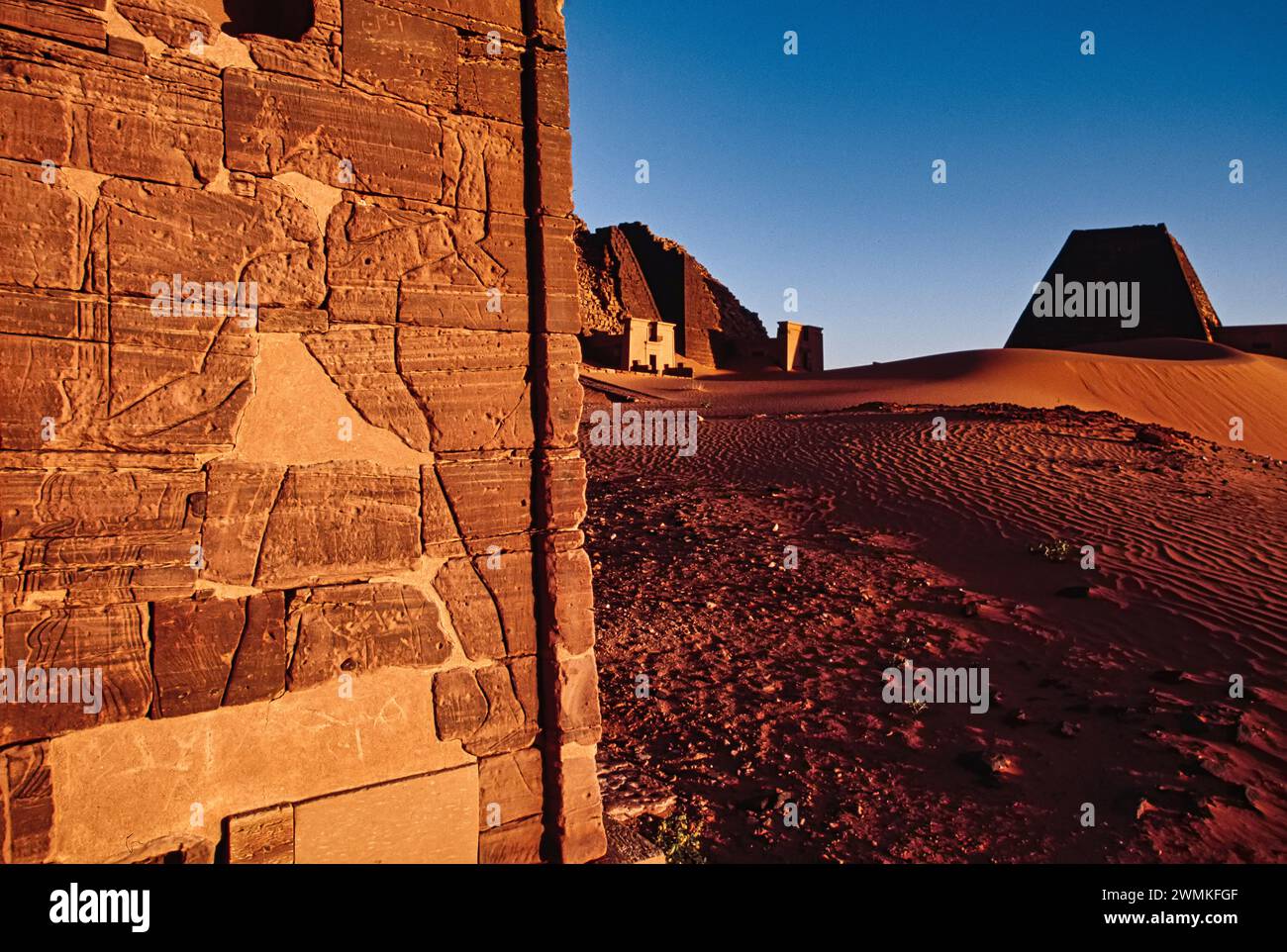 Nubian king's tomb from the 25th dynasty. El-Kurru was one of the royal cemeteries used by the Nubian royal family. Egyptian empire began to decay ... Stock Photohttps://www.alamy.com/image-license-details/?v=1https://www.alamy.com/nubian-kings-tomb-from-the-25th-dynasty-el-kurru-was-one-of-the-royal-cemeteries-used-by-the-nubian-royal-family-egyptian-empire-began-to-decay-image597874943.html
Nubian king's tomb from the 25th dynasty. El-Kurru was one of the royal cemeteries used by the Nubian royal family. Egyptian empire began to decay ... Stock Photohttps://www.alamy.com/image-license-details/?v=1https://www.alamy.com/nubian-kings-tomb-from-the-25th-dynasty-el-kurru-was-one-of-the-royal-cemeteries-used-by-the-nubian-royal-family-egyptian-empire-began-to-decay-image597874943.htmlRF2WMKFGF–Nubian king's tomb from the 25th dynasty. El-Kurru was one of the royal cemeteries used by the Nubian royal family. Egyptian empire began to decay ...
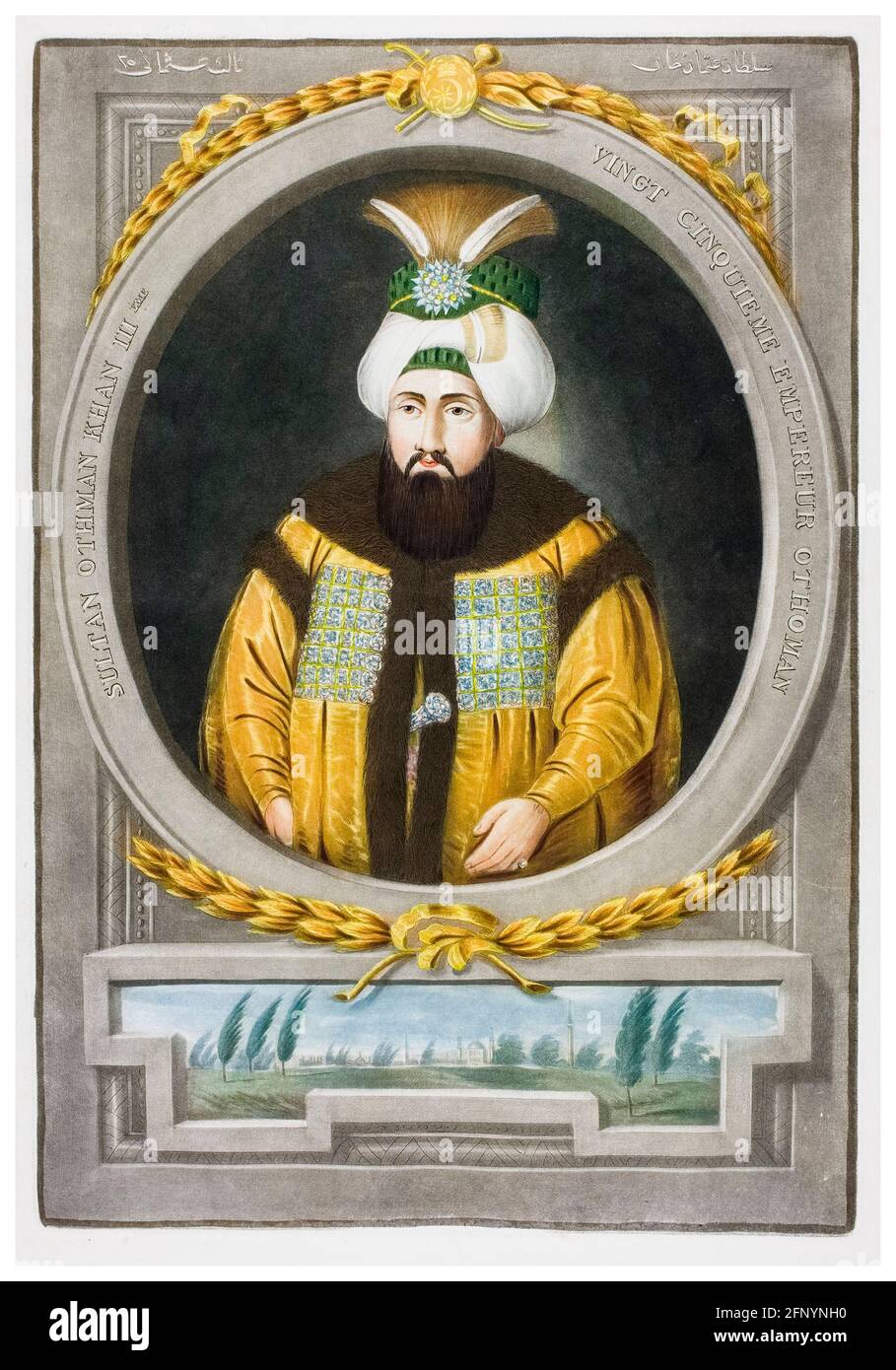 Osman III of Turkey (1699-1757), 25th Sultan of the Ottoman Empire (1754-1757), portrait engraving by John Young, 1815 Stock Photohttps://www.alamy.com/image-license-details/?v=1https://www.alamy.com/osman-iii-of-turkey-1699-1757-25th-sultan-of-the-ottoman-empire-1754-1757-portrait-engraving-by-john-young-1815-image426566252.html
Osman III of Turkey (1699-1757), 25th Sultan of the Ottoman Empire (1754-1757), portrait engraving by John Young, 1815 Stock Photohttps://www.alamy.com/image-license-details/?v=1https://www.alamy.com/osman-iii-of-turkey-1699-1757-25th-sultan-of-the-ottoman-empire-1754-1757-portrait-engraving-by-john-young-1815-image426566252.htmlRM2FNYNH0–Osman III of Turkey (1699-1757), 25th Sultan of the Ottoman Empire (1754-1757), portrait engraving by John Young, 1815
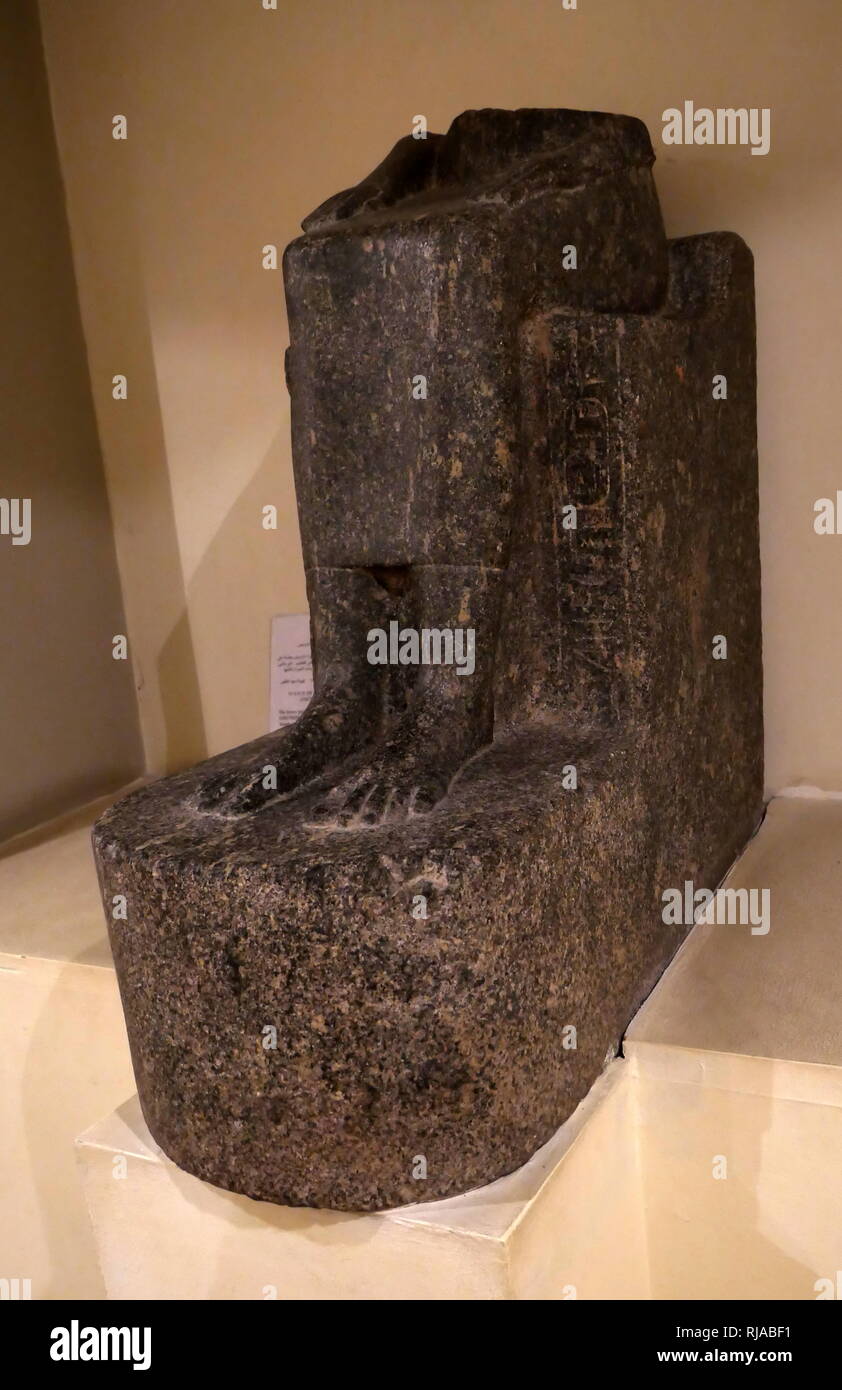 Statue of Princess Amenrdis 25th dynasty; Granite; Luxor Temple; Egypt. Amenrdis I (Hatneferumut), was a God's Wife of Amun during the 25th Dynasty of ancient Egypt. Originating from the Kingdom of Kush, she was the daughter of Pharaoh Kashta and Queen Pebatjma, and was later adopted by Shepenupet I. She went on to rule as high priestess, and has been shown in several artefacts from the period. Stock Photohttps://www.alamy.com/image-license-details/?v=1https://www.alamy.com/statue-of-princess-amenrdis-25th-dynasty-granite-luxor-temple-egypt-amenrdis-i-hatneferumut-was-a-gods-wife-of-amun-during-the-25th-dynasty-of-ancient-egypt-originating-from-the-kingdom-of-kush-she-was-the-daughter-of-pharaoh-kashta-and-queen-pebatjma-and-was-later-adopted-by-shepenupet-i-she-went-on-to-rule-as-high-priestess-and-has-been-shown-in-several-artefacts-from-the-period-image235027157.html
Statue of Princess Amenrdis 25th dynasty; Granite; Luxor Temple; Egypt. Amenrdis I (Hatneferumut), was a God's Wife of Amun during the 25th Dynasty of ancient Egypt. Originating from the Kingdom of Kush, she was the daughter of Pharaoh Kashta and Queen Pebatjma, and was later adopted by Shepenupet I. She went on to rule as high priestess, and has been shown in several artefacts from the period. Stock Photohttps://www.alamy.com/image-license-details/?v=1https://www.alamy.com/statue-of-princess-amenrdis-25th-dynasty-granite-luxor-temple-egypt-amenrdis-i-hatneferumut-was-a-gods-wife-of-amun-during-the-25th-dynasty-of-ancient-egypt-originating-from-the-kingdom-of-kush-she-was-the-daughter-of-pharaoh-kashta-and-queen-pebatjma-and-was-later-adopted-by-shepenupet-i-she-went-on-to-rule-as-high-priestess-and-has-been-shown-in-several-artefacts-from-the-period-image235027157.htmlRMRJABF1–Statue of Princess Amenrdis 25th dynasty; Granite; Luxor Temple; Egypt. Amenrdis I (Hatneferumut), was a God's Wife of Amun during the 25th Dynasty of ancient Egypt. Originating from the Kingdom of Kush, she was the daughter of Pharaoh Kashta and Queen Pebatjma, and was later adopted by Shepenupet I. She went on to rule as high priestess, and has been shown in several artefacts from the period.
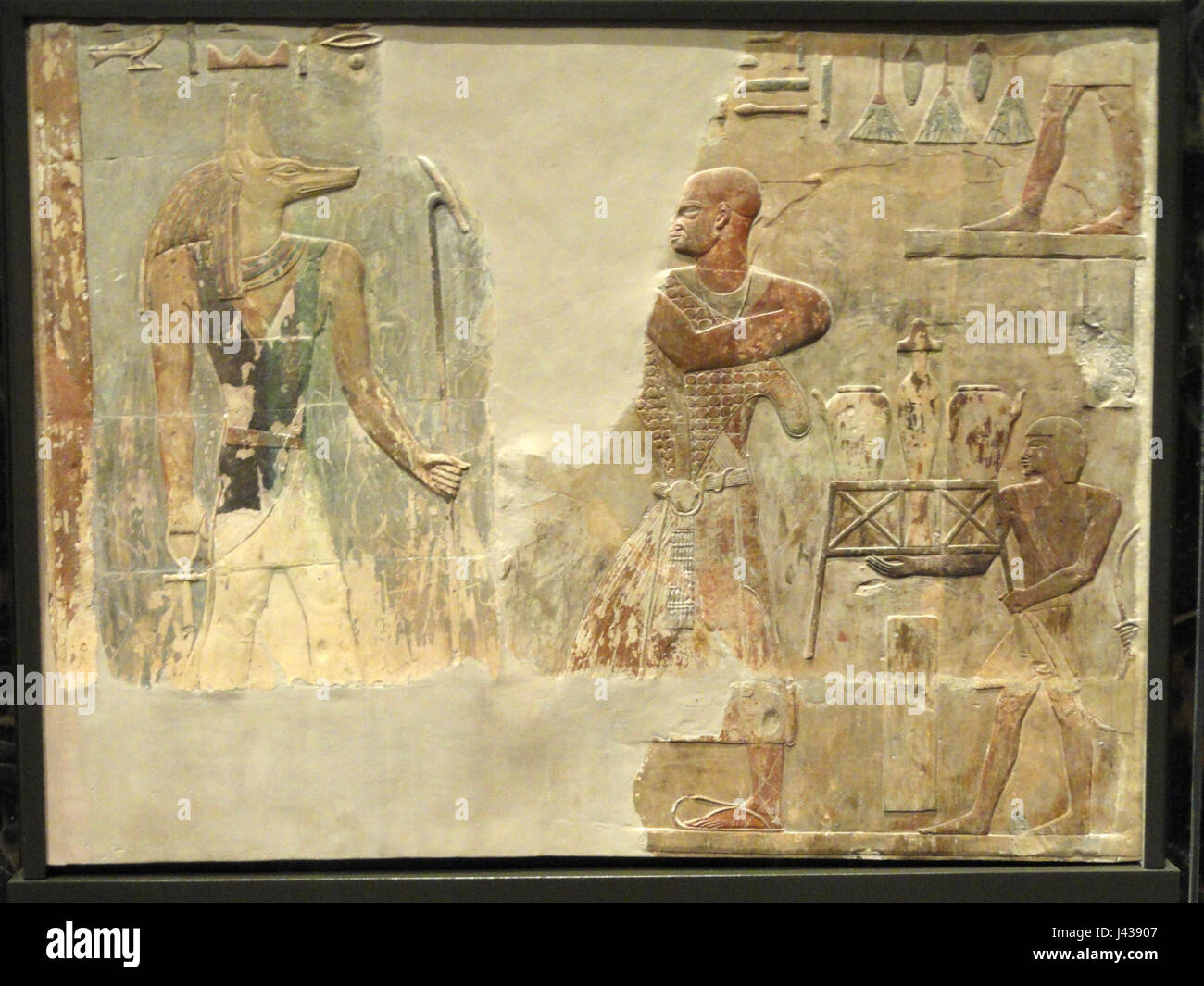 Mentuemhat and Anubis (relief), Thebes, late 25th to early 26th Dynasty, 665 650 BCE Nelson Atkins Museum of Art DSC08146 Stock Photohttps://www.alamy.com/image-license-details/?v=1https://www.alamy.com/stock-photo-mentuemhat-and-anubis-relief-thebes-late-25th-to-early-26th-dynasty-140214487.html
Mentuemhat and Anubis (relief), Thebes, late 25th to early 26th Dynasty, 665 650 BCE Nelson Atkins Museum of Art DSC08146 Stock Photohttps://www.alamy.com/image-license-details/?v=1https://www.alamy.com/stock-photo-mentuemhat-and-anubis-relief-thebes-late-25th-to-early-26th-dynasty-140214487.htmlRMJ43907–Mentuemhat and Anubis (relief), Thebes, late 25th to early 26th Dynasty, 665 650 BCE Nelson Atkins Museum of Art DSC08146
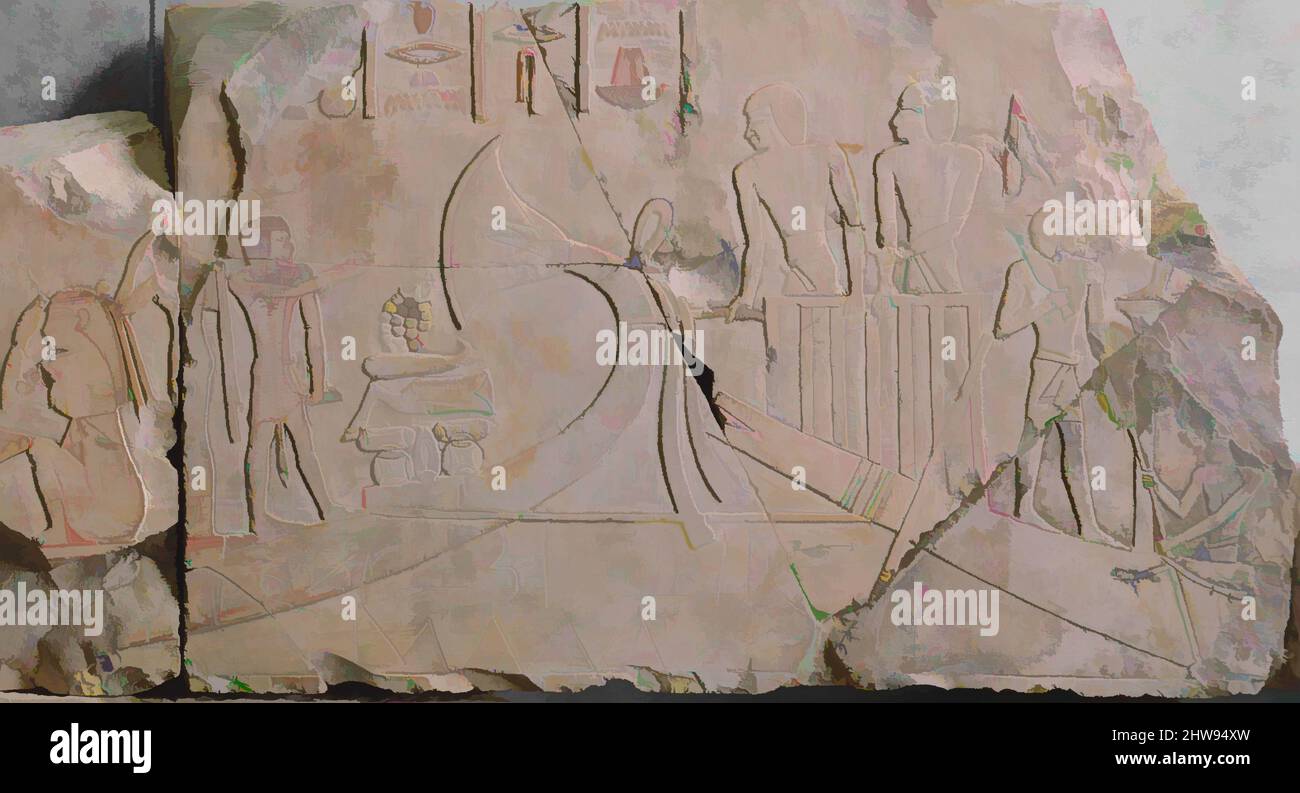 Art inspired by Reliefs from the Tomb of Nespekashuty, Late Period, Saite, Dynasty 26, 656–610 B.C., From Egypt, Upper Egypt, Thebes, Deir el-Bahri, Tomb of Nespekashuty (TT 312,), bottom of west wall of outer hall, 1922–23, Limestone, paint, as displayed: L. 303 × H. 127 × Th. 10 cm (, Classic works modernized by Artotop with a splash of modernity. Shapes, color and value, eye-catching visual impact on art. Emotions through freedom of artworks in a contemporary way. A timeless message pursuing a wildly creative new direction. Artists turning to the digital medium and creating the Artotop NFT Stock Photohttps://www.alamy.com/image-license-details/?v=1https://www.alamy.com/art-inspired-by-reliefs-from-the-tomb-of-nespekashuty-late-period-saite-dynasty-26-656610-bc-from-egypt-upper-egypt-thebes-deir-el-bahri-tomb-of-nespekashuty-tt-312-bottom-of-west-wall-of-outer-hall-192223-limestone-paint-as-displayed-l-303-h-127-th-10-cm-classic-works-modernized-by-artotop-with-a-splash-of-modernity-shapes-color-and-value-eye-catching-visual-impact-on-art-emotions-through-freedom-of-artworks-in-a-contemporary-way-a-timeless-message-pursuing-a-wildly-creative-new-direction-artists-turning-to-the-digital-medium-and-creating-the-artotop-nft-image463037425.html
Art inspired by Reliefs from the Tomb of Nespekashuty, Late Period, Saite, Dynasty 26, 656–610 B.C., From Egypt, Upper Egypt, Thebes, Deir el-Bahri, Tomb of Nespekashuty (TT 312,), bottom of west wall of outer hall, 1922–23, Limestone, paint, as displayed: L. 303 × H. 127 × Th. 10 cm (, Classic works modernized by Artotop with a splash of modernity. Shapes, color and value, eye-catching visual impact on art. Emotions through freedom of artworks in a contemporary way. A timeless message pursuing a wildly creative new direction. Artists turning to the digital medium and creating the Artotop NFT Stock Photohttps://www.alamy.com/image-license-details/?v=1https://www.alamy.com/art-inspired-by-reliefs-from-the-tomb-of-nespekashuty-late-period-saite-dynasty-26-656610-bc-from-egypt-upper-egypt-thebes-deir-el-bahri-tomb-of-nespekashuty-tt-312-bottom-of-west-wall-of-outer-hall-192223-limestone-paint-as-displayed-l-303-h-127-th-10-cm-classic-works-modernized-by-artotop-with-a-splash-of-modernity-shapes-color-and-value-eye-catching-visual-impact-on-art-emotions-through-freedom-of-artworks-in-a-contemporary-way-a-timeless-message-pursuing-a-wildly-creative-new-direction-artists-turning-to-the-digital-medium-and-creating-the-artotop-nft-image463037425.htmlRF2HW94XW–Art inspired by Reliefs from the Tomb of Nespekashuty, Late Period, Saite, Dynasty 26, 656–610 B.C., From Egypt, Upper Egypt, Thebes, Deir el-Bahri, Tomb of Nespekashuty (TT 312,), bottom of west wall of outer hall, 1922–23, Limestone, paint, as displayed: L. 303 × H. 127 × Th. 10 cm (, Classic works modernized by Artotop with a splash of modernity. Shapes, color and value, eye-catching visual impact on art. Emotions through freedom of artworks in a contemporary way. A timeless message pursuing a wildly creative new direction. Artists turning to the digital medium and creating the Artotop NFT
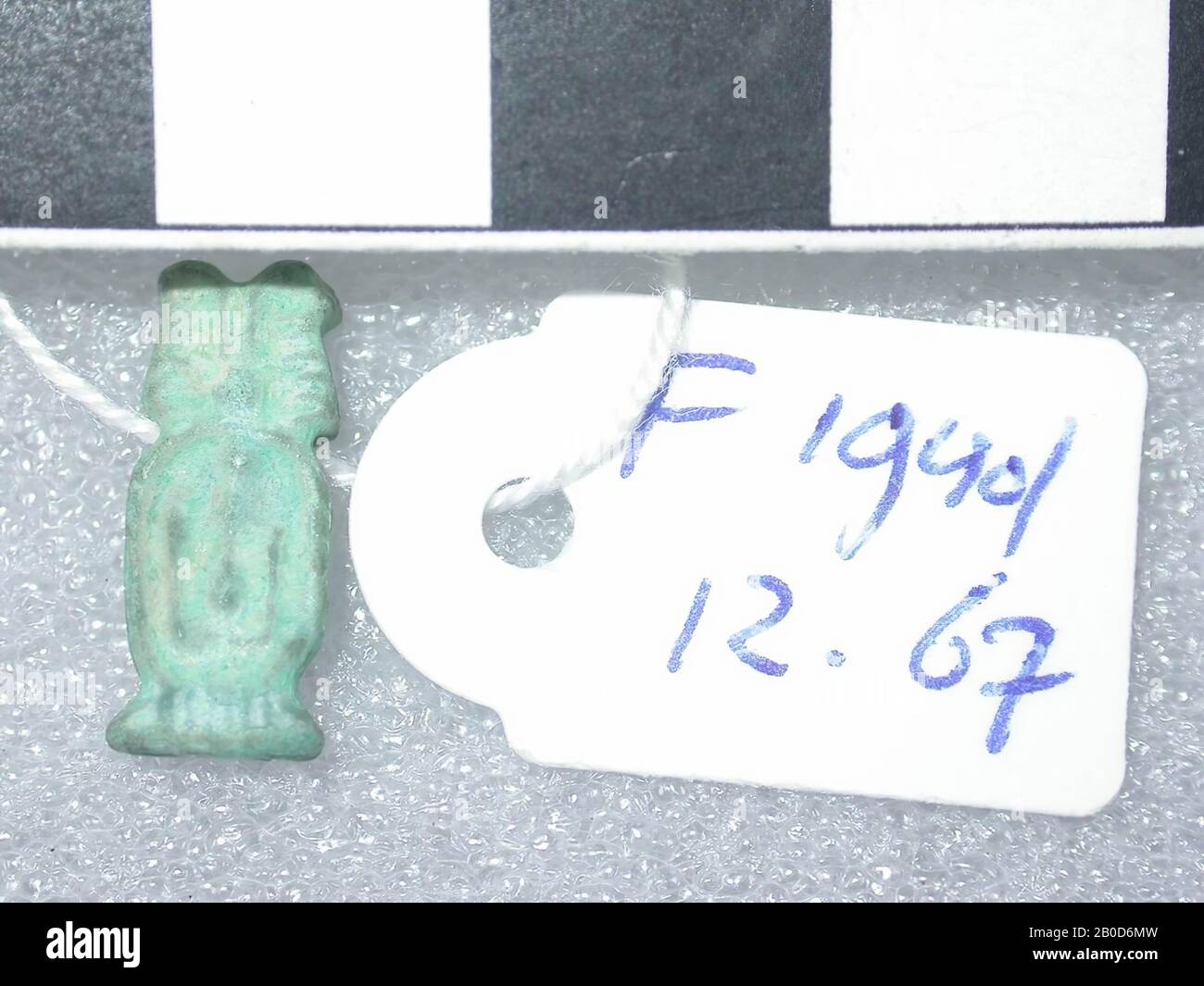 cartouche, Neferkare, Shabaka, amulet, hieroglyph, faience, 2,5 cm, Late Period, 25th Dynasty, Shabaka, Egypt Stock Photohttps://www.alamy.com/image-license-details/?v=1https://www.alamy.com/cartouche-neferkare-shabaka-amulet-hieroglyph-faience-25-cm-late-period-25th-dynasty-shabaka-egypt-image344498025.html
cartouche, Neferkare, Shabaka, amulet, hieroglyph, faience, 2,5 cm, Late Period, 25th Dynasty, Shabaka, Egypt Stock Photohttps://www.alamy.com/image-license-details/?v=1https://www.alamy.com/cartouche-neferkare-shabaka-amulet-hieroglyph-faience-25-cm-late-period-25th-dynasty-shabaka-egypt-image344498025.htmlRM2B0D6MW–cartouche, Neferkare, Shabaka, amulet, hieroglyph, faience, 2,5 cm, Late Period, 25th Dynasty, Shabaka, Egypt
![Shabaka (Neferkare) [Shabataka], King of Nubia and all Egypt, 712-698, 25th Dynasty; Aethiopen. Dynastie XXV,1. a.b. Karnak; c.d. Medinet Habu; e. Hamamat [Wadi Hammamat]. Stock Photo Shabaka (Neferkare) [Shabataka], King of Nubia and all Egypt, 712-698, 25th Dynasty; Aethiopen. Dynastie XXV,1. a.b. Karnak; c.d. Medinet Habu; e. Hamamat [Wadi Hammamat]. Stock Photo](https://c8.alamy.com/comp/2AA4BJ8/shabaka-neferkare-shabataka-king-of-nubia-and-all-egypt-712-698-25th-dynasty-aethiopen-dynastie-xxv1-ab-karnak-cd-medinet-habu-e-hamamat-wadi-hammamat-2AA4BJ8.jpg) Shabaka (Neferkare) [Shabataka], King of Nubia and all Egypt, 712-698, 25th Dynasty; Aethiopen. Dynastie XXV,1. a.b. Karnak; c.d. Medinet Habu; e. Hamamat [Wadi Hammamat]. Stock Photohttps://www.alamy.com/image-license-details/?v=1https://www.alamy.com/shabaka-neferkare-shabataka-king-of-nubia-and-all-egypt-712-698-25th-dynasty-aethiopen-dynastie-xxv1-ab-karnak-cd-medinet-habu-e-hamamat-wadi-hammamat-image333240496.html
Shabaka (Neferkare) [Shabataka], King of Nubia and all Egypt, 712-698, 25th Dynasty; Aethiopen. Dynastie XXV,1. a.b. Karnak; c.d. Medinet Habu; e. Hamamat [Wadi Hammamat]. Stock Photohttps://www.alamy.com/image-license-details/?v=1https://www.alamy.com/shabaka-neferkare-shabataka-king-of-nubia-and-all-egypt-712-698-25th-dynasty-aethiopen-dynastie-xxv1-ab-karnak-cd-medinet-habu-e-hamamat-wadi-hammamat-image333240496.htmlRM2AA4BJ8–Shabaka (Neferkare) [Shabataka], King of Nubia and all Egypt, 712-698, 25th Dynasty; Aethiopen. Dynastie XXV,1. a.b. Karnak; c.d. Medinet Habu; e. Hamamat [Wadi Hammamat].
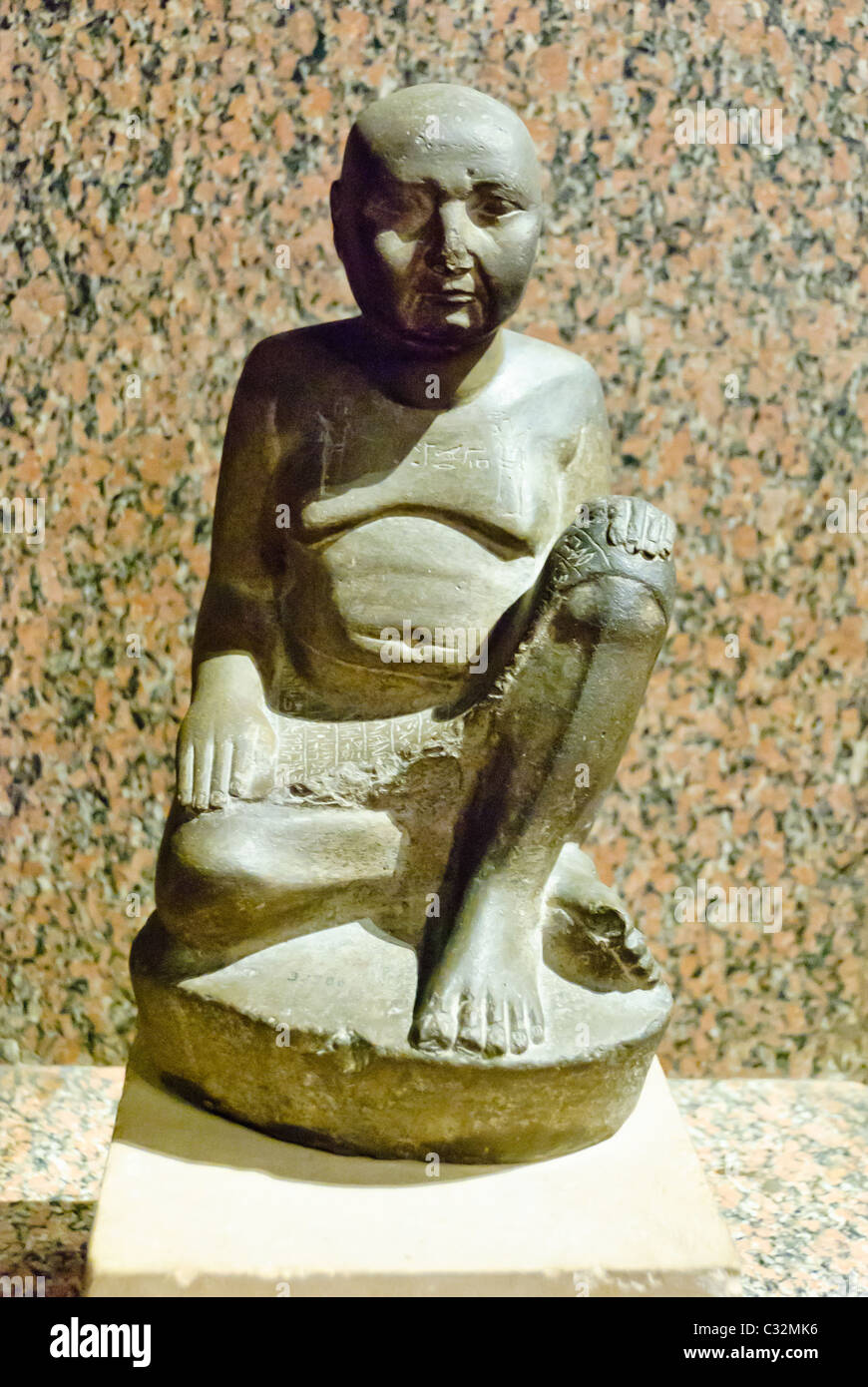 Statue of Harwa, steward of Amenardis, the divine wife of Amon - Kushite art - Schist - 25th dynasty - Karnak. Nubian Museum, Aswan, Upper Egypt Stock Photohttps://www.alamy.com/image-license-details/?v=1https://www.alamy.com/stock-photo-statue-of-harwa-steward-of-amenardis-the-divine-wife-of-amon-kushite-36324826.html
Statue of Harwa, steward of Amenardis, the divine wife of Amon - Kushite art - Schist - 25th dynasty - Karnak. Nubian Museum, Aswan, Upper Egypt Stock Photohttps://www.alamy.com/image-license-details/?v=1https://www.alamy.com/stock-photo-statue-of-harwa-steward-of-amenardis-the-divine-wife-of-amon-kushite-36324826.htmlRMC32MK6–Statue of Harwa, steward of Amenardis, the divine wife of Amon - Kushite art - Schist - 25th dynasty - Karnak. Nubian Museum, Aswan, Upper Egypt
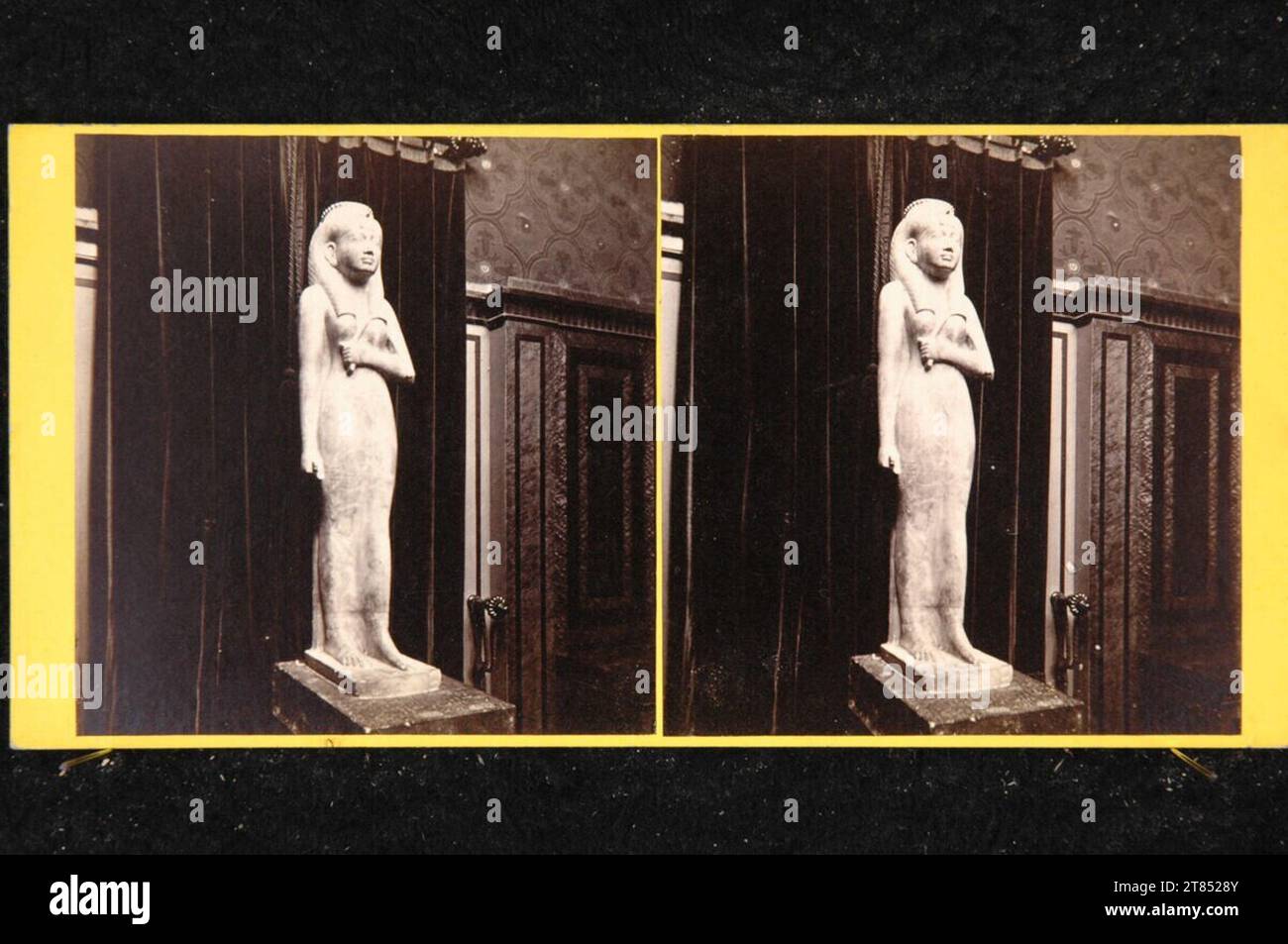 Frank Mason Good Bulak, Statue of Queen Amenoritis (25th Dynasty). Albumin paper, on the box box / stereo format around 1865 Stock Photohttps://www.alamy.com/image-license-details/?v=1https://www.alamy.com/frank-mason-good-bulak-statue-of-queen-amenoritis-25th-dynasty-albumin-paper-on-the-box-box-stereo-format-around-1865-image572970971.html
Frank Mason Good Bulak, Statue of Queen Amenoritis (25th Dynasty). Albumin paper, on the box box / stereo format around 1865 Stock Photohttps://www.alamy.com/image-license-details/?v=1https://www.alamy.com/frank-mason-good-bulak-statue-of-queen-amenoritis-25th-dynasty-albumin-paper-on-the-box-box-stereo-format-around-1865-image572970971.htmlRM2T8528Y–Frank Mason Good Bulak, Statue of Queen Amenoritis (25th Dynasty). Albumin paper, on the box box / stereo format around 1865
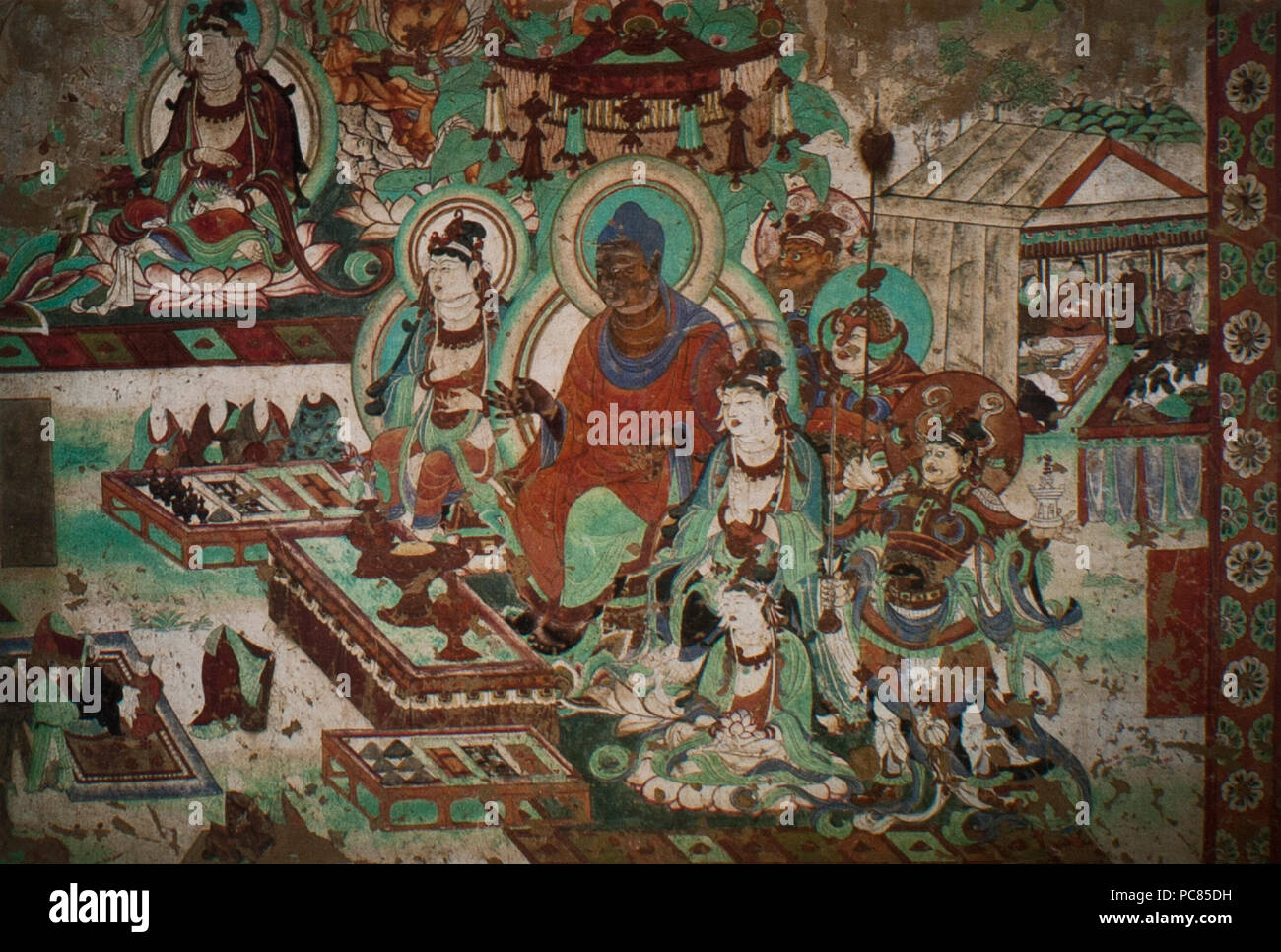 659 Yulin Cave 25 n wall Maitreya Sutra 2 (Tang) Stock Photohttps://www.alamy.com/image-license-details/?v=1https://www.alamy.com/659-yulin-cave-25-n-wall-maitreya-sutra-2-tang-image214080205.html
659 Yulin Cave 25 n wall Maitreya Sutra 2 (Tang) Stock Photohttps://www.alamy.com/image-license-details/?v=1https://www.alamy.com/659-yulin-cave-25-n-wall-maitreya-sutra-2-tang-image214080205.htmlRMPC85DH–659 Yulin Cave 25 n wall Maitreya Sutra 2 (Tang)
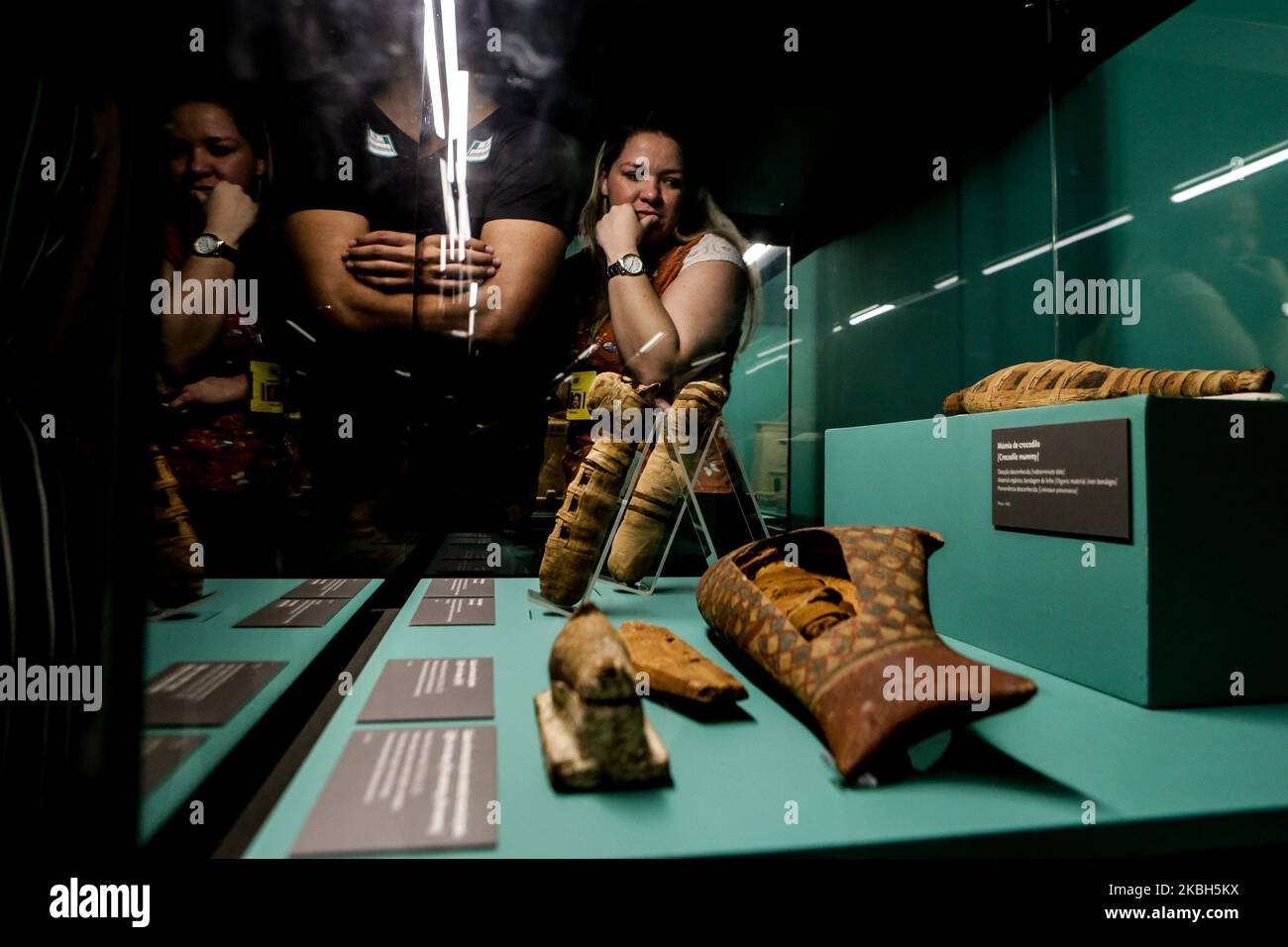 Part of the collection of the exhibition Egito Antigo that had opened on February 19, the Banco do Brasil Cultural Center (CCBB) in Sao Paulo, Brazil, on February 17, 2020. There are more than 140 items on display, including the Tararo mummy dated from 700 B.C. The woman was a member of the 25th dynasty, which became known as the Nubian Dynasty or Black Pharaohs. (Photo by Dario Oliveira/NurPhoto) Stock Photohttps://www.alamy.com/image-license-details/?v=1https://www.alamy.com/part-of-the-collection-of-the-exhibition-egito-antigo-that-had-opened-on-february-19-the-banco-do-brasil-cultural-center-ccbb-in-sao-paulo-brazil-on-february-17-2020-there-are-more-than-140-items-on-display-including-the-tararo-mummy-dated-from-700-bc-the-woman-was-a-member-of-the-25th-dynasty-which-became-known-as-the-nubian-dynasty-or-black-pharaohs-photo-by-dario-oliveiranurphoto-image489029182.html
Part of the collection of the exhibition Egito Antigo that had opened on February 19, the Banco do Brasil Cultural Center (CCBB) in Sao Paulo, Brazil, on February 17, 2020. There are more than 140 items on display, including the Tararo mummy dated from 700 B.C. The woman was a member of the 25th dynasty, which became known as the Nubian Dynasty or Black Pharaohs. (Photo by Dario Oliveira/NurPhoto) Stock Photohttps://www.alamy.com/image-license-details/?v=1https://www.alamy.com/part-of-the-collection-of-the-exhibition-egito-antigo-that-had-opened-on-february-19-the-banco-do-brasil-cultural-center-ccbb-in-sao-paulo-brazil-on-february-17-2020-there-are-more-than-140-items-on-display-including-the-tararo-mummy-dated-from-700-bc-the-woman-was-a-member-of-the-25th-dynasty-which-became-known-as-the-nubian-dynasty-or-black-pharaohs-photo-by-dario-oliveiranurphoto-image489029182.htmlRM2KBH5KX–Part of the collection of the exhibition Egito Antigo that had opened on February 19, the Banco do Brasil Cultural Center (CCBB) in Sao Paulo, Brazil, on February 17, 2020. There are more than 140 items on display, including the Tararo mummy dated from 700 B.C. The woman was a member of the 25th dynasty, which became known as the Nubian Dynasty or Black Pharaohs. (Photo by Dario Oliveira/NurPhoto)
 Misty view of the mud brick walls of the necropolis known as the Asasif Tombs close to Hatshepsuts Temple at Deir el-Bahri, Luxor, Egypt Stock Photohttps://www.alamy.com/image-license-details/?v=1https://www.alamy.com/misty-view-of-the-mud-brick-walls-of-the-necropolis-known-as-the-asasif-tombs-close-to-hatshepsuts-temple-at-deir-el-bahri-luxor-egypt-image606533045.html
Misty view of the mud brick walls of the necropolis known as the Asasif Tombs close to Hatshepsuts Temple at Deir el-Bahri, Luxor, Egypt Stock Photohttps://www.alamy.com/image-license-details/?v=1https://www.alamy.com/misty-view-of-the-mud-brick-walls-of-the-necropolis-known-as-the-asasif-tombs-close-to-hatshepsuts-temple-at-deir-el-bahri-luxor-egypt-image606533045.htmlRF2X6NY2D–Misty view of the mud brick walls of the necropolis known as the Asasif Tombs close to Hatshepsuts Temple at Deir el-Bahri, Luxor, Egypt
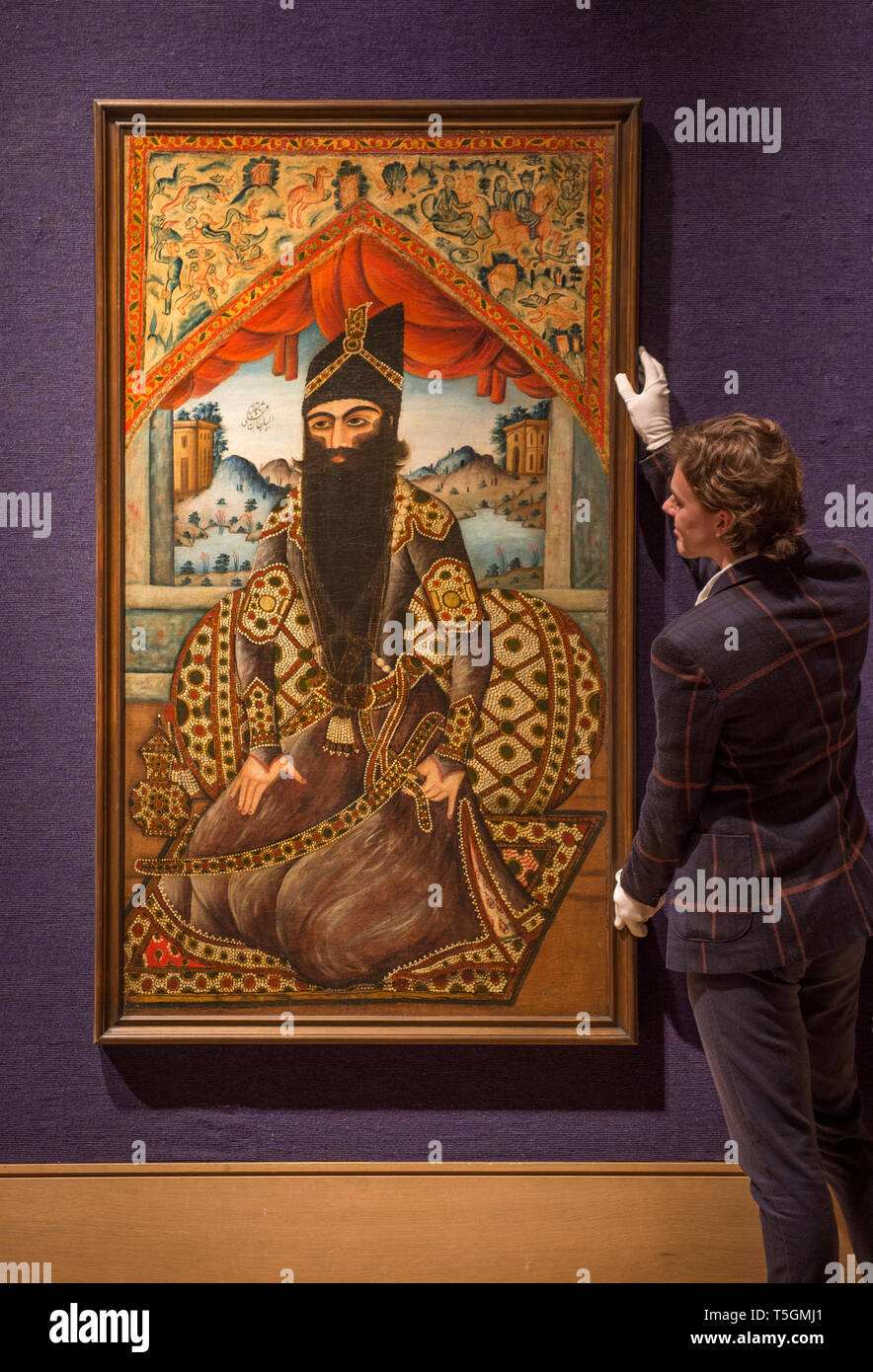 London, UK. 25th April, 2019. Bonhams Islamic and Indian Art sale preview at New Bond Street. Image: A monumental portrait of Fath-Ali Shah, the second ruler of the Qajar dynasty, seated against a jewelled bolster, leads the photocall. The rare work, which will appear at auction for the first time, was commissioned by the Qajar court to adorn the royal pavilion. Dated AH 1251/AD 1835-36. Estimate on request. Credit: Malcolm Park/Alamy Live News. Stock Photohttps://www.alamy.com/image-license-details/?v=1https://www.alamy.com/london-uk-25th-april-2019-bonhams-islamic-and-indian-art-sale-preview-at-new-bond-street-image-a-monumental-portrait-of-fath-ali-shah-the-second-ruler-of-the-qajar-dynasty-seated-against-a-jewelled-bolster-leads-the-photocall-the-rare-work-which-will-appear-at-auction-for-the-first-time-was-commissioned-by-the-qajar-court-to-adorn-the-royal-pavilion-dated-ah-1251ad-1835-36-estimate-on-request-credit-malcolm-parkalamy-live-news-image244385849.html
London, UK. 25th April, 2019. Bonhams Islamic and Indian Art sale preview at New Bond Street. Image: A monumental portrait of Fath-Ali Shah, the second ruler of the Qajar dynasty, seated against a jewelled bolster, leads the photocall. The rare work, which will appear at auction for the first time, was commissioned by the Qajar court to adorn the royal pavilion. Dated AH 1251/AD 1835-36. Estimate on request. Credit: Malcolm Park/Alamy Live News. Stock Photohttps://www.alamy.com/image-license-details/?v=1https://www.alamy.com/london-uk-25th-april-2019-bonhams-islamic-and-indian-art-sale-preview-at-new-bond-street-image-a-monumental-portrait-of-fath-ali-shah-the-second-ruler-of-the-qajar-dynasty-seated-against-a-jewelled-bolster-leads-the-photocall-the-rare-work-which-will-appear-at-auction-for-the-first-time-was-commissioned-by-the-qajar-court-to-adorn-the-royal-pavilion-dated-ah-1251ad-1835-36-estimate-on-request-credit-malcolm-parkalamy-live-news-image244385849.htmlRMT5GMJ1–London, UK. 25th April, 2019. Bonhams Islamic and Indian Art sale preview at New Bond Street. Image: A monumental portrait of Fath-Ali Shah, the second ruler of the Qajar dynasty, seated against a jewelled bolster, leads the photocall. The rare work, which will appear at auction for the first time, was commissioned by the Qajar court to adorn the royal pavilion. Dated AH 1251/AD 1835-36. Estimate on request. Credit: Malcolm Park/Alamy Live News.
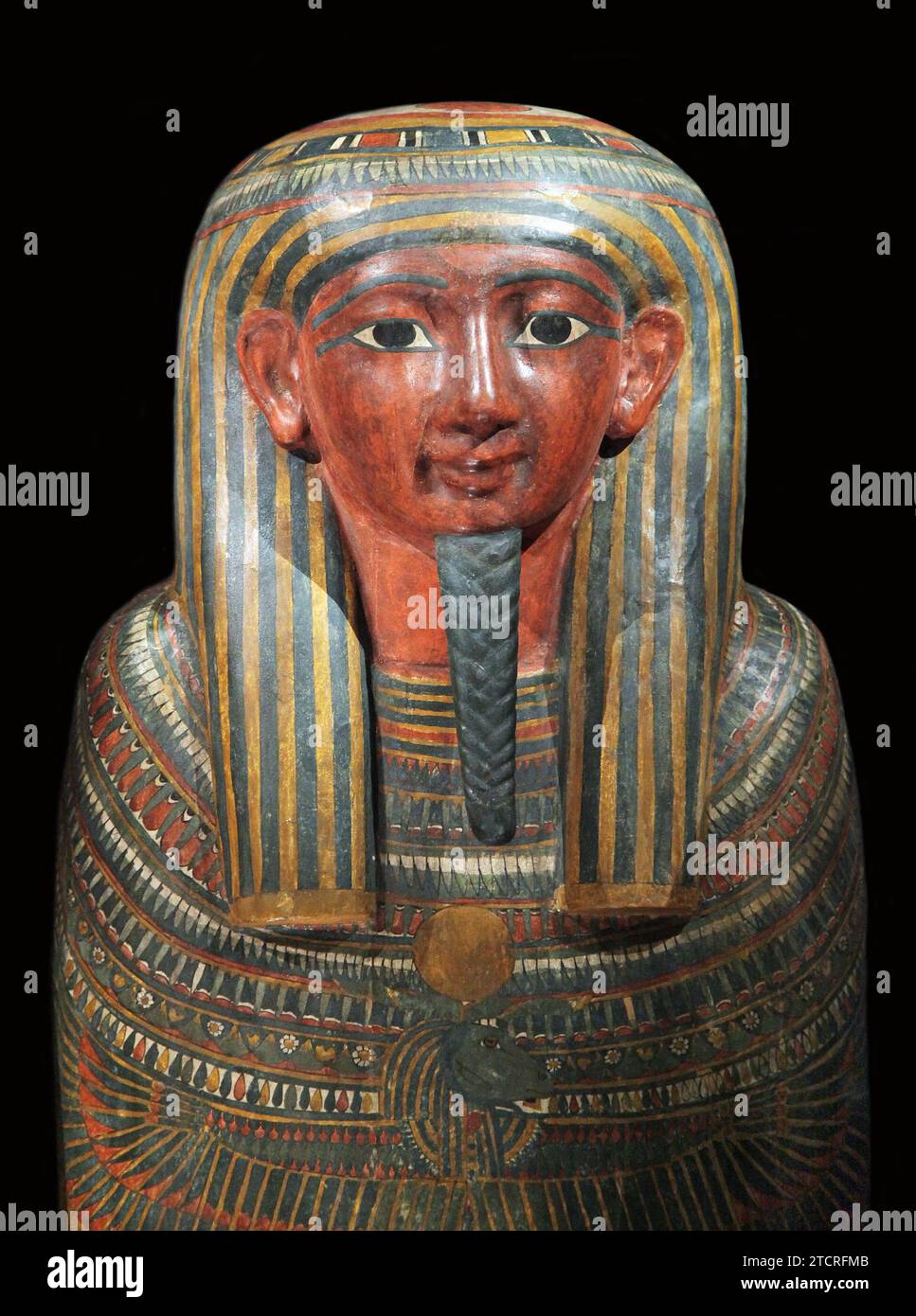 Inner coffin of Petisis.Priest of the Temple of Amon.Thebes Egypt .25th Dynasty.(710-680 BC) Stock Photohttps://www.alamy.com/image-license-details/?v=1https://www.alamy.com/inner-coffin-of-petisispriest-of-the-temple-of-amonthebes-egypt-25th-dynasty710-680-bc-image575835243.html
Inner coffin of Petisis.Priest of the Temple of Amon.Thebes Egypt .25th Dynasty.(710-680 BC) Stock Photohttps://www.alamy.com/image-license-details/?v=1https://www.alamy.com/inner-coffin-of-petisispriest-of-the-temple-of-amonthebes-egypt-25th-dynasty710-680-bc-image575835243.htmlRM2TCRFMB–Inner coffin of Petisis.Priest of the Temple of Amon.Thebes Egypt .25th Dynasty.(710-680 BC)
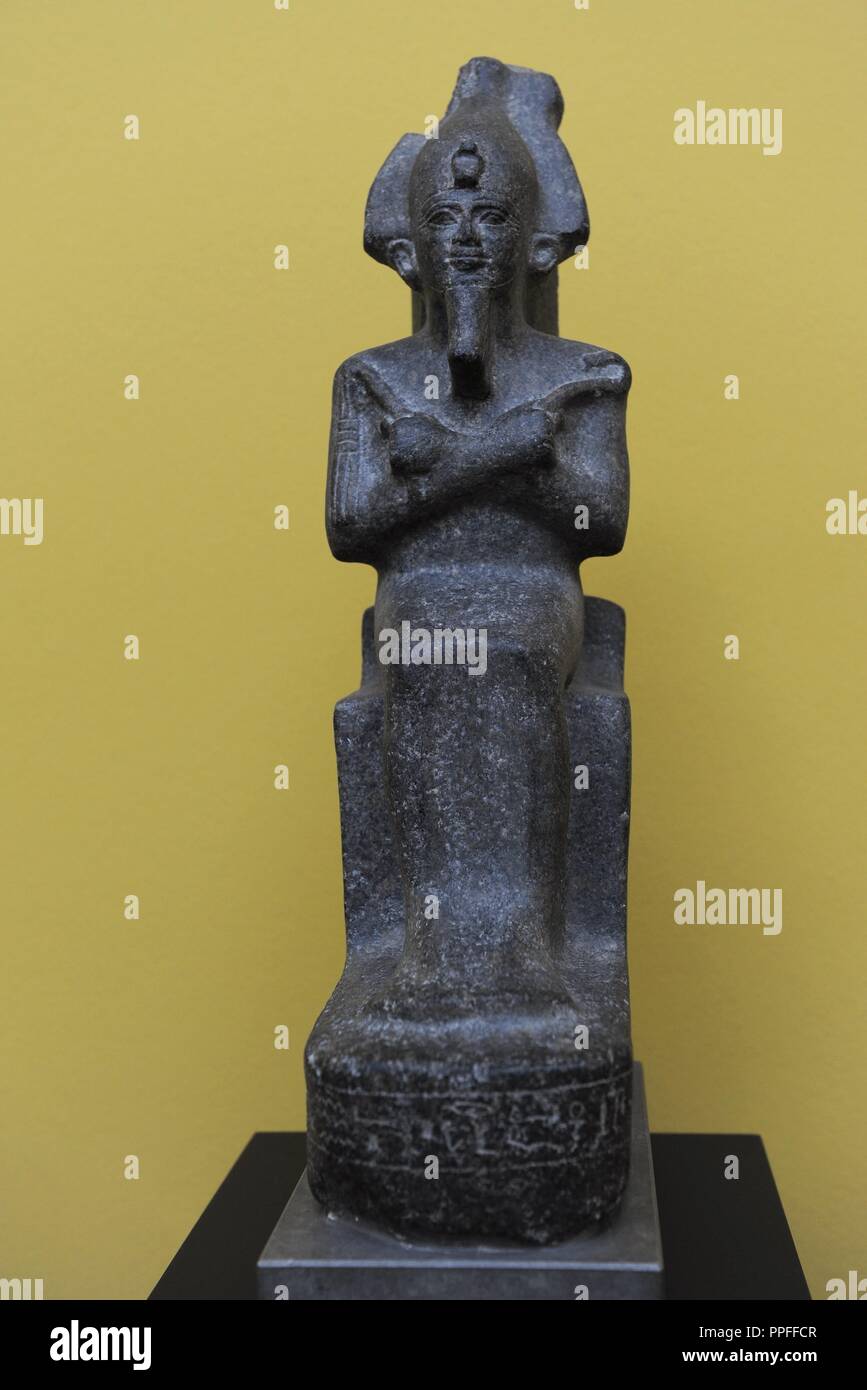 Statuette of Osiris wearing crown and royal scepters in their hands. Granite. C. 700 B.C. 25th Dynasty. Third Intermediate Period. Carlsberg Glyptotek Museum. Copenhagen. Denmark. Stock Photohttps://www.alamy.com/image-license-details/?v=1https://www.alamy.com/statuette-of-osiris-wearing-crown-and-royal-scepters-in-their-hands-granite-c-700-bc-25th-dynasty-third-intermediate-period-carlsberg-glyptotek-museum-copenhagen-denmark-image220388247.html
Statuette of Osiris wearing crown and royal scepters in their hands. Granite. C. 700 B.C. 25th Dynasty. Third Intermediate Period. Carlsberg Glyptotek Museum. Copenhagen. Denmark. Stock Photohttps://www.alamy.com/image-license-details/?v=1https://www.alamy.com/statuette-of-osiris-wearing-crown-and-royal-scepters-in-their-hands-granite-c-700-bc-25th-dynasty-third-intermediate-period-carlsberg-glyptotek-museum-copenhagen-denmark-image220388247.htmlRMPPFFCR–Statuette of Osiris wearing crown and royal scepters in their hands. Granite. C. 700 B.C. 25th Dynasty. Third Intermediate Period. Carlsberg Glyptotek Museum. Copenhagen. Denmark.
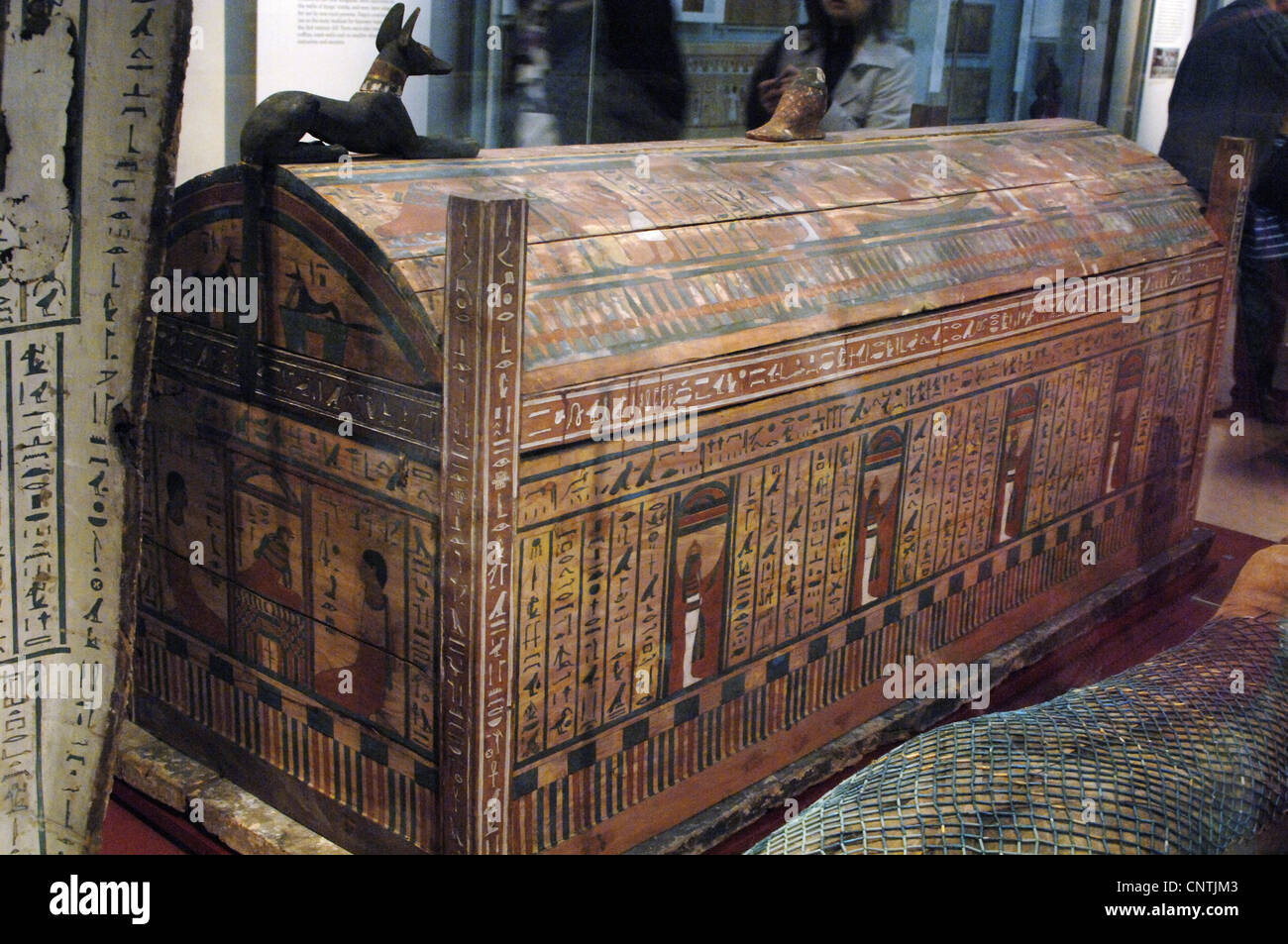 Outer sarcophagus of the priest Hor. 25th Dynasty. Late Period. From the tomb of Hor. Probably from Deir el-Bahari. Egypt. Stock Photohttps://www.alamy.com/image-license-details/?v=1https://www.alamy.com/stock-photo-outer-sarcophagus-of-the-priest-hor-25th-dynasty-late-period-from-47870035.html
Outer sarcophagus of the priest Hor. 25th Dynasty. Late Period. From the tomb of Hor. Probably from Deir el-Bahari. Egypt. Stock Photohttps://www.alamy.com/image-license-details/?v=1https://www.alamy.com/stock-photo-outer-sarcophagus-of-the-priest-hor-25th-dynasty-late-period-from-47870035.htmlRMCNTJM3–Outer sarcophagus of the priest Hor. 25th Dynasty. Late Period. From the tomb of Hor. Probably from Deir el-Bahari. Egypt.
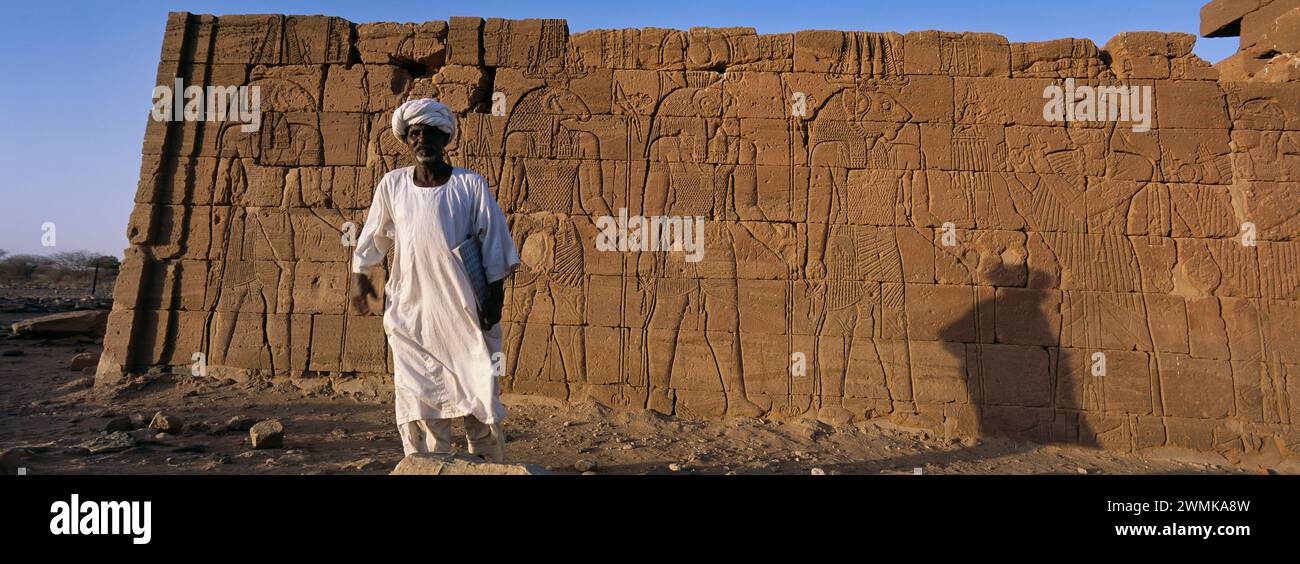 Sudanese man standing next to Egyptian ruins, a Nubian king's tomb from the 25th dynasty. El-Kurru was one of the royal cemeteries used by the Nubi... Stock Photohttps://www.alamy.com/image-license-details/?v=1https://www.alamy.com/sudanese-man-standing-next-to-egyptian-ruins-a-nubian-kings-tomb-from-the-25th-dynasty-el-kurru-was-one-of-the-royal-cemeteries-used-by-the-nubi-image597870809.html
Sudanese man standing next to Egyptian ruins, a Nubian king's tomb from the 25th dynasty. El-Kurru was one of the royal cemeteries used by the Nubi... Stock Photohttps://www.alamy.com/image-license-details/?v=1https://www.alamy.com/sudanese-man-standing-next-to-egyptian-ruins-a-nubian-kings-tomb-from-the-25th-dynasty-el-kurru-was-one-of-the-royal-cemeteries-used-by-the-nubi-image597870809.htmlRM2WMKA8W–Sudanese man standing next to Egyptian ruins, a Nubian king's tomb from the 25th dynasty. El-Kurru was one of the royal cemeteries used by the Nubi...
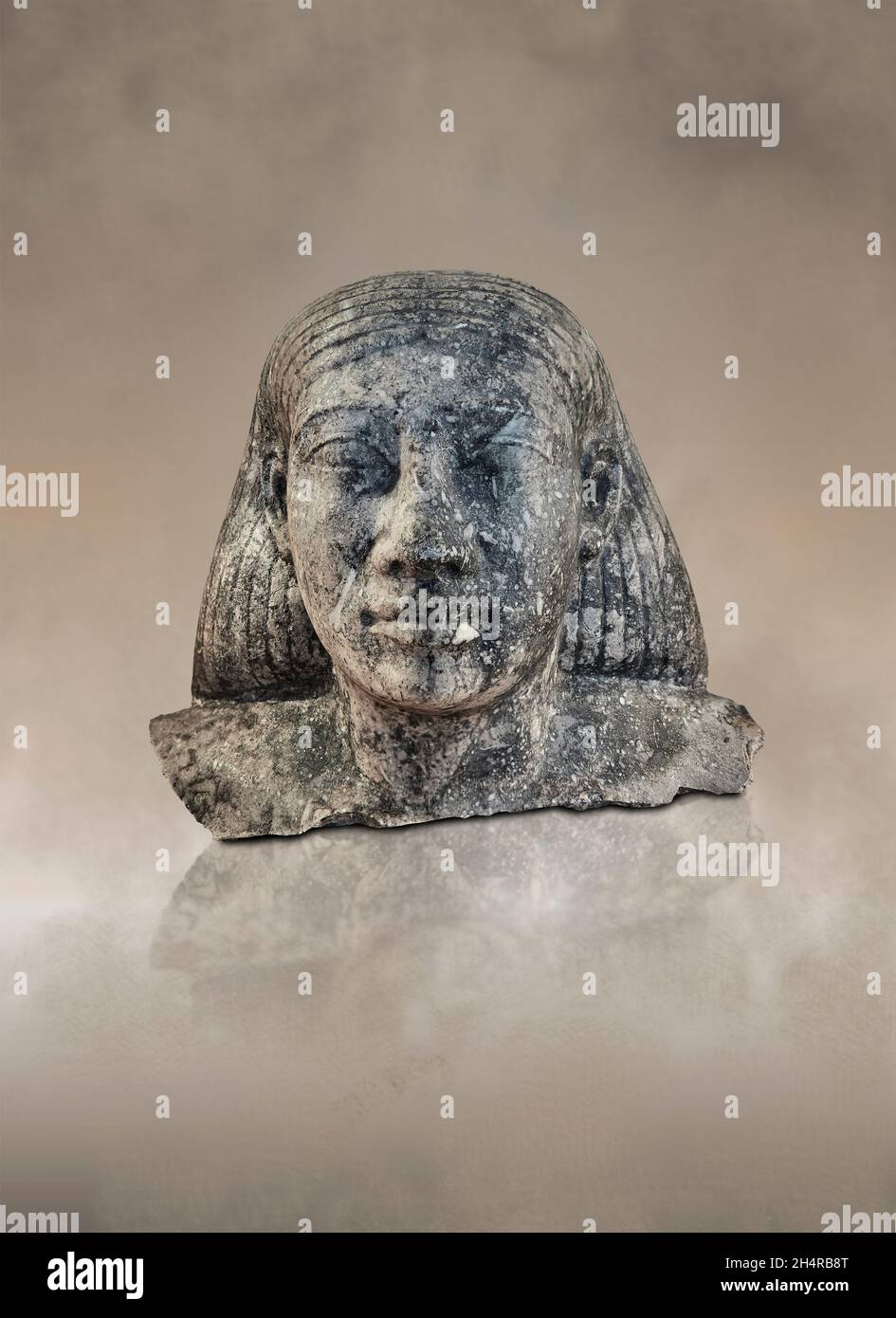 Egyptian statue sculpture of a mans head, 650-600 BC, 25th dynasty, . Louvre Museum . Stock Photohttps://www.alamy.com/image-license-details/?v=1https://www.alamy.com/egyptian-statue-sculpture-of-a-mans-head-650-600-bc-25th-dynasty-louvre-museum-image450441960.html
Egyptian statue sculpture of a mans head, 650-600 BC, 25th dynasty, . Louvre Museum . Stock Photohttps://www.alamy.com/image-license-details/?v=1https://www.alamy.com/egyptian-statue-sculpture-of-a-mans-head-650-600-bc-25th-dynasty-louvre-museum-image450441960.htmlRF2H4RB8T–Egyptian statue sculpture of a mans head, 650-600 BC, 25th dynasty, . Louvre Museum .
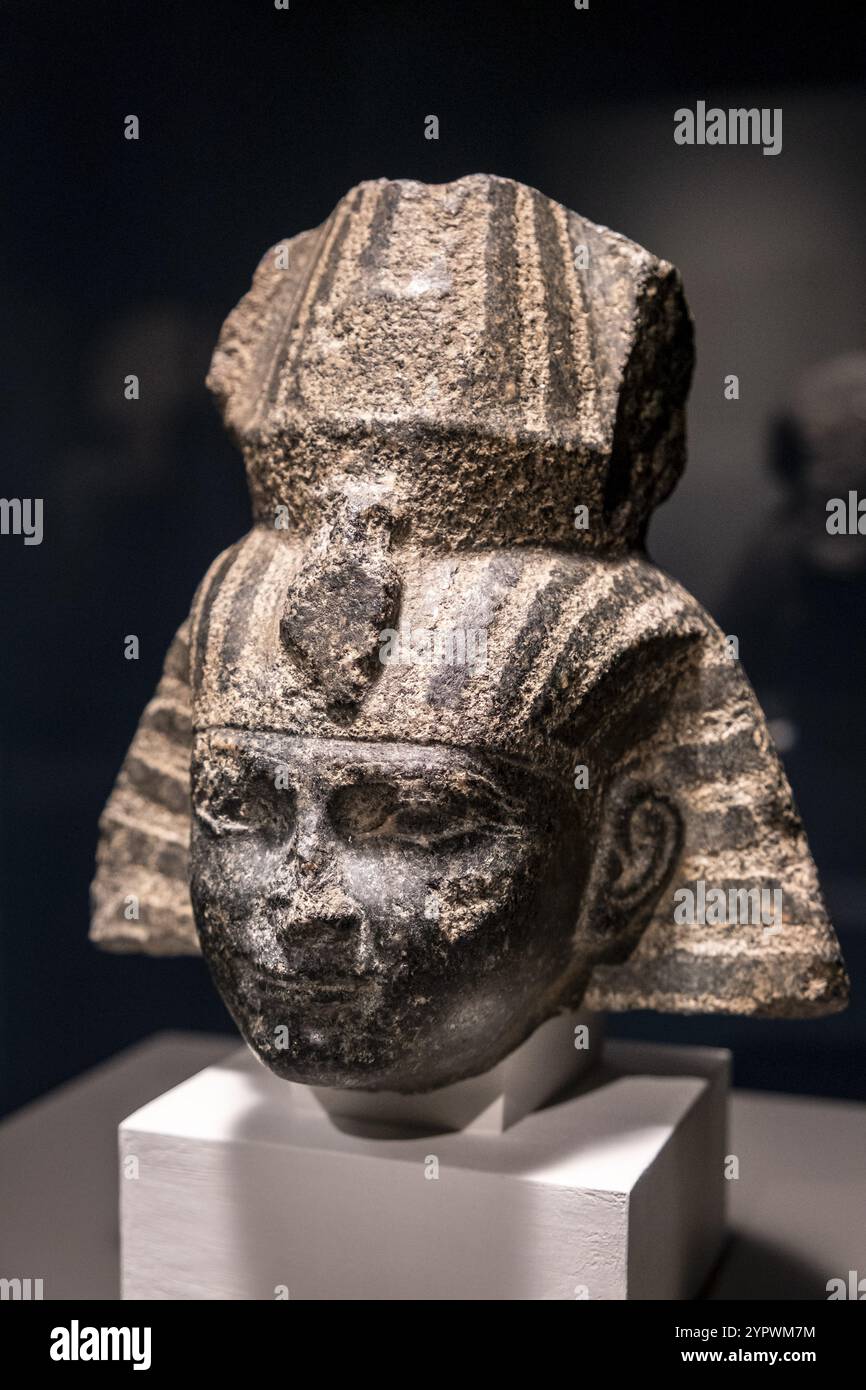 Probably head of pharaoh Shabaka, granite, 25th dynasty, 716-702 BC, probably Heliopolis, Egypt, collection of the British Museum, Africa Stock Photohttps://www.alamy.com/image-license-details/?v=1https://www.alamy.com/probably-head-of-pharaoh-shabaka-granite-25th-dynasty-716-702-bc-probably-heliopolis-egypt-collection-of-the-british-museum-africa-image633660376.html
Probably head of pharaoh Shabaka, granite, 25th dynasty, 716-702 BC, probably Heliopolis, Egypt, collection of the British Museum, Africa Stock Photohttps://www.alamy.com/image-license-details/?v=1https://www.alamy.com/probably-head-of-pharaoh-shabaka-granite-25th-dynasty-716-702-bc-probably-heliopolis-egypt-collection-of-the-british-museum-africa-image633660376.htmlRM2YPWM7M–Probably head of pharaoh Shabaka, granite, 25th dynasty, 716-702 BC, probably Heliopolis, Egypt, collection of the British Museum, Africa
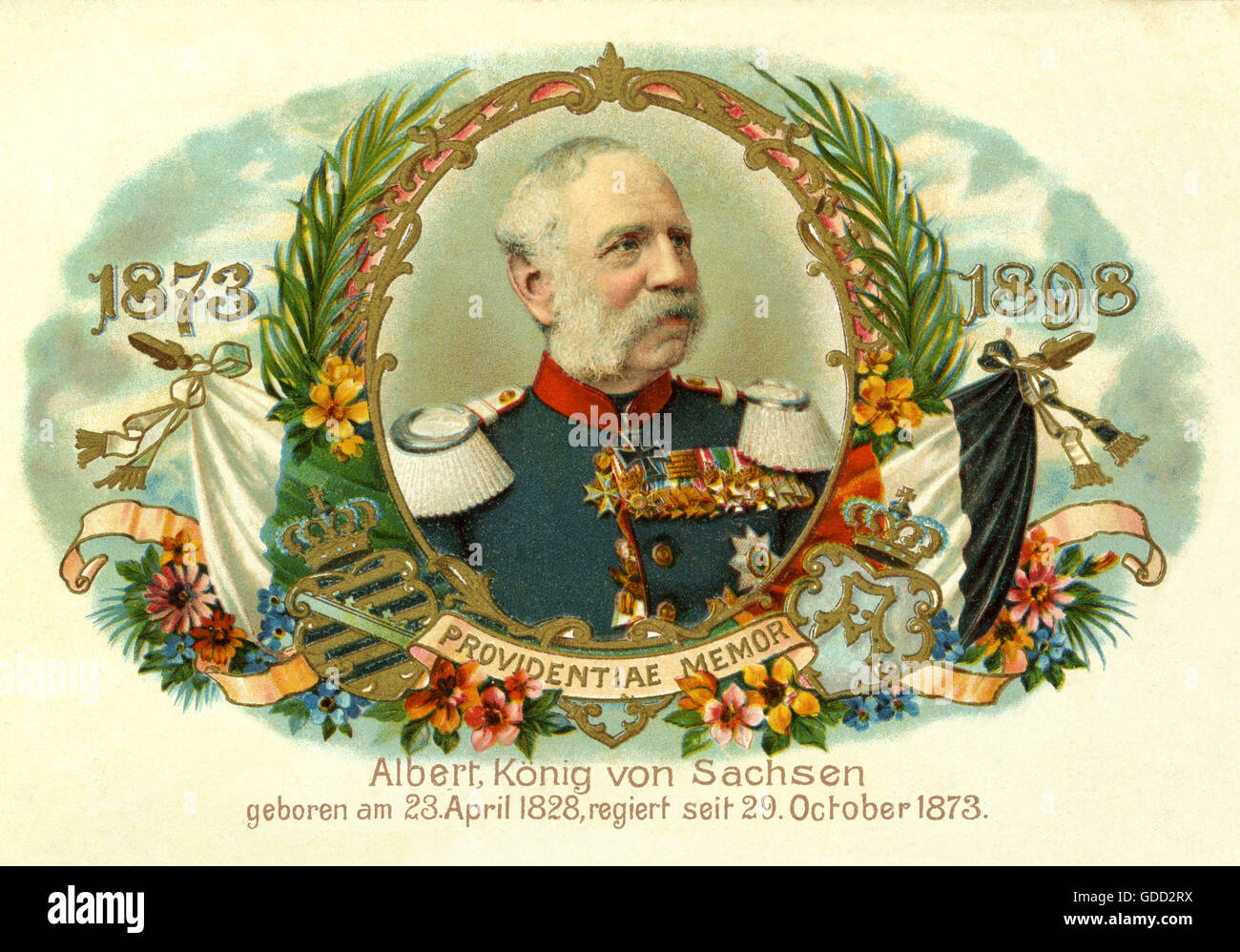 Albert I, 23.4.1828 - 19.6.1902, King of Saxony 29.10.1873 - 19.6.1902, portrait, postcard of his 25th anniversary of reign, lithograph, Dresden, Germany, 1898, Stock Photohttps://www.alamy.com/image-license-details/?v=1https://www.alamy.com/stock-photo-albert-i-2341828-1961902-king-of-saxony-29101873-1961902-portrait-111540350.html
Albert I, 23.4.1828 - 19.6.1902, King of Saxony 29.10.1873 - 19.6.1902, portrait, postcard of his 25th anniversary of reign, lithograph, Dresden, Germany, 1898, Stock Photohttps://www.alamy.com/image-license-details/?v=1https://www.alamy.com/stock-photo-albert-i-2341828-1961902-king-of-saxony-29101873-1961902-portrait-111540350.htmlRMGDD2RX–Albert I, 23.4.1828 - 19.6.1902, King of Saxony 29.10.1873 - 19.6.1902, portrait, postcard of his 25th anniversary of reign, lithograph, Dresden, Germany, 1898,
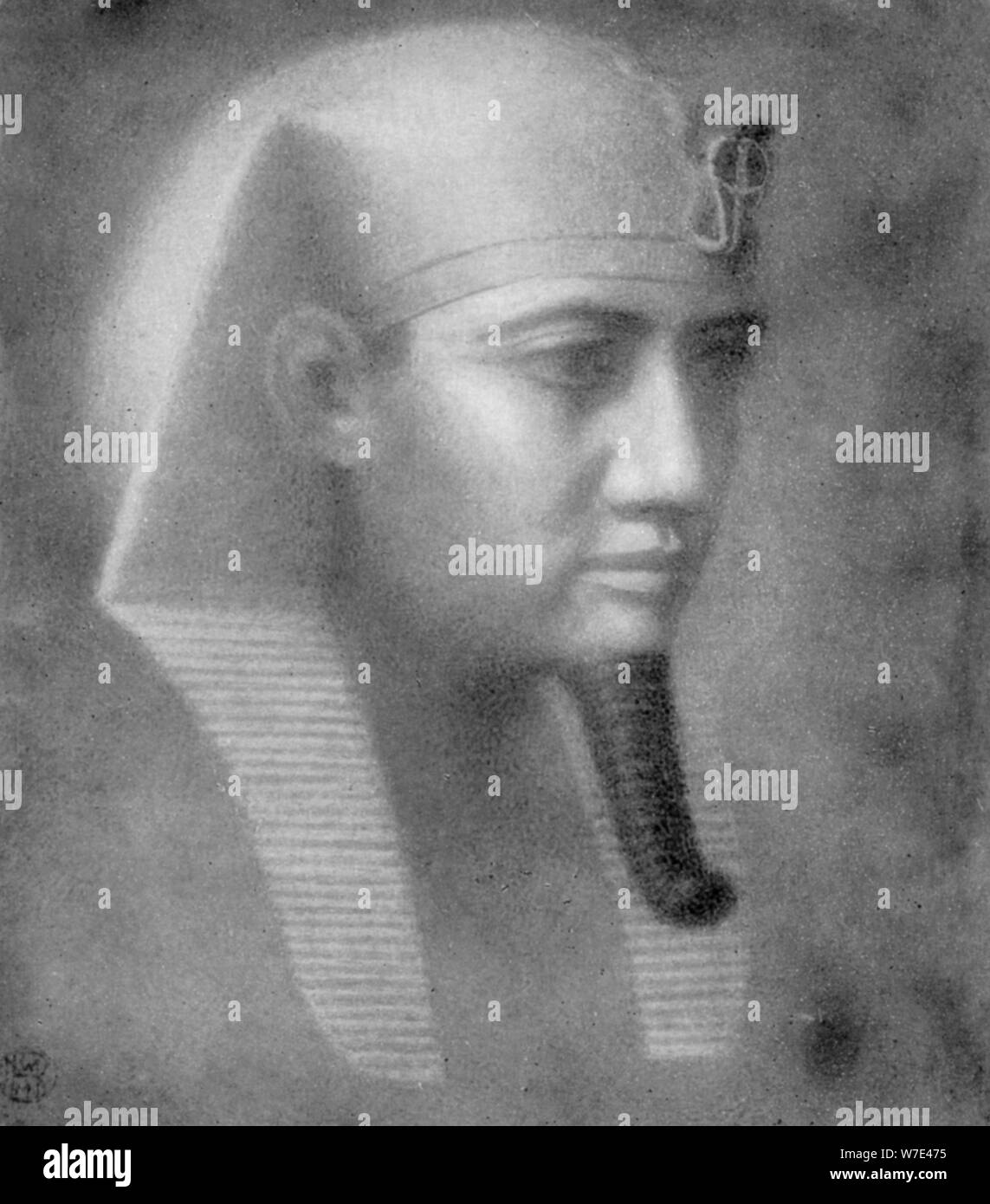 Khafre, Ancient Egyptian pharaoh of the 4th dynasty, 26th-25th century BC (1926). Artist: Winifred Mabel Brunton Stock Photohttps://www.alamy.com/image-license-details/?v=1https://www.alamy.com/khafre-ancient-egyptian-pharaoh-of-the-4th-dynasty-26th-25th-century-bc-1926-artist-winifred-mabel-brunton-image262768777.html
Khafre, Ancient Egyptian pharaoh of the 4th dynasty, 26th-25th century BC (1926). Artist: Winifred Mabel Brunton Stock Photohttps://www.alamy.com/image-license-details/?v=1https://www.alamy.com/khafre-ancient-egyptian-pharaoh-of-the-4th-dynasty-26th-25th-century-bc-1926-artist-winifred-mabel-brunton-image262768777.htmlRMW7E475–Khafre, Ancient Egyptian pharaoh of the 4th dynasty, 26th-25th century BC (1926). Artist: Winifred Mabel Brunton
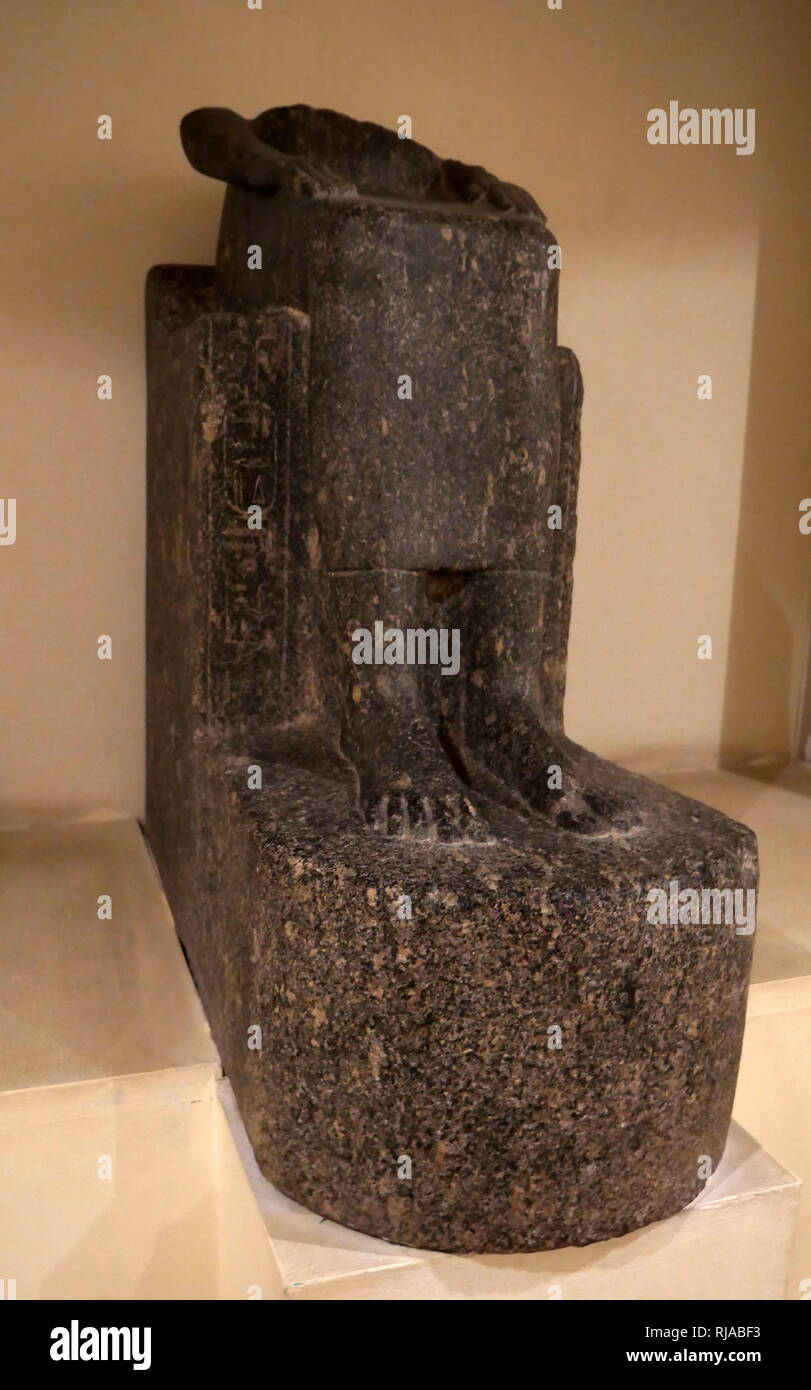 Statue of Princess Amenrdis 25th dynasty; Granite; Luxor Temple; Egypt. Amenrdis I (Hatneferumut), was a God's Wife of Amun during the 25th Dynasty of ancient Egypt. Originating from the Kingdom of Kush, she was the daughter of Pharaoh Kashta and Queen Pebatjma, and was later adopted by Shepenupet I. She went on to rule as high priestess, and has been shown in several artefacts from the period. Stock Photohttps://www.alamy.com/image-license-details/?v=1https://www.alamy.com/statue-of-princess-amenrdis-25th-dynasty-granite-luxor-temple-egypt-amenrdis-i-hatneferumut-was-a-gods-wife-of-amun-during-the-25th-dynasty-of-ancient-egypt-originating-from-the-kingdom-of-kush-she-was-the-daughter-of-pharaoh-kashta-and-queen-pebatjma-and-was-later-adopted-by-shepenupet-i-she-went-on-to-rule-as-high-priestess-and-has-been-shown-in-several-artefacts-from-the-period-image235027159.html
Statue of Princess Amenrdis 25th dynasty; Granite; Luxor Temple; Egypt. Amenrdis I (Hatneferumut), was a God's Wife of Amun during the 25th Dynasty of ancient Egypt. Originating from the Kingdom of Kush, she was the daughter of Pharaoh Kashta and Queen Pebatjma, and was later adopted by Shepenupet I. She went on to rule as high priestess, and has been shown in several artefacts from the period. Stock Photohttps://www.alamy.com/image-license-details/?v=1https://www.alamy.com/statue-of-princess-amenrdis-25th-dynasty-granite-luxor-temple-egypt-amenrdis-i-hatneferumut-was-a-gods-wife-of-amun-during-the-25th-dynasty-of-ancient-egypt-originating-from-the-kingdom-of-kush-she-was-the-daughter-of-pharaoh-kashta-and-queen-pebatjma-and-was-later-adopted-by-shepenupet-i-she-went-on-to-rule-as-high-priestess-and-has-been-shown-in-several-artefacts-from-the-period-image235027159.htmlRMRJABF3–Statue of Princess Amenrdis 25th dynasty; Granite; Luxor Temple; Egypt. Amenrdis I (Hatneferumut), was a God's Wife of Amun during the 25th Dynasty of ancient Egypt. Originating from the Kingdom of Kush, she was the daughter of Pharaoh Kashta and Queen Pebatjma, and was later adopted by Shepenupet I. She went on to rule as high priestess, and has been shown in several artefacts from the period.
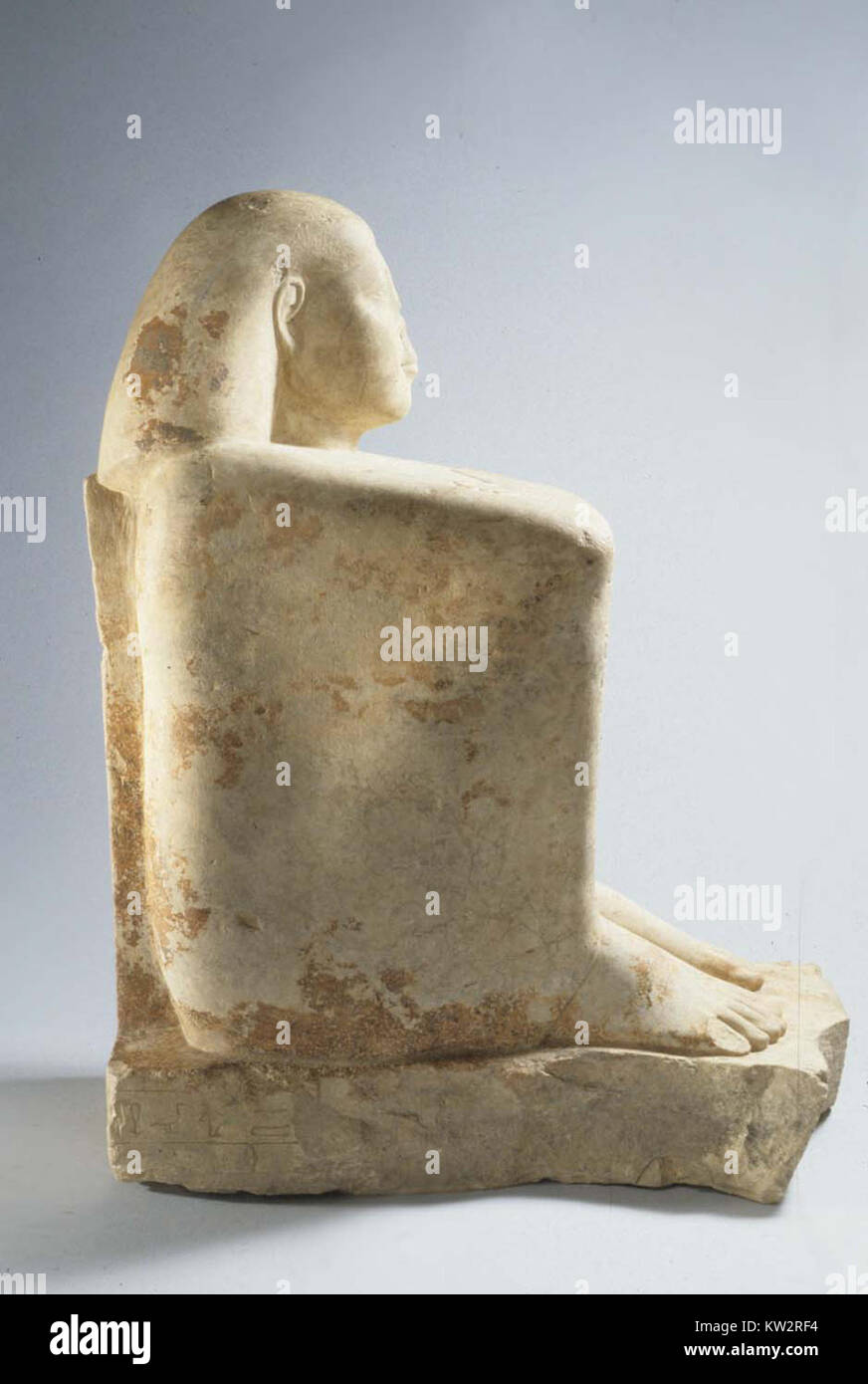 The Block Statue of Ankhwennefer is an ancient Egyptian sculpture housed in the MET collection. It represents Ankhwennefer, an individual from the 25th Dynasty of Egypt, captured in a block-like form typical of the period’s artistic style. Stock Photohttps://www.alamy.com/image-license-details/?v=1https://www.alamy.com/stock-photo-the-block-statue-of-ankhwennefer-is-an-ancient-egyptian-sculpture-170322072.html
The Block Statue of Ankhwennefer is an ancient Egyptian sculpture housed in the MET collection. It represents Ankhwennefer, an individual from the 25th Dynasty of Egypt, captured in a block-like form typical of the period’s artistic style. Stock Photohttps://www.alamy.com/image-license-details/?v=1https://www.alamy.com/stock-photo-the-block-statue-of-ankhwennefer-is-an-ancient-egyptian-sculpture-170322072.htmlRMKW2RF4–The Block Statue of Ankhwennefer is an ancient Egyptian sculpture housed in the MET collection. It represents Ankhwennefer, an individual from the 25th Dynasty of Egypt, captured in a block-like form typical of the period’s artistic style.
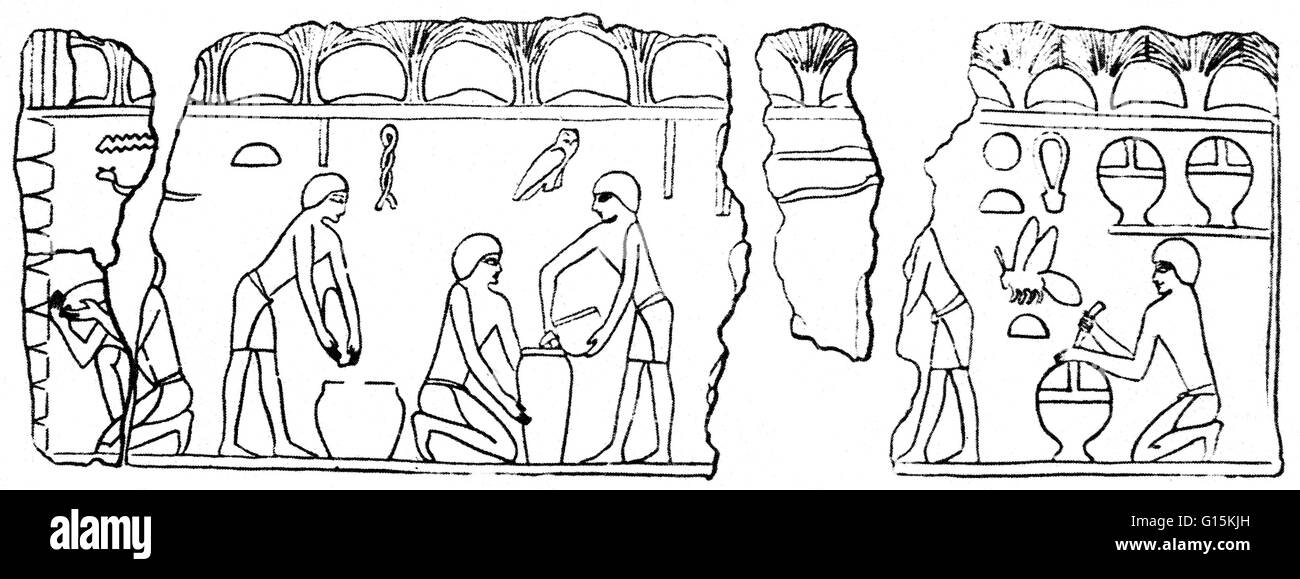 The oldest pictures of bee-keepers in action are from the Old Kingdom of Ancient Egypt. In Niuserre's sun temple bee-keepers are blowing smoke into hives as they are removing the honey-combs. After extracting the honey from the combs it was strained and p Stock Photohttps://www.alamy.com/image-license-details/?v=1https://www.alamy.com/stock-photo-the-oldest-pictures-of-bee-keepers-in-action-are-from-the-old-kingdom-104002041.html
The oldest pictures of bee-keepers in action are from the Old Kingdom of Ancient Egypt. In Niuserre's sun temple bee-keepers are blowing smoke into hives as they are removing the honey-combs. After extracting the honey from the combs it was strained and p Stock Photohttps://www.alamy.com/image-license-details/?v=1https://www.alamy.com/stock-photo-the-oldest-pictures-of-bee-keepers-in-action-are-from-the-old-kingdom-104002041.htmlRMG15KJH–The oldest pictures of bee-keepers in action are from the Old Kingdom of Ancient Egypt. In Niuserre's sun temple bee-keepers are blowing smoke into hives as they are removing the honey-combs. After extracting the honey from the combs it was strained and p
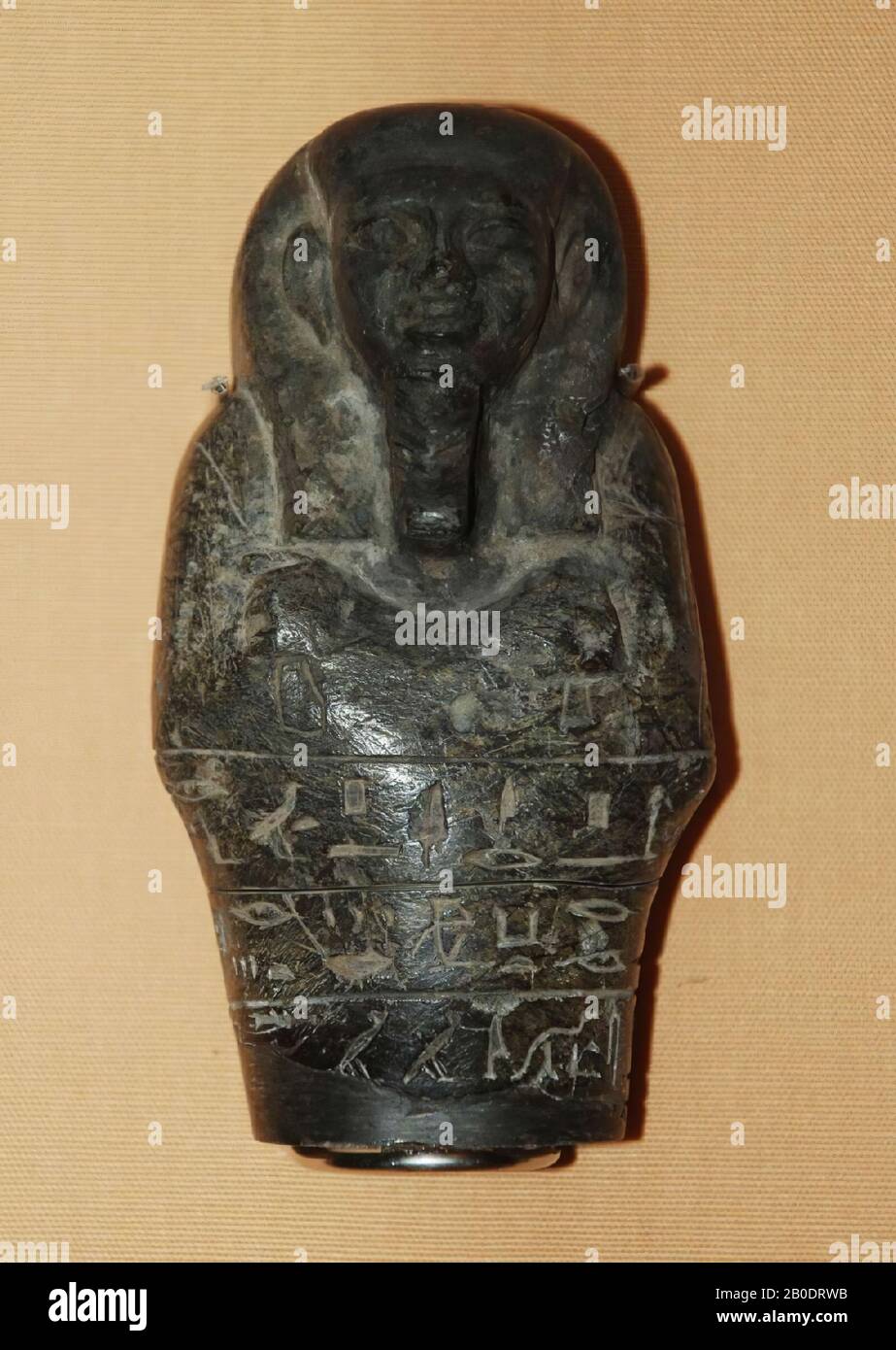 Egypt, Ushbti, serpentine, 10.4 x 5.7 cm, Late Period, 25th Dynasty, Taharka, Egypt Stock Photohttps://www.alamy.com/image-license-details/?v=1https://www.alamy.com/egypt-ushbti-serpentine-104-x-57-cm-late-period-25th-dynasty-taharka-egypt-image344511479.html
Egypt, Ushbti, serpentine, 10.4 x 5.7 cm, Late Period, 25th Dynasty, Taharka, Egypt Stock Photohttps://www.alamy.com/image-license-details/?v=1https://www.alamy.com/egypt-ushbti-serpentine-104-x-57-cm-late-period-25th-dynasty-taharka-egypt-image344511479.htmlRM2B0DRWB–Egypt, Ushbti, serpentine, 10.4 x 5.7 cm, Late Period, 25th Dynasty, Taharka, Egypt
![Stela del regno di Necao e di Amasis che si conserva nel museo di Firenze Keywords: Shabaka, King of Egypt [25th Dynasty, Late Period]; Osorkon, King of Egypt [22nd Dynasty, 3rd Intermediate period]; Shebitku, King of Egypt [25th Dynasty, Late Period]; Mut (Egyptian deity).; Stela del regno di Necao e di Amasis che si conserva nel museo di Firenze. Stock Photo Stela del regno di Necao e di Amasis che si conserva nel museo di Firenze Keywords: Shabaka, King of Egypt [25th Dynasty, Late Period]; Osorkon, King of Egypt [22nd Dynasty, 3rd Intermediate period]; Shebitku, King of Egypt [25th Dynasty, Late Period]; Mut (Egyptian deity).; Stela del regno di Necao e di Amasis che si conserva nel museo di Firenze. Stock Photo](https://c8.alamy.com/comp/2AMDE7W/stela-del-regno-di-necao-e-di-amasis-che-si-conserva-nel-museo-di-firenze-keywords-shabaka-king-of-egypt-25th-dynasty-late-period-osorkon-king-of-egypt-22nd-dynasty-3rd-intermediate-period-shebitku-king-of-egypt-25th-dynasty-late-period-mut-egyptian-deity-stela-del-regno-di-necao-e-di-amasis-che-si-conserva-nel-museo-di-firenze-2AMDE7W.jpg) Stela del regno di Necao e di Amasis che si conserva nel museo di Firenze Keywords: Shabaka, King of Egypt [25th Dynasty, Late Period]; Osorkon, King of Egypt [22nd Dynasty, 3rd Intermediate period]; Shebitku, King of Egypt [25th Dynasty, Late Period]; Mut (Egyptian deity).; Stela del regno di Necao e di Amasis che si conserva nel museo di Firenze. Stock Photohttps://www.alamy.com/image-license-details/?v=1https://www.alamy.com/stela-del-regno-di-necao-e-di-amasis-che-si-conserva-nel-museo-di-firenze-keywords-shabaka-king-of-egypt-25th-dynasty-late-period-osorkon-king-of-egypt-22nd-dynasty-3rd-intermediate-period-shebitku-king-of-egypt-25th-dynasty-late-period-mut-egyptian-deity-stela-del-regno-di-necao-e-di-amasis-che-si-conserva-nel-museo-di-firenze-image339586685.html
Stela del regno di Necao e di Amasis che si conserva nel museo di Firenze Keywords: Shabaka, King of Egypt [25th Dynasty, Late Period]; Osorkon, King of Egypt [22nd Dynasty, 3rd Intermediate period]; Shebitku, King of Egypt [25th Dynasty, Late Period]; Mut (Egyptian deity).; Stela del regno di Necao e di Amasis che si conserva nel museo di Firenze. Stock Photohttps://www.alamy.com/image-license-details/?v=1https://www.alamy.com/stela-del-regno-di-necao-e-di-amasis-che-si-conserva-nel-museo-di-firenze-keywords-shabaka-king-of-egypt-25th-dynasty-late-period-osorkon-king-of-egypt-22nd-dynasty-3rd-intermediate-period-shebitku-king-of-egypt-25th-dynasty-late-period-mut-egyptian-deity-stela-del-regno-di-necao-e-di-amasis-che-si-conserva-nel-museo-di-firenze-image339586685.htmlRM2AMDE7W–Stela del regno di Necao e di Amasis che si conserva nel museo di Firenze Keywords: Shabaka, King of Egypt [25th Dynasty, Late Period]; Osorkon, King of Egypt [22nd Dynasty, 3rd Intermediate period]; Shebitku, King of Egypt [25th Dynasty, Late Period]; Mut (Egyptian deity).; Stela del regno di Necao e di Amasis che si conserva nel museo di Firenze.